Ed Bearss’ All Time Favorite Civil War Books
By Dorothy Partridge Special Correspondent to Civil War News

(Originally published in the November 2018 issue of Civil War News.)
Edwin Cole Bearss was the Chief Historian Emeritus of the National Park Service. He remarked on his favorite Civil War books. First, he listed those written on the Southern side of the war, and then those on the Northern side. He ended with his choice for best autobiography.
Douglas Southall Freeman (1886–1953), whose father served four years in Lee’s Army of Northern Virginia, wrote a 4-volume series in 1934–1935. It was titled Robert E. Lee: A Biography. It won the Pulitzer Prize in 1935. Freeman walked down Monument Avenue in
History and Preservation Community Mourns:
Richmond, Va., on his way to work as the editor of the newspaper, the Richmond News Leader When he arrived at the statue of Robert E. Lee, he would stop and salute General Lee. He did this daily.
There was some criticism of this Freeman series. Bearss recalled the comments were about the supposed feud between Robert E. Lee and James Longstreet, and other things. As a result, he said Freeman wrote three volumes called Lee’s Lieutenants. The three volumes are:
Manassas to Malvern Hill (1942) Cedar Mountain to Chancellorsville (1943) Gettysburg to Appomattox (1944)
H Bearss Books
The Loss of Legendary Historian Edwin Cole Bearss
WASHINGTON, D.C.— Legendary military historian and preservationist Edwin Cole Bearss passed away Tuesday, Sept. 15, 2020, peacefully and surrounded by family, at the age of 97. A decorated U.S. Marine veteran of World War II’s Pacific Theater, he attended college and graduate school on the GI Bill before pursuing a distinguished career in the National Park Service, ultimately rising to be chief historian of that agency in 1981. As one of the powerful voices in the Ken Burns documentary, The Civil War, he brought history alive for millions of Americans with his deep voice and evocative descriptions, a style once described by the Washington Post as nearly “Homeric monologues.”
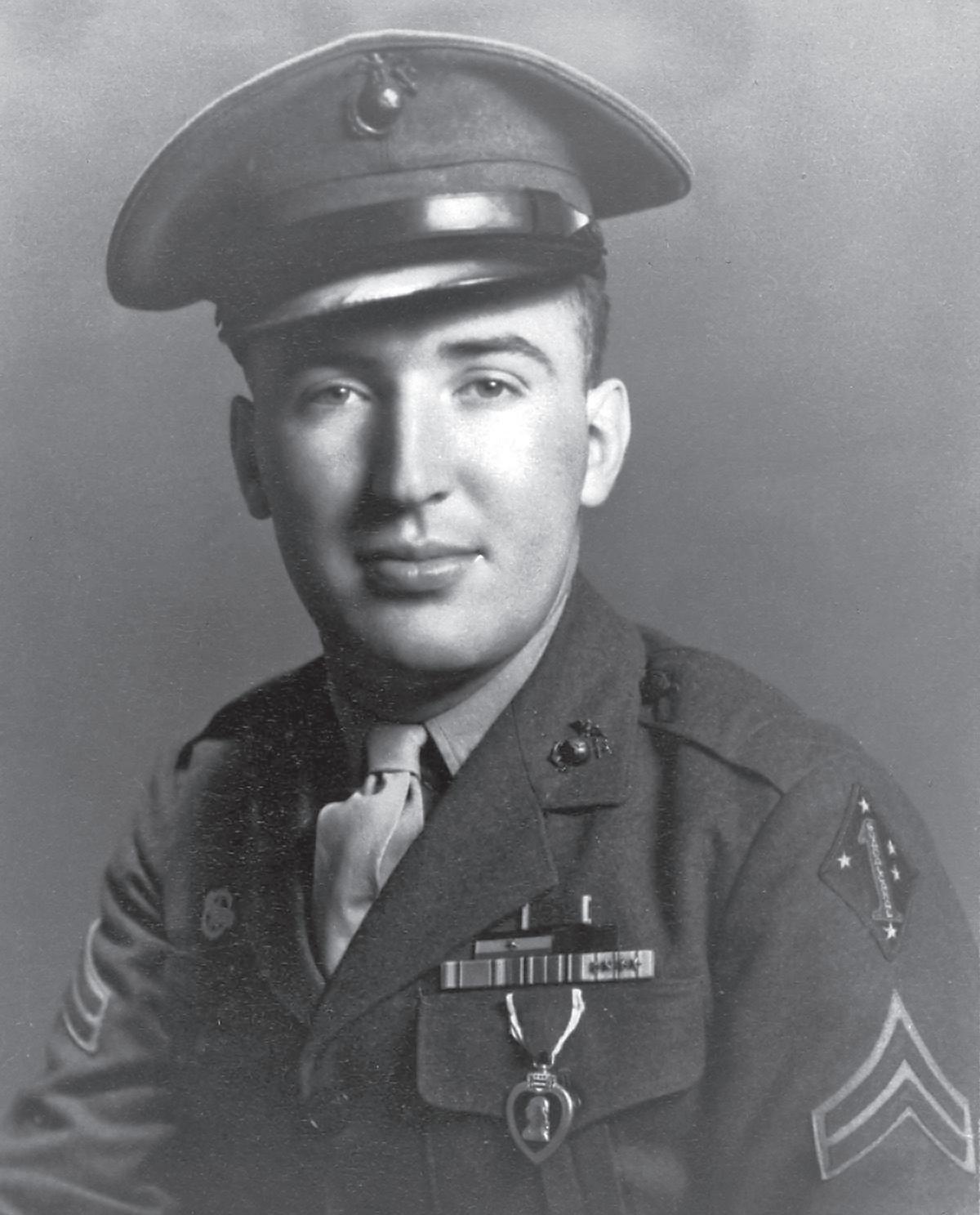
Although a prolific author on military history topics, Bearss was particularly dedicated to the importance of preserved landscapes enhancing our understanding of
the past. He was among the originators of the modern battlefield preservation movement and a devoted tour guide, travelling up to 200 days per year into his 90s.
“For those of us who value the preservation and perpetuation of American history, few figures are more revered than Ed Bearss. His knowledge, passion and energy were without equal, and he will be missed tremendously by so many,” said American Battlefield Trust President James Lighthizer, “Ed’s decades-long commitment to protecting special places and making the stories of our past come to life laid the groundwork for organizations like ours, which will embody his legacy for generations to come. The Trust, our board and staff, as well as our members and supporters, send deepest condolences to the entire Bearss family.”

Bearss, born on June 26, 1923, grew up on a Montana
cattle ranch just outside the Crow Indian Reservation that includes the Little Bighorn Battlefield. Although he gravitated toward history at an early age, his passion was the Civil War; he even called his favorite milk cow “Antietam.” After graduating from high school in 1941, he spent the summer hitchhiking across the country to visit battlefields. Bearss returned home and, after the Japanese bombed Pearl Harbor, followed in the footsteps of his father and Medal of Honor recipient older cousin to enlist in the U.S. Marine Corps. He left for the South Pacific in mid-July 1942 and was severely wounded on January 2, 1944, during the Battle of Suicide Creek on the island of New Britain, injuries that limited his dexterity for the remainder of his life.
Vol. 46, No. 11 56 Pages, November 2020 $3.50 America’s Monthly Newspaper For Civil War Enthusiasts Inside this issue: 35 – American Battlefield Trust 55 – Advertiser Index 6 – Ask the Appraiser 46 – Book Reviews 34 – Central Virginia BTrust 44 – Emerging Civil War 36 – The Graphic War 38 – Inspection, ARMS! 2 – Letters to the Editor 32 – The Source 7 – The Unfinished Fight 42 – This And That 33 – Through The Lens 5 – Trivia H Bearss . . . . . . . . . . . . see page 4
Edwin C. Bearss is seen at his desk at his home in Virginia. Buddy Secor / American Battlefield Trust.
Ed Bearss’ favorite photo of himself. He was enlisted and sworn into the Marines in Butte, Mont., on April 28, 1942, and discharged at USMC Base in San Diego, Calif., on March 15, 1946.
. . . . . . . . . . . . see page 5 Expanded November Book
Issue
Civil War News
Published by Historical Publications LLC
520 Folly Road, Suite 25 PMB 379, Charleston, SC 29412
800-777-1862 • Facebook.com/CivilWarNews
mail@civilwarnews.com • www.civilwarnews.com
Advertising: 800-777-1862 • ads@civilwarnews.com
Jack W. Melton Jr. C. Peter & Kathryn Jorgensen
Publisher Founding Publishers
Editor: Lawrence E. Babits, Ph.D.
Advertising, Marketing & Assistant Editor: Peggy Melton
Columnists: Craig Barry, Joseph Bilby, Matthew Borowick, Salvatore Cilella, Stephanie Hagiwara, Gould Hagler, Tim Prince, John Sexton, and Michael K. Shaffer
Editorial & Photography Staff: Greg Biggs, Sandy Goss, Michael Kent, Bob Ruegsegger, Gregory L. Wade, Joan Wenner, J.D.
Civil War News (ISSN: 1053-1181) Copyright © 2020 by Historical Publications LLC is published 12 times per year by Historical Publications LLC, 520 Folly Road, Suite 25 PMB 379, Charleston, SC 29412. Monthly. Business and Editorial Offices: 520 Folly Road, Suite 25 PMB 379, Charleston, SC 29412, Accounting and Circulation
Offices: Historical Publications LLC, 520 Folly Road, Suite 25 PMB 379, Charleston, SC 29412. Call 800-777-1862 to subscribe.
Periodicals postage paid at U.S.P.S. 131 W. High St., Jefferson City, MO 65101.
POSTMASTER: Send address changes to: Historical Publications LLC 520 Folly Road Suite 25 PMB 379 Charleston, SC 29412
Display advertising rates and media kit on request.
The Civil War News is for your reading enjoyment. The views and opinions expressed herein are those of its authors, readers and advertisers and they do not necessarily reflect the official policy or position of Historical Publications, LLC, its owners and/or employees.
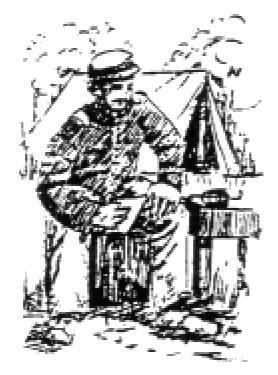
P UBLISHERS :
Please send your book(s) for review to: Civil War News
520 Folly Road, Suite 25 PMB 379 Charleston, SC 29412
Email cover image to bookreviews@civilwarnews.com. Civil War News cannot assure that unsolicited books will be assigned for review. Email bookreviews@civilwarnews.com for eligibility before mailing.
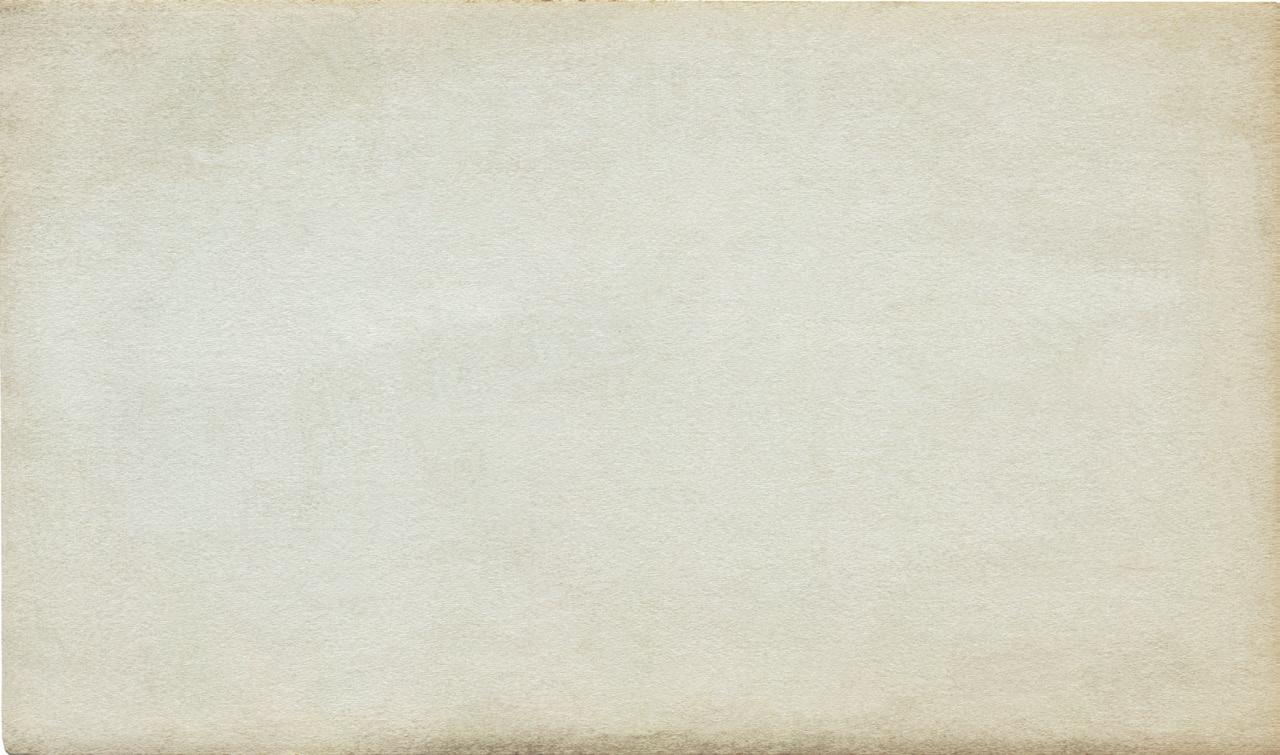
ADVERTISING INFO:
Email us at ads@civilwarnews.com Call 800-777-1862
MOVING?
Contact us to change your address so you don’t miss a single issue. mail@civilwarnews.com • 800-777-1862
SUBSCRIPTION RATES
U.S. Subscription rates are $41/year, $71/2
Editor to the
LETTER TO THE EDITOR:
I spent some time reviewing the results of the Civil War News Facebook poll taken over three questions relating to treason. In one response, the words “Weird that West point taught secession” appeared. It is an unfortunate example of how myths in history have long roots. Studies conducted by the United States Military Academy as well as more modern forums have addressed this particular issue. The reference to secession being taught at West Point is a perfect example of the poll observations written by the CWN editors, “the responses indicated a near total lack of effective teaching about U.S. history.”
A book on constitutional law, written by W. Rawles, was used at West Point. There is a section of this book that addresses the permanence of the Union which has been cited as the source of secession being taught to cadets, however, this book was only used one year (1826) and then replaced by Kent’s Commentaries. The only officer in the Confederacy who might have used Rawles was Albert Sidney Johnston (Class of 1826).
Because the concept of nullification was argued from 1828 to 1832, it is possible that the topic of secession was discussed by cadets. References to secession being taught at West Point also point out that no indication of questions about secession appeared on the final examinations each year up through 1840.
Law was predominantly a First Class or senior course, hence Robert E. Lee, who graduated in 1829, would not have used Rawles as a text book. I am sure that it could be found in the Military Academy’s library. For other cadets prior to the Civil War back to 1840, there is no indication that Rawles was used as a text book, hence they were not taught about secession from that source.
My sources of information:
“Was Secession Taught at West Point”, Col. Edgar S Dudley, JAG, U.S. Army, in an article published in Century Magazine, Vol. 78 No. 1 (May 1909), 629 634; and MILITARY ORDER OF THE LOYAL LEGION OF THE UNITED STATES, COMMANDERY OF THE STATE OF PENNSYLVANIA, by Companion Brevet LTC James W. Latta U.S.V. at a meeting May 5, 1909.
Brian McEnany, Class of 1962
Author of For Brotherhood and Duty: The Civil War History of the West Point Class of 1862.
LETTER TO THE EDITOR:
It was with great wonderment that I read M.G. Subhas’ article “Ulysses S. Grant: Migraine and Drunkenness – A Reconciliation” in your September issue of Civil War News
I agree wholeheartedly with the author’s clear and well-articulated presentation of facts. I wish to point to one additional reference which goes to the heart of the matter. In chapter 4 of John Eaton’s book Grant, Lincoln and the Freedmen, Eaton recalls being present in Grant’s residence while Julia applied poultices to Ulysses’ head and neck “to relieve the violent sick headache from which he was suffering and to which he was subject.” The event took place at the Gayoso House in Memphis during the early months of 1863. Eaton is a highly credible witness who had uncommon access to General Grant during that period. He follows up this account by flatly dismissing stories of Grant’s intemperance.
Joe Krom Argos, Ind.
LETTER TO THE EDITOR:
The United States of America came into being as a contractual consortium of individual states. Citizen loyalties, however, were to their respective states first and, secondarily to the United States. This predominant order of loyalty continued through the Civil War until near the end of the 19th Century and was the reason numerous officers (Robert E. Lee, et al) resigned their U.S. commissions to serve their respective states upon the advent of the War between the States. Judging their conduct to be traitorous is largely conjectural and of questionable legal
merit. Not one of them was ever charged with treason to my knowledge. By the time of World War I, loyalties had switched predominantly to America first with state loyalties clearly secondary.
James D. West Longview, Texas
LETTER TO THE EDITOR:
The lady doth protest too much; methinks (Joan Wenner, J. D., “A Question of Treason”, October 2020). To accuse the Confederates of treason, one must first wipe one’s feet on the Declaration of Independence when the thirteen (slaveholding) colonies seceded from the British Empire. Abraham Lincoln did not recognize the Southern States as being out of the Union. He was the one, therefore, not the South, who committed treason under Article III, section 3 of the U.S. Constitution. Self-defense is not treason, and no Confederate was ever tried for it, even under the vindictive Radical Reconstruction congress.
H. V. Traywick Jr. Richmond, Va.
Editor’s comment:
Judging from comments, it is possible some readers misunderstood the whole point of the Wenner article, “A Question of Treason.” The idea was to show how treason was considered in 1861 rather than in 2020.
Publishers Note:
We have heard from many of you that since the outbreak of Covid-19 and the current state of civil unrest that many cities across our nation are experiencing, there have been delays in receiving your issue, torn pages, and some subscribers not receiving your copies of Civil War News. Please know that we have stayed fast to our commitment to not only bring you the best publication the Civil War community has to offer, but we have been on time every time, as has our printer. We have decided to enclose the paper in a polybag with an address insert over the cover. While this may not help the USPS be more efficient with their delivery times, it should help with papers being mutilated or lost. This service does come at an additional cost to us of $2.50 per year per subscription. Because of the loss of event advertising revenue during these uncertain times, we cannot take on the additional expense ourselves, so we are asking our subscribers to help by paying the extra expense. Many of you have requested this service and said that you would gladly pay for it.
Jack Melton Publisher
2 Civil War News November 2020
years, digital only $29.95/year, add digital to paper subscription for only $10/year more. Subscribe at www.CivilWarNews.com CIVIL WAR AUTOGRAPHS LETTERS • DIARIES • STAMPS • CURRENCY Price List Online • Top Price Paid for Quality Material BRIAN & MARIA GREEN P.O. Box 1816N Kernersville, NC 27285-1816 (336)993-5100 • (336)993-1801 www.shop.bmgcivilwar.net bmgcivilwar@triad.rr.com
Letters
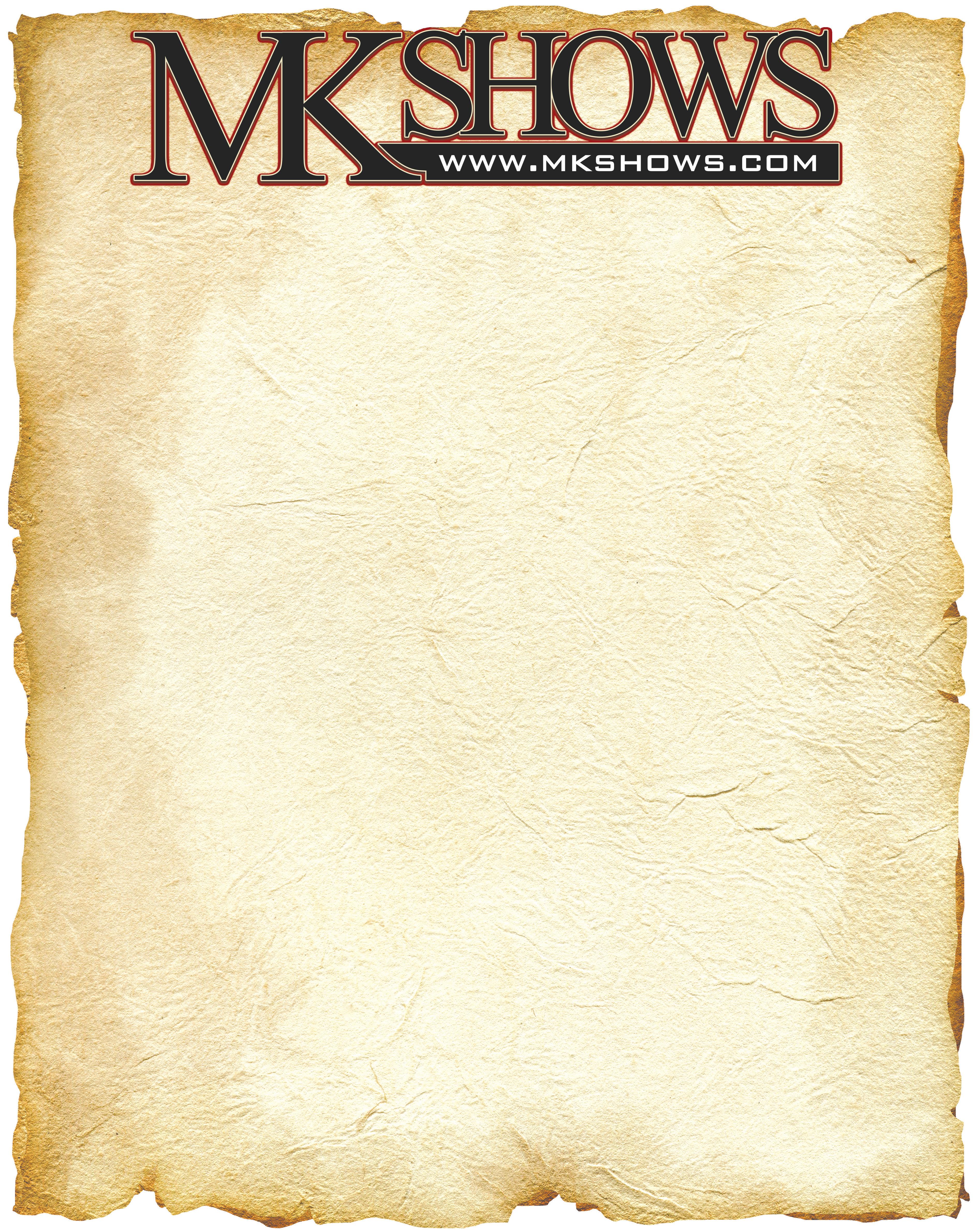



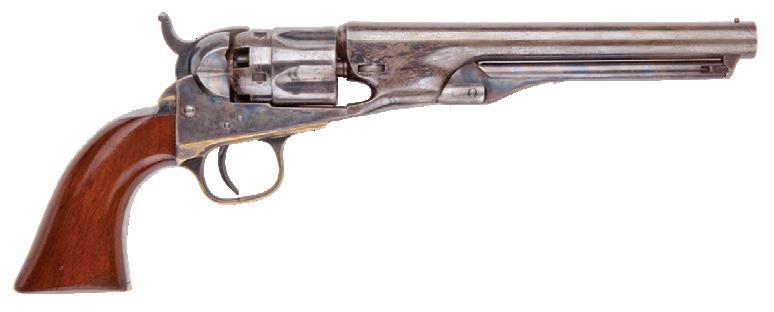

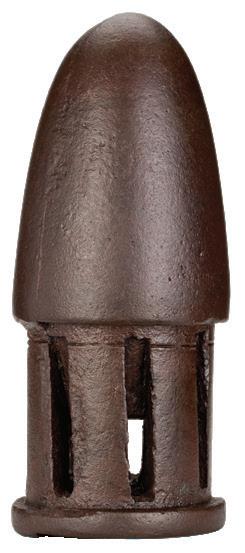



Mike Kent & Associates, LLC • PO Box 685 • Monroe, GA 30655 770-630-7296 • Mike@MKShows.com • www.MKShows.com Military Collectible & Gun & Knife Shows Presents The Finest Williamson County Ag Expo Park 4215 Long Lane Franklin, TN 37064 Dec. 5 & 6, 2020 Middle TN (Franklin) Civil War Show Richmond International Raceway 600 East Laburnum Avenue Richmond, VA 23222 Nov. 14 & 15, 2020 Capital of the Confederacy (Richmond) Civil War Show Florence Civic Center 3300 West Radio Drive Florence, SC Oct. 10 & 11, 2020 Florence Gun & Knife Show Promoters of Quality Shows for Shooters, Collectors, Civil War and Militaria Enthusiasts WNC Ag Center 1301 Fanning Bridge Road Fletcher, NC Jan. 9 & 10, 2021 Asheville Gun & Knife Show Myrtle Beach Convention Center 2101 North Oak Street Myrtle Beach, SC 29579 Oct. 31 & Nov. 1, 2020 Myrtle Beach Gun & Knife Show Dalton Convention Center 2211 Dug Gap Battle Rd Dalton, GA 30720 Jan. 30 & 31, 2021 Dalton Civil War Show Scan for all events Cancelled Cancelled
H Bearss
. . . . . . . . . . from page 1
After recovery and discharge, Bearss went to college and graduate school. While researching his master’s thesis on Confederate Maj. Gen. Patrick Cleburne, he had an epiphany during a visit to Shiloh National Military Park. “I’d already realized from my service in the Marine Corps that if you’re hit by small arms fire, they pretty well have to see you,” he later recalled during an oral history project for the Trust. “I lived rather than died because I used the configuration of the terrain to get out of there.” That hardearned lesson in terrain helped him better understand how history could be gleaned from historic battlefield landscapes.
Bearss resolved to become a historian within the National Park Service, helping others understand the inherent connection between physical landscapes and history. His first posting was to Vicksburg, Miss., where he met his wife, fellow historian Margie Riddle, who passed away in 2006. His tireless research led to
discovering and raising the ironclad USS Cairo, now preserved within a museum that is a fixture of Vicksburg National Military Park. In 1958, he was promoted to regional historian and played a key role in shaping two new parks created as part of the Civil War centennial: Pea Ridge National Military Park and Wilson’s Creek National Battlefield. In 1966, he was called to Washington, D.C., to join a new corps of research historians and became involved in various preservation battles.
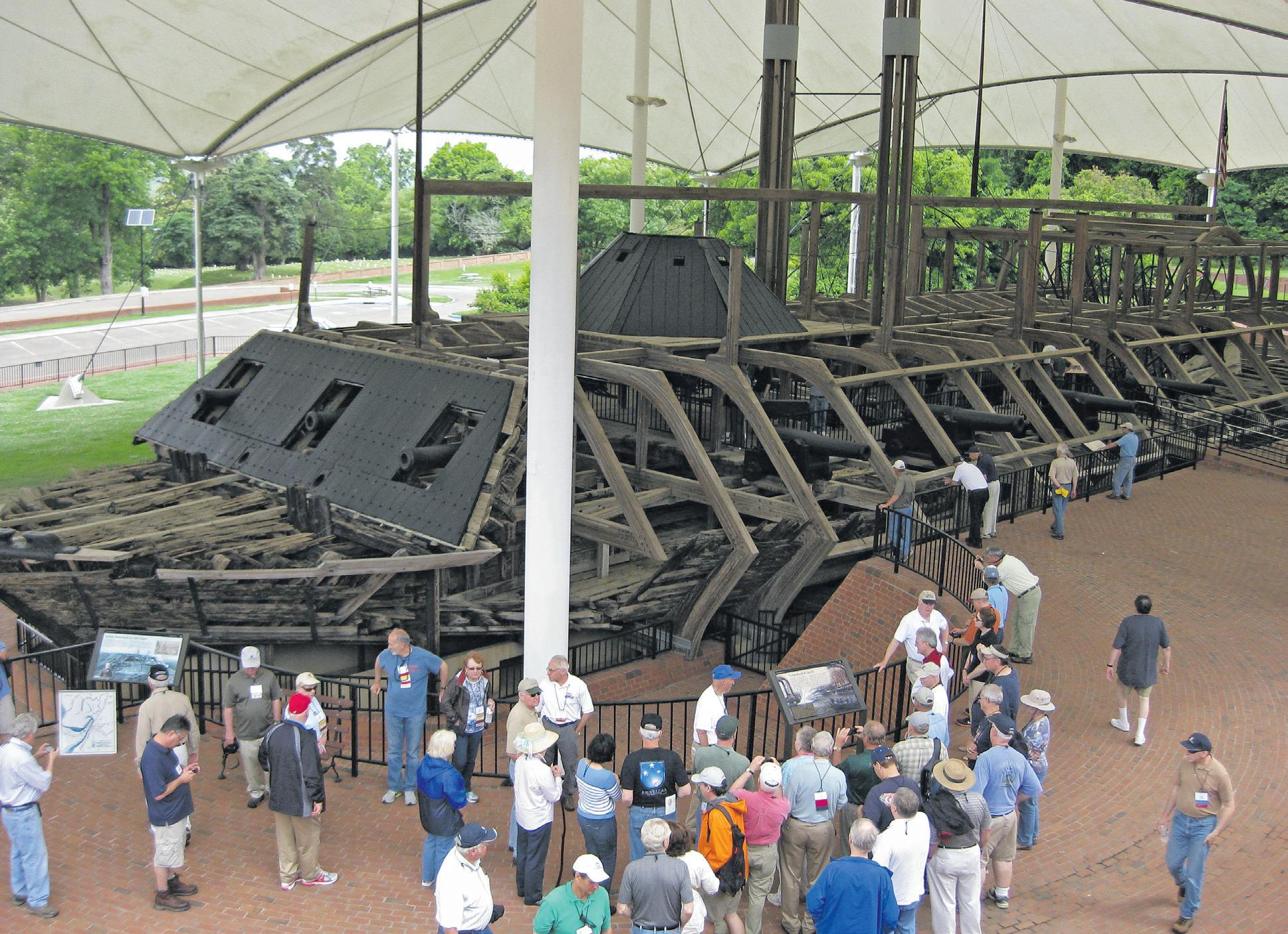
Bearss was named chief historian of the National Park Service in 1981, and late that decade and into the next, he was a key figure in the early years of the modern battlefield preservation movement. He served on the Congressionally appointed Civil War Sites Advisory Commission and was an early board member of the Civil War Trust, a predecessor organization of the American Battlefield Trust. He retained a position on that governing body as historian emeritus until his death.
Whether acting on behalf of the Trust or other organizations,
including the Smithsonian Institution, Bearss was perhaps the greatest battlefield guide to ever walk a historic landscape. Writing in Smithsonian Magazine in 2005, author Adam Goodheart described his presentation style as being a “battlefield voice, a kind of booming growl, like an ancient wax-cylinder record amplified to full volume—about the way you’d imagine William Tecumseh Sherman sounding the day he burned Atlanta, with a touch of Teddy Roosevelt charging up San Juan Hill.” Tours at Trust events led by Bearss invariably booked up, often within hours, even when other options included industry-leading experts.
Bearss is the recipient of numerous awards in the fields of history and preservation; the America Battlefield Trust named its lifetime achievement award in his honor and dedicated a monument to his achievements on the Champion Hill Battlefield in Mississippi. He wrote extensively, including a three-volume history of the Vicksburg Campaign: The Campaign for Vicksburg: I Vicksburg Is the Key, II Grant Strikes a Fatal Blow, III Unvexed to the Sea, and was a regular guest on programs for the History Channel, A&E Networks, and TLC, as well as appearing throughout Ken Burns’s iconic documentary The Civil War
At the request of the Bearss Family, in lieu of flowers, donations in memory of Ed Bearss may be made to the American Battlefield Trust. Recognizing the special place that these battlefields held in his heart, such

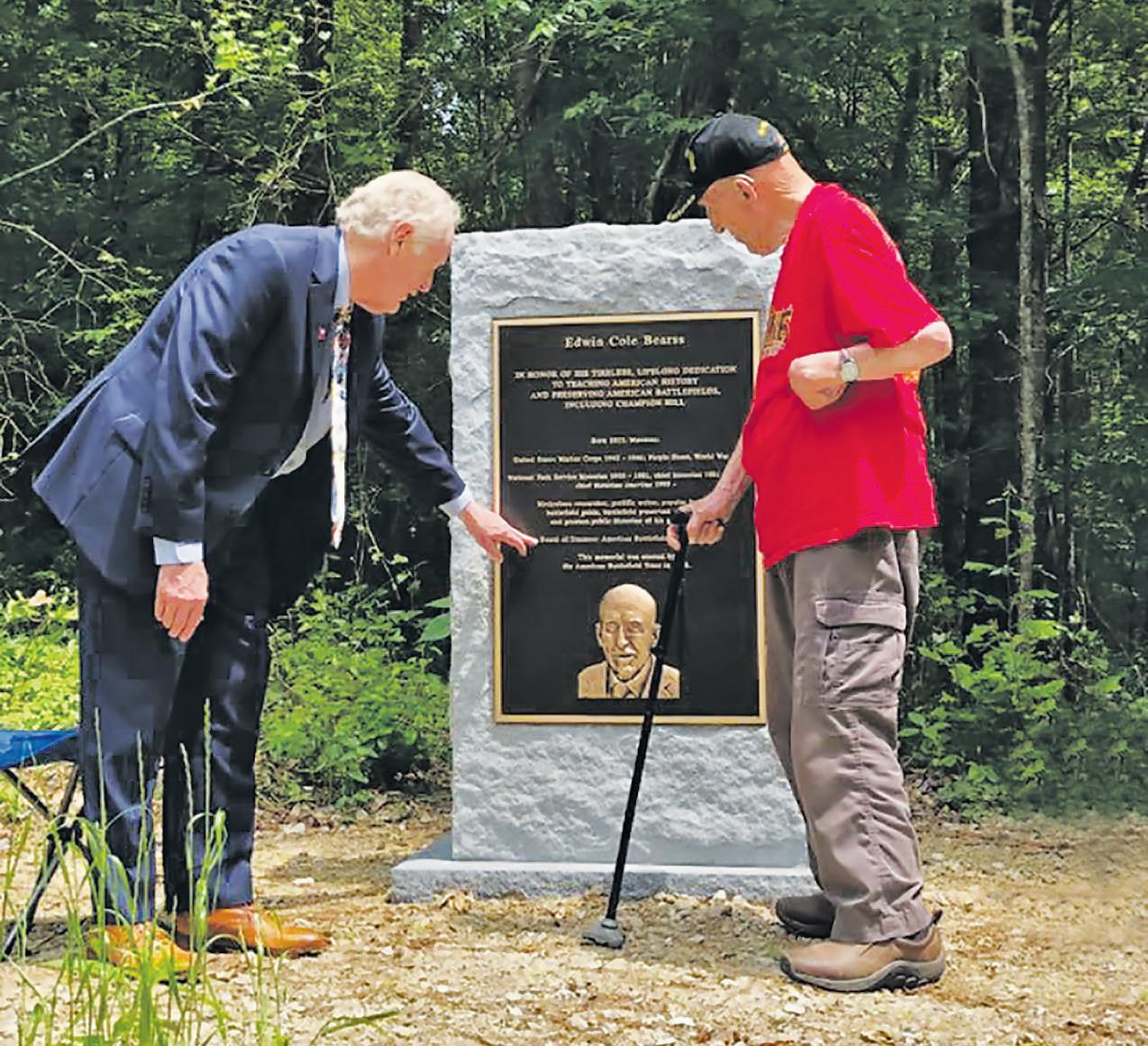
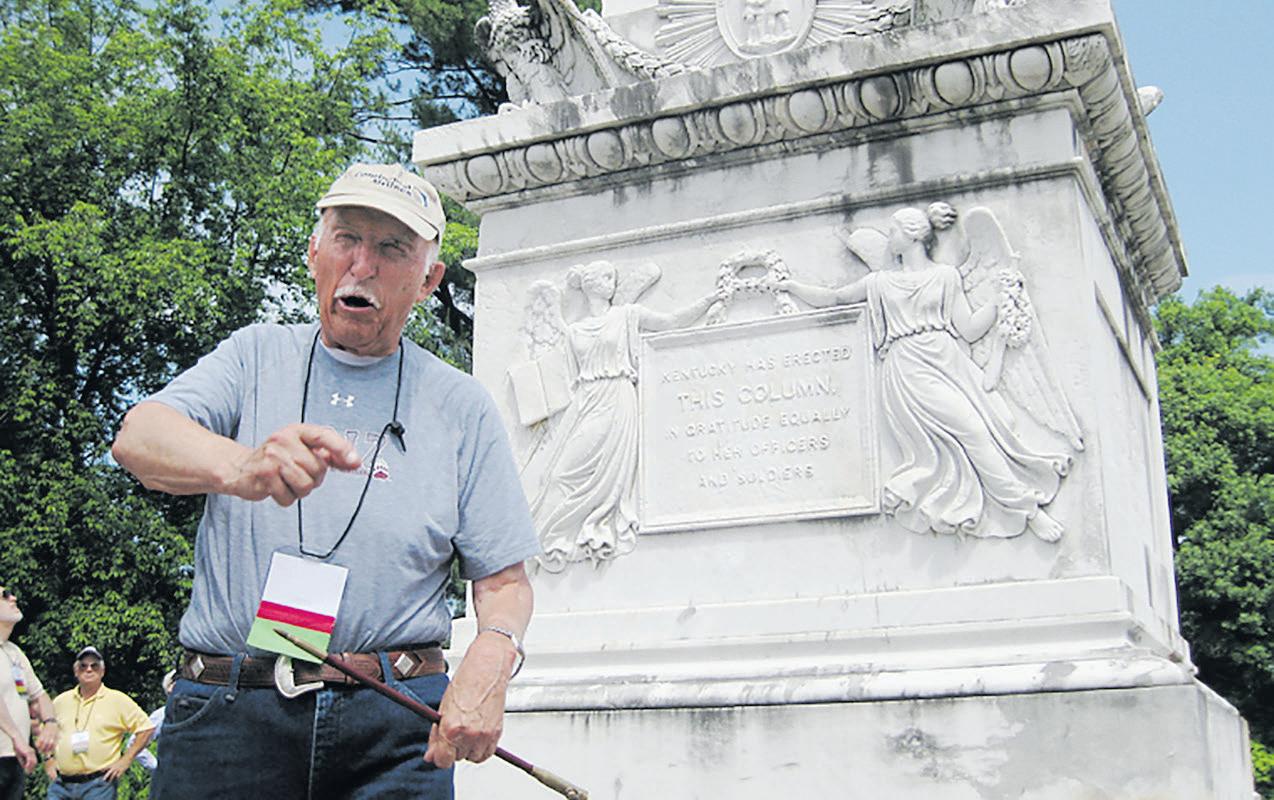
gifts will be used to secure additional lands associated with the Vicksburg Campaign. Please visit www.battlefields.org/ RememberingBearss for more information.
The American Battlefield Trust is dedicated to preserving America’s hallowed
battlegrounds and educating the public about what happened there and why it matters today. The nonprofit, nonpartisan organization has protected more than 53,000 acres associated with the Revolutionary War, War of 1812, and Civil War. Learn more at www.battlefields.org.
4 Civil War News November 2020
Ed Bearss giving a tour of the USS Cairo at the 2013 Vicksburg Conference. To watch a C-Span video of Ed Bearss going into the search and recovery of the USS Cairo type in this link: https:// www.c-span.org/video/?457702-6/recovering-uss-cairo.
Ed leads people on a tour of a Civil War battlefield in Kentucky. David Duncan / American Battlefield Trust.
The America Battlefield Trust named its lifetime achievement award in Ed Bearss’ honor and dedicated a monument to his achievements on Champion Hill Battlefield in Mississippi. Left is American Battlefield Trust’s President, Jim Lighthizer, with Ed Bearss.
Ed Bearss wearing his License Battlefield Guide badge. Buddy Secor / American Battlefield Trust.
H

from page 1
Bearss remembered reading these in San Diego Naval Hospital, Calif., where he spent time during his twenty-six months of hospitalization that followed his wounding at Cape Gloucester, New Britain, January 2, 1944. The Battle of Cape Gloucester was fought in World War II’s Pacific Theater. He added that he learned something interesting from Burke Davis (1913–2006) in his biography of Colonel Chester Puller. “Chesty” Puller, whom Bearss described as a “Marine’s Marine,” was reading Lee’s Lieutenants during the same time period.
Bruce Catton (1899–1978) wrote the three-volume series, The Army of the Potomac, in the early 1950’s. The trilogy contains these titles:
Mr. Lincoln’s Army (1951)
Glory Road (1952)
Stillness at Appomattox (1953)
He remembered reading this series when he was doing graduate work at Indiana University. The last volume, Stillness at Appomattox, won the Pulitzer Prize for History. It also won the National Book Award for non-fiction. Ed laughed and said someone asked, “Who won the Civil War Centennial, (1961–1965)?”
He answered “Bruce Catton.”
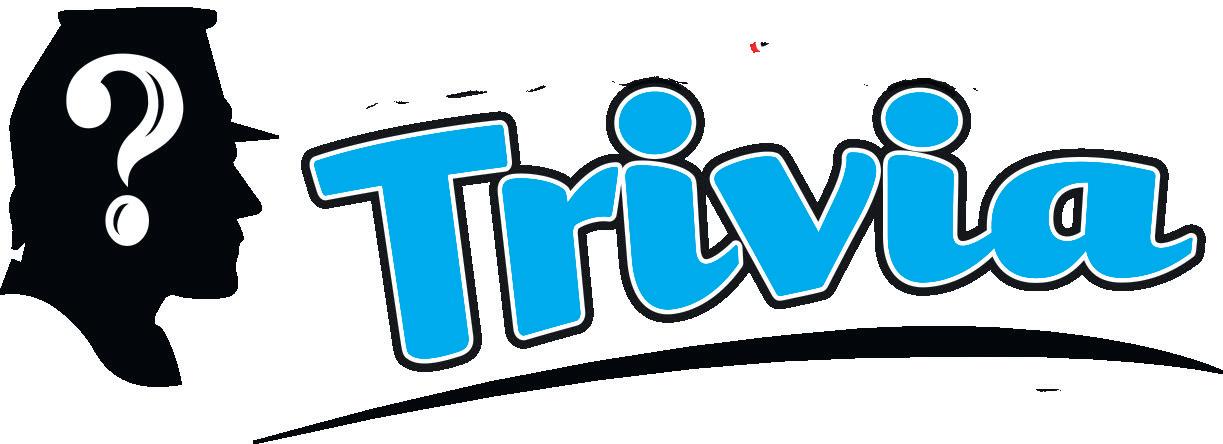
He noted that his favorite autobiography was Personal Memoirs of Ulysses S. Grant, by Ulysses S. Grant, New York: Charles L. Webster & Company, 1885–86.

The famous author Mark Twain (Samuel Langhorne Clemens) paid for its publication. Grant struggled for a year with throat cancer as he wrote his memoirs. The final pages were delivered to Mark Twain five days before Grant’s death on July 13, 1885. The book was a huge financial success. Grant had suffered fi nancial problems in his later years. The book took in more than $450,000, which in today’s economy would be equivalent to more than $10 million. The in come gave financial security to Julia, Mrs. Grant, for the rest of her life.
Mark Twain called this work by Grant “a masterpiece.”
Bearss has received many awards and honors in the field of history and preservation:
• Bruce Catton Award



• Alvin Calman Award
• Bell I. Wiley Award
• T. Harry Williams Award
• Man of the Year at Vicksburg in 1963
• Harry S. Truman Award for Meritorious Service in the
field of Civil War History
• Fellow of the Company of Military Historians
• Nevins–Freeman Award from the Civil War Round Table of Chicago in 1980
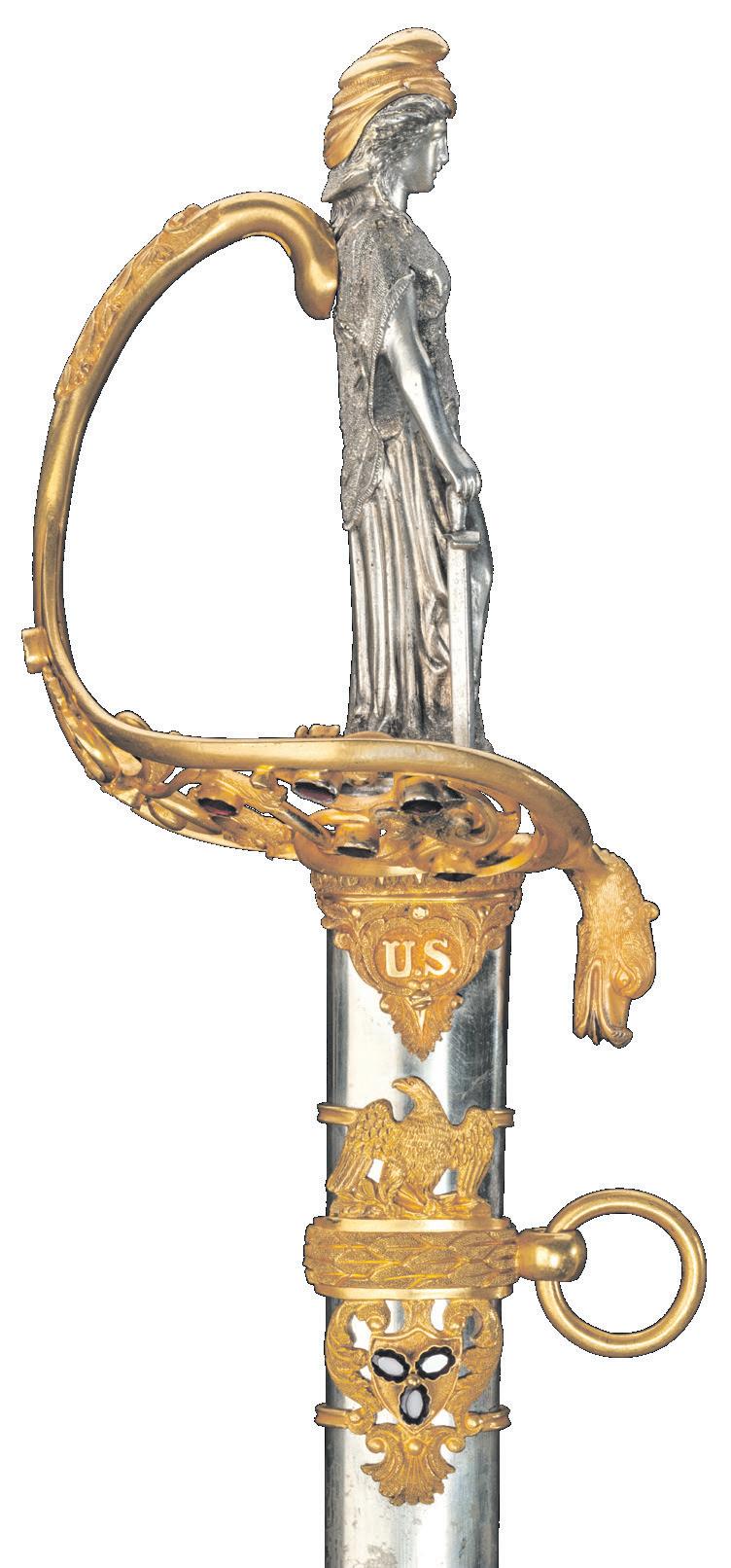
• Distinguished Service Award from the Department of the Interior in 1983
• Commendation from the Secretary of the Army in 1985
• The Civil War Trust (now American Battlefield Trust) created the Ed Bearss Award for achievements in historic preservation and made him the first recipient in 2001


• Texas Star Award from the Texas Civil War Preservation Seminar in 2002
• T. Harry Gatton Award, Raleigh Civil War Round Table in 2008
• A portrait bust of Bearss by Arthur Downey, a Washington, D.C., artist, was unveiled near the USS Cairo
in the Vicksburg National Military Park on October 3, 2009.
• Chambersburg Civil War Seminars and Tours annually gives the Ed Bearss Award in his honor

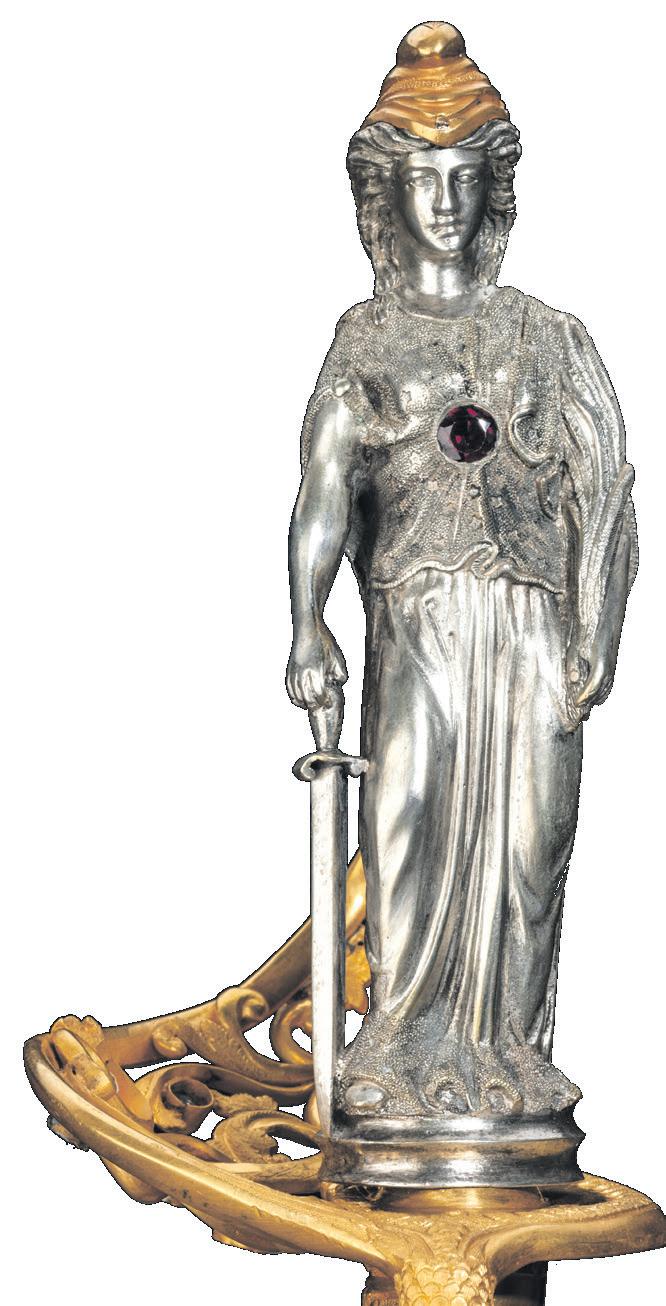
• The American Battlefield Trust (formerly the Civil War Trust) presented its inaugural Lifetime Achievement Award in 2018 to Ed Bearss for his “many decades dedicated to researching and relating the nation’s past to millions of people, as well as his advocacy for battlefield preservation.”
Dorothy Partidge is a native of Atlanta, Ga. She is a retired history teacher and librarian as well as a member of Agnes Lee Chapter of UDC, the Civil War Round Table of Atlanta, Cobb County Civil War Round Table, Georgia Battlefield Assn., and the American Battlefield Trust.
By Lawrence E. Babits
Civil War Alphabet Quiz -
G as in...November
G
1. The stolen train engine involved in the Great Locomotive Chase
2. U.S. Navy vessel with railroad iron plating
3. This brigadier held Culp’s Hill; his son was XO on USS Monitor
4. This doctor from Perquimans County, N.C., invented a “machine gun”
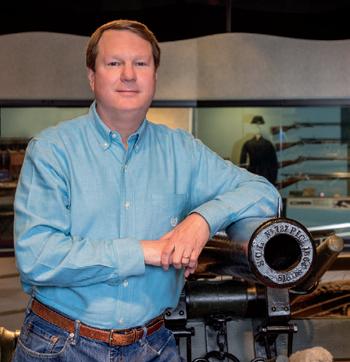

5. This general “could put courage in the heart of a scared chicken”
6. Marching without orders, this general reinforced Thomas at Chickmauga
7. Gen. Porter’s men covered McClellan’s “change of base” near this mill
8. This “ladies gunboat” guarded Savannah until Dec 1864
9. Battle that saved Colorado from Confederate invasion
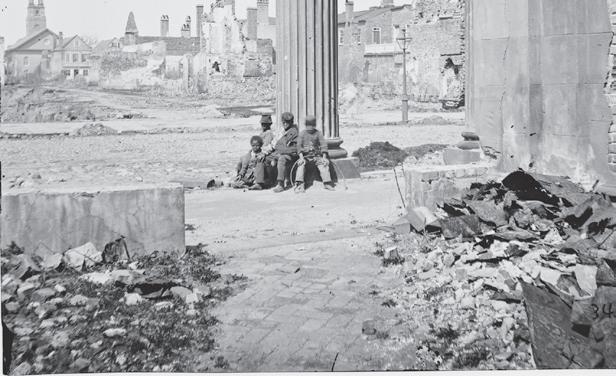
10. Union cavalryman who led raid through Mississippi to Louisiana in 1863
Answers found on page 55.

5 November 2020 Civil War News Subscribe online at CivilWarNews.com Buying and Selling The Finest in Americana 11311 S. Indian River Dr. • Fort Pierce, Florida 34982 770-329-4985 • gwjuno@aol.com George Weller Juno
Bearss Books . . . . . . . . . . .
Historian Ed Bearss leads a Chambersburg Civil War battlefield tour. Chambersburg Civil War Seminars & Tours.
100 Signi cant Civil War Photographs: Charleston in the War features newly restored images of scenes in the famed city, taken 1860–1865. e cameramen include the better-known, such as George N. Barnard and George S. Cook, as well as some lesser-known ones: Samuel Cooley, Charles Quinby, the partners Haas & Peale, Osborn & Durbec. Text by Stephen Davis and Jack Melton accompanies each featured photograph, describing the pictured scenes and the history surrounding them. e selected images depict a variety of settings: that portion of Charleston known as e Battery, the “Burnt District” (the area of the city destroyed by the Great Fire of December 1861), the Charleston Arsenal, and the many churches that allow Charlestonians to call theirs “the Holy City.” Special sections of this book are devoted to the huge Blakely guns imported from England by the Confederates and close-ups of Barnard’s views. e history of Civil War Charleston goes back to e Defense of Charleston Harbor (1890) by John Johnson, Confederate major of engineers, and to Reminiscences of Forts Sumter and Moultrie in 1860-’61 (1876) by Capt. Abner Doubleday, Federal second-in-command. Since then Charlestonians have contributed to the history of their city, notably Robert N. Rosen and Richard W. Hatcher III. e historical text surrounding 100 Signi cant Photographs draws on these and other works. A unique feature is its reliance upon the writings of actual participants, such as Augustine T. Smythe (1842–1914) and Emma Edwards Holmes (1838–1910). As a contribution to this literature, 100 Signi cant Civil War Photographs: Charleston in the War o ers rewards for all readers, from the casual novice to the serious student.
DAVIS & MELTON 100 SIGNIFICANT CIVIL WAR PHOTOGRAPHS CHARLESTON IN THE WAR 100 Signi cant Civil War Photographs: Charleston in the War features newly restored images of scenes in the famed city, taken 1860–1865. The cameramen include the better-known, such as George N. Barnard and George S. Cook, as well as some lesser-known ones: Samuel Cooley, Charles Quinby, the partners Haas & Peale, Osborn & Durbec. Text by Stephen Davis and Jack Melton accompanies each featured photograph, describing the pictured scenes and the history surrounding them. The selected images depict a variety of settings: that portion of Charleston known as The Battery, the “Burnt District” (the area of the city destroyed by the Great Fire of December 1861), the Charleston Arsenal, and the many churches that allow Charlestonians to call theirs “the Holy City.” Special sections of this book are devoted to the huge Blakely guns imported from England by the Confederates and close-ups of Barnard’s views. The history of Civil War Charleston goes back to The Defense of Charleston Harbor (1890) by John Johnson, Confederate major of engineers, and to Reminiscences of Forts Sumter and Moultrie in 1860-’61 (1876) by Capt. Abner Doubleday, Federal second-in-command. Since then Charlestonians have contributed to the history of their city, notably Robert N. Rosen and Richard W. Hatcher III. The historical text surrounding 100 Signi cant Photographs draws on these and other works. A unique feature is its reliance upon the writings of actual participants, such as Augustine T. Smythe (1842–1914) and Emma Edwards Holmes (1838–1910). As a contribution to this literature, 100 Signi cant Civil War Photographs: Charleston in the War o ers rewards for all readers, from the casual novice to the serious student. Stephen Davis JACK W. MELTON JR. CHARLESTON IN THE WAR 160 pages, Over 100 Photos, Maps, Index, Bibliography, Softcover. ISBN: 978-1-61850-167-7 $19.95 + 3.50 S&H Order online at www.HistoricalPubs.com or call 800-777-1862
CHARLESTON IN THE WAR
LeMat Revolver
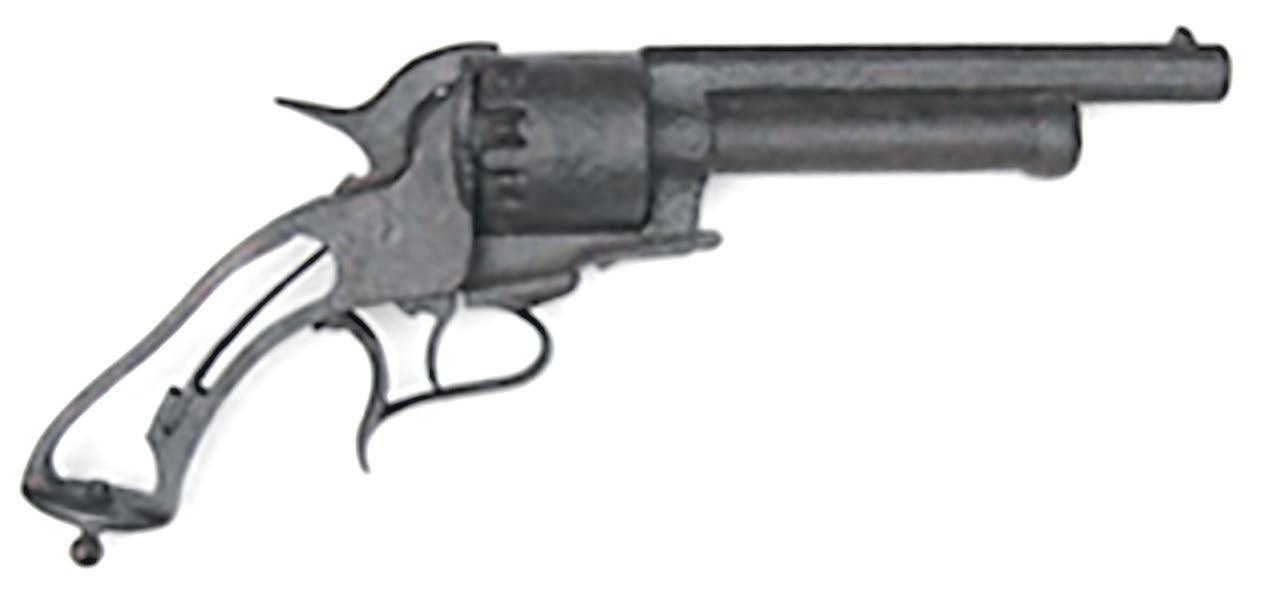
Dear John:
My dad was born in 1943 and he found this relic LeMat revolver as a child. He found it in a clump of dirt behind a store in Verona, Mississippi. He has had it since then, and now he would like to sell it.
Leslie Tupelo, Miss.
serial number “227” can be read on both the barrel and cylinder. About 400 1st models were thought made.

Confederate general in command at that famous cavalry fight.
John is an certified appraiser with International Society of Appraisers specializing in Civil War memorabilia. He authenticates and evaluates other rare and valuable historic items as well. His website is www.civilwardealer. com. He is coauthor of the book Confederate Bowie Knives (2012) by Jack Melton, Josh Phillips and John Sexton, that was published by Mowbray Publishing, Inc. Send “Ask The Appraiser” questions and photographs to civilwarappraiser@gmail.com.


Dear Leslie:
This is a nice 1st Model LeMat revolver. It appears all original and “as found” except for the added carved wood grips.
The LeMat “grapeshot” revolver was the most exotic handgun of the Civil War. Unlike Colt six-shot revolvers, LeMats had a nine-shot, 42-calibre cylinder revolving around an 18-gauge shotgun barrel for firing buckshot with a selector switch on hammer nose to change barrels; it was the ultimate in firepower for a cavalryman. Produced exclusively for the Confederacy, LeMats were carried by several Confederate generals including J.E.B. Stuart, Braxton Bragg, and P.G.T. Beauregard, who was an original principal in their manufacture.
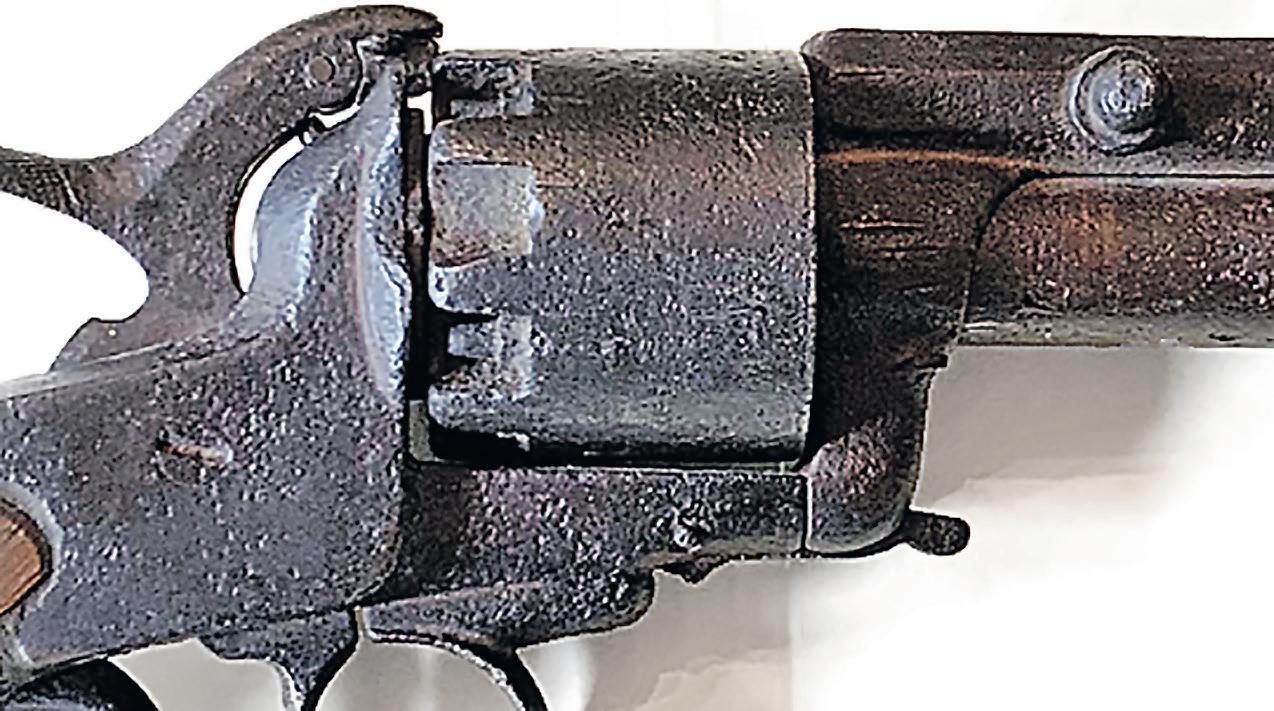
About 2,500 LeMat revolvers were made in Paris for the Confederacy. The 1st models have the loading assembly attached to the barrel on the right side; they are the scarcest and most desirable models. Yours is too pitted to read “Col Lemat’s Patent” on the top barrel flat but
I have only seen one excavated relic Lemat revolver before. It was a transitional model found near the Franklin Battlefield in Tenn., and was thought to have been carried by one of Nathan Bedford Forrest’s cavalrymen. It sold in auction in 2010 for $8,050. It was fully loaded when lost. The relic that sold in auction would rank higher in marketability as it was identified to the battlefield, the troops who carried it, and because it was fully loaded. In auction I could see this relic selling for $4,000-5,000, or maybe more. Brice’s Crossroads battlefield is near where it was found. N.B. Forrest was the


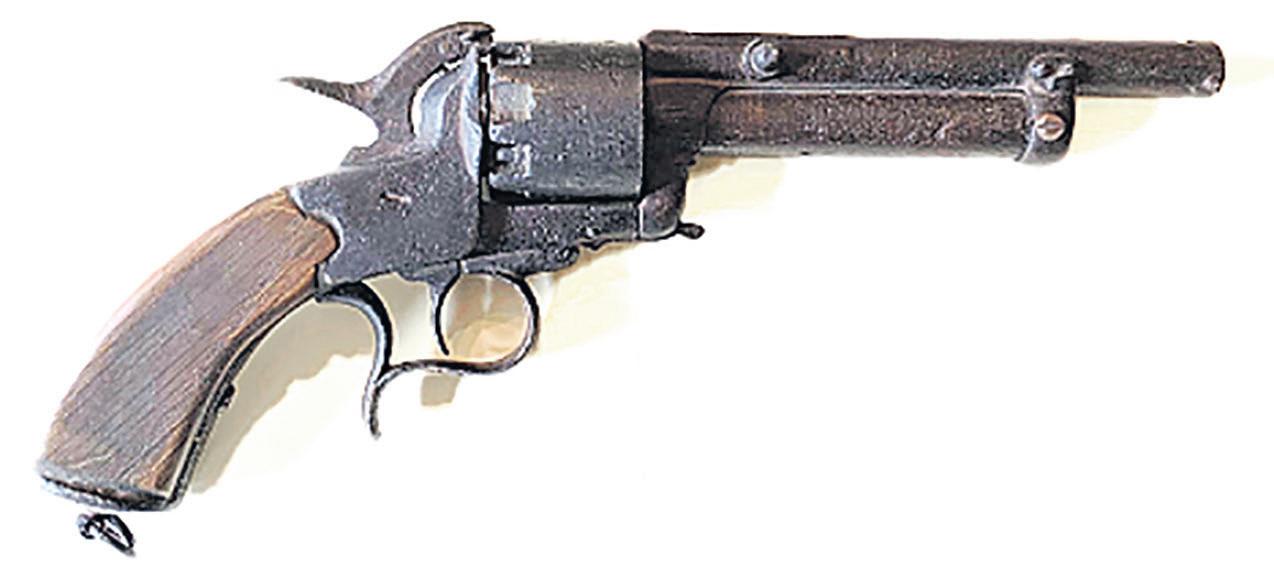
6 Civil War News November 2020 Subscribe online at CivilWarNews.com Civil War Catalog
a large assortment of Civil War and Indian War autographs, accoutrements, memorabilia, medals, insignia, buttons, GAR, documents, photos, & books. Please visit our fully illustrated online catalog at www.mikebrackin.com Free copy mail catalog Mike Brackin PO Box 652, Winterville, NC 28590 • 252-565-8810
Featuring
The loading lever was originally attached to barrel; the stud is still present.
Closeup showing pitting on the iron parts.
Overall left side cocked with selector on hammer in position to fire shotgun barrel.
Serial number 227 stamped on cylinder.
This excavated sold twice in auction, $8,000 (2010), and $15,000 (2016).
Over half the extant 1st models are missing the fragile loading assembly.
Imported European
Muskets for the South Prussia, and Austria. These varied somewhat in bore diameter as well as quality. American gun-makers were not the only ones producing muskets from substandard and condemned parts that were sold into the gun trade.
The most common smoothbore percussion musket in Confederate hands was most likely a U.S. 1816/22 converted from flint sometime after the Mexican War. The adoption of the percussion lock system beginning in 1842 resulted in the retroactive conversion of some of the Federal stockpile of over 800,000 flint-locks still on hand. However, not all smoothbore muskets used during the Civil War were of U.S. manufacture.
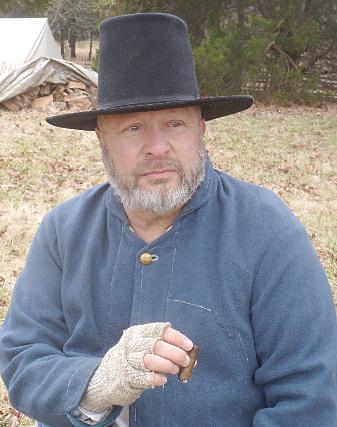
In May 1861, Caleb Huse obtained C.S. contracts for the commercial British P53 rifle-muskets but also surplus P39 and P42 percussion cap ‘Brown Bess’ smoothbore muskets. He continued on to Continental Europe and obtained other available surplus muskets from France, Belgium,
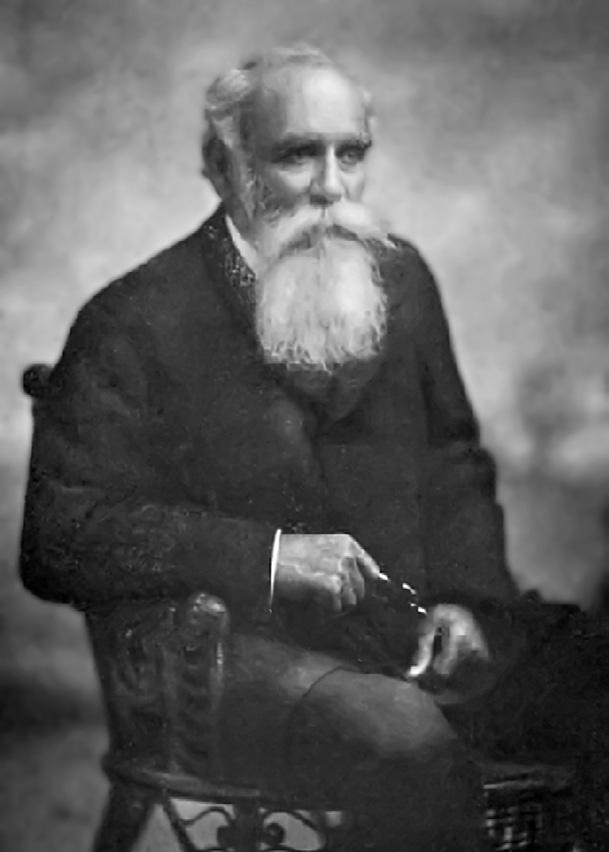


Exact figures of European smoothbore muskets purchased by the Confederacy and run through the Blockade are not known, but Huse claims to have landed 100,000 of the more modern M1854 Austrian (a.k.a. Lorenz) rifle alone. This figure may be exaggerated. Caleb Huse wrote this many years post-bellum and time has a way of muddling certain details. The contract was also higher in cost than the Confederate Ordnance Department had been led to believe.
We do not have figures from the Imperial Armory in Vienna like we do from the Birmingham
Small Arms Trade (courtesy of John Dent Goodman) so the best we can do is come up with a figure working backwards. As near as can be determined Josiah Gorgas indicated in correspondence to Secretary of War James Seddon that 27,000 Austrian rifles were imported by the end of 1862. Another 23,000 remained in Nassau awaiting shipment. There were probably various European smoothbore muskets included in that figure as well due to the volume of arms buying going on. A further 30,000 Austrian rifles remained in Vienna awaiting payment. If the math is right, that makes around 80,000 Austrian rifles by the end of 1864…then the paper trail goes cold. The number of smoothbore muskets was certainly less than that. By 1864 the Confederacy did not intend to import any more obsolete flintlocks as they already had a supply of those on hand. European smoothbore muskets were more commonly issued and remained in service longer in the Western theater units. The continued use of buck and ball rounds is one reason why the so-called “obsolete” smoothbore muskets were still seeing service on both sides when Robert E. Lee surrendered at Appomattox Courthouse in April 1865. A good source on the extent of smoothbore musket usage during the U.S. Civil War is The Bloody Crucible of Courage by Brent Nosworthy. The author reviewed ammunition
requisitions from the last years of the conflict and found that an unexpectedly large number of orders for .69 caliber buck and ball cartridges were being filled right up until the end of the war. If the armies were armed almost totally with .58 caliber rifle-muskets as has often been stated, what use would the .69 caliber buck and ball rounds be and what purpose would the soldiers have for them? Obviously, the buck and ball cartridges were issued because a number of smoothbore muskets were still in the ranks.
What did the officers at the time think about the effectiveness of the “new” rifle-muskets in the field? Opinions seem to vary, but after approximately two years studying the effectiveness of both “rifled” and “smoothbore” muskets with troops in battle, Claud E. Fuller noted in The Rifled Musket (Stackpole Publishing, 1959) that one Union officer reported back:
“...(Even) with all the defects in the new (rifled) arms, caused by the great curves of their trajectories, an army can not now do without them; it would be placed in a position of inferiority to its adversary (at longer ranges). It would be equally in error to fall into the other extreme, and discard entirely smoothbore arms from our army, a result towards which we have been tending for several years past.”
The report concludes by saying, “Battles must be fought and won, as in times past; decisive victories cannot be gained by firing at long ranges; at short ranges the (smoothbore musket with) the buck and ball cartridge
is certainly more effective. It is a grave error to adopt for an army rifled (muskets) to the entire exclusion of smoothbore arms.”
The historical use of smoothbore muskets throughout the war is a simple reality most historians chose to ignore. Experienced Civil War field officers have been quoted as saying “The (smoothbore) musket with buck and ball is the best arm in the service” and as fellow Civil War News columnist Joe Bilby noted in his May 1993 article for American Rifleman, “buckshot tells at close range.”
Craig L. Barry was born in Charlottesville, Va. He holds his BA and Masters degrees from the University of North Carolina (Charlotte). Craig served The Watchdog Civil War Quarterly as Associate Editor and Editor from 2003–2017. The Watchdog published books and columns on 19th-century material and donated all funds from publications to battlefield preservation. He is the author of several books including The Civil War Musket: A Handbook for Historical Accuracy (2006, 2011), The Unfinished Fight: Essays on Confederate Material Culture Vol. I and II (2012, 2013) and four books in the Suppliers to the Confederacy series on English Arms & Accoutrements, Quartermaster stores and other European imports.
7 November 2020 Civil War News
Subscribe at CivilWarNews.com
Western Theater Confederate with smoothbore musket. Library of Congress.
Major Caleb Huse
CWN Contributors Top Ten Favorite Civil War Books

We asked our contributors to submit their top ten favorite Civil War books of all time. We removed paragraph breaks to allow for more content in this expanded Civil War News issue.
Marc Ramsey’s Favorite Books
I have been reading books on the American Civil War since I was 10 years old, when my Aunt Connie gave me my first one for Christmas, Robert E. Lee and the Road of Honor, by Hodding Carter, in the Landmark series for young readers. I was immediately hooked, and over the years since then, while taking a break from time to time to read about another era, usually military history or the odd work of historical fiction, it is still Civil War history that I turn to for my study and recreational reading. Now we have a bookstore that specializes in Civil War books, as well as other periods of military history; we generate a direct mail catalog once a month, containing about 200 titles, the best books that we have picked up in recent weeks. On a particularly good month, you will see one or more of my personal favorites, usually marked by a little post scrip comment, such as One of My Favorite CW
Books, or One of my very favorite Confederate Navy Books, or the like. So when asked to prepare a list of my ten favorite Civil War reads, the only challenge was to keep the list down to ten, which I couldn’t do, for there are so many that I have loved over the years. At any rate, here goes, a succinct list of Marc Ramsey’s eleven favorite Civil War Books in no particular order.
1. Lee’s Lieutenants, a Study in Command by Douglas Southall Freeman. Charles Scribners Sons, 1942–1945. This is an unforgettable read and still the best source for Lee and his Army of Northern Virginia. When you sit down in your favorite chair with these books, you forget you’re reading; you are literally transported back in time, thanks to the writing skills of its great author.
2. Fighting For the Confederacy, The Personal Recollections of General Edward Porter Alexander edited by Gary Gallagher. University of North Carolina Press, 1989. I love this well-crafted volume for its objective look at each of the battles and campaigns of the Army of Northern Virginia. Over the years I have advised
many times that it is required reading for anyone wanting to learn more about Lee’s army and his men.
3. Lone Star Preacher by John W. Thomason. Charles Scribner’s Sons, 1941. In spite of the fact that this is historical fiction, it is still true to the history, while adding some unforgettable characters to the story, especially Praxeteles Swan. The author was a noted Marine Corps officer and talented illustrator, and the author of Ed Bearss’ favorite book as a young person, JEB Stuart
4. One of Jackson’s Foot Cavalry, His Experiences and What He Saw During the War 1861–1865 by John Worsham. The Neale Publishing Co., 1912. One of the best written of all personal narratives, and a great source for details and anecdotes of army life and equipment. We actually built F Company, our reenacting unit, around this book.
5. Berry Benson’s Civil War Book, Memoirs of a Confederate Scout and Sharpshooter by Berry Benson. University of Georgia Press, 1962. This is an astonishing but factual
Gun Works, Inc.
Where “Hard-to-Find” becomes easy.
For generations, re-enactors, modern hunters and competitive shooters have looked to the DIXIE GUN WORKS’ catalog for the hardest to find blackpowder items. Our all new 2021 catalog continues the tradition with the world’s largest selection of blackpowder replica arms, accessories, antique parts, muzzleloader hunting and sport shooting equipment.

memoir. Benson really was at all the places and did all the things that he describes. His saddest moment in the war was when he took his last shot at a Yankee and missed just before Appomattox.
6. Running the Blockade by Tom Taylor. J. Murray, 1897. These are the exciting reminiscences of a bright, young Englishmen and his partners, who risked all to make a profit running cargoes through the Yankee blockade into Southern ports.
7. Rags and Hope, The Recollections of Val C. Giles, Four Years With Hood’s Brigade, Fourth Texas Infantry, 1861–1865 by Val Giles. Coward-McCann, 1961. Another superbly written account about one of the most captivating subjects of the war, the exploits and experiences of Hood’s Texas Brigade in the Army of Northern Virginia.
8. “Company AYTCH,” Maury Grays, First Tennessee Regiment: or, A Side Show of the Big Show by Sam Watkins. Cumberland Presbyterian Publishing House, 1882. You don’t read this book, you listen to it. You listen to an old Southern veteran as he shares with you his stories and memories, most of which are probably mostly true. It’s a delight!
9. Ghost Ship of the Confederacy by Edward Boykin. Funk & Wagnall’s Company, 1957. There are few sea stories as compelling as the adventures of the CSS Alabama, and of all the books written on this subject, this is by far and away my favorite.
10. Recollections Grave and Gay by Mrs. Burton Harrison, (Constance Cary). Charles Scribner’s Sons, 1911. The author, a novelist, and one of the “Cary Invincibles,” tells of life in the Confederate capital during the war from the perspective of a fervent young Confederate woman at the heart of Richmond’s governing and social circles, and of life afterwards as she becomes the wife of Jefferson Davis’ chief aid, Burton Harrison.
11. To the Gates of Richmond, The Peninsula Campaign by Stephen Sears. Ticknor & Fields, 1992. My favorite campaign of the war is the Seven Days around Richmond; this is the best book on that series of
battles, by one of the best military historians I have ever encountered.
These books all have personality and are captivating reads. They are filled with individual experiences, anecdotes, irony, and even at times, humor.
On a final note—as I get older, I have found great pleasure in occasionally picking up one of these, my old friends, from my library, and reading it again. I find myself transported back in time, to a familiar place, where all cares for the present are, for a little while, suspended. Enjoy!
Marc Ramsey is co-owner of Owens and Ramsey Historical Booksellers with his lovely wife Jill, who, for the past 25 plus years, have specialized in the buying, selling and trading of rare and collectible Civil War books, artifacts and paper items. They provide appraisals for estate planning, charitable deductions, or insurance purposes. They also love making recommendations to readers looking to expand their Civil War knowledge as well as providing customers with very rare and collectible volumes for their libraries.
Chris E. Fonvielle Jr.’s Top Ten Civil War Books
Jack Melton’s request to list my top ten favorite Civil War books is the most challenging assignment since writing my Ph.D. dissertation at the University of South Carolina. Every historian of the conflict could easily cite 100 or more books as essential reading. My interest in the coastal war shaped my list, along with a hefty dose of nostalgia. So here goes:
1. The Golden Book of the Civil War. New York: Golden Press, 1960. A Christmas gift from my parents when I was eight years old in 1961, it is my all-time favorite Civil War book. Editors of American Heritage adapted it from the American Heritage Picture History of the Civil War for young readers. I spent hours and hours, days and days, marveling at the period photographs, lithographs, engravings, and diorama maps by David Greenspan, and perusing Bruce Catton’s excellent narrative. Little did I know that The Golden Book of the Civil War would be the first step toward my becoming a Civil War historian and professor in the Department of History
8 Civil War News November 2020 DIXIE GUN WORKS, INC. 1412 W. Reelfoot Avenue PO Box 130 Dept. 17 Union City, TN 38281 INFO PHONE: (731) 885-0700 FAX: (731) 885-0440 EMAIL: info@dixiegunworks.com
VIEW ITEMS AND ORDER ONLINE! www.dixiegunworks.com Major credit cards accepted FOR ORDERS ONLY (800) 238-6785 PROFESSIONAL SERVICE AND EXPERTISE GUARANTEED ORDER TODAY! STILL ONLY $5.00
EXTREMELY RARE AND IMPORTANT CIVIL WAR BEARDSLEE WIRELESS TELEGRAPH NO. 5 WITH THE MAGNIFICENT, CASED PRESENTATION SWORD OF COLONEL EDWARD SEWALL SANDFORD, MILITARY SUPERVISOR OF TELEGRAPHIC MESSAGES, UNION ARMY, 1862-1865


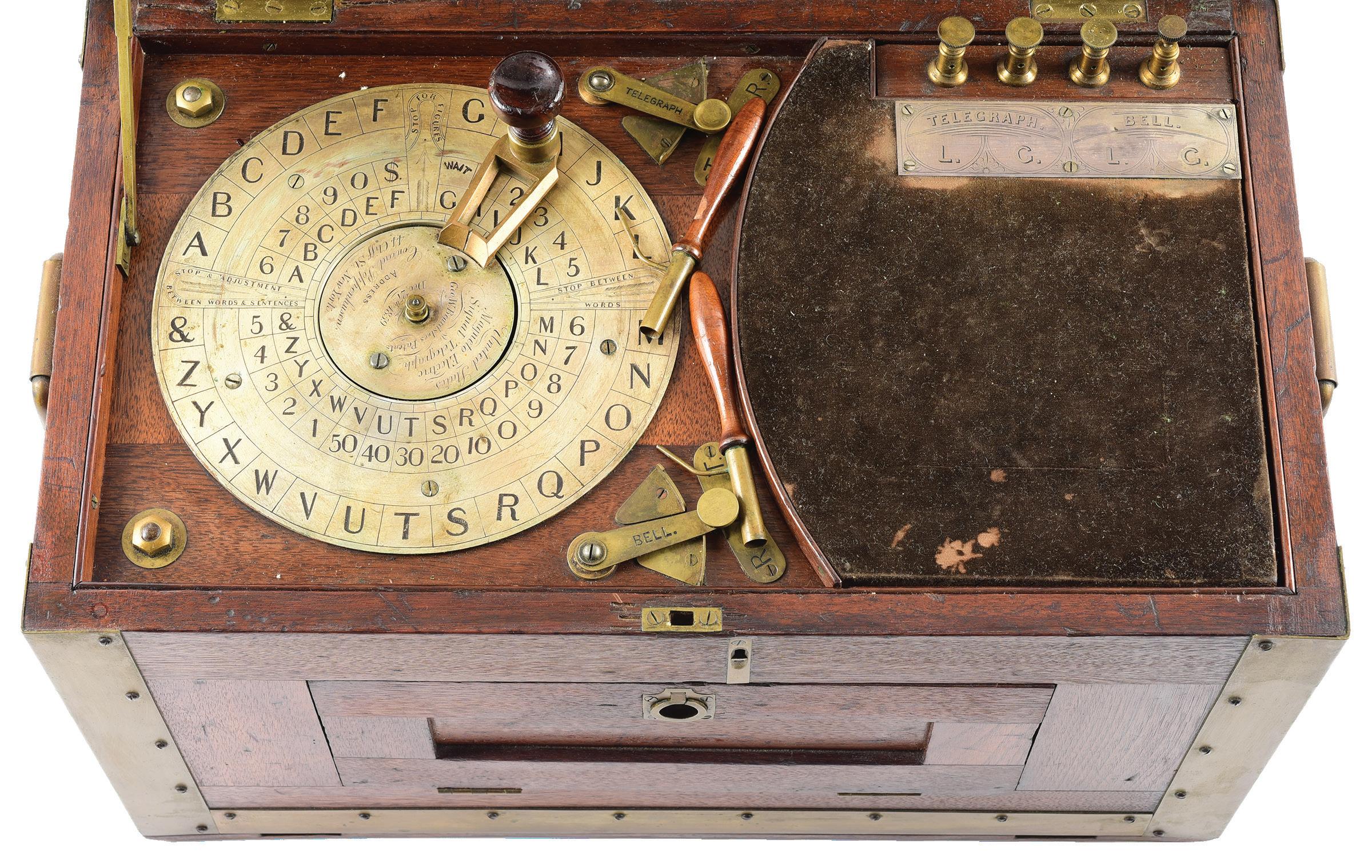




2000 N. READING ROAD | DENVER, PA 17517 | 877-968-8880 | INFO@MORPHYAUCTIONS.COM MORPHYAUCTIONS.COM DECEMBER 16 & 17, 2020
WEAPONS, ARMOR, & MILITARIA
EDGED
at UNC Wilmington.
2. Battle Cry of Freedom by James M. McPherson. Oxford University Press, 1988. The finest single volume of the war era by McPherson, the dean of the current generation of Civil War historians, who took home the Pulitzer Prize for history in 1989.
3. The Civil War in North Carolina by John G. Barrett. Chapel Hill: University of North Carolina Press, 1963. The late Barrett, a long time professor in the Department of History at Virginia Military Institute, wrote what is still considered, 57 years after its publication, the best overall study of the Civil War in the Old North State.
4. Union Combined Operations in the Civil War edited by Craig L. Symonds. New York: Fordham University Press, 2010. Symonds, the compilation of essays by leading scholars of the coastal war covers an often overlooked but key feature of the conflict.
5. Lifeline of the Confederacy: Blockade Running During the Civil War by Stephen R. Wise. Columbia: University of South Carolina Press, 1988. The author did an incredible amount of research both in the United States and








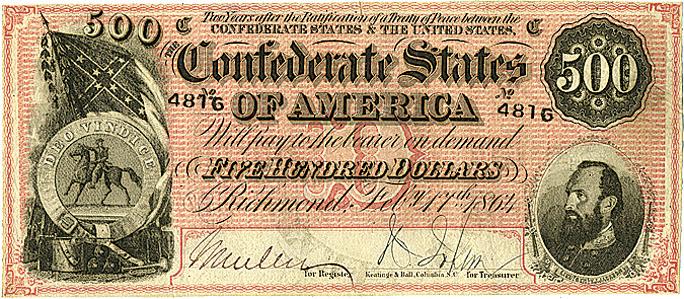
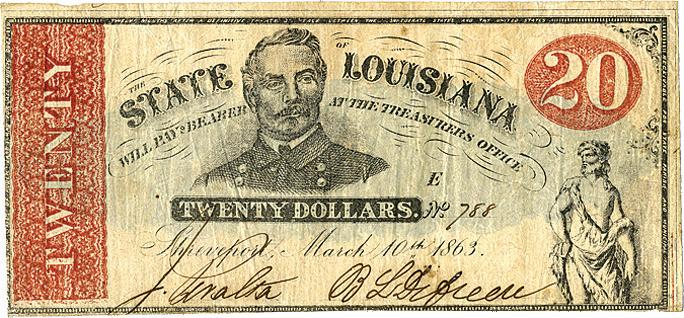
abroad to produce an encompassing scholarly study of Confederate maritime trade with Europe that enabled the Confederacy to sustain its war effort far longer than period pundits predicted.
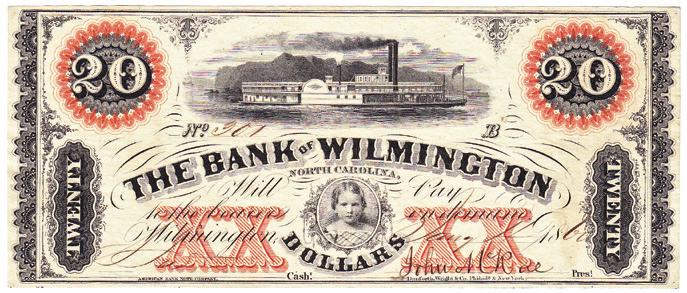

6. Lincoln by David H. Donald. New York: Simon & Schuster, 1995. Arguably the top single volume on America’s greatest president, the man who saved the Union and freed four million enslaved people, by this late preeminent historian.
7. Confederate Goliath: The Battle of Fort Fisher by Rod Gragg. New York: HarperCollins, 1991. Since it would be unethical to list my own work, The Wilmington Campaign: Last Rays of Departing Hope, I will go with Gragg’s gripping account of the fight for Fort Fisher, the main guardian of Wilmington, N.C., the Confederacy’s principal seaport by 1863, and most important city by late the following year.
8. From Cape Charles to Cape Fear: The North Atlantic Blockading Squadron During the Civil War by Robert M. Browning Jr. Tuscaloosa: University of Alabama Press, 1993. Sticking with my keen interest in the coastal war,
From Cape Charles to Cape Fear offers a thorough and detailed study of the challenges the U.S. Navy faced attempting to halt blockade running along the North Carolina coast, especially at Wilmington.
9. A Rebel War Clerk’s Diary by John B. Jones. Philadelphia: J.B. Lippincott & Co., 1866. Jones, a clerk in the Confederate States War Department, provided a peek behind the scenes in his tell-all two volume account of wartime Richmond and President Jefferson Davis’s administration.


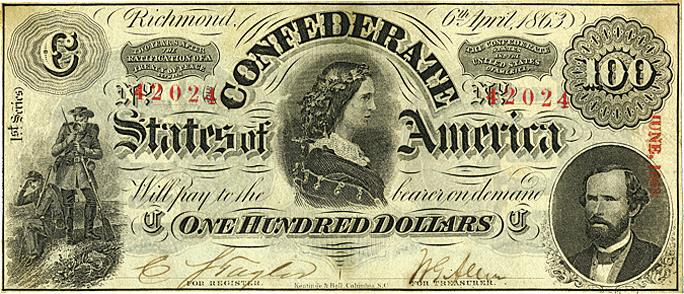
10. This Republic of Suffering: Death and the American Civil War by Drew Gilpin Faust. New York: Alfred A. Knopf, 2008. An intriguing and insightful look at Americans’ views of death, dying, and mourning practices during mid-nineteenth century.
Dr. Chris E. Fonvielle Jr., professor emeritus in the Department of History at UNC Wilmington, is the author of articles and books on North Carolina during the Civil War, including The Wilmington Campaign Last Rays of Departing Hope, Fort Fisher 1865: The Photographs of T.H. O’Sullivan, and To Forge a Thunderbolt: Fort Anderson and the Battle for Wilmington.
Stephanie Hagiwara’s Top Ten Civil War Books



It would be challenging for me to decide which of the many Civil War books I have read are my favorites. Instead, I am listing books that sparked ideas for my column, “Through The Lens.”

1. Tempest at Ox Hill: The Battle of Chantilly by David A. Welker. New York: Da Capo Press, 2001. Welker is the author of A Keystone Rebel and many Civil Warrelated newspaper and magazine articles. Welker became interested in the battle when he realized that it was fought on the site of a local park. At the time, the park lacked interpretive signs, markers, or guide paths. Furthermore, there were no good modern accounts and few firsthand accounts of the battle. Welker stepped up to the challenge of investigating what happened. The battle came to my attention while I was visiting the area. I wanted to find out why generals Philip Kearny and Isaac Ingalls Stevens were killed. It is an interesting, well-researched book.
2. My Cave Life in Vicksburg With Letters of Trial and Travel by Mary Ann Loughborough. New York: D. Appleton and Company, 1864. Loughborough was born in New York. She married a soldier before the War and spent the rest of her life in the South. Under the mistaken belief that it would be safer, Loughborough made the tactical error of moving from Jackson, Miss., to Vicksburg, just before the Siege of Vicksburg began. Amidst Covid related challenges, I decided I needed a reminder to count my blessings by exploring extreme “sheltering in place.” I thought Loughborough did an excellent job recounting the civilian experience during the Siege.
3. The battle of Glorieta: Union victory in the West by Don E. Alberts. College Station: Texas A&M University Press, 2000. When I think of the Battle of Glorieta, the painting depicting Company F, galloping in “columns of twos” down the Santa Fe Trail and leaping over a burning eighteen-foot bridge to continue fighting with the Texans comes to mind. The book details the intricacies of a battle fought through an 11-mile area of valleys, canyons, creeks, wooded ridges, and cultivated fields. Sadly,
the myth of horses being able to leap an eighteen-foot burning span may have been true in spirit but not reality.
4. Aboard the USS Monitor: 1862: The Letters of Acting Paymaster William Frederick Keeler, US Navy, to his wife Anna edited by Robert W. Daly. Annapolis United States Naval Institute Press, 1964. William Keeler was 40 years old when he volunteered for the U.S. Navy. His first assignment was on the USS Monitor. Keeler served on the Monitor from her first voyage to her last. He was fortunately able to survive her sinking. Keeler wrote letters to his wife that paint a vivid picture of life on the ironclad. An enjoyable read.
5. The Chickamauga Campaign: A Mad Irregular Battle: From the Crossing of Tennessee River Through the First Day, August 22 – September 19, 1863 by David A. Powell. El Dorado Hills, CA: Savas Beatie, 2014. Powell is a graduate of the Virginia Military Institute (1983) with a BA in History. For the past decade, Powell’s focus has been on the epic battle of Chickamauga, and he is nationally recognized for his tours of that important battlefield. He has written five books on the battle. This book is the first of his Chickamauga trilogy. I had the pleasure of visiting the battlefield and the Lee and Gordon’s Mills. I like quotes and Powell has ample quotes illuminating the experiences of the soldiers in his books.

6. Cavalry Raids of the Civil War by Col. Robert W. Black. Harrisburg, PA: Stackpole Books, 2004. Col. Black, a highly decorated Ranger veteran of Korea and Vietnam, is a member of the Ranger Hall of Fame. As Black writes, “A successful raid requires a bold concept executed with audacity.” The book includes both Confederate and Union raids. It brought Armstrong’s Raid to my attention.
7. Capital Navy: The Men, Ships, and Operations of the James River Squadron by John M. Coski. El Dorado Hills, CA: Savas Beatie, 2005. Tells the tale of the naval effort to protect the Confederate capital, which in turn, made Richmond a major center of naval construction. Eight days after Fort Sumter, there was a false rumor that the USS Pawnee was coming to seize ammunition. Richmond’s citizens had a
10 Civil War News November 2020
Greg Ton • P.O. Box 9 • Franklin, TN 37065 901-487-5944 • GTon1@aol.com Greg Ton Buying and Selling the Finest Confederate, Obsolete and Southern States Currency Since 1978 GregTonCurrency.com
November 2020
taste of what it would be like to live in a war zone and wanted to be prepared. This enjoyable book was written to make history accessible to general readers with enough detail for the more technically inclined.
8. Destruction and Reconstruction: Personal Experiences of the Late War by Richard Taylor. New York: D. Appleton and Company, 1879. Confederate Gen. Richard Taylor was the only son of President Zachary Taylor, a plantation owner and military historian. Taylor used his knowledge of military history, strategy, and tactics to his advantage in the field. Gen. “Stonewall” Jackson recommended his promotion to Major General. Perhaps having read many military histories, Taylor details his interactions with all ranks, including the famous and how his decisions in the field were made.
9. Mr. Lincoln’s T-Mails: How Abraham Lincoln Used the Telegraph to Win the Civil War by Tom Wheeler. New York: Harper Collins, 2009. Amateur historian Tom Wheeler was the former Chairman of the Federal
Communication Commission (FCC). He is the only person selected to both the Cable Television Hall of Fame and the Wireless Hall of Fame, a fact President Obama joked made him “the Bo Jackson of telecom.” Two events sparked Wheeler’s interest in Lincoln’s telegrams. During the Iraq War he had seen soldiers in the field communicating by email on the evening news and he had the opportunity to see Lincoln’s handwritten notes to be sent by telegraph at the National Archives. Researching
Lincoln’s use of the telecommunications was a natural fit. Lincoln turned the use of the telegraph from a curiosity to a tool enabling two-way conversations from a distance. In doing so, he was able to combine his face to face conversation leadership style with his interest in new technology. Enjoyable book on a lesser known facet of Lincoln.
10. Shea, William. War in the West: Pea Ridge & Prairie Grove. State House/ McWhiney Foundation Press, 2012. William L. Shea holds a Ph.D. from Rice University and is Professor of History at the University
Civil War News
of Arkansas at Monticello. I was not familiar with the War in Arkansas or the role Gen. Franz Sigel played in rallying the German immigrant community to fight for the Union. “’I fights mit Sigel’ became a proud exclamation of German-born soldiers throughout the Federal army.” During the Battle of Pea Ridge, Sigel used his artillery to devastate the Confederates. The Rebels were driven off the field by, “… nearly 10,000 Federal soldiers dressed ranks and aligned on units to their right and left. It was the only time in the Civil War that an entire army—infantry, cavalry, and artillery—was visible in line of battle from flank to lank.” I wish someone took a photo. Sigel’s otherwise less than stellar military career did not diminish his regard in the German community. Towns and parks were named for him and statues were erected in his honor.
Stephanie Hagiwara is the editor for Civil War in Color.com and Civil War in 3D.com. She also writes a column for History in Full Color. com that covers stories of photographs of historical interest from
the 1850’s to the present. Her articles can be found on Facebook, Tumblr and Pinterest.

Joe Bilby’s Top Ten Civil War Books

The following is a list of my current favorite American Civil War books. There are some classics here, as well as more recent works I have enjoyed. I did refrain from posting my own books for self-promotion, as much as I like them

1. James McPherson’s Battle Cry of Freedom, Oxford University Press, is acclaimed, with full justification, as the best one volume history of the Civil War and should be the first read of anyone interested in the conflict. I had the privilege of being on a panel to advise the Princeton Historical Society for the organization’s Civil War exhibit with him, and he was not only brilliant, but a personable guy.
2. Shelby Foote’s The Civil War is a comprehensive three volume history of the conflict. Foote gained an international reputation as a “talking head” on Ken Burns’ documentary on the war. There are, as one modern reviewer stated,
“things wrong with this epic trilogy.” Foote, a Southerner and World War II veteran, was raised in the “Lost Cause” interpretation of the war, and it is reflected here and there in his manuscript. The good outweighs the bad in Foote’s work, however. He stresses the importance of the war in the West, and, as one reviewer noted: “For a Southerner, he is relatively immune to the cult of Bobby Lee.” A respected novelist, Foote displays the novelist’s eye for story and character; the Gettysburg section reads like a Greek tragedy, full of blood and hubris. It is fine literature enveloped in the story of war.
3. Bruce Catton’s work initiated my interest, as well as that of many others, in the Civil War. His Mister Lincoln’s Army, which came out in 1951, was the first book I ever purchased, at a bookstore on Halsey Street, in Newark, N.J., across the street from where the guy used to make “Italian hot dogs” and pull the dogs out of boiling oil with his fingers. The book was the first volume in Catton’s Army of the Potomac Trilogy that included Glory Road and
11
A Stillness at Appomattox. Catton was not a historian by vocation, but a journalist, and that was a vital skill in his wonderful work, which stands until this day as an account of the political and military maneuvering of the Army of the Potomac and its leadership, while at the same time telling the story through the eyes of the common soldier
4. Another iconic book long on my bookshelf is Stephen Sears’ Landscape Turned Red, a masterful account of a single battle dealing with the Battle of Antietam on September 17, 1862, one of the bloodiest in American history, with nearly 23,000 casualties. Sears drew on diaries, memoirs, letters, and official reports to recreate the horror of Antietam on every level on both Union and Confederate sides The New York Times Book Review called it “the best account of the Battle of Antietam.” It is perhaps the best account of a day long Civil War Battle.
5. Eric Wittenberg’s “The Devil’s to Pay”: John Buford at Gettysburg A History and Walking Tour is another great battle study. Whenever I

think of John Buford, I see Sam Elliott, who portrayed the cavalry commander in the movie Gettysburg in a photo standing next to my friend Duncan MacQueen, who played his bugler in the film. Having said that, Wittenberg’s award-winning book nails down the cavalry’s role in the run up to Gettysburg and the important first day’s fighting. No author details the critical delaying tactics engineered by Buford and his cavalry and horse artillery as well as Wittenberg, who uses using a variety of primary sources, many of which have never been used before. Not only do you get a definitive account of Buford’s role in the battle, but also a tour with GPS coordinates.
6. According to one reviewer, Allen Guelzo’s book, Gettysburg: The Last Invasion “enlarges the conventional battle narrative. ...It’s his expansive, rolling storytelling that makes this book so engrossing and sets Guelzo’s Gettysburg apart from the many others.” I agree. I had the opportunity to read the manuscript prior to publication. The book covers the battle comprehensively.
It is a true pleasure to read, even though we all know the outcome already.
7. Kevin Levin’s Searching for Black Confederates: The Civil War’s Most Persistent Myth is the newest volume on my list and deals with claims that have arisen in the past 40 years or so that a number of African Americans served in Rebel ranks voluntarily despite the Confederate government’s prohibition against such service. Levin, using extensive primary sources, does a thorough job in debunking the myth, while noting that the valuable supply services of slave labor was a considerable asset to the Confederate logistical effort.
8. The war did not really end with Lee’s surrender or Juneteenth. The struggle continued at a reduced level after the armed conflict, a subject largely ignored or downplayed for many years. Eric Foner’s Reconstruction is considered by almost everyone to be the best book on the subject. Like David Blight’s Race and Reunion, it is the work to which all scholars of the subject must in some way respond, whether they agree or disagree with Foner’s
conclusions. I have heard him speak and he is an excellent scholar. Today more and more people are looking to the Reconstruction era and the subsequent “Jim Crow” years and how they influenced American history.
9. Dean S. Thomas contributed significantly to the ultimate details of Civil War studies. His four-volume set, Round Ball to Rimfire: A History of Civil War Small Arms Ammunition stands out as the only modern, and most thorough, analysis of the subject. I use it frequently in my own work. His account of the development and use of ammunition used in muskets, rifle muskets, revolvers, and a bevy of carbines is, frankly, priceless to those of us interested in the weapons of the war in action, but also in development.
10. Bell Irvin Wiley was the first serious historian of the life of the common soldier on both sides. His work in two volumes, The Life of Johnny Reb and The Life of Billy Yank, are both thoroughly researched and professionally written studies of the common soldiers. His work is one of those must-read books on the conflict.
Joseph G. Bilby received his BA and MA degrees in history from Seton Hall University and served as a lieutenant in the 1st Infantry Division in 1966–1967. He is Assistant Curator of the New Jersey National Guard and Militia Museum, a freelance writer and historical consultant and author or editor of 21 books and over 400 articles on N.J. and military history and firearms. He is also publications editor for the N.J. Civil War 150 Committee and edited the award winning New Jersey Goes to War. His latest book, New Jersey: A Military History, was published by Westholme Publishing in 2017. He has received an award for contributions to Monmouth County (N.J.) history and an Award of Merit from the N.J. Historical Commission for contributions to the state’s military history.
Noah F. Crawford’s Top Ten Civil War Books
1. For Cause and Comrades: Why Men Fought in the Civil War by James M. McPherson. Oxford University Press, 1997. One of the Civil War’s great historians takes on the audacious task of succinctly articulating what drove men to enlist and fight in the nation’s deadliest conflict. McPherson relies on a massive sampling of soldiers’ letters and diaries, analyzing and categorizing each with a scientific precision. In so doing, McPherson illustrates the deep ideological convictions of the soldiers and their disparate understandings of the causes for which they fought. That McPherson is able to do all of this in a single concise volume is a testament to the historian’s legendary capability to articulate the nuances of history while identifying comprehensible themes.
2. The Golden Book of the Civil War by Charles Flato. American Heritage Publishing Company, 1960. It is rare that a book engages readers as well in 2020 as in 1960. The Golden Book of the Civil War’s use of colorful maps, vibrant images, and a clear, readable prose makes it a truly timeless work. Although intended for “young readers,” the Golden Book has been the “bug” that sparked and kindled the interests of generations of Civil War buffs, and is just as enjoyable to pick off the bookshelf at fifty years on as it was in 1960. Doubtless, this simple, nostalgic pleasure will continue to spark an interest in the Civil War for young people for decades to come.
3. Mr. Lincoln’s Army by Bruce Catton. Doubleday, 1951. Catton tells the stories of Union soldiers as only someone who grew up listening to veterans recount their wartime experiences could. A masterful storyteller, Catton’s narrative utilizes a
12 Civil War News November 2020 Publishers: Send your book(s) for review to: Civil War News 520 Folly Road, Suite 25 PMB 379 Charleston, SC 29412
48 E. Patrick St., Frederick, MD. 301-695-1864 / civilwarmed.org Divided by Conflict. United by Compassion.
prose that borders on the poetic in this first volume of his Army of the Potomac trilogy. The average history buff is unlikely to learn anything new from these books, since many of Catton’s side-stories are now well-known anecdotes in Civil War scholarship. But even the most seasoned scholar will get lost in this page-turning and engaging series. Still need convincing to read the trilogy? The final installment, A Stillness at Appomattox, won both the Pulitzer Prize for History and the National Book Award for Nonfiction in 1954.
4. The Maps of Gettysburg: An Atlas of the Gettysburg Campaign, June 3 – July 13, 1863 by Bradley M. Gottfried. Savas Beatie, 2007 (Revised full color edition, 2010). If you want a minute-by-minute summary of the Battle of Gettysburg in a single volume, look no further. Of the dozens of books I have on Gettysburg, this is the one I always bring with me when I visit the battlefield. The maps balance detail with clarity; the accompanying text is straightforward and succinct. Whether you’re walking the battlefield, reclining in an armchair or in need of an adornment for your living room coffee table, Gottfried’s Maps is always an excellent choice.
5. The Official Military Atlas of the Civil War by George B. Davis, Joseph William Kirkley, and Leslie J. Perry. Barnes and Noble, 2003. The one-stop-shop for the cartographically-inclined Civil War buff. As invaluable as a reference book as it is fun to casually browse, the Official Military Atlas contains hundreds of maps, drawings, and illustrations for seemingly any named battle or skirmish during the conflict. The book’s massive physical size is also a great way to show off to your friends; after all, how many people have a 400page, 10-pound book leaning against their bookshelf?

6. April 1865: The Month That Saved America by Jay Winik. HarperCollins Publishers, 2001. Winik’s monograph drops readers squarely into the chaos of the Civil War’s final 60 days. The book reads like a Shakespearean script, replete with complex characters, rising action, and intensely-dramatic sequences. Winik’s ability to write about the end of a four-year war while still contextualizing
its background and explaining its significance is, itself, a masterful and tremendous accomplishment. When people ask me, “What is one book I need to read on the Civil War?” this is one that I always highly recommend.
7. Manhunt: The 12-Day Chase for Lincoln’s Killer by James L. Swanson. HarperCollins Publishers, 2007. Among the most gripping, page-turning, nonfiction Civil War books ever written. Everyone knows the plot; President Abraham Lincoln is assassinated by actor John Wilkes Booth, who is killed by pursuers in the rural backwoods of Virginia’s tidewater. Swanson transforms this story into a suspenseful and riveting tale that introduces a host of little-known personalities, the controversial investigator Lafayette Baker, the assassin-killer Boston Corbett, and many others. The writing is sensational without sensationalizing the story itself, and is recommended for anyone with an interest in the intersection of historical study and criminology.
8. Gettysburg by Stephen W. Sears. Houghton Mifflin, 2003. Probably the most comprehensive single-volume work on one of military history’s most famous battles. Sears expertly balances the readable with the objective, presenting the facts
of the battle in an engaging, clear prose. It is military history in its truest, and best, form from someone who has long been considered among the best Civil War military historians. Of the thousands of books written about the Battle of Gettysburg, Sears might well have written the very best.
9. 1861: The Civil War Awakening by Adam Goodheart. Knopf Doubleday, 2011. No book contextualizes the Civil War into American history better than 1861. Goodheart paints a portrait of 1860 America that covers politics, society, culture, economy, and military matters in a comprehensible and fascinating narrative that expertly explains the secession crisis and the first months of the war. Along with April 1865, Goodheart’s 1861 is the book I recommend the most to people who want to know more about the Civil War.
10. The Killer Angels by Michael Shaara. McKay, 1974. Yes, I know, the 20th Maine did not get sent to the Union center on July 3rd like they do in Shaara’s novel. Yes, I think Chamberlain embellished his own importance to the Union victory at Gettysburg. If you’re upset about the “historical inaccuracies” of The Killer Angels, you’re missing the point. Shaara was trying to tell a story, not describe an
historic event. It is a story of brotherhood and courage that resonates with the school-age reader as much as a combat veteran. It captures the drama of the war without romanticizing battle and is probably the most acclaimed historical fiction of a military event in American literature. As long as books on the Civil War are selling, The Killer Angels should, and will, remain a classic.
Noah F. Crawford is a graduate student at Virginia Tech. His research focuses on the experiences of refugees in the Shenandoah Valley during the American Civil War.
Wayne Wolf’s Top Ten Civil War Books
While every historian may choose different volumes as their favorites depending on their specific interests, I feel the following ten classic selections are a must read and reference for all serious students of the Civil War.
1. The Civil War: A Narrative by Shelby Foote. This three volume classic Civil War trilogy reads like a Hemmingway novel as Shelby Foote drawls his way through a story that is hard to put down. His volume represents not only a military review but a social, cultural, and political look at the war and the changes brought about by it.
2. Lee’s Lieutenants: A Study in Command by Douglas S. Freeman. Arguably the best and most comprehensive analysis of Lee’s command staff and how their personalities, abilities, and foibles influenced the outcome of the Southern fight for independence.
3. Service with the Sixth Wisconsin Volunteers by Rufus Dawes. This regimental history is the single most important source of information on the Iron Brigade. It formed the basis for the future histories of this famous brigade by Lance Herdegen as well as other historians. A model for what a good regimental study should include.
4. Confederate Blockade Running Through Bermuda 1861–1865: Letters and Cargo Manifests edited by Frank E. Vandiver. This book provides a roadmap for the routing of English made goods to the Confederacy. For blockade running it provides the answers to how, how much, and when these essential materials reached the Southern populace.
5. King Cotton Diplomacy: Foreign Relations of the Confederate States of America by Frank L. Owsley. This is the definitive study of the Confederacy’s years’ long battle to achieve diplomatic recognition from Europe and the resulting
13
November 2020 Civil War News
financial and military support for Southern independence. Primary source material on this effort from Confederate and European archives clearly indicates how cotton was used to spur European recognition, a plan that never succeeded.
6. Hardtack and Coffee: Or the Unwritten Story of Army Life by John O. Billings. A member of the 10th Massachusetts Artillery, Billings, with humor and personal reminiscences, writes of camp life in the Union Army This is a wonderful source for the feelings, anguish, hardships, and emotions of the common soldier.
7. Battle Cry of Freedom by James M. McPherson. An essential overview of the Civil War that should thoroughly acquaint anyone reading it with all the basic military, social, and political aspects of the War. The novice to Civil War historiography would be well served by starting with this one volume history
8. Gettysburg: The Final Invasion by Allan Guelzo. One of the most important battles of the war is meticulously chronicled by Guelzo as he analyses the battle that changed the course of the war. New information and conclusions challenge traditional interpretations including Meade’s contemplated retreat and the role of Gen. Oliver O. Howard.
A superbly written and researched book.
9. Constitutional Problems Under Lincoln by J.G. Randall. One of the preeminent Lincoln scholars, Randall tackles the constitutional issues of emancipation, Habeas Corpus, conscription, confiscation, and the extent of a president’s war powers. Many of these constitutional questions remain unresolved today as presidents have used executive orders to legislate their wishes without Congressional approval.
10. Autobiographical Sketch and Narrative of The War Between the States by Jubal A. Early. Early’s autobiography is essential for understanding the Army of Northern Virginia, its campaigns, personalities and, critical decisions.
Additionally, Early, the unreconstructed keeper of the “Lost Cause’ has penned the ultimate justification for Southern independence. His writing influenced decades of scholars who formed the Revisionist School of Southern historians
Thomas J. Ryan’s Top Ten Civil War Books

Because of my long experience and interest in the gathering and application of intelligence during wartime, a number of my top ten fall into this general category. Others are classics that would make many top ten lists, while
Military Images magazine
still others reflect an interest in biography and fiction. My list includes:
1. Battle Cry of Freedom: The Civil War Era by James M. McPherson. Ballantine Books, 1988. This comprehensive analysis was one of the first books I read about the Civil War. It awakened an interest in that era, and a desire to visit the battlefields.
2. Come Retribution: The Confederate Secret Service and the Assassination of Lincoln by William A. Tidwell with James O. Hall and David Winfred Gaddy. University Press of Mississippi, 1988. At the time this book was published, I was working in the same office at the National Security Agency with one of the authors, David Winfred Gaddy. I purchased a copy from him after he gave a speech about the book in the NSA auditorium. I had an intense interest in the intelligence aspects of this wartime period.
3. The Secret War for the Union: The Untold Story of Military Intelligence in the Civil War by Edwin C. Fishel. Houghton Mifflin Company, 1996. Like Dave Gaddy, Ed Fishel also worked at NSA, and, at the time, I was aware he was working on a book that focused on Northern intelligence operations, just as “Come Retribution” had dealt with Southern intelligence operations. I purchased a copy of this book when it was first published in 1996, and it serves as a foundation for my own extensive investigation and publication of books and articles dealing with Civil War intelligence operations.
4. The Gettysburg Campaign: A Study in Command by Edwin B. Coddington. Charles Scribner’s Sons, 1968. Upon a number of visits to the Gettysburg battlefield in the 1990’s, I became a member of Friends of the National Parks at Gettysburg (later known as the Gettysburg Foundation), and began to acquire publications dealing with the Gettysburg Campaign. One of the first books I read was
Coddington’s, and it was a good launching point for many other books about the battle in that small Pennsylvania town.
5. Gettysburg by Stephen W. Sears. Houghton Mifflin Company, 2003. At the time this book was published, Coddington’s book had become somewhat dated, and Sears’ “Gettysburg” was the perfect update to that battle’s story. In particular, Sears used Fishel’s “The Secret War for the Union” as a source, and, therefore, introduced many people in the Gettysburg community to the intelligence operations conducted by the Army of the Potomac’s Bureau of Military Information. This was a major enhancement of Coddington’s version of the Gettysburg campaign.
6. Grant’s Secret Service: The Intelligence War from Belmont to Appomattox by William B. Feis. University of Nebraska Press, 2002. Undoubtedly, this is one of the best books written about Civil War intelligence operations, and, perhaps, one of the most overlooked Civil War books in general. It is a deeply-researched rendition of how Ulysses S. Grant pioneered employment of intelligence operations out west, and continued to benefit from Col. George H. Sharpe’s Bureau of Military Information when he came east as General in Chief of the Union armies. Grant would be the first to admit that his success in combat operations depended heavily on the amount of information collected and provided to him by his intelligence staff about the disposition, strength, and intentions of the enemy forces.
7. Southern Lady, Yankee Spy: the True Story of Elizabeth Van Lew, A Union Agent in the Heart of the Confederacy by Elizabeth R. Varon. Oxford University Press, 2003. This story brings to light a clandestine operation based in Richmond that provided Lt. Gen. Ulysses S. Grant and his forces a steady flow of information about the strength, movements, and logistics of Gen. Robert E. Lee’s Army of Northern Virginia while it was under siege in the Petersburg/Richmond area in 1864/65. Those conducting these spying operations were pro-Union Southerners and slaves, the latter often acting as messengers
carrying information from inside Richmond to Union positions in the surrounding area. A prominent member of Richmond society, Elizabeth Van Lew, played the key role in orchestrating this espionage ring.
8. Team of Rivals: The Political Genius of Abraham Lincoln by Doris Kearns Goodwin. Simon & Schuster, 2005. One of the best biographies I’ve read about President Abraham Lincoln as seen through the eyes of those who worked closely with him during the Civil War. It captures the personality and talent of these brilliant men, as well as the intrigue inherent in a politically disparate group attempting to work together to save the country from destruction.
9. Cold Mountain: A Novel by Charles Frazier. Atlantic Monthly Press, 1997. This is one of my favorite novels about the Civil War. A story about a Southern soldier who has experienced the trauma of war, and deserts from a hospital after surviving a bloody battle in Virginia. The story revolves around his attempt to make it back to his home in the mountains of western North Carolina and the strange mixture of people he comes in contact with along the way. A brilliant, haunting rendition. Cold Mountain won the National Book Award for Fiction.
10. Major General George H. Sharpe and the Creation of American Military Intelligence in the Civil War by Peter G. Tsouras. Casemate Publishers, 2018. In the field of Civil War biography, this is one of the best I’ve read. Peter Tsouras, who spent his career in military and civilian intelligence operations, brings alive George Sharpe’s role as the Army of the Potomac’s intelligence chief beginning with the 1863 battle at Chancellorsville, through Petersburg/Richmond, to Appomattox. This book portrays the contribution intelligence operations made during the last two years of the war, and, in particular, highlights Grant’s siege and victory over Lee that brought the war to an end.
Thomas J. Ryan’s publications include Lee is Trapped and Must be Taken: Eleven Fateful Days after Gettysburg, July 4-14, 1863 (with co-author Richard R. Schaus). It won the Edwin C. Bearss
14 Civil War News November 2020 Subscribe online at CivilWarNews.com
MI
MilitaryImagesMagazine.com | Facebook.com/MilitaryImages Since 1979, MI has been America’s only publication dedicated to historic photographs of soldiers and sailors. By check payable to: Military Images PO Box 50171 Arlington, VA 22205 Online: MilitaryImagesMagazine.com SUBSCRIBE NOW 4 quarterly issues, $24.95 Want to try before you subscribe? Visit MI’s website to sign up for a 2 issue trial. TRIAL
ISSUES
November 2020
Scholarly Research Award, and the Mahoning Valley Civil War Round Table Scholarship Award. He also authored Spies, Scouts, and Secrets in the Gettysburg Campaign: How the Critical Role of Intelligence Impacted the Outcome of Lee’s Invasion of the North, June-July 1863. It won the Gettysburg Civil War Round Table Distinguished Book Award, and the Bachelder-Coddington Literary Award. He served 38 years in the United States Army and the U.S. Department of Defense in various intelligence-related capacities. He and his wife live in Bethany Beach, Delaware.
Chris Kolakowski’s
Top Five Civil War Books
1. The American Heritage Book of the Civil War by Bruce Catton. American Heritage Publishing Co., 1960. A classic, and for many people, myself included, their introduction to the War. The lavish illustrations, maps, and rich text make for a powerful survey of the war.
2. Grant Moves South/Grant Takes Command by Bruce Catton. Boston: Little, Brown and Company, 1969. One of the finest Civil War storytellers at his best. This two-volume discussion of Grant combines vivid storytelling with penetrating analysis.
3. Personal Memoirs of U.S. Grant by Ulysses S. Grant. Charles L. Webster and Company, 1885. It has been hailed as some of the greatest military writing since Caesar’s Commentaries, and I agree.
4. To Appomattox by Burke Davis. Rinehart & Company, 1959. Simply one of the most vivid accounts of the fall of Richmond, and the war in Virginia’s last week.
5. Mother, May You Never See the Sights I Have Seen: The Fifty-Seventh Massachusetts Veteran Volunteers in the Army of the Potomac,


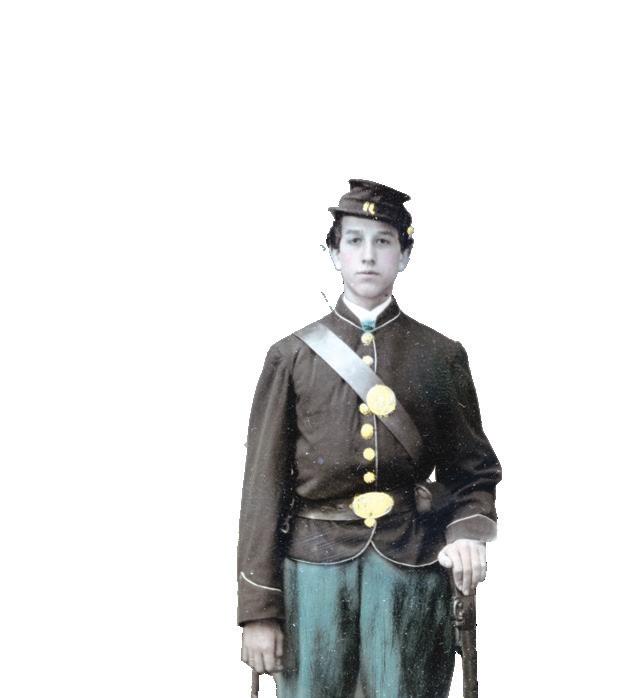
1864–1865 by Warren Wilkinson. New York: Harper & Row, 1990. If someone wants an exemplar of a readable regimental history, this is it. Wilkinson gives you a sense of the men in the unit, plus what they did, while maintaining a great narrative flow.
All of these vividly brought the war to life in some way and offered readable and accessible accounts.
Christopher L. Kolakowski has spent his career interpreting and preserving American military history. He is the author of many articles and four books on the Civil War and World War II. He is also the Chief Historian of Emerging Civil War, and a reviewer and contributor to the Air Force Journal of Indo-Pacific Studies. Chris lives in Madison, Wisconsin.
Gould Hagler’s Top Ten Civil War Books
Some 100,000 books have been written on the much-studied American Civil War. My top ten? How can I decide, even from the tiny fraction I have read? I can’t and I won’t try. So let’s just call this exercise “Ten Books, Pulled from my Bookshelves, on Various Aspects of the War, that I Find Interesting and Useful.”
I won’t assign numbers to the list. That could be taken to imply a ranking, which I can’t do even from the small sample I have at hand. No numbers are necessary. The reader can count the entries to make sure they total ten. So here they are, in no particular order, starting with two reference works.

In 1979 I received, as a gift, The Civil War Day by Day: An Almanac 1861–1865 by E.B. Long with Barbara Long. Doubleday & Co., 1971. After nearly four decades of use this hardback finally fell apart. I replaced it with the Da Capo edition, which is already beginning to show signs of wear. This work synopsizes events from Nov. 6, 1860 to Aug. 20, 1866. The book also contains a “Special Studies” section with useful data of various kinds and a very thorough index.
The second reference work, Historical Times Illustrated Encyclopedia of the Civil War edited by Patricia L. Faust. Harper and Row, 1986, paperback edition 1991, has entries on people, battles, places, ships, military units, military terms, and various other things too numerous to mention.
Let’s move to a different genre, biography, with one classic work
Civil War News
and one more recent. R.E. Lee by Douglas Southall Freeman. Charles Scribner’s Sons, 1945 is obviously the classic, a four-volume masterpiece. I own this, plus Freeman’s other multi-volume works, Lee’s Lieutenants and George Washington. A total of 15 volumes, all the more remarkable in that Freeman wrote these in his spare time, so to speak. His day job was editor of the Richmond News Leader Stonewall Jackson: The Man, the Soldier, the Legend by James I. Robertson Jr., MacMillan Publishing USA, 1997, is a fine, comprehensive work on one of the war’s most interesting characters.
Make Me a Map of the Valley: The Civil War Journal of Stonewall Jackson’s Topographer (Jedediah Hotchkiss, edited by Archie P. McDonald, Southern Methodist University Press, 1973) is the first primary source I will include. A New Yorker by birth and a Virginian by choice, Hotchkiss made the maps that allowed Jackson to maneuver and fight with a sound understanding of the terrain. Two things stand out in my mind from reading the book years ago. One is Hotchkiss’s wonderful vignette describing his Calvinist leader at prayer; the second is the interesting fact that Jackson ordered up some maps of Pennsylvania in February 1863, four months before the beginning of the Gettysburg Campaign.
Next are the works by E. Porter Alexander, Military Memoirs of a Confederate: A Critical Narrative, Da Capo Press, 1993, first published by Charles Scribner’s Sons, 1907, and Fighting for the Confederacy edited by Gary W. Gallagher, The University of North Carolina Press, 1989. Alexander was a highly competent military professional, a superb writer and an insightful analyst. I encourage CWN readers to read ‘em both.
The Personal Memoirs of U.S. Grant (Library of America, 1990, first published by Charles L. Webster & Company, two volumes, 1885 and 1886) and Joseph E. Johnston’s Narrative of Operations During the Civil War (Da Capo Press, 1959, first published by D. Appleton & Co., 1874) are two of the many accounts written by top-level commanders. These are always of interest to students of the war. It’s hard to believe, but works of this nature can have a self-serving component. It is sometimes fascinating to compare the commanders’ accounts with information from other sources.
Last we come to A Campaign of Giants: The Battle for Petersburg,
Volume 1, From the Crossing of the James to the Crater by A. Wilson Greene. The University of North Carolina Press, 2018. This is the first of three volumes on the Petersburg Campaign. The award-winning work takes us from the initial movement across the James River to the famous effort to blast the Confederate defensive line from underneath. Greene’s work is an all-inclusive, well-structured and insightful history of the Federals’ mammoth effort to break Lee’s army, and of the Confederates’ resolute defense. I am looking forward to reading the next two volumes.
Gould Hagler is a retired lobbyist living in Dunwoody, Ga. He is a past president of the Atlanta Civil War Round Table and the author of Georgia’s Confederate Monuments: In Honor of a Fallen Nation, published by Mercer University Press in 2014. Hagler speaks frequently on this topic and others related to different aspects of the Civil War and has been a regular contributor to CWN since 2016. He can be reached at gould.hagler@gmail.com.
Gordon Jones’ Top Ten Civil War Books
I consider these books favorites because they have exerted the greatest influence on the evolution of my understanding of the Civil War. I have arranged them
in the order I first encountered them from childhood to present.
1. The Golden Book of the Civil War by Bruce Catton and Charles Flato. American Heritage Publishing Company, 1961. This is the one with the colorful “birdseye” battle maps populated with the little soldier figures. As a kid, this was the book that really fired up my imagination. Seems like it had the same effect on a lot of Civil Warriors who came along during the Centennial.
2. The Killer Angels by Michael Shaara. Mackay Publications, 1974. There is no other book, fact or fiction, that so perfectly captures the intense human drama of the Civil War with all its conflicting emotions and uncertainty.
3. “Co. Aytch:” Maury Grays, First Tennessee Regiment, or A Side Show of the Big Show by Sam R. Watkins. Cumberland Presbyterian Publishing House, 1882. When you go to the “Dead Angle” at Kennesaw Mountain, take this book and read aloud Watkins’s recollections of what he saw and did that day. You will feel it. You will weep.
4. The Life of Johnny Reb: The Common Soldier of the Confederacy and The Life of Billy Yank: The Common Soldier of the Union by Bell I. Wiley. Bobbs-Merrill
15
For information: Call (770) 362-8671 or (716) 574-0465 Email: anita@ americandigger.com Both shows Open to Public: Saturday: 9-5 Sunday: 9-3 Dealer Setup: Friday 1-7 PM Saturday 7-9 AM americandigger.com/american-digger-events/ Omar Shrine Temple 176 Patriots Point Rd. Mt Pleasant, SC January 2-3, 2021 Lowcountry Antique Militaria & Americana Show July 24-25, 2021 Camp Jordan Arena 323 Camp Jordan Pkwy. East Ridge, TN Chattanooga Antique Militaria & Americana Show Swords & Knives • Antique Firearms Dug & Non-dug Relics • Civilian Items & Jewelry Bottles & Stone Artifacts Art, Photos, & Books • Militaria & Americana All Eras to WWII • Metal Detectors Awards & Prizes Both shows feature all this and more: Display!Trade! Buy!Sell! AAABBB AAABBB American Digger Magazine now hosts two great shows annually! Digital Issues of CWN are available by subscription alone or with print plus archives from 2012 at CivilWarNews.com
Co.,
1943, 1952. Start your study of Civil War soldiers with Bell Wiley. Outdated in some respects, but the wealth of first-hand accounts and quotations never get old or cease to entertain.
5. Corporal Si Klegg and His Pard: How They Lived and Talked, and What They Did and Suffered, While Fighting for the Flag by Wilbur F. Hinman. N.G. Hamilton and Co., 1889. Fiction, yes, and so funny—but also the quintessential American story of soldiering in the Civil War.
6. Battle Cry of Freedom: The Civil War Era by James M. McPherson. Oxford University Books, 1988. Hands down, still the best single-volume synthesis of the war and its causes.
7. Two Great Rebel Armies: An Essay in Confederate Military History by Richard H. McMurry. University of North Carolina Press, 1989. A concise and thought-provoking “big picture” essay on why Confederate armies did well in Virginia and but fared poorly everywhere else. If you’ve never read it, it’s a game-changer.
8. Decision in the West: The Atlanta Campaign of 1864 by Albert Castel. University Press of Kansas, 1992. The
classic military history interwoven with the political context that made Union victory at Atlanta decisive. A great read, written in the present tense.
9. What the Yankees Did to Us: Sherman’s Bombardment and Wrecking of Atlanta by Stephen Davis. Mercer University Press, 2012. Takes you back into the original sources to finally bust those romantic Gone With the Wind—era myths about “the burning” of Atlanta. The best-researched and most realistic assessment of Sherman yet written.
10. Remembering the Civil War: Reunion and the Limits of Reconciliation by Caroline E. Janney. University of North Carolina Press, 2014. Read this in conjunction with David W. Blight’s Race and Reunion (2001). Then ask yourself: has the United States ever fully reconciled?
Dr. Gordon L. Jones is Senior Military Historian and Curator at the Atlanta History Center, where he has worked since 1991. Gordon is responsible for one of the largest collections of Civil War artifacts in the nation. He curated the permanent exhibition Turning Point: The American Civil War (1996) and is the author of Confederate
Odyssey: The George W. Wray Jr. Collection (2015.) Gordon recently completed a five-year project to research, restore, and exhibit The Battle of Atlanta cyclorama painting and the locomotive Texas
John D. Fowler’s

Top Ten Civil War Books
Choosing the top ten books in Civil War historiography is a daunting task. Well over 50,000 books have been published on the subject, and each year nearly a hundred more join the ever-expanding library. As a professor who has focused on the Civil War Era for the last two decades, my choices for the “top ten” are perhaps different than most students of the war. I gauge the value of these volumes by how they changed the field of Civil War history as well as how they can be utilized in the classroom.
I do mention a few more than ten, which may seem like cheating. I offer the excuse that those listed are either connected to other works or are optional choices. Additionally, many books may seem dated. I offer no apology; instead, I point out that they have stood the test of time and remain important to the field. Finally, my choices are “military heavy.” Again, I will not apologize for this. While I applaud the many excellent works that cover the various non-military aspects of the war, such as the home front, the role of women, the African American experience, diplomacy, etc., in the end, I believe the war was decided on the battlefield. Thus, my interests and research have led me to those battlefields.
To begin, the best overall studies of the Civil War belong to renowned historian James McPherson. His Battle Cry of Freedom: The Civil War Era (Oxford University Press, 1988) is universally considered the best single volume on the Civil War. It won the 1989 Pulitzer Prize in History and still remains a must read. In the work, McPherson deftly covers all aspects of the war and posits the critical moments when victory could have been claimed by either side. The book’s only limitation is that it stops in 1865, failing to cover Reconstruction. However, his equally phenomenal Ordeal by Fire: The Civil War and Reconstruction (Alfred A. Knopf, 1982) covers both the war and its aftermath, making it an ideal choice as an introduction to America’s great calamity. As of this date, both works remain at the pinnacle of one-volume studies, and both serve as popular textbooks in most university level Civil War classes.
After gaining an overall knowledge of the war, readers should move on to a detailed look at secession and the Confederacy. While many excellent one-volume studies of the Confederacy have been published, Emory Thomas’s The Confederate Nation, 1861–1865 (Harper Collins, 1979) remains the best introduction to the subject. Thomas’s work builds on his earlier The Confederacy as a Revolutionary Experience (Prentice-Hall, 1970), in which he posits the now widely accepted thesis that the Confederacy was a counter-Revolution against the modernization of Northern society.
Next, it is critical that students of the Civil War understand the motivations of the men who waged the battles that ultimately decided the fate of two nations.
Legendary Civil War scholar Bell Wiley’s two seminal works, The Life of Johnny Reb: The Common Soldier of the Confederacy (Bobbs-Merrill, 1943) and The Life of Billy Yank: The Common Soldier of the Union (BobbsMerrill, 1952) blazed the trail in their analysis of the life of the ordinary Civil War soldier. Both deserve to be included on this list for their insights and wealth of information. Wiley’s student, a renowned Civil War scholar in his own right, James I. Robertson, used material collected by both Wiley and himself to create the one-volume Soldiers, Blue and Gray (University of South Carolina Press, 1998), an excellent book for Civil War classes.
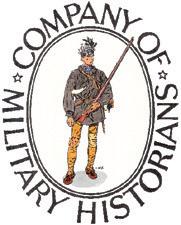
James McPherson claims another spot for his groundbreaking For Cause and Comrades:
Why Men Fought in the Civil War (Oxford University Press, 1998), which delves into the motivation of Civil War Era soldiers based on the examination of tens of thousands of letters written by soldiers to their families. McPherson finds that differing conceptions of “liberty” drove the men of both sides and of different races into the hellish conflict. For those wishing a concise introduction to McPherson’s ideas, a slim volume covering his early research and thesis can be found in What They Fought For, 1861–1865 (Oxford University Press, 1995), developed from McPherson’s research presentation at the Walter Lynn Fleming lecture series as he completed For Cause and Comrades. No list would be complete without the inclusion of works focused on the battles, campaigns, and armies of the Civil War.

Thomas Connelly’s two-volume study of the Army of Tennessee, Army of the Heartland (Louisiana State University Press, 1967) and
Autumn of Glory (Louisiana State University Press, 1971) is still the standard by which Civil War military studies are measured. The work is meticulously researched and thorough. Moreover, Connelly’s determination to focus the outcome of the war on the Western Theater forever changed the Eastern-centric view that had dominated Civil War scholarship until that point. While the debate over where the Civil War was won or lost continues, Connelly gave Western Theater advocates their first solid study.
Naturally, biographies of celebrated individuals who fought and led during the war have been popular in Civil War research and writing. The best of these is still Douglas Southall Freeman’s four-volume study of Robert E. Lee, R.E. Lee: A Biography (Charles Scribner’s Sons, 193435). This comprehensive work covers the man and the general in exhaustive detail. While Lee is not a popular figure in today’s culture because of his connection with the Confederacy, a former generation awarded Freeman the Pulitzer Prize for this work in 1935. While it is a hagiographical tribute in many ways, it nonetheless sets a scholarly standard for research and writing in the field. Equally important was Freeman’s critically acclaimed three-volume Lee’s Lieutenants: A Study in Command (Charles Scribner’s Sons, 1942–1944), published during the height of the Second World War. Freeman deftly weaves biography with military actions at the strategic and tactical levels to produce a classic that demonstrates how a Civil War army, perhaps the best led of the war, actually functioned. This military study has yet to be surpassed.
The final book on my list is not for scholars or for wellread students of the Civil War Era. The American Heritage Picture History of the Civil War (American Heritage, 1960) by Bruce Catton is for those just beginning to learn the history of America’s greatest tragedy. This volume captured the imagination of a generation. It infused zeal into the Civil War Centennial and awakened enthusiasm for everything associated with the war, from battle reenactments to battlefield preservation. It remains an outstanding and lavishly illustrated overview of the war for young readers. Who can forget those excellent battle map paintings by David Greenspan? Many spent hours poring over those maps as a child, imagining the battles and tracing the course of the fighting. Unfortunately, books for young readers are not
16 Civil War News November 2020
CivilWarShop.com Established 1981 Buy – Sell – Trade Certified Appraisal Services Life Member, Company of Military Historians International Society of Appraisers Life Member, NC Division, SCV Federal Firearms Licensed Dealer 3910 US Hwy. 70 East • New Bern, NC 28560 (252) 636-3039 • civilwarshop@gmail.com
generally as well written or as beautifully illustrated today. These are certainly not all the great books on the conflict, but these have proven to be among the most consequential in the field of Civil War historiography and the ones that influenced me the most to become a Civil War historian.
John D. Fowler is the author of several books and articles on the Civil War Era. He is currently a Professor of History at Dalton State College.
Ronald S. Coddington’s Top Ten Civil War Books
1. Four Years in Secessia by Junius Henri Browne. O.D. Case and Company, 1865. A war correspondent for the New York Tribune, Browne fell into enemy hands near Vicksburg, Miss., in May 1863. Treated as a combatant, Browne was hauled off to prison. Thus began a 20-month odyssey that ended with his escape from the camp at Salisbury, N.C. Browne detailed his experience only months after his return from captivity. My favorite line describes the timeless plight of reporters: “War Correspondence is a most thankless office. The Correspondent may do, and dare, and suffer; but who yields him credit? If he die in the service by disease or casualty, it is thought and declared by many that he had no business there. The officers frequently dislike him, because they have not received what they conceive to be their meed of praise; and the people do not appreciate him.”
2. Out of the Briars by Alexander Herritage Newton. The A.M.E. Book Concern, 1910. Newton shares his struggles as a black man in 19th century America. Born in North Carolina to a free mother and an enslaved father, he left the Tar Heel State for the North in 1857. Three years later, he rejoiced at the election of Lincoln and welcomed war. “I had no ill feeling for the Southern white people, some of them had been my best friends; but this was not a personal matter, but a question of national issue, involving the welfare of millions, and my soul was on fire for the question, Slavery or No Slavery, to be forever settled and that too as soon as possible.” Newton eventually served as
quartermaster sergeant in the 29th Connecticut Infantry. He concludes his autobiography with these words: “The Civil War was the mighty struggle of the White Race and that the struggle of the Colored Race was yet in the future.”
3. Three Weeks at Gettysburg by Georgeanna Woolsey. Anson D.F. Randolph,1863. Woolsey details her experience as a nurse during the immediate aftermath of Gettysburg. She captures the humanitarian crisis that unfolded, as in this description, “For many days our dead were simply wrapped in blankets and put into the earth. It is a soldierly way after all, of lying wrapped in the old war-worn blanket, the little dust returned to dust.” Her description of a wounded Confederate: Georgy “found him lying on his blanket stretched over the straw—a fair-haired, blueeyed lieutenant, a face innocent enough for one of our own New England boys. I could not think of him as a rebel, he was too near heaven for that.” Woolsey’s story is representative of those nurses who served in battlefield hospitals in the North and South. The Sanitary Commission sold copies of this thin volume as a fundraiser.
4. Seven Years of a Sailor’s Life by George Edward Clark. Adams & Co., 1867. “Yankee Ned,” as he billed himself, describes his journey as a rebellious teenager who skipped out on an apprenticeship to travel the high seas as a merchant sailor along the coast of Africa and elsewhere— the stuff of boyhood dreams. When war comes, Ned joins the Union Navy as a seaman on the warship Gemsbok. His descriptions of life aboard a military vessel along the South Carolina coast are vivid and memorable: “The wind was at the westward, cold and strong; we opened fire on the fort, and the loaders and spongers stripped to the waist, and worked like men.” Ned captures the overlooked trials and tribulations of Bluejackets along the Southern Blockade.
5. Letters of a Family by Georgeanna Muirson Woolsey Bacon and Eliza Newton Woolsey Howland. Privately printed, 1899. Decades after the war, the Woolsey sisters, Georgeanna “Georgy” and Eliza, told their story in this two-volume
set. They documented the challenging path to nursing in the Union army during the early part of the Civil War: Disorganization. Little training or support. Hostile male physicians who thwarted them at every turn. These obstacles did not discourage the Woolseys. Born to a Northern father who made his fortune in sugar refineries and a Southern mother who despised slavery, this narrative reveals American society’s larger struggles. Georgy noted, “Some of the bravest women I have ever known were among this first company of army nurses. They saw at once the position of affairs, the attitude assumed by the surgeons and the wall against which they were expected to break and scatter; and they set themselves to undermine the whole thing.” The book documents how they tore the wall down, and much more.
6. Reminiscences of Service with Colored Troops in the Army of the Cumberland, 1863–65 by Thomas J. Morgan. Rhode Island Soldiers and Sailors Historical Society, 1885. Thomas Jefferson Morgan put his role as colonel of a U.S. colored infantry regiment into context of the larger fight for freedom and liberty by African Americans in this memoir. A college student in Indiana when the war began, Morgan shares many similarities with two other young white men who became colonels: Robert Gould Shaw of the 54th Massachusetts Infantry and Charles W. Fribley of the 8th U.S. Colored Infantry. All three believed in universal equality, challenged Union leaders reluctant to give black soldiers an opportunity to fight, and believed their soldiers were equal to any in the Union. Shaw and Fribley did not live to see the end of the conflict. Morgan did, and his story reflects the pride he felt in his troops.
7. History of the Twelfth Regiment New Hampshire Volunteers by Asa W. Bartlett. Ira C. Evans, 1897. There are many ways to rank a successful regimental history. I look for accounts that reveal the humanity of its officers and enlisted men. A number of volumes in this genre deliver, and so my short list is long. My favorite is this 749page tribute to “The New Hampshire Mountaineers” of the Granite State’s 12th Infantry. Author Asa W.
Bartlett, who served as one of the regiment’s captains, breathes life into these longpassed soldiers with a skilled pen and a treasure trove of anecdotes. The result is meeting men the likes of Howard Taylor, the “Little Corporal,” who wanted to join the army so badly that he wore extra inner soles and heeled boots to boost his height, Samuel Noyes, the fragile regimental mail carrier wounded at Gettysburg, the injured Sgt. Thomas Osgood who struck up a conversation about the war with a seriously wounded young Confederate during an ambulance ride, and many more.
8. Life and Deeds of John McGregor by Jeremiah S. McGregor. Press of the Fry Brothers, 1886. Leadership during the Civil War is most often discussed through the lens of generals and politicians. The rich literature of the war years has given us numerous accounts of men in lower ranks and women who stood up in time of crisis. Though they did not achieve the prominence of a Grant or Lee, their stories are no less compelling. One of my favorite reads is John McGregor, surgeon of the 3rd Connecticut Infantry. His war experience begins here:
“When a man in the doctor’s position, was ready and willing to leave his home, his friends, his large practice, and almost everything which makes life desirable, to enter the army, and to be subjected to all the sufferings and hardships of war, others were ready to follow his example. He never would encourage men to do what he dared not do himself. His motto was, “Men, follow!’” And so they did.
9. Sketch of Life and Labors of Miss Catherine S. Lawrence by Catherine S. Lawrence. Anonymous publisher, 1893. “Kitt” Lawrence viewed her life story in three grand chapters, the activist, the Civil War nurse, and the philanthropist. Outspoken, aggressive, and unabashedly honest, she tells her story in a stream of consciousness style with almost no specific dates mentioned.
130 years after the book’s publication, she emerges as a representative of a generation of reform-minded women who took on the establishment. Women’s rights, slavery, temperance, and religious intolerance were on her radar. She even took on
the formidable Union army’s Chief of Nurses Dorothea Dix, who punished Lawrence with assignments in the least desirable military hospitals. Dix’s effective banishment placed Lawrence in a position to meet and adopt a displaced mixed-race slave girl, thus began her journey as a philanthropist.
10. The Whip, Hoe, and Sword by George H. Hepworth. Walker, Wise, and Company, 1864. Non-fiction Civil War books published during the conflict are unique drafts of history written with a sense of urgency and no clue of when hostilities might end. My short list includes volumes by chaplains the likes of Rhode Island’s Augustus Woodbury, whose A Narrative of the Campaign of the First Rhode Island Regiment in the Spring and Summer of 1861 landed in bookstores in 1862, and, in 1863, the Campaign from Texas to Maryland, with the Battle of Fredericksburg by Nicholas A. Davis of the 4th Texas Infantry. My number one pick is the book by Chaplain Hepworth of the 47th Massachusetts Infantry whose notes about enlisted men, Southern planters, and a host of others reflect a keen observer with a gift for capturing nuance.
Ronald S. Coddington is a collector of Civil War era cartes de visite. He was the columnist for CWN’s “Faces of War” from 20002016, and has written for the New York Times Disunion series and a host of other publications. Ron is currently Editor and Publisher of Military Images magazine. He is also the author of the Faces series of books published by The Johns Hopkins University Press. His fifth book in the series, Faces of Civil War Nurses, has just been released. A native of New Jersey and graduate of the University of Georgia, he lives with his wife, Anne, in Arlington, Va.
Harold Holzer’s Top Ten Civil War Books
1. Battle Cry of Freedom: The Civil War Era by James McPherson. Oxford University Press, 1988. Judicious, authoritative, both sweeping and detailed, objective yet opinionated, and plenty “woke,” too, it masterfully addresses military history and civilian politics, the battlefield and home front, plus the horrors of slavery. This tour de force is the first book I turn to, both
17
November 2020 Civil War News
for fact-checking and sheer pleasure. It’s hard to believe that it was published as the sixth in an Oxford series on American history, with the first of its 300 pages devoted to the antebellum period: the longest prologue in Civil War literature.
2. Personal Memoirs of Ulysses S. Grant edited by John F. Marszalek. Originally published by Charles L. Webster, 1885; annotated reprint from Harvard University Press, 2018. Still the best first-hand Civil War autobiography: both reasoned and reasonable, and pugnacious without an iota of grudge. This masterwork is now available in a fine new annotated edition by John Marszalek, the editor who completed the multi-volume Grant Papers. It’s still impossible to separate this book from the heart-wrenching story of its creation: Grant heroically completed it in his dying days, just before succumbing to a painful cancer, and its triumphant success provided financial security for his impoverished family. One only wishes the old general had lived to write a sequel about his presidency.
3. American Heritage Picture History of the Civil War by Bruce Catton. American Heritage and Doubleday, 1960. This is the book that stirred my lifelong interest in Lincoln and Civil War photography, art, and iconography, and I am always amazed, yet in another sense,
unsurprised, to discover how many other historians got hold of this book as youngsters and stayed emotionally attached to the subject of the Civil War forever after. Beautifully designed and produced, sharply written, overflowing with color images (a rarity in 1960), and boasting the first Civil War maps I ever understood, this work made an enormous, indelible, almost tactile impression, and I still treasure both the memory and the book.
4. The Civil War Day by Day: An Almanac, 1861–1865 by E.B. Long. Doubleday, 1971. Perhaps the most breathtaking feat of Civil War research and synthesis ever published, no one can possibly write about the conflict without having this almanac within easy reach. It not only authoritatively captures, in a nutshell, simultaneous events in both the East and West, Washington and Richmond, it concludes with a thick appendix of statistics worth their weight in gold. I still wonder how “Pete” Long did it, but I do know I’ve gone through three copies during my 45-year career, reducing the first pair to tatters through constant use. A true classic.
5. Historical Times Illustrated Encyclopedia of the Civil War edited by Patricia L. Faust. HarperCollins, 1991. Brimming with swell-written, informed, highly individualized entries by terrific scholars, this volume is thick enough to incorporate all the
key characters and events, but compact enough to be lifted from the shelves without risking spinal injury: neither too big nor too small, it’s just right. I also use David and Jeanne Heidler’s doorstopper Encyclopedia of the American Civil War, and Richard Current’s Encyclopedia of the Confederacy (to which I contributed), but Faust’s remains the most accessible, the easiest to use, and the most pleasurable to read. Her early death was a great loss to the field.
6. Lincoln and His Generals by T. Harry Williams. Knopf, 1952 and Lincoln and His Admirals by Craig L. Symonds. Oxford, 2008. OK, this is an unapologetic twofer, and the only Lincoln books I’ve put on my list (because that subject requires a separate top-ten, Mr. Melton!). These works fully illuminate Lincoln’s growth as a military strategist and manager, on land and sea alike, perhaps his most remarkable achievement of self-education, and one that helped save a nation. James McPherson’s 2008 Tried by War came to supplant Williams, but I read the latter when I was a teenager, and it left a big impression. For his part, Symonds opened a new window, or a porthole, onto the long-neglected subject of the naval war, bringing it, and the admiral-in-chief, vividly to life. Lincoln once said he knew little about ships, but this book shows how quickly he
caught on.
7. George B. McClellan: The Young Napoleon, Ticknor & Fields, 1988, and The Civil War Papers of George B. McClellan both by Stephen Sears. Houghton Mifflin, 1989. These books cover all there is to know, and lament, about the Union’s most promising but infuriating general. The biography and the letters, together, unflinchingly reveal an over-confident, over-cautious, perpetually jealous, yet undeniably gifted McClellan. Recent revisionism aside, Little Mac will likely never escape the reputational abyss to which Sears so “searingly” condemned him. McClellan may have suffered, as Lincoln put it, from “the slows,” but these books move with lightning speed. Great reads.
8. Mary Chesnut’s Civil War edited by C. Vann Woodward. Yale University Press, 1981. I have stressed interpretive history and biography on my list, but how can one skip over Grant’s memoirs, or the greatest wartime diary of them all: Mrs. Chesnut’s? Woodward not only rescued this treasure trove from oblivion, but packaged it brilliantly. No one can begin to understand privileged white Southern “womanhood,” complacent white supremacy, the tone-deaf arrogance of the Confederate elite, or the blithe acceptance of perpetually cruel enslavement without confronting these riveting entries.
a youngster, and was enthralled as well by The Red Badge of Courage and (he admitted sheepishly) GWTW But Shaara wrote characters, battles, scenery, even angina attacks, with such truth and panache that this novel more than deserves a place among the classics. Reading this masterpiece, one could almost believe the discarded theory that the war began and ended at Gettysburg. An influential book? Well, Joshua Lawrence Chamberlin, for one, surely owes Shaara his current status as one of the great Union heroes. That’s no small feat for a novel.
Harold Holzer, Chairman of the Lincoln Forum, is the author, coauthor, or editor of 54 books. He earned a 2008 National Humanities Medal and a 2015 Lincoln Prize for Lincoln and the Power of the Press.
Robert M. Browning Jr.’s Top Ten Civil War Books
In Alphabetical Order:
1. Why the South Lost the Civil War by Richard E. Beringer, Herman Hattaway, Archer Jones, and William N. Still Jr. The University of Georgia Press, 1986. In contrast to Owsley’s book (listed below), this is a more modern and an alternate view of the reasons for the South’s demise.
Monument Replicas
Monument Replicas
Valley Arts Publishing features superb signed and numbered, limited edition Civil War Fine Art landscapes prints and Battlefield Monument Replicas created by sculptor Gary Casteel. www.valleyartsgallery.com - to purchase, or purchase at our gallery at 789 Baltimore St., Gettysburg, PA 17325 717-387-0461 – garycasteel2018@gmail.com
“The one and only gallery for Civil War monument replicas by noted historical artist Gary Casteel”
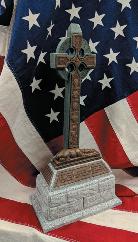
Made in the United States
9. The Coming Fury, Doubleday, 1961, and A Stillness at Appomattox, Doubleday, 1952, by Bruce Catton. Yes, another twofer (actually half a dozen in all, for each of these volumes is part of a trilogy), but how to craft a top-ten list without hosannas to Bruce Catton? Not possible. These books thrilled me as a kid: the vivid story of disunion, its publication timed to the centennial of secession, and saga of war’s end issued a decade earlier. Catton was just the right historian-craftsman to bring the Civil War to life for its hundredth anniversary, particularly for younger readers gripped by history. And he was just a beautiful writer. Does his work hold up? Who cares?
10. The Killer Angels by Michael Shaara David McKay, 1974. I also left fiction off my list, though I was a big MacKinlay Cantor fan as
2. Reconstruction, America’s Unfinished Revolution 1863–1877 by Eric Foner. Harper & Row, Perennial Library, 1989. Foner’s careful work is the best on this subject and brings the war and its consequences to their conclusions.
3. The Civil War: A Narrative, 3 vols., by Shelby Foote. Random House, 1958. Shelby Foote’s trilogy is not perfect and it has some issues with interpretation. But, the writing is so compelling that after three generations it is still an important source to introduce persons to the Civil War.
4. Lee’s Lieutenants – A Study in Command, 3 vols., by Douglas Southall Freeman. Charles Scribner’s Sons, 1970. This is a penetrating and overarching study of the
18 Civil War News November 2020
from Valley Arts Publishing & Casteel Sculptures, LLC
New
Subscribe at CivilWarNews.com
November 2020
Army of Northern Virginia that dissects the leadership of Robert E. Lee and his subordinates.
5. Battle Cry of Freedom: The Civil War Era by James M. McPherson. New York: Oxford University Press, 1988. This is an epic book that will influence historians for a generation and currently is the best overview of the war.
6. States Rights and the Confederacy by Frank Lawrence Owsley. Chicago, Ill., The University of Chicago Press, 1925. I realize this is old school, but this work truly turned the history of the war upside down claiming that, due to the actions and inactions of the Southern states, that the Confederacy “died of states rights” rather than due to losses on the battlefield.
7. The Destructive War, William Tecumseh Sherman, Stonewall Jackson, and the Americans by Charles Royster. Alfred A. Knopf, 1991. Another overview of
progressed. It is a book different than any other.
8. Landscape Turned Red: The Battle of Antietam by Stephen W. Sears. Ticknor and Fields, 1983. This is a well written and engaging narrative of the Battle of Antietam. I believe that this is the best book on a single battle.
9. The Life of Billy Yank by Bell Irvin Wiley, Louisiana State University Press, 1983, and The Life of Johnny Reb. Louisiana State University Press, 1982. I realize that this counts as two books but I really cannot separate them. Together they represent the original scholarly social history of Civil War soldiers.
10. Mary Chestnut’s Civil War edited by C. Vann Woodward. New Haven, CT: Yale Univ. Press, 1981. Mary Chestnut gives us a view of the war from the perspective of a civilian, albeit a wealthy, well-connected one. Her experiences and the comments she made are some of the most poignant and penetrating of the war.
Civil War News
a historian with the U.S. Coast Guard, and in 1991, became the Coast Guard’s Chief Historian. He retired from Government service in 2015. He is the author of six books and over five-dozen articles relating to the Coast Guard, the U.S. Civil War, and U.S. naval and maritime history.
Clifford Roberts’ Top Ten Civil War Books
These lists are personal by nature.

1. With Malice Toward None: The Life of Abraham Lincoln Stephen B. Oates. Harper & Row, 1977. Oates’ popular history was a gift to me on my graduation from high school and this book started a lifetime study of Lincoln and the Civil War. There are now some 15,000 books about Abraham Lincoln. Harold Holzer is the best Lincoln interpreter alive today, but I am also a fan of Rich Lowry’s compact Lincoln Unbounded which, by Lincoln’s telling, creates an America where all people have the chance to raise, a nation of aspiration.
2. Roster of the Confederate Soldiers of Georgia, 1861–1865 by Lillian Henderson, six volumes, Longino & Porter, 1960. As director of the Georgia Archives,
R
Henderson compiled this groundbreaking account of every infantry soldier from her state who served in the Confederate army. Similar roster compilations from virtually every state have since followed, but Henderson was the first to make war records easily accessible to thousands of family genealogists.

3. Gettysburg: The Last Invasion by Allen C. Guelzo. Alfred Knopf, 2013. The definitive account of the most important battle of the war. Lee brought 10,000 to 30,000 black slaves with his army of 80,000 white soldiers. Meade’s 85,000 men were, in large part, recent Irish and German immigrants.
4. William Tecumseh Sherman: In the Service of My Country by James Lee McDonough. W.W. Norton, 2016. Grant and Sherman are justifiably and continually drawing first-rate biographers. McDonough wrote nine books on the western theater before tackling the most complex character of the war.
5. Decision in the West: The Atlanta Campaign of 1864 by Albert Castel. University Press of Kansas, 1992. The western theater now gets its due attention for deciding the fate of the war. Castel’s
em brance Day ILLUMINATIO

well-written book is the bible of Sherman’s 90-day campaign to capture Atlanta.
6. “Co. Aytch”: A Side Show of the Big Show by Sam Watkins. Broadfoot Publishing, 1987 from 1882 Nashville edition. Broadfoot has a handsome edition of this classic first-person account of life in the 1st Tennessee Regiment. Watkins brings humor and vitality to life in a voluntary army.
7. Shrouds of Glory: From Atlanta to Nashville: The Last Great Campaign of the Civil War by Winston Groom. Atlantic Monthly Press, 1995. The late Winston Groom will always be known for Forrest Gump, but he was also the author of a dozen first-rate books on American history. Shrouds of Glory is a poignant account of Hood’s ill-fated campaign.
8. Cold Mountain by Charles Frazier. Atlantic Monthly Press, 1997. So much great American fiction revolves around the Civil War. Frazier has written a page-turning classic.
9. Donnybrook: The Battle of Bull Run, 1861 by David Detzer. Harcourt, Inc., 2004. Bull Run was organized chaos for both armies and Detzer captures the confusion as
.
19
J o i n u s i n t h e G e t t y s b u r g N a t i o n a l C e m e t e r y f o r t h e 1 8 t h A n n u a l
em
N S a t u r d a y , N o v . 2 1 , 2 0 2 0 5 : 3 0 - 9 p . m . Spo nso r a c a n d le i n ho n or o r memo r y o f a l o ved on e. V i s i t G etty sbu rgF o un dat i o n . org or c a l l 7 1 7 - 33 9- 2 14 8 by No v . 4
well as how the battle shaped the war to come.
10. A Carolinian Goes to War: The Civil War Narrative of Arthur Middleton Manigault edited by Lookwood Tower. University of South Carolina Press, 1983. General Manigault was a Charleston blueblood who led the only Palmetto brigade in the Army of Tennessee. After the surrender, he returned to his destroyed Santee River plantation and immediately wrote a thorough and opinionated account of his war experience. The draft sat on his desk for more than 100 years.
W. Clifford Roberts is a Vanderbilt University graduate in Southern history. He is the president of the General Barton Stovall History and Heritage Association and co-author of Atlanta’s Fighting 42nd: Joseph Johnston’s “Old Guard” (Mercer University Press, 2020). He lives in Charleston, South Carolina.
Sarah Kay Bierle’s Top Ten Civil War Books

It’s been a challenge to pick just ten Civil War history books to feature, but here, listed in no particular ranking of favorites,
are a few suggested books for delving a little deeper into the stories and experiences of people who experienced the Civil War or who have helped preserve memories or lessons from the conflict.
1. Fighting the Second Civil War by Bob Zeller. Knox Press, 2017. A recent read and addition to my collection, this book delves into the history of Civil War battlefield preservation with a particular focus on the American Battlefield Trust. The conflicts and triumphs to preserve places where history happened are nearly as complicated as the original battles, and this book serves as a reminder and an inspiration of saving tangible pieces of the historic landscape.
2. Battle Cry of Freedom: The Civil War Era by James M. McPherson. Oxford University Press, 1988. It’s such a classic!, and my usual go-to recommendation when someone asks for a one-volume overview of the Civil War.
3. My Life In The Irish Brigade: The Civil War Memoirs Of Private William McCarter, 116th Pennsylvania Infantry by William McCarter, edited by Kevin E. O’Brien. Da
Capo Press, 2003. This book made its way into my library through a trip to Antietam National Battlefield just weeks before the pandemic lockdown in the spring, and McCarter’s stories provided some much-needed insight and entertainment. Not only did McCarter write helpful historical details and funny anecdotes, his command of words and language makes this reminiscence read like classic literature. From places of great natural beauty to the horrors of Fredericksburg, this Irishman created a valuable and readable primary source.
4. The End of an Era by John S. Wise, 1899. Not the typical Confederate memoir… John Wise (son of Virginia’s governor, Henry Wise) had an idyllic childhood which he came to question in later years. The Civil War, cadetship at Virginia Military Institute, and the Battle of New Market grew John Wise quickly from a boy to a young man as the world he had known crashed around him. This autobiographical story is filled with humor, serious evaluations, and insight into a youth’s life, though some accounts should definitely be taken with a grain of salt since they might be a little exaggerated!
5. Defend The Valley: A Shenandoah Valley Family in the Civil War by Margaretta Barton Colt. Oxford University Press, 1994. A fascinating look at the letters, journals, and reminiscences of an extended family in the lower Shenandoah Valley. I appreciate the military and civilian details and how it flows together in one primary sourced narrative instead of separating the camp from the homefront.
6. A Southern Woman’s Story by Phoebe Pember, 1879. One of my favorite primary source narratives written by a Civil War nurse, this small volume reveals the many challenges women faced when they volunteered to help with medical care. Pember also has a healthy dash of humor that makes some sections a true delight to read and research.
7. Diary of a Union Lady, 1861–1865 by Maria Lydig Daly, edited by Harold Earl Hammond. University of Nebraska Press, 2000. Part of “higher society” in New York City, Daly’s diary can seem snobby at a first read…but it started a research journey
as I try to better understand the situation for wealthy Northern women who based their place in society on that society’s view of them and their husbands. A bright and sometimes gossipy glimpse into NYC culture during the Civil War with vivid records of a woman’s view on the war and politics. If I could time travel and put historical people in the same room for a chat, I’d love to see Maria Daly and Mary Chesnut have a battle of wits and discuss “the men’s war.”
8. A Strange and Blighted Land: Gettysburg: The Aftermath of a Battle by Gregory Coco. Savas Beatie, 2017. Although some may find this a difficult book due to its intensely descriptive passages about death and trauma, it is a powerful volume that is important to read. Taking Gettysburg as the focal study point, Coco examines the high cost of war, impact of battle on a community and environment, and what had to be done before recovery could begin. Sometimes, traditional military history leaves casualties as numbers on the page; this book shatters that concept and forever changed the way I view Civil War battle and war’s destruction.
9. Stonewall’s Man: Sandie Pendleton by W.G. Bean. University of North Carolina Press, 2000. This is a splendid biography for one of Stonewall Jackson’s staff officers and a detailed look at the life of a young man in his early twenties navigating life, war, mountains of paperwork, love and romance, and army management. The book draws from extensive primary sources and includes numerous letter quotes, allowing readers to appreciate the zeal exhibited by this officer in his short life.
10. Fear Was Not in Him: The Civil War Letters of Major General Francis C. Barlow, U.S.A. edited Christian G. Samito. Fordham University Press, 2006. Sarcastic, ambitious, tenaciously determined, and at times despondent in his private writings, Barlow enlisted as a private in 1861 and finished the war with the rank of major general. This collection of published letters allows readers
to take a closer look at his personal views on the war, his leadership style, and opinionated phrasing. The editing notes provide helpful context without detracting from the original letters, following a rising commander from the streets of New York to the Peninsula, Antietam, Gettysburg, the Overland Campaign, and beyond.
Sarah Kay Bierle serves on staff at Central Virginia Battlefields Trust and volunteers as managing editor at Emerging Civil War. She has published four books, including a nonfiction study on the Battle of New Market. She is currently researching Confederate artillery officers and the Union’s II Corps.
John Coski’s
Top Ten Civil War Books
(listed by date of publication)
1. The Scouts of Stonewall by Joseph A. Altsheler. Appleton, 1914. Volume 3 of Altsheler’s 8-volume series of novels for adolescents was the first book I checked out of the Little Creek Naval Base library for a grade school project on Stonewall Jackson’s Valley Campaign. Obscure though it is, this series was my introduction to the Civil War.
2. A Stillness at Appomattox by Bruce Catton. Doubleday, 1953. By middle school I graduated to the elegant prose of Bruce Catton. As a metaphor for the more serious war of 1864, Catton described how men now shot at each other while “attending to an imperative call of nature.” The earthy euphemism appealed to John the boy; the evocative metaphor has stayed with John the man.
3. Battles and Leaders of the Civil War edited by Robert Underwood Johnson and Clarence Clough Buel. Popular Edition, Thomas Yoseloff, 1956. I received the four volumes as presents from my eldest sister and parents in 1973–1974. B&L taught me about primary sources and long remained my first stop for every research project.
4. The Killer Angels by Michael Shaara. McKay, 1974. I never tire of boasting that I was one of the first people to read
20 Civil War News November 2020
e Artilleryman is a quarterly magazine founded in 1979 for enthusiasts who collect and shoot cannons and mortars primarily from the Revolutionary War, Civil War to World War II. Now expanded and fully illustrated in rich color throughout the entire magazine. 520 Folly Road, Suite 25 PMB 379, Charleston, SC 29412 • 800-777-1862 • mail@artillerymanmagazine.com www.ArtillerymanMagazine.com The Artilleryman Magazine FOUR INCREDIBLE ISSUES A YEAR Deadlines for Advertising or Editorial Submissions is the 20th of each month. Email to: ads@civilwarnews.com
November 2020
this classic novel. My local independent bookstore owner lent me a galley proof that I devoured in the summer of 1974.
5. The Cause Lost: Myths and Realities of the Confederacy by William C. Davis. University Press of Kansas, 1996. Having heard Jack Davis deliver his “Myths and Realities” talk at the Richmond Civil War Round Table with his customary panache, I couldn’t wait to read this collection of essays. My wife (also a Jack Davis groupie) and I read it aloud, and we still chortle over its many pungent and insightful observations.
6. The Confederate War: How Popular Will, Nationalism, and Military Strategy Could Not Stave Off Defeat by Gary W. Gallagher. Harvard University Press, 1997. Crystal clear, insightful, commonsensical, persuasive arguments relating to complex topics delivered with humor and force. Reading this book is almost as good as listening to a Gary Gallagher lecture.
7. Confederates in the Attic: Dispatches from the Unfinished Civil War by Tony Horwitz. Random House,
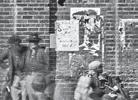
1998). Many of my recent favorite books are monographs about Civil War memory, but no one has captured the seriousness and the zaniness of the world I’ve inhabited for 30+ years better than the late, lamented journalist Tony Horwitz.
8. Reading the Man: A Portrait of Robert E. Lee Through His Private Letters by Elizabeth Brown Pryor. Viking/ Penguin, 2007. Pryor was a great admirer of Lee, but her portrait of him is notable for its critical revelations about Lee’s attitudes and actions regarding slavery and secession. The book is remarkable for its insightful portrayal of a flawed human being and for the integrity of its author.
9. General Lee’s Army from Victory to Collapse by Joseph T. Glatthaar. Free Press, 2008. How did Joe Glatthaar manage to digest decades and mountains of research into a single volume that is at once chronological, thematic, narrative, and analytical?





Awesome!
10. I Remain Yours: Common Lives in Civil War Letters by Christopher Hager. Harvard University Press, 2018. I’ve spent much of my career
Civil War News
reading, transcribing, and writing about soldiers’ letters, but Christopher Hager’s beautifully written book has taught me new things about the art of letter writing and what letters reveal about the human condition.
John M. Coski is historian at the American Civil War Museum in Richmond.
C. Michael Harrington’s
Top Ten Civil War Books
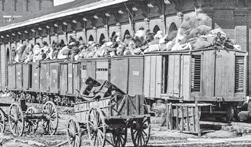
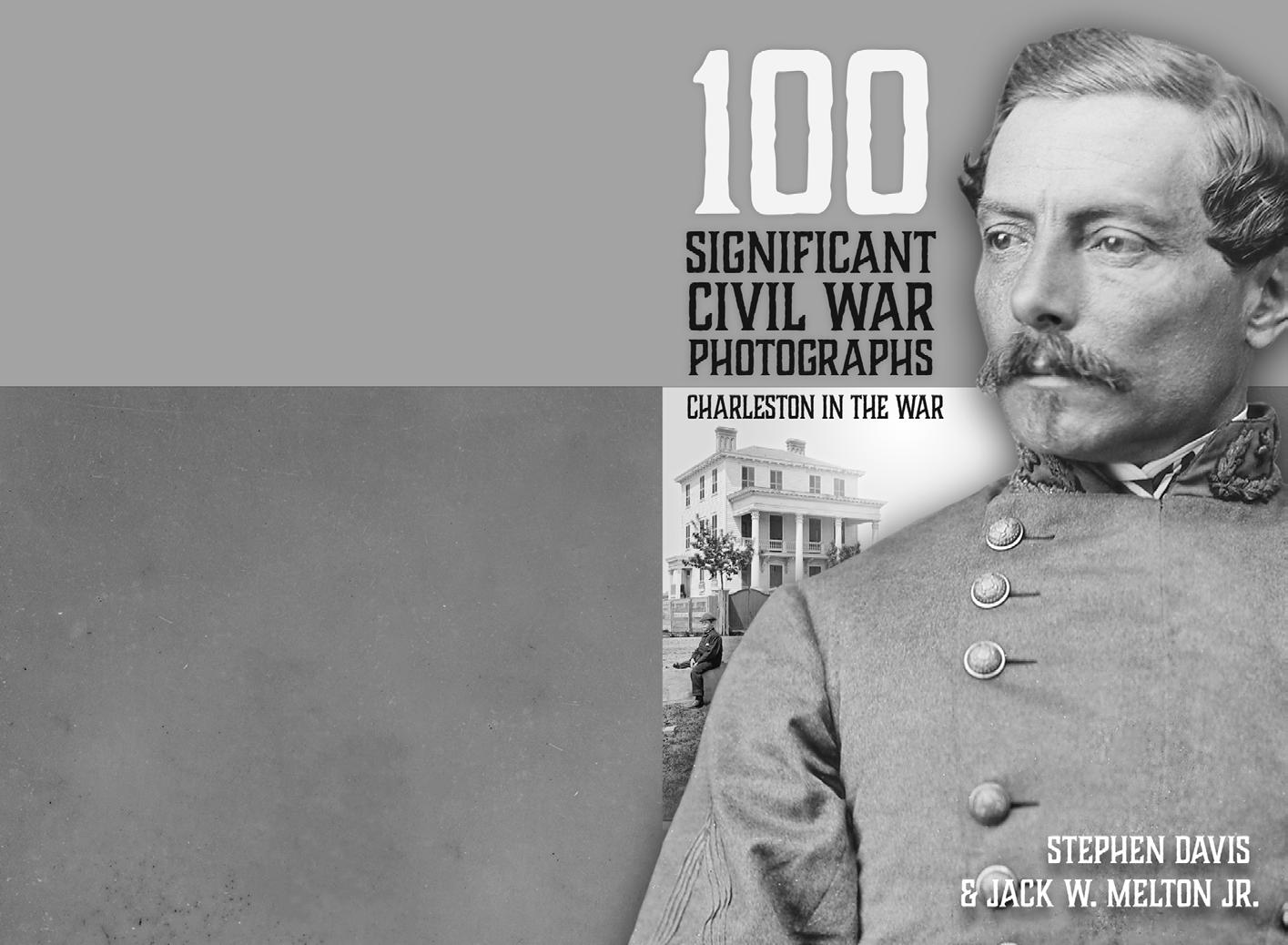
1. Destruction and Reconstruction: Personal Experiences of the Late War by Richard Taylor. D. Appleton & Company, 1879. Richard Taylor’s war memoirs are my favorite Civil War title for several reasons. First, Taylor the soldier intrigues me. Despite a lack of military education and experience, Taylor steadily advanced from colonel to lieutenant general, making him the Confederacy’s highest ranking officer with no West Point training. I also admire Taylor’s lively writing style, one devoid of the turgid prose so common among Civil War memoirists. Douglas Southall Freeman considered
Taylor the only member of the Confederate high command with “real literary ability.” Taylor’s characterization of the laconic Stonewall Jackson is a good example of his gift for language: “If silence be golden, he was a ‘bonanza.’” Taylor’s opinionated candor also makes his book thought provoking. As one example, Taylor alleges that, had his superior officer, General Kirby Smith, acceded to Taylor’s urging in the Red River Campaign to pursue with his full force General Nathaniel Banks’ retreating Federal army, Taylor would have bagged Banks and then marched south to liberate lightly defended New Orleans, changing the course of the war in the West.
2. Mary Chesnut’s Civil War edited by C. Vann Woodward. Yale University Press, 1981. By birth and marriage, Mary Chesnut belonged to South Carolina’s antebellum plantation aristocracy. She kept a diary throughout the war, and I am one of those who regard her diary as the most important Civil War writing by a Southerner. Mrs. Chesnut seems to have been everywhere of importance
during the war. At the outset, she witnessed the bombardment of Fort Sumter. Later, she was in Montgomery, Ala., when the Confederate government was formed. Much of the war she was in Richmond, where her husband was an aide to President Davis. Disqualified by gender from government or military service, Mrs. Chesnut was a frequent guest in the salons and drawing rooms of upper-class Southern society where she came to know so many principal figures of the Confederate government and it’s military. The insights into these men that she confided to her diary make for good reading. A critic of slavery, Mrs. Chesnut also expressed views on the role of women in society that are surprisingly modern.
In no particular order, here’s the rest of my Top 10 list:
3. Rebel Private Front and Rear by William Andrew Fletcher. Beaumont, Press of the Greer Print, 1908. This slender book is a refreshingly honest account of the Civil War service of an ordinary private, William Fletcher of Beaumont, Texas. Fletcher served first as an infantryman
The American Civil War was the rst war in which both sides widely used entrenchments, repeating ri es, ironclad warships, and telegraphed communications. It was also the rst American War to be extensively photographed. Mathew Brady, Alexander Gardner and Timothy O’Sullivan are famous for having made iconic photographs in the Civil War’s eastern theater. George N. Barnard deserves to be ranked in this top tier for his photographic work in the war’s western theater. A civilian photographer hired by Gen. William T. Sherman’s chief engineer to take pictures of forti cations around Atlanta, Barnard took several hundred of them in and around the city in the fall of 1864. His most famous is the site of Union Maj. Gen. James B. McPherson’s death in the battle of Atlanta, July 22, 1864. Thus far, no comprehensive, de nitive listing has been made of the photographer’s work. For this book we have chosen a hundred images we deem “signi cant.”
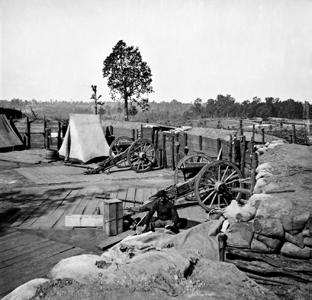
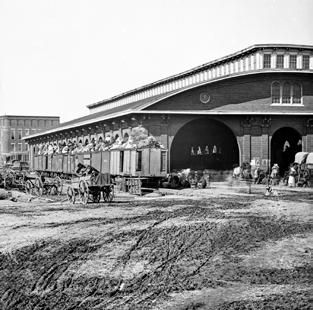


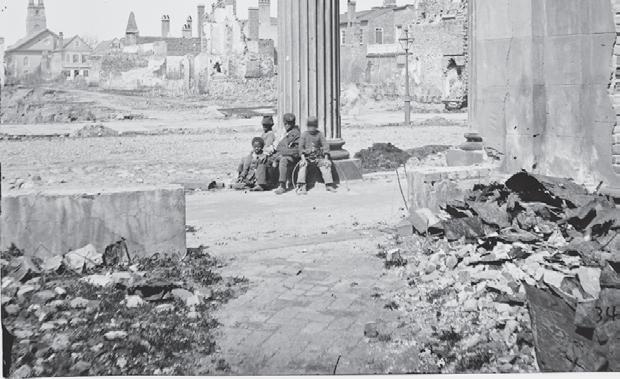
128 page Paperb ac k: $19.95 (+$3.50 S & H)
Ordering

21
“The STORIES BEHIND THE PICTURES” 100 Significant Civil War Photographs CHARLESTON IN WAR By Stephen Davis & JACK W. MELTON JR Name Shipping Address City State Zip 160 pages • OVER 100 PHOTOS • MAPS • INDEX • BIBLIOGRAPHY • ISBN: 978-1-61850-167-7 Paperback: $19.95 (+$3.50 S & H) • Released Jan. 2020 3 ways to order YOUR COPY! CALL US 800-777-1862 ORDER ONLINE www.historicalpubs.com fill out this form BELOW & mail with a check for $23.45 to: Historical Publications LLC 520 Folly Road, Suite 25 PMB 379, Charleston, SC 29412 (S.C. residents include 9% sales tax of $1.80) newly Barnard and Charles photograph, selected as e Great Fire allow book are Confederates Harbor Reminiscences of Federal history historical works. such as (1838–1910). DAVIS & MELTON 100 SIGNIFICANT CIVIL WAR PHOTOGRAPHS CHARLESTON IN THE WAR
“The best little book on Barnard”
info: $19.95 plus $3.50 s&h South Carolina residents add 9% sales tax Mail a check to: Historical Publications LLC 520 Folly Road, Suite 25 PMB 379 Charleston, SC 29412 or Order online at www.historicalpubs.com Wrecking Atlanta Northern Engineers Prying Up Track themselves,tothepointofreprintingthedrawingintheirregimentalhistoryof1889with thecaption,“theFirstMissouriEngineersdestroyingarailroadshowingtheuseofhooks made by them for the purpose.” Barnard Under the Microscope for Monday, November 7. Freedpeople on the Boxcars 67 Congress images bear no captions (as do Poe’s pictures), so students Barnardiana have to standing just beyond their parapet. thesharpskirmishinginfrontofit.Federaltroops,however,neverassaultedtheConfederate works surrounding Atlanta. Peachtree Battery–Another View Order these books online at www.HistoricalPubs.com
in Hood’s Texas Brigade, and later, after suffering a leg wound at Chickamauga, he rode with Terry’s Texas Rangers, making him the only Texan to have served in these two acclaimed Confederate units. What makes Fletcher’s memoir especially attractive to me is his abstention from puffery and brag. For example, Fletcher describes how on the third day at Gettysburg he was overcome by a “bad case of cowardly horror” when confronted with the prospect of participating in a frontal assault on Union lines. He confesses: “I tried to force manhood to the front, but fright would drive it back with a shudder.”
4. Battle on the Bay: The Civil War Struggle for Galveston by Edward T. Cotham Jr. University of Texas Press, 1998. Part of my fondness for Edward Cotham’s concise but thorough history of the land-and-sea battle fought at Galveston on New Year’s Day 1863 is that I maintain a second home on the island. My esteem for Battle on the Bay transcends, however, my fondness for the place where the battle unfolded. Specifically, I regard Cotham’s book as
the definitive account of an otherwise obscure battle that, together with the Battle of Sabine Pass, ranks as the most improbable, almost outrageously unlikely, Confederate victory of the war. Galveston also represents the worst defeat of the U.S. Navy during the war, one that Admiral Farragut aptly termed a “disgraceful affair.”
5. Sabine Pass: The Confederacy’s Thermopylae by Edward T. Cotham Jr. University of Texas Press, 2004. In this relatively short but detailed battle study, Cotham relates how a single Texas Confederate artillery company prevented a Federal armada carrying 5,000 infantrymen from landing at Sabine Pass, the launching point for a planned invasion of Texas. Besides taking out two Yankee gunboats, the 40-odd Texans captured nearly ten times their number of Federals without losing a man. If anything, the Confederates’ victory at Sabine Pass was even more improbable than their victory at Galveston nine months earlier. Sabine Pass was also the most one-sided Confederate victory of the war.
6. Stonewall Jackson: The Man, The Soldier, The Legend by James I. Robertson Jr. Macmillan, 1997. I need say little about Bud Robertson’s magnum opus, one of the bestselling Civil War books of our generation. Robertson debunks some myths that had attached themselves to Jackson’s persona like barnacles over the years, such as his supposed penchant for sucking lemons. The research Robertson put into his book awes me. The book’s endnotes and bibliography consume 162 pages.
7. Rebel Yell: The Violence, Passion and Redemption of Stonewall Jackson by S.C. Gwynne. Scribner, 2014. Until I read this book, I thought that Robertson’s biography was absolutely the last word on Jackson. Reading Gwynne’s biography changed my mind. I see the essential difference between the two books as Gwynne’s greater emphasis upon Jackson’s religious faith as a guide to understanding his life and generalship.
8. Lee: The Last Years by Charles Bracelen Flood. Houghton Mifflin, 1981. I have read many books about Lee, but Flood’s is the only one devoted to the forgotten chapter of Lee’s life, the five years following Appomattox when he was president of a small Virginia college that today bears his name, Washington & Lee University. To my liking, Flood argues that these final years were Lee’s finest, a time when he did more than any other Southerner to heal the wounds between North and South.
9. Jefferson Davis, American by William J. Cooper Jr. Alfred A. Knopf, 2000. Among the several biographies of Jeff Davis I have read, I prefer this one. William Cooper, a LSU history professor, wrote the book with a general readership in mind. The portrait of Davis that emerged is sympathetic but objective. The book also answers the question often asked about Davis: How could a patriotic American come to lead a mighty struggle to dismember the U.S.?
10. Carrying the Flag: The Story of Private Charles Whilden, the Confederacy’s Most Unlikely Hero. Basic Books, 2004. True confession: I put Gordon Rhea, an authority on the Overland Campaign, onto the story of Charles Whilden.
What Rhea did with the story is strictly to his credit, however. Passed over for service until the spring of 1864, aging Charles Whilden enlisted as a private in a South Carolina infantry regiment serving in Virginia. In short order, this epileptic clerk found himself plunged into bloody combat. In an amazing act of courage, Whilden wrapped the Rebel flag around his body and led a charge at Spotsylvania that won crucial ground for the Confederates, changing the course of one of the war’s most significant battles.
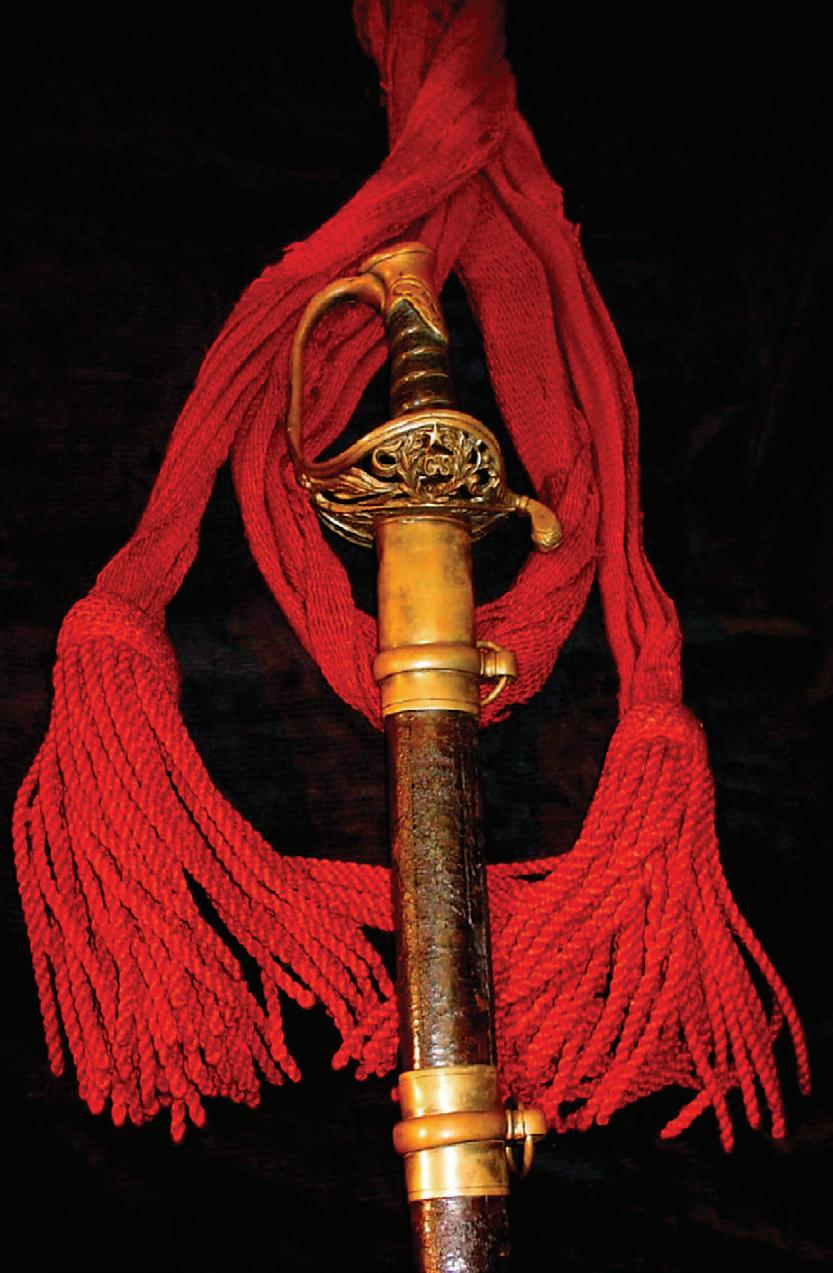
C. Michael Harrington is a retired lawyer, resident in Houston and Galveston. He’s authored several published articles on South Carolina soldiers, and he’s lectured to Civil War organizations in Houston on multiple topics, including Yale’s Confederate alumni and South Carolinians in the war. He’s president of the Houston CWRT.
John Michael Priest’s
Top Ten Civil War Books



(in no particular order)
1. The Bachelder Papers, 3 vols, edited by David L, and Audrey J. Ladd. Savas Beatie, 2020. Originally published by Morningside Press in 1994, these three volumes belong in every Gettysburg enthusiast’s library. They represent the lifelong work of John B. Bachelder to preserve forever the personal recollections of hundreds of the battle’s participants.
2. The Maryland Campaign of 1862, 3 vols., edited by Thomas G. Clemens. Savas Beatie, 2012. Thomas G. Clemens spent several decades tracking down and documenting the sources that Colonel Ezra A. Carman (13th New Jersey) used in compiling this monumental history of Robert E. Lee’s first incursion across the Potomac. The exhaustive footnotes and commentary reflect Dr. Clemens’ superb scholarship, which have made Carman’s work all the more valuable.
3. Failure in the Saddle by David A. Powell. Savas Beatie, 2013. Until I read David A. Powell’s thorough analysis of Nathan Bedford Forrest and Joseph Wheeler in the Chickamauga Campaign, I honestly believed the popular assessment of them as superb cavalrymen. This book completely dispelled that myth. It is one of my genuine
favorites.
4. Too Useful to Sacrifice by Steven R. Stotelmyer. Savas Beatie, 2019. I am not a “McClellanite” by any stretch of the imagination, however, this refreshing book introduces solid arguments that historians have quite probably given George B. McClellan short shrift. It really changed my assessment of him as a general.
5. This War So Horrible: The Civil War Diary of Hiram Smith Williams edited by Lewis N. Wynne and Robert A. Taylor. University of Alabama Press, 1993. Hiram Smith enlisted in the 40th Alabama in 1863 and served in the Atlanta Campaign, until captured and sent to Point Lookout. Literate and extremely perceptive, his diary is filled with astute observations about life in the Army of Tennessee.
6. The Battle of Carthage: Border War in Southwest Missouri, July 5, 1861 by David C. Hinze and Karen Farnham. Savas Beatie, 1997. My friend, Dave Hinze, who passed away too early in his life, produced one of the finest works I have yet read on the early war in the West. Thoroughly documented, with detailed small unit maps, it broke new ground in an often-overlooked arena of the war.
7. Under the Crescent Moon with the XI Corps in the Civil War, 2 vols., by James S. Pula. Savas Beatie, 2017. James S. Pula, editor-in-chief Gettysburg Magazine, has written what, I believe, is the first history of the much maligned XI Corps. Objective, and well written, it shattered a number of the myths surrounding this corps and its controversial commander, Oliver Otis Howard.
8. The Great Locomotive Chase, by Craig Angle. Mercersburg Printing, 1993. Privately printed, with a limited run of 1,500 copies, this heavily illustrated and beautifully produced book is filled with the personal accounts of the Union soldiers who participated in stealing the famed locomotive, the General. It is a good read and full of great material.
9. With a Flash of His Sword: The Writings of Major Holman S. Melcher, 20th Maine Infantry edited by William B. Styple. Belle Grove Publishing, 1994. I found this book invaluable in researching Gettysburg
22 Civil War News November 2020
THE FINEST HISTORICAL ANTIQUE MILITARIA Wallace Markert info@csacquisitions.com 16905 Nash Road • Dewitt, Virginia 23840 804-536-6413 • 804-469-7362 www.csacquisitions.com
and the Wilderness. Melcher had no problem saying what was on his mind, particularly when it came to his renowned commander, Joshua Lawrence Chamberlain.
10. Harvestfields of Death: The Twentieth Indiana Volunteers of Gettysburg by Craig L. Dunn. Guild Press of Indiana, 1999. A remarkable history of a Western regiment at Gettysburg, this thoroughly documented regimental history brings the men who served in the 20th Indiana’s ranks to life. Great writing, and attention to detail make this a remarkable regimental.
John Michael Priest, a retired high school history teacher has authored or edited numerous books on the Civil War, including Stand To It And Give Them Hell, an in depth narrative of Longstreet’s assault at Gettysburg on July 2, 1863 (Savas Beatie); Antietam: The Soldiers’ Battle (White Mane, soft cover, and Savas Beatie, digital format.) His books are not about grand strategy and generals but the front line combatants. Ed Bearss dubbed him “the Ernie Pyle of the Civil War soldier.”
Richard Blumberg’s Top Ten Civil War Books
1. Attack and Die: Civil War Tactics and the Southern Heritage by Grady McWhinney and Perry Jamieson. University of Alabama Press. 1982. An excellent analysis of how Southern culture and heritage dictated the strategy and application of warfare in the Confederacy.
2. This Republic of Suffering: Death and the American Civil War by Drew Gilpin Faust. Random House, Inc. Borzoi Books. 2008. This work provides the most comprehensive study of the physical, emotional, and psychological aspects of death and its impacts on family and society.
3. Partners in Command: Relationships Between Leaders by Joseph T. Glatthaar. Free Press. 1998. This book provides an indepth study of why certain command relationships on both sides worked and others did not.
4. Embattled Courage: Experience of Combat in the Civil War by Gerald Linderman, Simon and Schuster. 2008. The focus of this work is on the motivations that sparked individuals to become soldiers. Most of them were driven
to be courageous by family, friends, and sweethearts.

5. Railroads of the Confederacy by Robert C. Black. UNC Press. 1952. The most comprehensive study available on one of my favorite hobbies.
6. A Government of Our Own: The Making of the Confederacy by William C. Davis. 1994. One of his many excellent tomes, this work describes the founding fathers of the Confederacy and their struggles creating a constitution and effective government, along with electing a president.
7. Bedford Forrest and His Critter Company by Andrew N. Lytle. Rowan and Littlefield. 1992. This is among the best studies of cavalry leader Nathan B. Forrest.
8. My Brother’s Keeper: Union and Confederate Acts of Mercy During the Civil War by Daniel J. Rolph. Stackpole Books. 2002. This work provides short vignettes describing acts of kindness by soldiers of both sides and shows an uplifting side of the combat experience.
9. The Women of City Point Virginia 1864–1865: Stories of Life and Work in the Union Occupied Headquarters by Jeanne M. Christie. MacFarland and Company 2020. An excellent study of civilian life in one of the world’s biggest port cities during the late War.
10. Ploughshares into Swords: Josiah Gorgas and Confederate Ordnance by Frank E. Vandiver. Texas A&M University Press. 1994. A genius at military administration, Gorgas was the shining star of Confederate logisticians.
Richard Blumberg is a retired Army Reserve Colonel, who received his MA in Military History (Civil War Studies) from American Military University. He is Past President of the Houston, Texas Civil War Roundtable. He has contributed two articles to CWN and has served on its Book Review staff since 2003. He served as a presenter to the 2000 Conference on Women in the Civil War and is scheduled to teach a community college online class in Civil War Logistics in October 2020.
Joan Wenner’s Top Five Civil War Books
1. Never Call Retreat, Volume Three, The Centennial History of the Civil War by Bruce Catton. Doubleday &
Company, New York, 1965.
2. Terrible Swift Sword, Volume Two, The Centennial History of the Civil War by Bruce Catton. Doubleday & Company, New York, 1963.
3. The Coming Fury, Volume One. The Centennial History of the Civil War by Bruce Catton. Doubleday & Company, New York, 1961. These well researched three volumes by Bruce Catton totaling 1,679 pages provide an indepth, comprehensive understanding of the whole of the Civil War.
4. The Civil War Chronicle, by Richard A. Sauers, Ph.D. Consultant and contributing writer along with Martin F. Graham, George Skoch, and Clint Johnson with Forward by William C. Davis, Publications International, Ltd., Lincolnwood, Illinois, 2004. This book is an easily readable 448 pages full of facts in a timeline format. The timeline runs across the page bottoms listing important battles, engagements, people, and much more from the lead up to the war through to its ‘enduring legacy.’ Heavily illustrated with images of people and places.
5. “Our Little Monitor”—The
Greatest Invention of the Civil War by Anna Gibson Holloway and Jonathan W. White. Kent State University Press, Kent, Ohio, 2018. I reviewed this book by a distinguished curator/maritime historian and an equally distinguished professor in the March 2019 issue of CWN and found its contents impressive; they will tell you all you wanted to know about this famous Civil War vessel. Her turret and guns were retrieved from the Atlantic in 2002 and are currently under ongoing restoration at the Mariners’ Museum & Park at its award-winning USS Monitor Center, Newport News, Va.
Joan Wenner, J.D. is a longtime history writer previously published in The Artilleryman, America’s Civil War, and Military Heritage, and also a regular contributor to the Civil War News
Tim
Prince’s
Top Ten Civil War Books
When Civil War News publisher Jack Melton sent an email asking if could contribute a list of my top ten Civil War books for the November 2020 issue, I sort
of chuckled and said to myself, “sure, it will be easy to whittle a list of hundreds of books down to ten….” As a full-time dealer in Civil War and related period antique and collectible weapons, I have a research library that is quite vast, so thinning down the list to a “Top Ten” was daunting. Interestingly, I had complied a list of my “Top Ten Civil War Gun Books” for my monthly column back in 2017. However, upon reflection I realized that there were a number of Civil War related books that I would give the honor of “Top Ten” to, for a variety of reason and in a variety of categories. Obviously, I could come up with many more books worthy of being on this list, but these are the ones that I picked this time. They books fall into three basic categories: 1) Civil War History, 2) Civil War Material Culture, and
3) Civil War Fiction. The third category may seem strange, but I sometimes think we forget how much popular culture can influence the perception of, and interest in, a particular period in history. So, without further ado, here are my “Top Ten,” in no particular order, grouped by category.
Civil War History
1. Entrepôt – Government Imports into the Confederate
23
November 2020 Civil War News
States by C.L. Webster III. Edinborough Press, 2010. If you have the slightest interest in the way the Confederacy obtained and imported their arms, equipment and materiel from foreign and other outside sources, this book is a must for you. The book is divided by the various ports of entry for goods and provides the contents of manifests and details from period documents that are really interesting. Some of the convoluted ways in which items were exported from places like the Union North only to be reimported to the Confederate South are mind boggling. This is one of those gems that many people missed when it debuted at the Civil War Show in Nashville about a decade ago and is certainly worth adding to any serious research library. It is also a compelling and interesting read.
2. General Lee’s Army – From Victory to Collapse by Joseph T. Glatthaar. Simon & Schuster, 2008. The UNCChapel Hill history professor has written several books about the Civil War, but for me this is his most compelling. While it sometimes drags a little as he goes through some in depth statistical analysis of Lee’s Army, it is probably the most detailed look at the men who really made up the Army of Northern Virginia. It dives
so much deeper than the more typical Civil War book that tends to look at broader sweeping political and social forces that resulted in the war. This gives you the view of the men in ranks, carrying the muskets, and fighting the fight. While many books are about providing that “view from 40,000 feet,” this is about the view from the battle lines. A must for any Civil War library.
3. The Class of 1846 – From West Point to Appomattox by John C. Waugh. Ballantine Books, 1994. This book looks at luminaries of the West Point graduating class of 1846, almost all of whom went directly to the war with Mexico within months of graduation. Among the wellknown graduates of that class were Thomas J. “Stonewall” Jackson, George McClellan, George Stoneman, A.P. Hill, George Pickett, and Cadmus Wilcox, just to name a few. Many went on to serve as generals in their respective armies during the War. The book gives interesting background and back story to some well-known Civil War personalities and really helps to flesh out their characters as well as providing some insight into the personality traits that affected their performance in the field and their subsequent successes and failures.
4. As If It Were Glory edited by
Michael Stevens. Madison House Publishing, 1998. The perspective of the War from the person who actually participated in it at the ground level is always intriguing, assuming that person has the ability to write coherently and does not become overly concerned about trying to cast themselves in the best possible light. This last issue is a failing in nearly every post-war memoir. However, author Robert Beecham, who fought as an enlisted man in the Iron Brigade’s 2nd Wisconsin from May 1861 through his capture at Gettysburg, manages to avoid most of the typical pitfalls of such a memoir. Beecham would go on to serve at a Lieutenant in the newly formed 23rd U.S. Colored Troops after his release by the Confederacy and would discover a newfound respect for the AfricanAmerican soldiers he would lead. Although the memoir was written at the turn of the century and certainly takes shots at the rising “Lost Cause” mythos in the south and the nation’s treatment of its African-American citizens at that time, it also provides an amazingly clear view of life for the common solider, free of the politics and agendas of those who commanded them.
5. Company Aytch, Maury Grays, First Tennessee Regiment: Or, A Side Show of the Big Show by Samuel Watkins. Chattanooga Times Printing Company, 1900. If you are a Civil War buff and have not read this “memoir” of the war you are really missing out. If you have not heard of it, you clearly never saw Ken Burns’ series The Civil War, as Sam Watkins and his Mark Twain style commentary about the war were certainly stars of the show. Like the Beecham memoir, this was written well after the war, but only a couple of decades later. It was originally serialized for publication locally, certainly a factor in how he presented his fellow soldiers. As you read the book, take all of Sam’s commentary with a grain of salt as he knew his former “pards” were reading his word. As a result, the life at war of Sam and his comrades was certainly sanitized and cleaned up to make it more palatable and to make the men appear in the best possible light. However, if
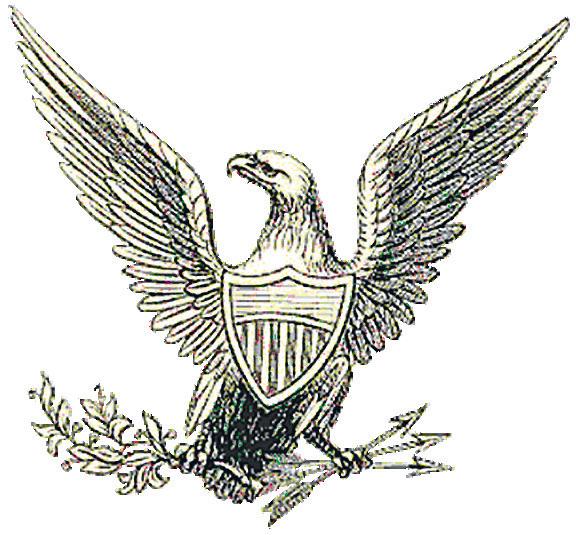
you have any interest in the Army of Tennessee and want to hear some perspectives from one of the men who fought, this is a must read book.
Material Culture:
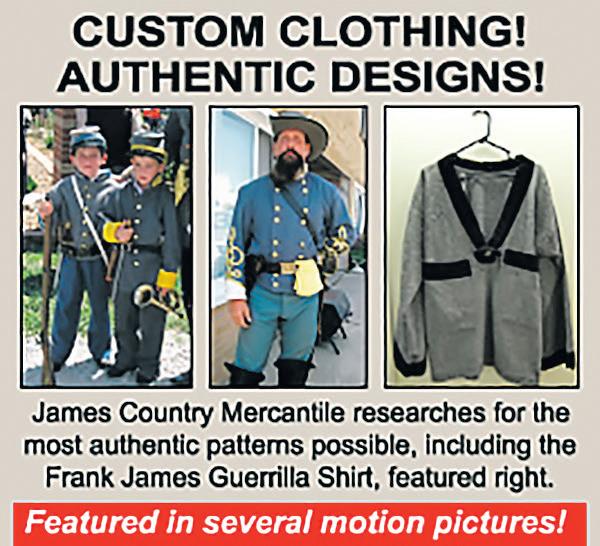
6. Echoes of Glory, Arms & Equipment of the Union and Confederacy, 3 vols., edited by Henry Woodhead. Time Life Books, 1992. This coffee table set is well known to Civil War buffs. While short on text and in depth information, this was one of the first Civil War books that provided big, clear, color photos of real artifacts from the war. Many artifacts were from the best known and most advanced collections of the period. In my opinion this series set the standard for all the material culture books of the last couple of decades, and signaled the death knell of the research book with low quality, black and white photos.
7. Civil War Guns by William B. Edwards. Stackpole Books, 1962. This classic tome was one of the first scholarly looks at Civil War firearms; in particular, it was one of the first to take a serious look at imported arms used during the conflict. While some information is dated and some represent Edwards’ best guesses, it is still a classic that belongs in any Civil War arms library.
8. The English Connection, Russ Pritchard Jr and C.H. Huey with Mike Nichols, Tim Prince and Dean Thomas. Thomas Publications, 2014. I’m biased here because of my involvement, but few books on material culture have this level of detail and photographic quality. No matter what your interest is in Confederate arms and equipment imported from Great Britain, it is probably covered here and in fairly good detail. It is certainly a “must have” book for any Civil War arms and equipment library.
9. Shrouds of Glory, From Atlanta to Nashville: The Last Great Campaign of the Civil War by Winston Groom. Grove Press, 1995. While the late Groom is probably best known as a novelist and for his loveable character Forrest Gump, he is an historian at heart. I debated whether to list this book in this category or in “Fiction.” Although it is not a fictional story, the fact that it is “narrative” history written with the skills of a novelist without footnotes
instead of an academic leads it to have the occasional factual error. However, like the great Shelby Foote, who also wrote wonderful “narrative histories” rather than “academic histories” of the war, Groom makes this story of John Bell Hood and the death of the Army of Tennessee very compelling. Living most of my life and all of my adult life in Nashville has made the battles of Franklin and Nashville near and dear to my heart. This is a very humanizing account of those brutal and horrible events and is a book that many people missed when it was published some 25 years ago. It is well worth the read.
Fiction:
10. The Killer Angels by Michael Shaara. Ballantine Books, 1974. This 1975 Pulitzer Prize winning novel of the Civil War is probably the best piece of historical fiction written about the conflict and is probably responsible for more people developing a strong interest in the war than any other similar book. The resulting movie Gettysburg, bad reenactor uniforms and horrible beards aside, brought more new blood into the hobbies of Civil War reenacting and collecting than any other movie. Like all historical novels there are faults and inaccuracies, but these are minor given the overall quality of the work and the compelling story that Shaara tells, from Joshua Chamberlain and the 20th Maine’s defense of Little Round Top to the disastrous results of Pickett’s Charge. His interpretations of the real characters who spring to life from the book’s pages have influenced students of the war both directly and indirectly for more than three decades. If you have never read this book, please do. No Civil War buff should miss it.
Tim Prince is a full-time dealer in Civil War and antique military arms. He has been the contributing author to two major books on the subject of Civil War arms, has authored some 60 articles on the subject and contributed his time, research, photography and other resources to many additional recent publications on the subject. Tim also appears as a featured appraiser on the PBS television series Antiques Roadshow, as one of the Arms & Militaria experts.
24 Civil War News November 2020
19th CENTURY LIVING HISTORY! James Country MERCANTILE 111 N. Main Liberty, MO 64068 816-781-9473 • FAX 816-781-1470 www.jamescountry.com Ladies – Gentlemen Civilian – Military • Books • Buttons • Fabrics • Music • Patterns • Weapons Mens, Ladies and Children’s • Civilian Clothing • Military Clothing • Military Accessories • Accoutrements Everything needed by the Living Historian! Our Clothing is 100% American Made! The home of HOMESPUN PATTERNS© Subscribe online at CivilWarNews.com
November 2020
Meg Groeling’ Top Favorite Civil War Books

When the request for a list of “favorite books” came to those who review for CWN, I thought here was an excellent, if unexpected, chance to tell readers what great new books are coming our way. It seems like a unique time in history for many reasons, and few news broadcasts go by without mentioning the American Civil War in some manner. Historians have risen to the occasion, giving readers new books with new interpretations of an “old war.” The ones I have mentioned here are magnificent in scope, depth, and understanding. Please consider them as worthy of your reading time.
Everyone who loves the American Civil War has at least ten favorite books. I have divided my ten into two groups. The first grouping contains old favorites, sometimes given to us by someone we love, with an inscription that renders the book priceless. For me, this category is filled by the set of Bruce Catton books, specifically, the trilogy A Stillness at Appomattox that belonged to my dad. Another musthave is a good novel. This choice is personal, of course. Mine is Margaret Leech’s Reveille in Washington, where I first met John Hay, George Nicolay, and Elmer Ellsworth. Some consider fiction as not belonging in a list like this, but sinking into a wellknown, much-loved novel is too much of a pleasure to ignore.
Two others that are only genre-specific are a good map book, preferably covering the entire war in both time and geography, and a good picture book. My first map collection was the West Point Atlas of the Civil War. Maps are improving rapidly, so look at some recent publications, or build your own set of battle-orwar theater-specific map books. No matter what you choose, maps are a must-have. My father also had an old Matthew Brady photo book. He gave it to me and I have added other versions to the collection. Some newer, colorized images are amazing, but no one forgets their first experience with those Gardner images from Antietam that set New York on its ear “back in the day.”
Finally, if you do not have a sturdy version of Walt Whitman’s poems that includes Drum Taps, you should get one. Reading poetry does not reflect on a reader in any negative way, rather the opposite. The American Civil War defined a generation of men and women, and no one writes the truth of this better than Whitman.

He will touch your soul.
The next group of five books is not old at all. In fact, it is very new, one of them just a couple of months old. It is a grouping that I think is important, especially when it comes to comparing the military and political doings of the 1860s with what is happening today. In no particular order: Gathering to Save a Nation by Stephen D. Engle. University of North Carolina Press, 2016, is such an insightful book. In this intricate work, Engle looks at the men who governed the loyal states during the Civil War, and their efforts to support the President, their constituents, their parties, and their state’s volunteer soldiers in the field. While providing detailed and engaging portraits of wartime governors, their state-level actions, and their cooperation, Engle brings into new focus the era’s complicated political history and shows how the War tested and transformed the relationship between state and federal governments. When I finished this book, I felt like I had a much greater understanding of how a president works with states in a time of crisis, something helpful in times of war, weather, and pandemics.
Lincoln on the Verge by Ted Widmer. Simon & Schuster, 2020. This is another book that helped me understand today’s politics better for having read it. Widmer has a voice I particularly enjoy, and this book tackles the changes in Abraham Lincoln as he stepped from the Illinois prairie to the main stage of Washington, D.C. “Growing into the job” was not something I had considered much until I read this book. Of course, I had heard the phrase applied to our current executive, but Widmer’s nuanced framework, while Lincolnspecific, applies to today as well. Again, a timely read.
In The Field of Blood by Joanne Freeman. Picador, 2019. Author Joanne B. Freeman draws back the curtains on the story of physical violence on the U.S. Congress floor. Antebellum Washington was rife with conflict. When debate broke down, Congress members drew pistols, waved Bowie knives, threatened, flipped desks, and attempted allout Congressional brawls. One representative even killed another in a duel. Many were beaten and bullied in an attempt to intimidate them into compliance, particularly on the issue of slavery. Author Freeman’s dramatic accounts tell a larger story of how fisticuffs and journalism, and the powerful emotions they elicited, raised tensions between North and South and led toward
Civil War News
war. One result is a new understanding of American democracy’s workings and the bonds of Union on the eve of their greatest peril. Another is that the alert reader will immediately notice that Congress has only nominally cleaned up its act and that yesterday’s pressures are just as intense today. Again, a very timely read. When It Was Grand by LeeAnna Keith. Hill and Wang, 2020. This is the story of a few northern Radical Republicans who helped found a new political party and turn it toward ending slavery. I was fully aware of the checkered past of the Democrats, and I knew something about how both parties seem to “flip” stances on many issues beginning in the Cold War. Keith’s volume offers a new look at figures ranging from Ralph Waldo Emerson and John Brown to the elected politicians who left the Whig Party to join up with more progressive thinkers. It also gives readers another chance to look at Abraham Lincoln’s political evolution. Sometimes critical, sometimes partner, Lincoln became the best-known Republican in America. Just when this nation is once again wondering what Republicans and Democrats stand for these days, here is a book that can set a firm foundation of knowledge upon which to
build. Have I mentioned, “timely read?”
The Black Heavens by Brian R. Dirck. Southern Illinois University Press, 2019. The Black Heavens can be read along with Lincoln on the Verge. Just when one thinks books about Lincoln could not offer anything new, these two books come along. The Black Heavens deals explicitly with the deaths Lincoln endured during his lifetime and how they were part of what formed his character of compassion and support for individuals in need of succor and a nation needing the same.
Author Dirck tackles the historiographical view of Lincoln as a tragic figure by presenting his response to death and mourning within the social, cultural, and political context of the times. Lincoln lost his mother and sister early in his life. Later he lost his sons Eddy (1850) and Willy (1862). He dealt with the combat deaths of two of his best friends, Colonel Elmer Ellsworth and Colonel Edward Baker, early in the war. The author elegantly handles Lincoln’s evolution from a bereaved child to a commander in chief who gave orders that sent an unprecedented number of Americans to their deaths. The Black Heavens adds immeasurably to our 21st century
understanding of America’s sixteenth president. It, too, is timely.

Meg Groeling received her Master’s Degree in Military History, with a Civil War emphasis, in 2016, from American Public University. Savas Beatie published her first book, The Aftermath of Battle: The Burial of the Civil War Dead, in the fall of 2015. Her biography, First Fallen: The Life of Colonel Elmer Ellsworth, the North’s First Civil War Hero. It will be published by Savas Beatie in 2020. She is a book reviewer for LSU, Civil War News, and a regular contributor to the blog Emerging Civil War. She lives in Hollister, California, in a 1928 bungalow with her husband, her cats, and a lot of books and roses.

Charles H. Bogart’s Top Ten Civil War Books
My main interest in the Civil War centers around naval operations. I do not care if the action takes place on the high seas, in coastal waters, or upon inland rivers. If my Civil War book purchase choice is between a book on naval or land operations, the naval book will be the book purchased. I had a hard time cutting my list of must-read Civil War naval books to ten. Actually, I list twelve books, but three are part
25
and
Uniforms, Muskets, Accroutrements and Equipment...
have everything you need and so much more. We are offering speacial Gift Boxes for Christmas this year. Check them out on our website at www.regtqm.com Now offering a full line of Historic Tees and Sweatshirts. Check out the new website www.historic-tees.com
Specializing in Civil War Reenacting
Living History
We
of one set. Read and enjoy.
1. Civil War Naval Chronology 1861–1865 by Naval History Division. Navy Department. U.S. Government Printing Office, 1971. This book can be considered as a primer for those wishing to explore the contents of The Official Records of the Union and Confederate Navies in the War of Rebellion. The book is more than a chronology of naval actions as it contains a number of appendices on other Civil War naval topics, including an appendix on Civil War naval sheet music. The book contains a listing, with details, of Confederate warships and blockade runners.
2. The Diary of Gideon Wells 1861–1869, 3 vols., edited by Edgar T. Wells. Houghton Mifflin Company, 1909. Clausewitz’ is famous for writing “War is nothing but the continuation of policy by other means.” In reading Gideon Wells’ diary entries, one can see first hand how complicated war can become, as the policy guiding it changes and evolves not only during the war but in the postwar years. One should read Wells’ first volume of diary entries in conjunction with the book The Confidential Papers of Gustavus V. Fox, Assistant Secretary of the Navy.
3. Stephen R. Mallory: Confederate Navy Chief by Joseph T. Durkins. University of North Carolina Press, 1954. While Gideon Wells had the building blocks of a seagoing fleet at the start of the Civil War, Stephen Mallory, upon assuming the office of Confederate Secretary of the Navy, started with a blank sheet. Joseph Durkins outlines in his book how Mallory, with the odds stacked against him, a weak industrial base, poor governmental financial resources,
and an uncooperative government, was able to build a seagoing and brown water navy. Mallory proved to have a mind that was able to comprehend the technical advancements taking place around him in naval warfare and adopt them for use by the Confederacy. His list of accomplishments includes funding ironclads, torpedo boats, submarines, mines, and steam powered commerce raiders.
4. Campaigns of the Civil War: The Atlantic Coast by Daniel Ammen, The Blockade and the Cruisers by James Russell Soley, and The Gulf and Inland Waters by Alfred T. Mahan. Reprint Blue & Gray Press, 1960. This three-volume set provides an introduction into the U.S. Navy’s operational involvement in the Civil War. Any operational study of the U.S. Navy during the Civil War must start with reading these three books. When originally published by Scribner’s in 1882–1883, this three volume set was well received by the surviving members of the Union Navy.
5. Naval History of the Civil War by Admiral David D. Porter. Reprint Castle, 1984. The details provided in this book of U.S. Navy actions during the Civil War are overwhelming. Yet, it is this detailed description, supported by maps, drawings, and photos, that make this book a must read by the serious historian of the naval side of the Civil War.
6. Union Jacks: Yankee Sailors in the Civil War by Michael J. Bennett. University of North Carolina Press, 2004. Not quite up to the standards of Bell I. Wiley’s The Life of Johnny Reb and Billy Yankee, but the account, provided by the author of sailors in the Union Navy, is still
the standard reference book on this topic. The author examines the life of a Union Navy’s enlisted man from enlistment to discharge. Almost all facets of the life of a U.S. Navy sailor during the Civil War are dissected and examined in this work.
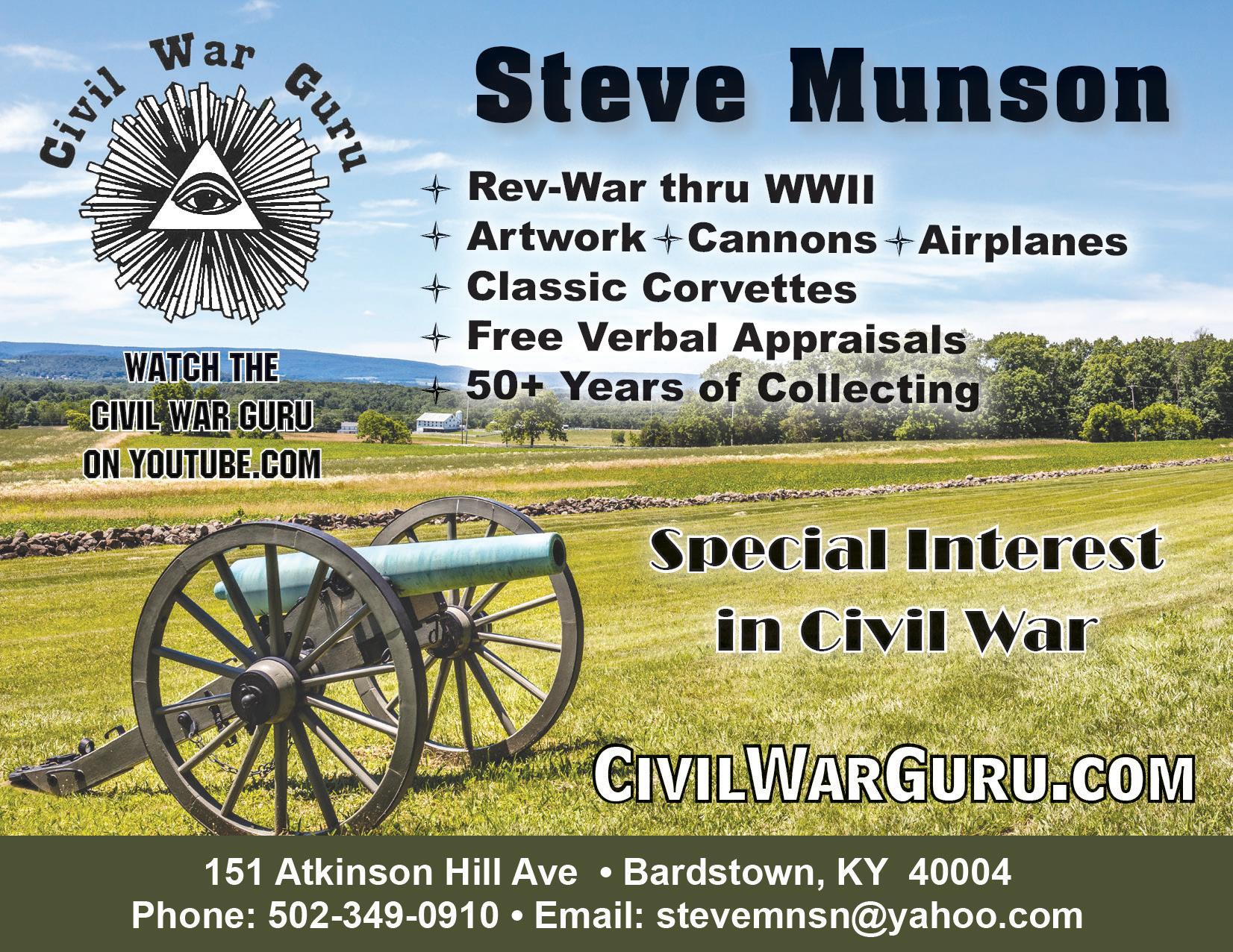
7. History of the Confederate States Navy: From Its Organization to the Surrender of Its Last Vessel by J. Thomas Sharf. Reprint Fairfax Press, 1977. As one reads this book, one will encounter tale after tale of Confederate Navy pluck and courage, and at the end of the book be surprised to find the Confederate Navy destroyed and the Union Navy triumphant. Yet, this book is the best account of the Confederate Navy. It is shown as a serious contender in seeking to be the dominant naval force exercising control of the Confederacy’s coastal waters and river systems.
8. Life in Jefferson Davis’ Navy by Barbara Brooks Torblin. U.S. Naval Institute Press, 2019. This book provides a look at the organizations and men who formed the Confederate Navy. The author’s principle focus is on internal organizations that shaped the Confederate Navy. This is more an administrative history than an operational history. The men of the Confederate Navy formed less than five percent of the Confederate’s total military manpower, but they played a vital role in ensuring the Confederate Army was supplied with weapons, clothing, and medicines.
9. The Secret Service of the Confederate States in Europe by James D. Bulloch. Reprint Sagamore Press, 1959. Since the Confederacy lacked the financial and industrial wherewithal to build a navy, it was dependent on overseas institutions to provide this support. James D. Bulloch was the person who oversaw the Confederacy’s raising of money, buying of equipment, and the building of ships in Europe. This is his story of how he did it. I would suspect that this book is on the must reading list of any organization engaged in or investigating covert financial operations.
10. The Army’s Navy Series: Volume 1: Dictionary of Transports and Combat Ships Employed by the Union Army 1861–1868 & Volume 2: Assault and Logistics, Union
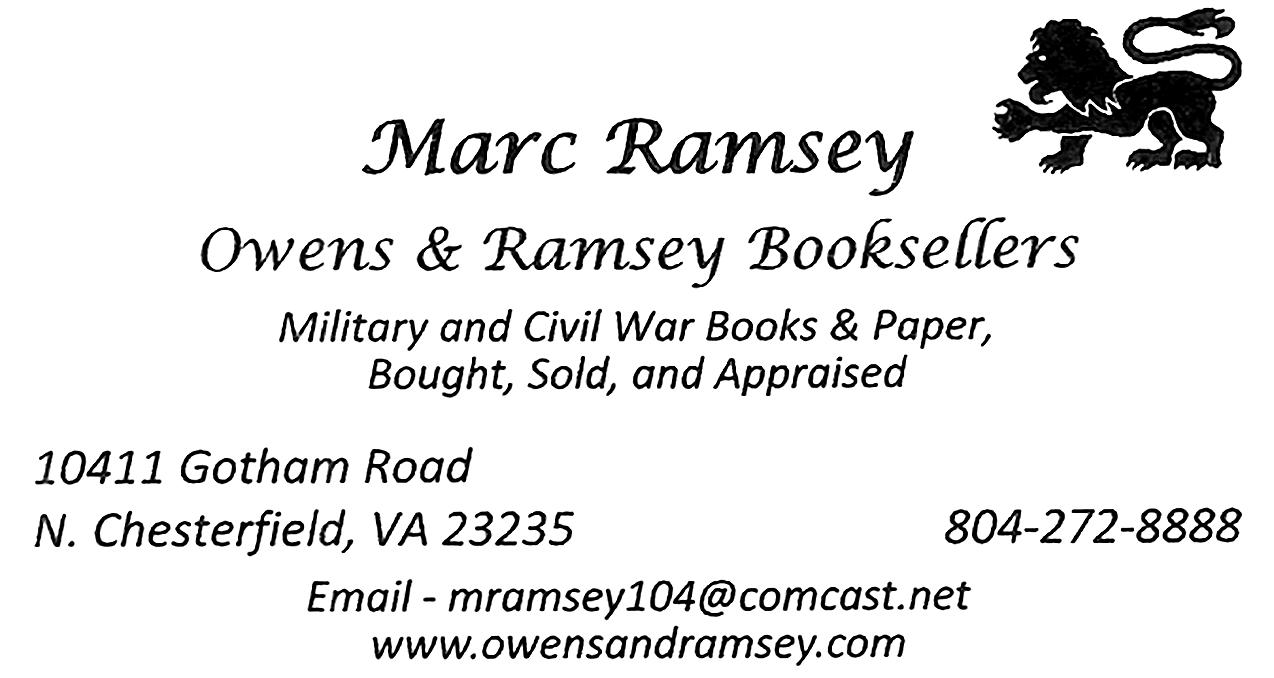
Army Coastal and River Operations 1861–1866 compiled by Charles D. Gibson and E. Kay Gibson. Ensign Press, 1995. The Civil War was won by the side that developed and employed the superior logistical system. The two authors of this book explore the U.S. Army’s use of ocean-going ships, coastal craft, and riverboats to move men, equipment, and supplies around the periphery of the Confederacy and into its interior. By reading this book, one quickly grasps that, yes, railroads were an important Civil War transportation artery, but without waterborne logistical support, the Union would never have defeated the Confederacy.
Charles H. Bogart has a BA in History from Thomas More University and a Masters in Planning from Ohio State University. He has written numerous books and articles on railroads, military and naval history. He serves on the Board of Directors of the Kentucky Civil War Roundtable and is President of the Frankfort Kentucky Civil War Roundtable.
Jonathan W. White’s Top Ten Civil War Kids Books
Many of us wish that Americans, especially young Americans, knew more, and cared more, about American history. One way we can instill a love of history in our children and grandchildren is by buying them good books. We have more than 150 kids’ history books in our home library, covering every aspect of American history. The following are some of my favorite Civil War books that I read to my daughters (ages 4 and 7). All of them are large picture books except for the last one on the list.
1. Abe’s Fish: A Boyhood Tale of Abraham Lincoln by Jen Bryant, illustrated by Amy June Bates. New York: Sterling, 2009. This delightful book tells the true story of a young Abraham Lincoln during the War of 1812.
After catching a fish in Knob Creek, Abe gave it to a hungry soldier he saw walking down the road. The author and illustrator capture themes in Lincoln’s life that would loom large during his presidency. The only downside of this beautiful book is that it has been out of print for a decade and copies online are scarce and expensive. But if you can get one, you will not be disappointed.
2. Soldier Song: A True Story of the Civil War by Debbie Levy, illustrated by Gilbert Ford. Los Angeles: Disney/ Hyperion, 2017. This exquisite book tells the story of the temporary truce that took place just after the Battle of Fredericksburg in December 1862, as Union and Confederate soldiers sang “Home, Sweet Home” together. Readers who are familiar with Civil War music will enjoy singing the songs that appear in the text. Young readers can also experience what it is like to read original primary sources as the author reproduces original letters and diaries from soldiers.
3. The Eternal Soldier: The True Story of How a Dog Become a Civil War Hero by Allison Crotzer Kimmel, illustrations by Rotem Teplow. New York: Little Bee Books, 2019. I have always had a soft spot in my heart for Sallie, the mascot of the 11th Pennsylvania Volunteers (I have an ancestor, Pvt. William S. Allen, who served in the regiment). This charming book tells the story of that famous pup, from when she joined the 11th until her death. I found The Eternal Soldier at Gettysburg National Military Park when I was in town for The Lincoln Forum symposium in 2019. After reading it to my daughters a number of times, we returned to Gettysburg in July 2020 to pay our respects to the men and the dog of the 11th Pennsylvania. (Readers from the Midwest may wish to read about a mascot from their region: The Legend of Old Abe: A Civil War Eagle
26 Civil War News November 2020
by Kathy-Jo Wargin
and illustrated by Laurie Caple.)
4. Mr. Lincoln’s Whiskers written and illustrated by Karen Winnick. Honesdale, Pa.: Boyds Mill Press, 1996. When we think of Abraham Lincoln, we usually envision a statesman with a beard. Yet Lincoln did not grow whiskers until the time of his election to the presidency in the fall of 1860. This book tells the delightful story of a young girl, Grace Bedell, who wrote to Lincoln in October 1860 encouraging him to grow facial hair. In this story, Grace’s older brother teases her for writing to Lincoln, but when the president-elect stops to meet her in Westfield, New York, on his way to Washington, D.C., she becomes the hero of the town.
5. So Tall Within: Sojourner Truth’s Long Walk Toward Freedom by Gary D. Schmidt, illustrated by Daniel Minter. New York: Roaring Brook Press, 2018. Born into slavery in upstate New York about 1797, Isabella Baumfree would overcome incredible oppression in her lifetime, including having her son sold illegally to Alabama (she would fight in court to have him returned and she won). In adulthood Isabella gained her freedom, changed her name to Sojourner Truth, and became a powerful advocate for liberty. This powerful and beautifully illustrated book tells Truth’s life story, including when she met Abraham Lincoln at the White House in 1864.
6. Abraham Lincoln Comes Home by Robert Burleigh, illustrations by Wendell Minor. New York: Henry Holt, 2008. This touching story depicts the sad ride that a father took with his son one night to see the Lincoln funeral train as it passed through a prairie in the spring of 1865, beautifully capturing what Lincoln meant to most northerners in the wake of his assassination. Readers who want to share Lincoln’s immortal words with children should get The Gettysburg Address, illustrated by Michael McCurdy (originally published by Houghton Mifflin in 1995, and released in paperback by Scholastic in 1997), which reproduces Lincoln’s famous speech along with powerful images of Americans working to honor the dead of Gettysburg. I read this book to my older daughter so
many times that she had the Gettysburg Address memorized at age 3.
7. The Last Brother: A Civil War Tale by Trinka Hakes Noble, illustrated by Robert Papp. Ann Arbor, Mich.: Sleeping Bear Press, 2006. This is a fictional story about two eleven-year-old buglers— with the 71st Pennsylvania and 11th Mississippi—who met during the Battle of Gettysburg. It is a touching narrative about youth and friendship that humanizes the combatants and their families. The Last Brother is part of the “Tales of Young Americans” series that tells heartrending stories of children in different eras of American history.
8. How Kate Warne Saved President Lincoln by Elizabeth Van Steenwyk, illustrated by Valentina Belloni. Park Ridge, Ill.: Albert Whitman and Co., 2016. This delightful book tells the exciting story of Kate Warne, a young woman who joined the Pinkertons and helped protect Abraham Lincoln during his journey to Washington as president-elect in 1861. Kate can serve as a role model for young girls who want to read about the adventures of a brave and important woman during the Civil War.
9. Duel of the Ironclads: The Monitor vs. the Virginia by Patrick O’Brien. New York: Walker, 2003. When I was writing Our Little Monitor: The Greatest Invention of the Civil War (Kent State University Press, 2018) with Anna Gibson Holloway, I enjoyed reading Duel of the Ironclads with my children. This beautifully illustrated book presents young readers with a history of naval warfare that will enable them to understand the history (and technology) of the Monitor and Virginia and the Battle of Hampton Roads.
10. Magic Tree House #21: Civil War on Sunday by Mary Pope Osborne. New York: Random House, 2000. In this wonderful series, two young siblings, Jack and Annie, travel to other times and places through a portal they’ve discovered in a tree house in the woods. In this adventure, they meet Clara Barton, a former slave-turned-Union-soldier, a wounded Confederate infantryman, and their greatgreat-great grandfather, a Union drummer boy named John. Geared toward early
readers (grades 1-3), these stories will engage the imagination of students in early elementary school. Along the way, they incorporate a good deal of factual information about the period in which the story is set. As my daughter (second grade) read this one to me, she frequently stopped to ask me questions about the Civil War.
Jonathan W. White is associate professor of American Studies at Christopher Newport University and is the author or editor of ten books, including Midnight in America: Darkness, Sleep, and Dreams during the Civil War (2017) and “Our Little Monitor”: The Greatest Invention of the Civil War (2018), co-authored with Anna Gibson Holloway. Visit his website at www.jonathanwhite.org.
Leon Reed’s Top Ten Civil War Books
1. 1861: The Civil War Awakening by Adam Goodheart. Knopf, 2011. Considering that there are probably more books on the fighting engaged in by 1 ½ Confederate corps over the course of a few hours on July 2, 1863, than there are about the broad topic of secession and the onset of war, it seems evident that the latter subject is under-covered This is an outstanding popular account of the nation’s drift toward war in late 1860 and early 1861. The author focuses on several of the most important and intriguing episodes during this time period: Lincoln’s presidential campaign and the Wide Awake movement; compromise efforts; the defense and attack of Fort Sumter; the Federal assault on northern Virginia and the fall of Elmer Ellsworth, the first martyr of the war; and Benjamin Butler and his first steps to interfere with the institution of slavery.
2. The Business of Civil War: Military Mobilization and the State by Mark R. Wilson. Johns Hopkins University Press, 2006. OK, this book is a bit of a busman’s holiday. A good part of my work back in the early and mid-1980s was planning the next mobilization and studying the experiences, successful and unsuccessful, in mobilizing for two world wars and the Korean conflict. As a result, I was fascinated to see Wilson’s description of how it was done in the Civil War. This is an excellent overview
of the various components of mobilizing manpower, supply, and transportation and creating the industrial and government infrastructure to make it happen. Historians frequently say the Civil War showed the kernel of modern warfare; Wilson shows that the organizational effort to supply Federal armies similarly foreshadows the mass efforts that created the Arsenal of Democracy in the 20th century.
3. The Campaign for Atlanta and Sherman’s March to the Sea edited by Theodore P. Savas and David A. Woodbury. Savas Woodbury, 1994. Anthologies often sound better at the storyboard conference than the actual product put between covers. The quality of the writing is sometimes uneven and it’s often hard to discern any theme in a seemingly random collection of essays. This was a really strong entry. There were great writers and a nice sampling of battle histories, personality and command studies, and histories of support organizations such as logistics, railroads, and pioneers.
4. That Furious Struggle: Chancellorsville and the High Tide of the Confederacy by Chris Mackowski and Kristopher D. White. Savas Beatie, 2014. The Emerging Civil War series is a great addition to the literature and this is one of the finest in an excellent series. It provides an accessible but still comprehensive tale of perhaps Lee’s greatest “against the odds” victory – and surely his costliest.
5. Gettysburg: A Journey in Time by William A. Frassanito. Scribners, 1975. It’s not often a book creates an entire new field of study. Frassanito’s insight about photographs is a commonplace today but was a totally original thought when he brought this book out. One of the most influential Civil War books ever.
6. One Continuous Fight: the Retreat from Gettysburg and the Pursuit of Lee’s Army of Northern Virginia by Eric J. Wittenberg, David J. Petruzzi, and Michael F. Nugent. Savas Beatie, 2008. There are too many great books about the Gettysburg campaign to pick one or two. But the retreat from Gettysburg is often dismissed with a casual “Meade pursued slowly and let Lee escape across the Potomac.”
This book highlights the importance of this vital segment of the campaign.
7. Regimental Losses in the American Civil War, 1861–1865 by William F. Fox. Forgotten Books, 2012 (originally published 1898). Going to this book to check one fact is a sure loss of an hour or more, as one discovery leads to the next. It is impossible to understand the scope of the war without perusing this book regularly. Fox has seemingly thought of every way possible to tabulate and present casualty information. Just the list of battle by battle casualties in the “Fighting 300” section is a revelation; we see the early regiments that had largely bled out by Antietam, the relatively new regiments that got their baptism of fire at Gettysburg, and the grinding effect of the series of battles in the Overland Campaign. Then we see the separate section on heavy artillery regiments, who suffered casualties so extreme they had to get their own special section. Essential.
8. Return to Bull Run: The Campaign and Battle of Second Manassas by John J. Hennessy. Simon and Schuster, 1993. One of the best campaign studies. This battle sometimes gets lost in the shadow of the even more violent battles that occurred in the same theater in the following year (Antietam, Fredericksburg, Chancellorsville, Gettysburg). This book gives the battle its proper place in the American Iliad.
9. These Honored Dead: How the Story of Gettysburg Shaped American Memory by Thomas A. Desjardin. DaCapo, 2003. From Bachelder’s invention of the “High Water Mark,” Shaara’s creation of Chamberlain as the savior of the Republic, to the ever-changing interpretations of Lincoln’s great speech, probably no American event provides a fuller example of how “memory” evolves and changes over time, Desjardin has written one of the most interesting books about Gettysburg.
10. The War Outside My Window: The Civil War Diary of LeRoy Wiley Grisham, 1860–1865 edited by Janet Elizabeth Croon. Savas Beatie, 2018. Amazingly insightful diary written by a young and very ill southern boy. Despite being practically bedridden, or
27
November 2020
Civil War News
maybe because of his disability, he was an amazingly perceptive and well informed observer of events large and small. The book also documents the sad story of his physical decline and eventual realization that he was dying. A national treasure.
Leon Reed is a former congressional aide, defense consultant, and U.S. history teacher. He lives in Gettysburg, where he has written two books about Gettysburg monuments, No Greater Calamity: North-South Conflict, Secession, and the Onset of Civil War and a book for children, Jennie Wade’s Story.
Craig Barry’s Top Ten Civil War Books
1. The Rifled Musket by Claud E. Fuller. Stackpole, 1959. Claud E. Fuller had a great collection of U.S. military long arms which is currently housed at CHCH National Military Park, but he concentrated on the Civil War-era U.S. 1861. The book contains original correspondence and excellent detail on the twenty or so contractors who produced the U.S. 1861 during the Civil War.
2. The Bloody Crucible of Courage by Brent Nosworthy. Carroll & Graf, 2003. Excellent one volume book on the evolution of battlefield tactics during the Civil War and the impact of newly emerging weapons like the rifle-musket. I have re-read this several times over the years and I always pick up some new insights.
3. Civil War Firearms by Joseph Bilby. Combined Publishing, 1996. This book is essentially an extension of the material that Joe has written over the years for his column in Civil War News “Black Powder White Smoke.” There are separate chapters on all the major Civil War firearms with emphasis on their actual use. I have referred to this book many times over the years both in conversation and in my Civil War News column “The Unfinished Fight.”
4. Entrepot: Government imports into the Confederate
States by C. Lon Webster. Edinborough Press, 2010. How was the South able to prosecute the war against an industrial giant and stay in the fight for as long as they did? Entrepot is well written and researched, this is an area of special interest to me, being that it deals with the subject of four books that I authored or co-authored. Who had what? Why and where? The answers are all here.
5. Battle Cry of Freedom by James McPherson. Oxford University Press, 1988. Probably the finest one volume narrative history of the Civil War. It won a Pulitzer Prize. It has objectively been described as “charitable to both sides.” Because it is so easy to read and follow, I carry a copy in my car for use when I am trapped in doctor’s office waiting rooms.
6. Company Aytch by Sam Watkins. Providence House Publishing, 2007. This is revised and expanded version edited by Ruth McAllister, a surviving relative of Sam Watkins using his handwritten notes. I love firsthand accounts of everyday life during the Civil War and Company Aytch has stood the test of time. I cite passages from it so often in my column “The Unfinished Fight” I am surprised the publisher hasn’t complained.
7. Grant by Ron Chernow. Penguin Books, 2018. A revisionist 1,074 pages dedicated to one of the most misunderstood and fascinating characters in Civil War history. “When did Grant ever turn back? He was not that sort; he could no more turn back than time!” – Walt Whitman, (quoted in Ron Chernow’s Grant). Well worth the time investment to read. This is the only biography on my top ten list and it probably made the list because Grant smoked even more cigars than me.
8. Firearms of the Confederacy, by Claud E. Fuller and Richard D Steuart, 1944. Early work by Claud E. Fuller that benefited from access to the extensive collection of Richard Steuart. Excellent
baseline research on C.S. firearms. Great diagrams. Extensively annotated with footnotes. Everything that would later make The Rifled Musket so great is right here.
9. The Civil War, 3 vols., by Shelby Foote. Random House, 1958. Another excellent narrative history of the U.S. Civil War. I first saw a fellow passenger reading it on an airplane when I was a college student and I bought all three volumes, a hefty investment at the time. It was years later before I finally finished reading it through, but I have since re-read it several times. The level of detail is incredible. Ken Burns interviewed the author though out his PBS documentary on the Civil War, so he obviously thought so, too.
10. An Introduction to Civil War Small Arms by Earl J. Coates and Dean Thomas. Thomas Publications, 1990. The tables showing which units were issued various small arms during the Civil War is worth the cost alone for the arguments it settles. One of the greatest compliments I have ever received was when my first book, The Civil War Musket: A Handbook for Historical Accuracy (2006) was compared to and recommended as a companion piece to Coates and Thomas Civil War Small Arms.
Craig L. Barry was born in Charlottesville, Va. He holds his BA and Masters degrees from the University of North Carolina (Charlotte). Craig served The Watchdog Civil War Quarterly as Associate Editor and Editor from 2003–2017. The Watchdog published books and columns on 19th-century material and donated all funds from publications to battlefield preservation. He is the author of several books including The Civil War Musket: A Handbook for Historical Accuracy (2006, 2011), The Unfinished Fight: Essays on Confederate Material Culture Vol. I and II (2012, 2013) and four books in the Suppliers to the Confederacy series on English Arms & Accoutrements, Quartermaster stores and other European imports.
Salvatore Cilella’s Top Ten Civil War Books
1. Battle Cry of Freedom: The Civil War Era, by James McPherson, (Oxford University Press, 1988). Anyone interested in the Civil War has to start with this masterpiece. Many books
have been written about the entire war, but this is the best one volume treatment on every aspect of the war. It will long remain so until the next generation finds a scholar of equal talent and erudition.
2. Reconstruction by Eric Foner Harper Collins, 2002. Foner’s book follows McPherson perfectly and the two are a seamless match for the reader seeking continuity of our nation’s most harrowing period. Interestingly, Foner begins his reconstruction narrative in 1863, pegging it to Lincoln’s Emancipation Proclamation, not the end of the war.
3. The Republic of Suffering: Death and the American Civil War by Drew Gilpin Faust. Knopf, 2008. Faust has explored the effects of war on the individual at the home front as well as on the battlefield. She has illuminated, like no author before her, all the ramifications of a solitary death not at home in the bosom of family, but on a field far away and most chillingly, anonymous and unidentified. This is riveting and clearly written.
4. Lincoln by David Donald. Simon and Shuster, 1995. Despite several recent Lincoln biographies, this is perhaps the best single volume, stand-alone account of the great man. It, along with Foner and McPherson should be required reading for all students of the war.
5. Team of Rivals: The Political Genius of Abraham Lincoln by Doris Kearns Goodwin. Simon and Schuster, 2005. Once one has read David Donald’s biography, Goodwin is a necessary follow up. She had been criticized for some of her earlier scholarship on Lyndon Johnson, but this single volume at 916 pages and 121 pages of endnotes, is a masterpiece of research and lucid writing that will appeal to the novice and the veteran. It is an excellent companion piece to Lincoln
6. Apostles of Disunion: Southern Secession Commissioners and the Causes of the Civil War by Charles B. Dew. University of Virginia Press, 2002. This extremely thin volume at only 124 pages is the most powerful book concerning the origins of the war. It’s expose of the southern secession commissioners who, in the winter of 1860 traveled to the Border States to convince those governments to
join their cause, is devastating. Every one of them put the lie to state’s rights as the cause of the war, clearly and unequivocally arguing for the continuation of slavery.
7. Race and Reunion: The Civil War in American Memory by David W. Blight. Harvard University Press, 2001. There are usually two reasons to read. One is for information and the other for affirmation. This groundbreaking book was probably the most interesting and informative book I have read in American History. It was one of the first works to explore the vast area of the history of memory as it related to the Civil War. Although an earlier book on the wider subject of American cultural traditions, Michael Kammen (Mystic Chords of Memory: The Transformation of Tradition in American Culture, Knopf, 1991), paved the way, Blight’s clear writing and exhaustive research explored the impact of memory on our collective history since the war ended. (Or did it?)
8. The Killer Angels by Michael Shaara. David McKay Co., 1974. No list of ten or even five books about the war would be complete without Shaara’s Killer Angels. This fictional account of the battle of Gettysburg is a must read for any student of the war. I was surprised and pleased to learn that Civil War scholar, Gabor Boritt, founder of the Gettysburg College Civil War Institute, used the book in his curriculum for his classes.
9. The Iron Brigade: A Military History by Alan Nolan. Macmillan, 1961. Alan Nolan’s first book was a hit and it was my first Civil War book. Appearing just as the Civil War Centennial was beginning, and accompanied by popular new war histories from Bruce Catton, it was riveting for the “newbie” student of the war. I was so fortunate to get to know Alan Nolan when I was appointed President and CEO of the Indiana Historical Society as he was retiring as Chairman Emeritus. Using his groundbreaking book as a model of unit histories, I was able to publish my book on the history of Upton’s Regulars. Alan graciously read the first rough chapters of the book and provided unvarnished criticism. He is missed.
10. Lee Considered: General Robert E. Lee and Civil War History by Alan Nolan.
28 Civil War News November 2020
Publishers: Send your book(s) for review to: Civil War News 520 Folly Road, Suite 25 PMB 379 Charleston, SC 29412
November 2020
University of North Carolina Press, 1991. When this slim volume debuted in 1991, it caused an uproar below the Mason Dixon line. A fiercely intellectual lawyer, interested in getting at the nub of the controversy, Alan Nolan brought his skills to the examination of the myths surrounding the South’s most favorite son. Unfortunately, Nolan was excoriated by Lee supporters for attacking Lee and not those myths which accreted after his death. The cliché that Nolan exposed the fact that the marble man had feet of clay, is partially true. This book is especially relevant today in the midst of the turmoil surrounding the removal of statues, equality, and civil discourse.
After 43 years in the museum field, Salvatore Cilella devotes his time collecting American prints and maps and writing. His last professional position was President and CEO of the Atlanta History Center. His most recent books are Upton’s Regulars: A History of the 121st New York Volunteers in the Civil War (U. Press Kansas, 2009). His two-volume Correspondence of Major General Emory Upton, (U. of Tennessee Press, 2017), received the 2017–2018 American Civil War Museum’s Founders Award for outstanding editing of primary source materials. His latest book “Till Death Do Us Part,” an edit of Upton’s letters to his wife 1868–70, was published in May by the Oklahoma University Press.
Paul Taylor’s Top Ten Civil War Books
Picking ten favorite Civil War books out of hundreds or even thousands is no easy task. Here are ten that are not necessarily “the best of the best,” but ten that left a significant positive impression on me and consequently, have remained prominent in my Civil War thinking.
1. The Gettysburg Campaign: A Study in Command by Edwin B. Coddington. Charles Scribner’s Sons, 1968. Coddington’s masterpiece remains in my opinion the best single-volume study of the entire Gettysburg Campaign. Chock full of logistical analysis as well as tactical narrative, Coddington’s work begins six months prior to the 3-day battle and ends with the challenges Meade faced in pursuing Lee.
2. The Campaign of Chancellorsville: A Strategic and Tactical Study by John Bigelow Jr.. Yale University
Press, 1910. Though now over a century old, this massive tome remains one of the granddaddys of great Civil War strategic and tactical narratives. Bigelow was to Chancellorsville studies what John Batchelder was to Gettysburg.
3. How the North Won: A Military History of the Civil War by Herman Hattaway and Archer Jones. University of Illinois Press, 1983. A masterly single-volume history that emphasizes strategy over tactics. Valuable to both novices and serious students of the war.
4. Copperheads: The Rise and Fall of Lincoln’s Opponents in the North by Jennifer L. Weber. Oxford University Press, 2006. Northern homefront / dissent / politics has been my leading field of interest over the past decade. Weber’s deeply-researched 2006 study of anti-war Democrats served to refute Copperhead-scholar Frank Klement’s long-standing argument that claimed anti-Lincoln activists and their “secret societies” were little more than paper-based conspiracies. Moreover, high-level Republicans knew it, according to Klement. Weber’s research (as well as my own) showed otherwise. The subversion was real and the average, pro-Lincoln man on the street had every reason at the time to believe in it and act accordingly.
5. The Inner Civil War: Northern Intellectuals and the Crisis of the Union by George M. Fredrickson. University of Illinois Press, 1965. A timeless classic that discusses how some two dozen Northern intellectuals viewed the Civil War’s impact on society and its culture. An important social history work that is eminently accessible for both scholars and armchair historians.
6. Confederate Florida: The Road to Olustee by William H. Nulty. University of Alabama Press, 1990. Having grown up in the Sunshine State, the Civil War in Florida became one of my favorite sub-topics early on and remains so today. Nulty’s work focuses on the last two years of Florida’s struggle. His superb scholarship and writing pertaining to the North’s interest in the state as well as his tactical narrative regarding the 1864 Olustee Campaign make it indispensable for students of the war in Florida.
Civil War News
7. Sherman’s Civil War: Selected Correspondence of William T. Sherman, 1860–1865 edited by Brooks D. Simpson and Jean V. Berlin. University of North Carolina Press, 1999. The editors collected over 400 of Sherman’s wartime letters from a number of antiquated sources in which the earlier editors occasionally edited Sherman’s letters and therefore his full thoughts and meanings. Simpson and Berlin have combined Sherman’s correspondence into one updated, masterfully-annotated volume featuring the entirety of the general’s letters. One of the truly essential Civil War primary sources.
8. Lincoln’s Darkest Year: The War in 1862 with The Great Task Remaining: The Third Year of Lincoln’s War (taken together), by William Marvel. Houghton Mifflin, 2008 and 2010. William Marvel is a favorite Civil War writer of mine. His prose flows off the page like honey. These two revisionists works focus on 1862 and 1863, respectively. So, I have taken the liberty to combine them here into one entry as one complements the other. You may not agree with Marvel’s conclusions, however, you will not struggle reading his work, either.
9. The Union War by Gary Gallagher. Harvard University Press, 2011. In a brilliant analysis utilizing scores of primary sources, Gallagher illustrates that Union volunteers rushed to the enlistment office first off and foremost to preserve their glorious Union. He reminds us that emancipation was a secondary concern enacted primarily as a war measure two years later, in spite of contemporary efforts to portray its primacy.
10. Fighting for the Confederacy: The Personal Recollections of General Edward Porter Alexander edited by Gary Gallagher. University of North Carolina Press, 1989. This manuscript, thought lost but rediscovered by Gallagher, was written by Alexander years before his Military Memoirs of a Confederate and then only for his immediate family and friends. A wonderfully detailed and candid primary source from a premier Confederate artillerist involved in nearly all the Eastern theatre’s great battles from First Manassas through Appomattox.
Paul Taylor is a graduate of the University of Central Florida, a retired Insurance professional, and an award-winning author of eight books pertaining to the American Civil War. His works include “Old Slow Town”: Detroit during the Civil War; “The Most Complete Political Machine Ever Known”: The North’s Union Leagues in the American Civil War; and the just-published, “My Dear Nelly”: The Selected Civil War Letters of General Orlando M. Poe to His Wife Eleanor. He resides in Michigan.
the reality that there was not one monolithic experience for African Americans during the Civil War. McPherson’s study, reprinted many times, highlights such important topics as the challenges African Americans confronted in both North and South, the ways they contributed to the Union war effort, perspectives on Abraham Lincoln, and the meanings of freedom.
Jonathan
A. Noyalas’ Top Ten Civil War Books
From the age of five, when I toted a copy of Bruce Catton’s 630 page Picture History of the Civil War to Mrs. Pyzowski’s kindergarten class, reading, learning, and teaching about our nation’s most tumultuous and defining moment has been my life’s passion. Crafting a list of my top ten favorite Civil War titles of all time is no small task. As I peered at the bookcases in my library at home and my office at Shenandoah University, I pondered how to whittle down a substantial list of favorite books to ten. The list that follows presents books that earned a spot in my top ten because I find them thought-provoking and exemplars of fine scholarship. All these are books I frequently encourage my students to read. Some volumes are decades-old, while others are more recent works.
1. America Goes to War by Bruce Catton. Wesleyan University Press, 1958. Of all the fine books Catton wrote, I contend that this is his most significant. Unfortunately, it is probably the least wellknown. This collection of brief essays stemmed from a series of lectures Catton delivered at Wesleyan University in the spring of 1958. The essays examine a variety of topics such as the Civil War as the “first modern war,” viewing the Civil War as a political event, rather than a military one, Ulysses S. Grant’s presidency, his reflection, in the midst of the Civil Rights era, on the “attempt to solve the race problem” in the United States, and the dangers of romanticizing the Civil War. Some of Catton’s musings in this slim volume are as relevant today as they were in 1958.
2. The Negro’s Civil War: How American Blacks Felt and Acted During the War for the Union by James M. McPherson. Pantheon Books, 1965. This book underscores
3. Conquering the Valley: Stonewall Jackson at Port Republic by Robert K. Krick. Louisiana State University Press, 1996. I regard this volume, one that chronicles the final two battles of Stonewall Jackson’s 1862 Valley Campaign, as the gold-standard of battle history. This volume presents tactical discussions of the battles of Cross Keys and Port Republic that are digestible, underscores the impact these two engagements had on the soldiers involved, and also highlights how civilians caught in the middle coped.
4. For Cause & Comrades: Why Men Fought in the Civil War by James M. McPherson. Oxford University Press, 1997. Once the Civil War erupted in the spring of 1861, various factors prompted Union and Confederate soldiers to enlist and fight. While many fine studies exploring the attitudes and motivations of Civil War soldiers have appeared in recent years, perhaps most notably Peter Carmichael’s The War for the Common Soldier, McPherson’s is a classic study that examines the diverse perspectives Union and Confederate soldiers possessed about such topics as enlistment, slavery, combat, and politics.
5. Stonewall Jackson: The Man, The Soldier, The Legend by James I. Robertson Jr. Macmillan, 1997. Stonewall Jackson has been the subject of numerous biographies, including ones published after Robertson’s, but this still remains the classic study of Jackson in my estimation. While some might claim I am a bit biased in placing this book in my top-ten, as Robertson was my mentor in graduate school at Virginia Tech, this biography is a great example of what exhaustive research looks like. Furthermore, it is beautifully written and balanced in its analysis of Jackson’s generalship.
29
6. The Shenandoah Valley Campaign of 1862 edited by Gary W. Gallagher. University of North Carolina Press, 2003. Throughout Gallagher’s distinguished career he has assembled some of the best historians to contribute essays to volumes about various battles and campaigns, but this remains my favorite. This collection of eight essays covering everything from strategy, personalities, how the campaign impacted the Shenandoah’s demographically diverse population, and how the campaign shaped Stonewall Jackson’s image, shows that complete understanding of any Civil War campaign only results from a multi-faceted examination of soldiers and the generals who commanded them, those caught in war’s path, and the manner in which events shaped legacies.
7. Lincoln’s Emancipation Proclamation: The End of Slavery in America by Allen C. Guelzo. Simon Schuster, 2004. Approximately 15,000 books have been written about Abraham Lincoln, but arguably none presents a more detailed and eloquently written examination of the complexities surrounding our sixteenth president, the evolution of Lincoln’s thoughts about emancipation, and the reactions to the document that transformed the Civil War’s course than Guelzo’s excellent study.
8. U.S. Grant: American Hero, American Myth by Joan Waugh. University of North Carolina Press, 2009. For all of his success as commander of a victorious army, Ulysses S. Grant’s reputation has long been tarnished. Part biography, part memory-study, Waugh’s magnificent volume presents a fascinating examination of the evolution of Grant’s image from the Union’s savior to someone remembered as a butcher, an alcoholic, and incompetent chief executive. Waugh’s book provides an excellent framework for not only understanding Grant and how he has been remembered and commemorated, but for solidifying the point that the manner in which historical figures are viewed is as much
about what individuals did as it is about cultural influences at a particular moment.
9. Remembering the Civil War: Reunion and the Limits of Reconciliation by Caroline E. Janney. University of North Carolina Press, 2013. While the United States endured one Civil War there were multiple memories of the conflict. This book, one I regard as the finest single-volume in the genre, addresses how those who supported the Union and Confederacy attempted to shape the conflict’s memory in the decades after the conflict. Clearly delineating a difference between reunion and reconciliation, Janney takes a nuanced approach to understanding how veterans from opposing armies could take part in activities with former foes, but refused to conceal beliefs, for instance in the case of some Union veterans, about slavery’s centrality to the conflict’s origins.
10. Embattled Freedom: Journeys through the Civil War’s Slave Refugee Camps by Amy Murrell Taylor. University of North Carolina Press, 2018. The most recently published book on this list, Taylor’s study is truly groundbreaking. As someone who has spent the better part of his career researching the complexities of the African American experience in the Shenandoah Valley I find this study powerful and compelling. It has helped shape my thinking about the complexities of emancipation and the uncertainties freedom seekers confronted. Among the many powerful stories examined in this instant classic are the efforts of twenty-seven formerly enslaved women from Harpers Ferry who lived in Philadelphia to sew garments for contrabands in Virginia.
Jonathan A. Noyalas is director of Shenandoah University’s McCormick Civil War Institute and a professor in the history department at Shenandoah. He is the author or editor of numerous books on Shenandoah Valley Civil War era history. His next book, Slavery and Freedom in the Shenandoah Valley during the Civil War Era is slated for release by the University Press of Florida in 2021.
Eric J. Wittenberg’s Top Ten Civil War Books
1. The American Heritage Picture History of the Civil War text by Bruce Catton and the coolest maps ever. American Heritage Publishing Co., 1960. What’s not to love?
2. Personal Memoirs of U. S. Grant by Ulysses S. Grant. Charles L. Webster, 1885–1886. Written brilliantly by a dying Grant, this is the standard against which all other Civil War memoirs are measured.
3. Lee’s Lieutenants: A Study in Command, by Douglas Southall Freeman. Charles Scribner’s Sons, 1942–1944. This is the standard reference study of the command structure of the Army of Northern Virginia. Although tainted by Lost Cause dogma, these are indispensable volumes for any student of the Civil War in the East.
4. Return to Bull Run: The Campaign and Battle of Second Manassas by John J. Hennessy. Simon & Schuster, 1993. I think that this book is the single finest one-volume campaign study ever published.
5. The Union Cavalry in the Civil War, 3 vols., by Stephen Z. Starr. Louisiana State University Press, 1979–1985. For the cavalry historian, these three volumes are the standard reference and starting point for any serious study of mounted operations in the Civil War. While dated, they remain indispensable.
6. Landscape Turned Red: The Battle of Antietam by Stephen Sears. Easton Press, 1983. This was one of the first critical campaign studies that I ever read. It remains a classic today.
7. The Gettysburg Campaign: A Study in Command by Edwin B. Coddington. Charles Scribner’s Sons, 1968. THE definitive work on the Gettysburg Campaign and on the command decisions made by the high ranking officers of both sides. Although this book is now more than 50 years old and had to be completed posthumously, it remains the standard reference on the campaign.
8. Annals of the Sixth Pennsylvania Cavalry by
Samuel L. Gracey. E.H. Butler & Co., 1868. This is my favorite regimental history of all-time, written by the regimental chaplain of the Sixth Pennsylvania Cavalry, also known as Rush’s Lancers. This book launched my own studies of the exploits of the Sixth Pennsylvania Cavalry.
9. Gordon C. Rhea’s six volume study of the Overland Campaign of 1864, Louisiana State University Press, 1994–2017. I realize that the assignment asked for 10 specific books, but this series of book constitutes THE definitive campaign study of any aspect of the American Civil War. These are the gold standard for campaign studies and likely will remain the authoritative study of their subjects for the foreseeable future.
10. “Co. Aytch,” Maury Grays, First Tennessee Regiment; or a Side Show of the Show by Samuel Watkins. Cumberland Presbyterian Publishing House, 1882. The best-known and probably finest soldier memoir of the American Civil War, written by an enlisted man of the Army of Tennessee. The narrative is both amusing and moving all at the same time. It’s a great read.
Eric J. Wittenberg is an accomplished American Civil War cavalry historian and author. An attorney in Ohio, Wittenberg has authored more than 21 books on various Civil War subjects, with particular focus on cavalry operations, as well as three dozen articles in popular magazines such as North & South, Blue & Gray, America’s Civil War, and Gettysburg Magazine. His first book, Gettysburg’s Forgotten Cavalry Actions (Thomas Publications, Gettysburg, PA, 1998) won the prestigious 1998 Bachelder-Coddington Literary Award. The second edition won the Army Historical Foundation’s Distinguished Writing Award, for Reprint, 2011. His 2014 book, “The Devil’s to Pay”: John Buford at Gettysburg. A History and Walking Tour, was awarded the Gettysburg Civil War Roundtable’s 2015 Book Award. Wittenberg is a favored speaker at Civil War Roundtables, and conducts tours of various Civil War battlefields and related sites. He was instrumental in saving important battlefield land at Trevilian Station and Brandy Station, Va., and wrote the text for the historical waysides located at Trevilian Station. He serves on the board of directors of the Central Virginia Battlefield Trust, and is the program coordinator
for the Chambersburg Civil War Seminars. He lives in Columbus, Ohio, with his wife Susan and their three golden retrievers.
Chris Mackowski’s
Top Ten Civil War Books
The entries on my list are list appear in alphabetical order by author’s last name.
1. The Civil War: A Narrative by Shelby Foote. Random House, 1958, 1963, 1974. I’m gonna get a three-fer here and lump all three books under a single umbrella because Foote’s mammoth work is best appreciated as a work of literature only in its entirety. Yes, each book is expertly constructed to stand on its own, and the chapters about Gettysburg and Vicksburg have been spun off as standalone volumes, but the scope of Foote’s work is sweeping and grand, his attempt at replicating the epic nature of the war itself. His narrative construction is artful, unexpected, and satisfying, and his prose is brilliant, if you can unpack his labyrinthine sentences, which did, I admit, take me some time to figure out.
2. Antietam: The Photographic Legacy of America’s Bloodiest Day by William Frassanito. Charles Scribner’s Sons, 1978. Then-and-now photos of Civil War battlefields have become popular thanks to Frassanito’s seminal work. His groundbreaking scholarship matched historical photos with modern landscapes to shed important light on battles. Nowhere was that work more important, I would argue, than at Antietam, which basically served as the birthplace of modern photojournalism. The photos from Antietam stunned America; Frassanito’s Antietam takes us behind the scenes to show how and why those photos became so important.
3. Memoirs and Selected Letters: Personal Memoirs of U.S. Grant / Selected Letters, 1839–1865 by Ulysses S. Grant. Library of America, 1990. Two excellent annotated versions of Grant’s memoirs have been published recently, but I keep my un-annotated Library of America edition on my desk because it’s an excellent resource by the preeminent survivor of the Civil War. “Wars produce many stories of fiction, some of which are told until they are believed to be true,” Grant
30 Civil War News November 2020 Want To Advertise In Civil War News? Email us at ads@civilwarnews.com or Call 800-777-1862
wrote in his memoirs, which offered his attempt to counter some of those fictions. This edition also contains a useful selection of his most important correspondence, including some of the “pencil talk” that he scribbled on paper in the last weeks of his life as he worked on the memoirs, after his voice had given out.
4. The Rebel Yell and the Yankee Hurrah: The Civil War Journal of a Maine Volunteer, John Haley edited by Ruth Silliker. Down East Book, 1985. Haley, a private in the 17th Maine, had a sharp wit, sharp eye, and sharp pen, and he put them all to use to write one of the most entertaining primary sources of the war. He turns an excellent phrase, and his contemporaneous note-taking ensured real-time observations and impressions rather than the armchair generalling that mars many postwar memoirs.
5. Confederates in the Attic: Dispatches from America’s Unfinished Civil War by Tony Horwitz. Pantheon, 1998. Horwitz put his journalistic training to good use by traveling through Civil War America, mostly the South, and reported on what he found. It’s one of the best examples of immersive journalism and travel writing ever written. While the world has changed dramatically since the book first came out, many insights Horwitz discovered still hold true, as does his central premise: America will always be fascinated on some level by our Civil War.
6. A Bohemian Brigade: The Civil War Correspondents, Mostly Rough, Sometimes Ready by James M. Perry. Wiley, 2000. If you think the press is dysfunctional today, take a look at the newspapers wars in the years leading up to and including the war. The “Big Three” editors of New York, Greeley, Bennett, and Raymond, make for entertaining reading in their battles to influence public opinion, but when Perry goes into the field with reporters things really get lively.
7. To the North Anna River: Grant and Lee, May 13–25, 1864 by Gordon Rhea. LSU, 2000. The was the first fulllength microtactical battle study I ever read; I picked it up because it seemed to be about an episode of the war few people talked about, how right I eventually discovered that to be. The third in his Overland Campaign study,
Rhea really hits his stride here. His thorough research and smooth writing come together in top-notch form in this book.
8. Stonewall Jackson: The Man, The Solider, The Legend by James Robertson. Macmillan, 1997. S.C. Gwynne’s more recent Stonewall bio, Rebel Yell, is a more engaging read, but Robertson’s definitive biography remains the doorstop standard for exhaustive research. Jackson saw the world in black and white, yet he was a remarkably complicated guy in many ways, too, and Robertson’s book manages to expertly capture and illuminate this central tension.
9. The Killer Angels by Michael Shaara. David McKay Publications, 1974. Is there another book that’s impacted our modern understanding of the Civil War more than The Killer Angels? The novel inspired Ken Burns’s Civil War, and the later film adaptation of the novel into the film Gettysburg, have had far-reaching implications. On its own, though, it remains a beautifully written novel offering a character-centered approach to the battle of Gettysburg with insights and conjectures that only a novelist can access. Shaara effectively humanizes “marble men.”
Instead of a tenth book on my list, let me rattle off a few “Honorable Mentions”: Red Badge of Courage by Stephen Crane, 1895; The Presidents’ War: Six American Presidents and the Civil War that Divided Them by Chris DeRose, Lyons Press, 2014; Coal Black Horse by Robert Olmstead, Algonquin, 2007; Touched With Fire: Five Presidents And The Civil War Battles That Made Them by James Perry, Public Affairs, 2003; History Through Eyes of Stone: A Survey of Civil War Monuments Near Fredericksburg, Virginia, by Donald C. Pfanz, NPS, 2006.
Chris Mackowski is the editor-in-chief of Emerging Civil War (www.emergingcivilwar.com) and author, co-author, and/or editor of a small library of Civil War books of his own. He teaches writing at St. Bonaventure University, and he’s historian-in-residence at Stevenson Ridge, a historic property on the Spotsylvania Battlefield.
More acreage added to Franklin Battlefield
by Gregory L. Wade FRANKLIN, Tenn.—Just
months after “reclaiming” a critical battlefield acre near the center of the November 30, 1864, Battle of Franklin, preservation groups in this community south of Nashville obtained another piece of property furthering their interpretation of the battle’s history.
Since 2005, Franklin battleground advocates have turned a once hopelessly lost bloody ground into a masterpiece of preservation by reclaiming nearly 150 acres, sometimes moving buildings in the process. This latest purchase, on the extreme Confederate right flank, was obtained at auction by several groups including Friends of Franklin Parks, The Battle of Franklin Trust, Save the Franklin Battlefield, Franklin’s Charge, and the American Battlefield Trust. The two and a third acres mostly lie in the Harpeth River floodplain and have been on the radar of preservationists who have long desired to add to the 110 acres of the battlefield park.
“Obtaining land through an auction has been a lot easier than some of our earlier projects,” noted Ernie Bacon, a long time leader of Franklin’s Charge. Oftentimes property is purchased and the painstaking process of raising funds begins, but in this case the several groups combined resources on one of the less expensive acquisitions of their reclamation efforts.
This ground bordered by the river forced Confederates under Brig. General Thomas Scott, to attack in a northwesterly direction toward the dug in Federal troops. “They were pummeled by Federal artillery from their flank and infantry to their front,” noted Eric Jacobson of the Battle of Franklin Trust. Over 1,500 Confederate soldiers killed in
the battle were laid to rest at the Confederate Cemetery about a musket shot away from the new purchase.
The cost of the property was $107,000 and along with part of the city’s trail system, will feature interpretative markers explaining the battle. It was once included in the northeast limits of the Carnton Plantation, according to Jacobson.
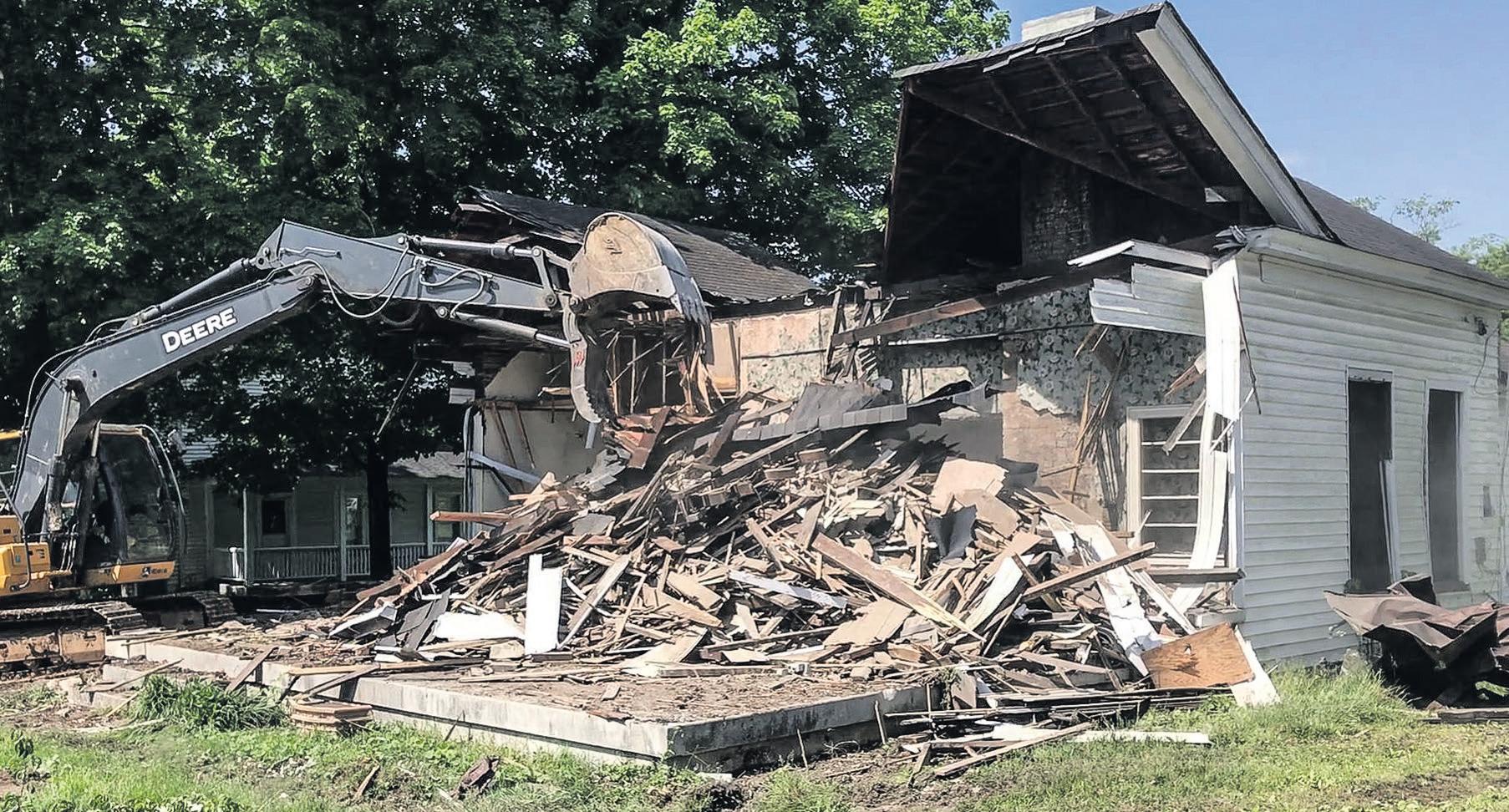

Earlier this year, Franklin’s Charge removed a building known as the Spivey House from the battlefield. It stood just south of the Carter House on ground where some of the most intense fighting took place. Browns Division took heavy losses as they crossed the property moving north toward entrenched infantry and artillery in their attempt to break the Federal lines. Ultimately the line was broken, but Ohioans under Col. Emerson Opdycke’s Brigade came up from the rear, filled the gap, and stopped the breach, helping
preserve the Union victory. The Spivey house had been used as a ceramic shop for almost fifty years. Seller Helen Spivey noted she was glad the land would be reverted back to the Carter Farm after the sale. The less than an acre parcel was purchased for $1,365,000 with Tennessee’s State Historical Commission providing a grant of $630,000, the National Park Services American Battlefield Protection Program $637,000, with the rest coming from private donations through Franklin’s Charge. The building was demolished in May; the ground is now an open lot soon to be restored and interpreted as part of the larger Carter Hill Battlefield Park.
Gregory L
has been involved in Franklin preservation since 2005.
31
News Subscribe at CivilWarNews.com
November 2020 Civil War
Aerial view of the most recent purchase. The Harpeth River borders the property one side and with the Lewisburg Pike on the other. This property was the extreme right of the Confederate attack. Courtesy of Parks Auction.
The Spivey House being recently demolished. Gregory L. Wade.
Wade
He is the founder of the Franklin Civil War Round Table, an author and speaker to many Civil War related groups.
Digitized U.S. Patents
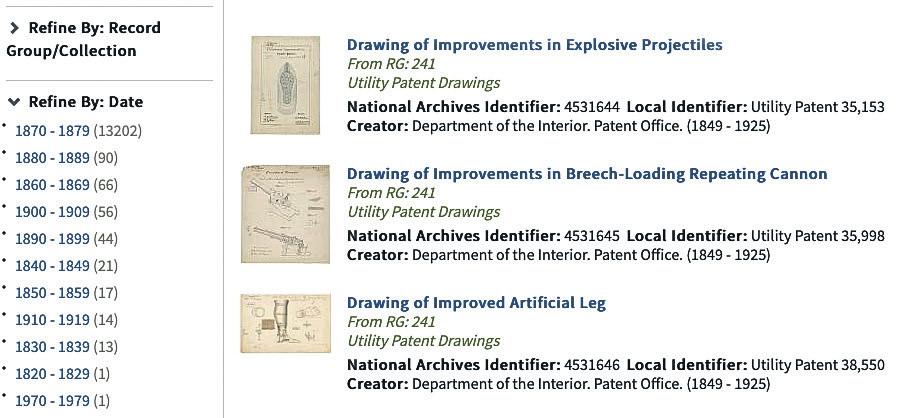

experience worthy of a patent! Let Major General William S. Rosecrans shed a little light (see image at beginning of this article) on the path of researching the American Civil War!
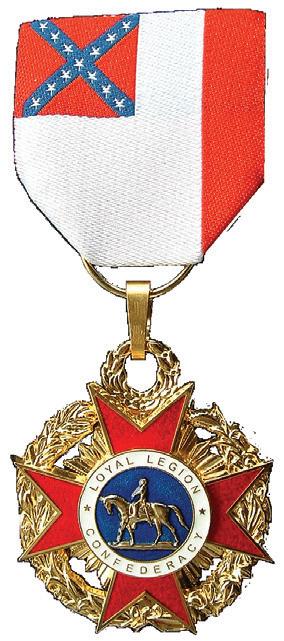
Michael K. Shaffer is a Civil War historian, author, lecturer, instructor, and a member of the Society of Civil War Historians, the Historians of the Civil War Western Theater, and the Georgia Association of Historians. Readers may contact him at mkscdr11@gmail.com, or to request speaking engagements, via his website www.civilwarhistorian.net. Follow Michael on Facebook www.facebook.com/ michael.k.shaffer and Twitter @ michaelkshaffer.
Patent: “To secure the exclusive right of a thing to a person; as to patent an invention or an original work to the author;” as defined in Webster’s 1828 American Dictionary of the English Language. Recently, the National Archives published online almost 3,000 patents, previously lost in an 1836 fire. In 1837, Congress authorized the restoration of many of these documents, so today’s researcher can view the various designs. Different sections of the National Archives website offer distinctive files and date ranges. For this exercise, let us use this link: https://catalog.archives.gov/search?q=*:*&f.parentNaId=305888&sort=naIdSort%20 asc&offset=40.
As seen in the image above, in sorting with dates, one finds 66 files between 1860–1869, the preferred selection for our Civil War study. This writer reviewed each of these images and identified 28 patents from the war years. A fascinating array of inventions from other dates exist,



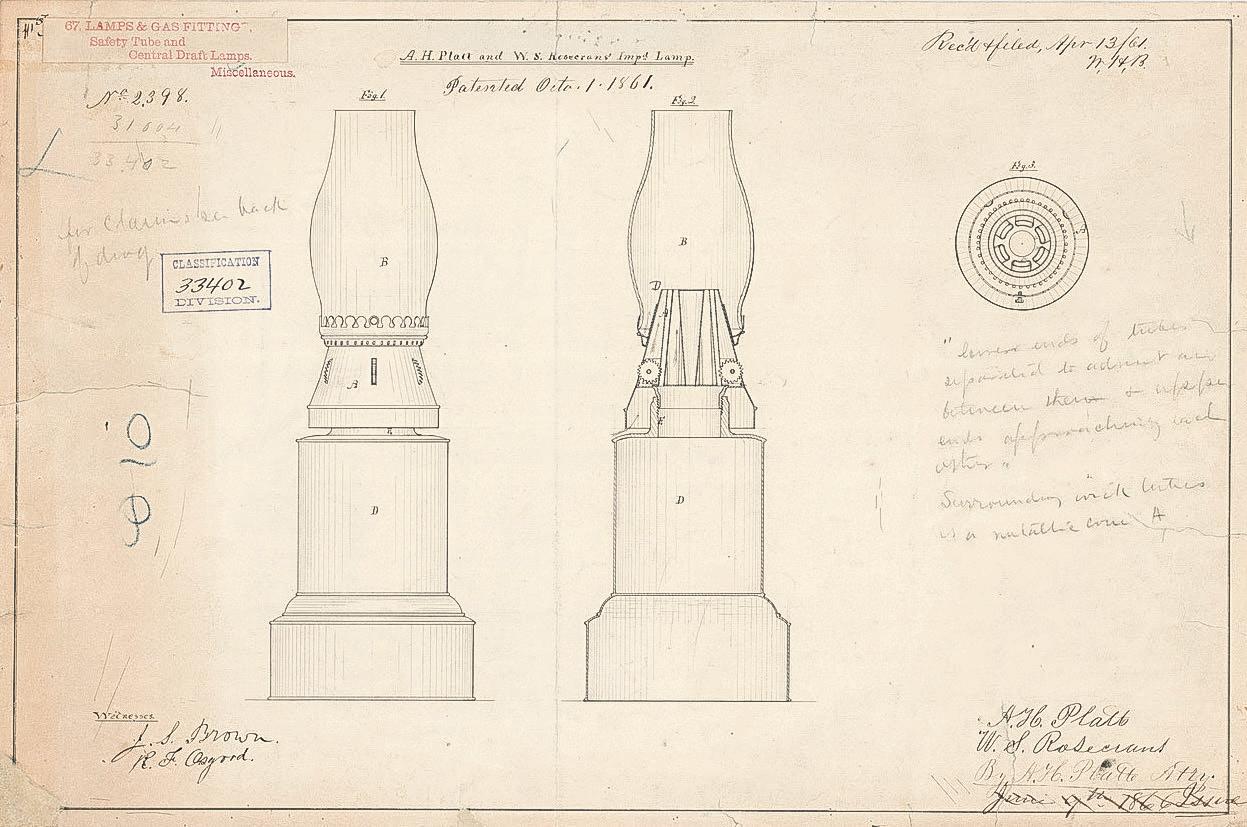
so explore! Users can establish a free account, which allows one to save research documents for future reference. The following offers a few examples from the collection.
Stepping into the past through viewing designs of necessity, those for profit, or plans to enhance everyday life, affords an
Unfortunate circumstances prompted a need for artificial limbs, like this leg, from George Jewell, 4531650.
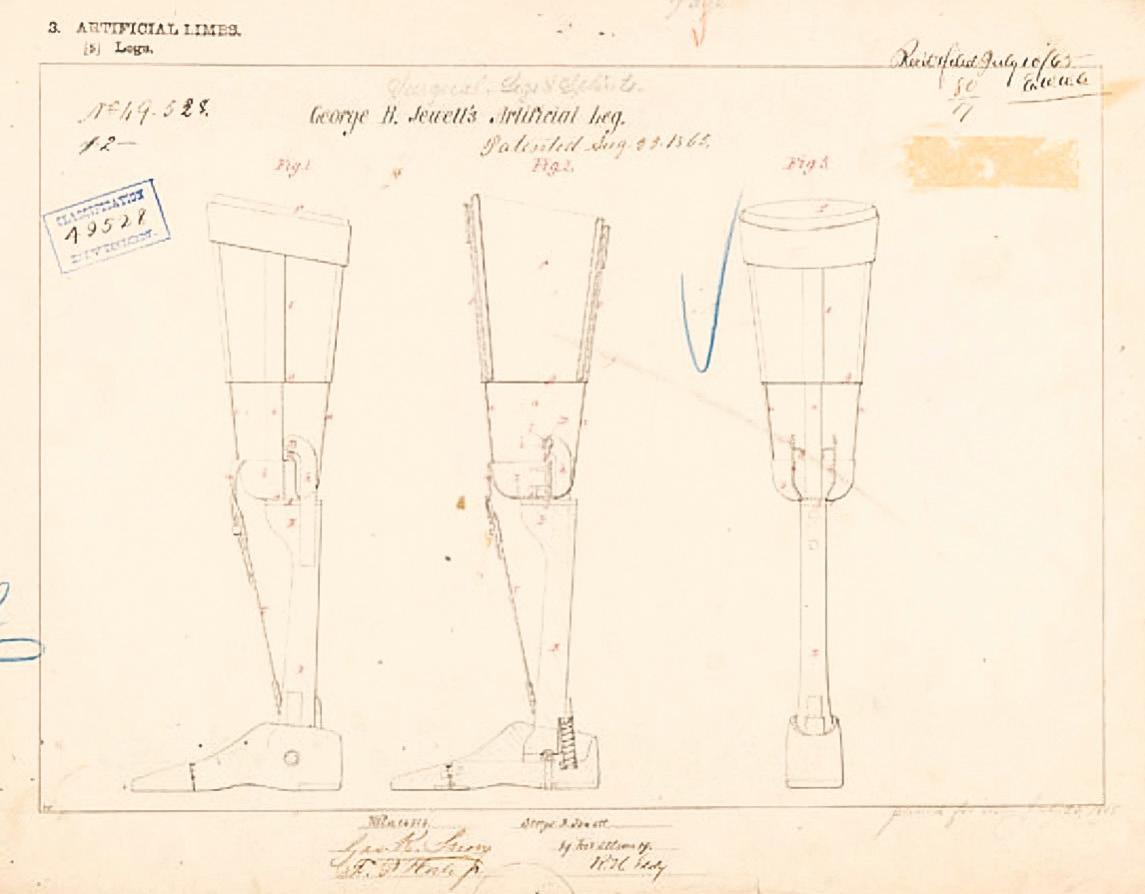
32 Civil War News November 2020
Patent for the Pratt & Rosecrans Lamp, #6018772.
Search results from National Archives.
Spencer patent for breech-loading rifle, 4531639.
Loyal Legion of the Confederacy CSA National Defense Medals & other banned internet items Civil War Recreations WWW.CWMEDALS.COM cwmedals@yahoo.com 1 Smithbridge Rd., Unit 61, Chester Heights, PA 19017
Richard Gatling’s Improvements in Firearms, 102278480.
This writer’s favorite, a patent for an army combo cloak/mattress 4531655. One can visualize several officers, North and South, getting their money’s worth from this accouterment!
Digital Issues of CWN are available by subscription alone or with print plus archives from 2012 at CivilWarNews.com
A Race In The Mud Knoxville Campaign – Part I
“On several occasions during the war [Jefferson Davis] came to the relief of the Union army by means of his superior military genius.” – U.S. Gen. Ulysses S. Grant
On September 20, 1863, Gen. Braxton Bragg won the Battle of Chickamauga, Ga., the largest Confederate victory in the Western Theatre. Instead of using the momentum of victory to fight the Federals, the Confederates turned to resolving conflicts within their own army. Bragg and Gen. James Longstreet did not get along. Furthermore, the promotion of Gen. John Hood created a conflict within the command structure of Longstreet’s army, pitting generals Lafayette McLaws and Micah Jenkins against each other. Longstreet’s request that “any good major-general to be found elsewhere” be given the command was denied. President Jefferson Davis’s solution was to send Longstreet to attack U.S. Gen. Ambrose Burnside’s Army of the Ohio at Knoxville, Tenn.
Bragg considered Longstreet’s departure as “a great relief to me.” Longstreet was against his assignment. By splitting the Confederate forces, he argued “We thus expose both to failure, and really take no chance to ourselves of great results.” But orders were orders. On November 5, due to train delays, the army starting walking towards Knoxville.
The trains connecting Tennessee to Virginia were in desperate need of maintenance, impacting the Confederate supply chain. According to C.S. Col. Moxley Sorrel, “the cars and railway by which we helped the transportation were almost comical in their inefficiency. The railroad was of heavy grades and the engines light-powered. When a hill was reached the long train would be instantly emptied— platforms, roofs, doors, and windows—of our fellows, like ants out of a hill, who would ease things by trudging up the dirt road and catching on again at the top; and so it went on as far as the railroad would serve us.”
It took eight days for Longstreet and his men to travel the sixty miles to Sweetwater, Tenn. On arrival, expected supplies were not waiting. The men were on short rations, having left “most of our clothing and blankets and all of our wagon transportation” back in Virginia as it was in the “heated season.” They found themselves with “the enemy in front to be captured, and our friends in rear putting in their paper bullets.”
Bragg complained Longstreet was falling behind schedule. Longstreet reminded him that “we were dependent upon foraging for our daily rations for men and animals.” He felt that “it began to look more like a campaign against Longstreet than against Burnside.”
In the meantime, Gen. Ulysses S. Grant inquired if Burnside could “hold Longstreet in check until [Gen. William] Sherman gets up, or, by skirmishing and falling back, can avoid serious loss to yourself, and gain time.”
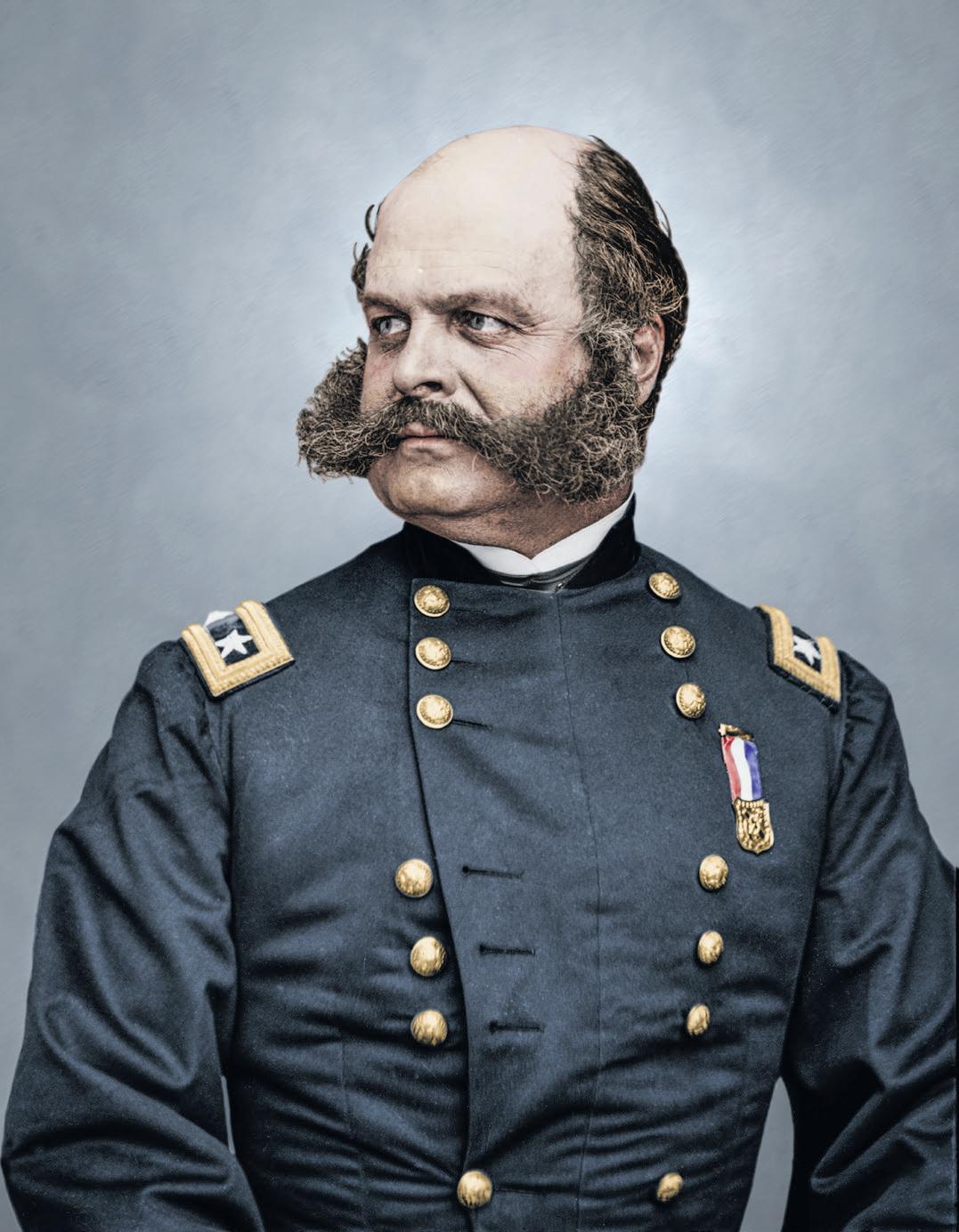
Burnside agreed. Forces were left to strengthen Knoxville’s defenses as Burnside led 5,000 men to Loudon, Tenn., where the 36th Mass. Volunteers were busy building their permanent winter camp.
On November 15, near Loudon, Longstreet crossed the Tennessee River.
The enemy was five miles away. Eight miles further was Lenoir’s Station. If Longstreet arrived first, he could block Burnside’s retreat.
But by the time Longstreet reached Lenoir’s Station, Burnside was gone.
At 2 a.m., in a pouring rain, Burnside’s men were heading toward the crossroads at Campbell’s Station. A Confederate sympathizer tipped off the Rebels to a short cut to the crossing; the Federals were
alerted to the pursuit. It was a “race” through the mud. “It was dark and disagreeable,” recalled Pvt. William Todd, 79th N.Y. The wagons sank in mud holes and the men hauling them out became so covered “with the splattering mud that it was difficult to tell them from the surrounding soil.” The order came to abandon 100 baggage wagons. The 23rd Mich. was tasked with “cutting the spokes of the wagon wheels, cutting up or burning the harness, tents, officers’ baggage, ... while barrels of bacon, coffee, and sugar were burst open and distributed to the men, and what they could not take was destroyed.” Still the Confederates were able to retrieve 100,000 rounds of rifle ammunition, artillery rounds and “... all kinds of good things.”
On November 16, Burnside reached Campbell’s Station first, deploying his men in a “beautiful position” across the narrow valley. Longstreet’s men arrived fifteen minutes later. McLaws’s Division were positioned in the woods to the left of the station with Jenkins’s on the right. Gen. Alexander Porter’s 17 cannon were placed behind them in a meadow. Longstreet knew he
outnumbered the Federals, “as the enemy stood he was ours.”
The 36th Mass. Volunteers had held the crossroads to protect the last of the Federal troops and wagons to pass. The men then moved to support Capt. Jacob Roemer’s 34th N.Y. Light Battery with their two 3-inch ordnance rifles on the left of the road and Lt. Benjamin’s Battery E, 2nd Artillery, with four 20-pounder Parrotts on the right. “At noon the rebels came out of the woods just beyond the village, in two lines of battle, with a line of skirmishers in front. The whole field was open to our view. Benjamin and Roemer opened fire at once; and so accurate was their range that the rebel lines were immediately broken, and they fell back into the woods in confusion.”
Longstreet decided to send generals Evander Law and George Anderson’s men on a flanking maneuver along a concealed route on the left. Alexander’s guns opened fire. Defective ammunition diminished its impact. Worse, a 20-pdr. Parrott rifle exploded injuring its crew. Law sent to word to Jenkins that he had “obliqued so much to the left as to have gotten out of its line of attack.”
Darkness ended the fight. Burnside quietly withdrew the muddy sixteen miles to Knoxville. To the frustration of the Confederates, the opportunity to capture Burnside was lost. Jenkins considered Laws’s mismanagement of the flanking maneuver, “this careless and inexcusable movement lost us the few moments in which success from this point could be attained.” One
of Alexander’s artillery officers contended, “If our infantry had been handled with anything like the skill and dash with which the artillery was handled that the greater part of Burnside’s force would have been captured before he got to Knoxville.” On the other hand, Burnside continued to gain Grant the needed time to prepare for the Battle of Missionary Ridge, Tenn.

Sources:


• Longstreet, James. From Manassas to Appomattox Memoirs of The Civil War in America: J. B. Lippincott Company, 1895
• Burrage, Henry S. History of the Thirty-Sixth Regiment Massachusetts Volunteers, 1862–1865: Rockwell and Churchill, 1884.
• Sorrel, Gilbert Moxley. Recollections Of A Confederate Staff Officer: The Neale Publishing Company, 1917
• Korn, Jerry, and the Editors of Time-Life Books. The Fight for Chattanooga: Chickamauga to Missionary Ridge. Alexandria, VA: Time-Life Books, 1985.
• Wert, Jeffry D. General James Longstreet: The Confederacy’s Most Controversial Soldier: A Biography: New York: Simon & Schuster, 1993.
Stephanie Hagiwara is the editor for Civil War in Color.com and Civil War in 3D.com. She also writes a weekly column for History in Full Color.com that covers stories of photographs of historical interest from the 1850’s to the present. Her articles can be found on Facebook, Tumblr and Pinterest.

33 November 2020 Civil War News
Major Gen. Ambrose Burnside. Colorization © 2013 civilwarincolor.com, courtesy civilwarincolor.com/ cwn. Library of Congress.
General James Longstreet. Colorization © 2015 civilwarincolor.com, courtesy civilwarincolor.com/ cwn. Library of Congress.
by Sarah Kay Bierle
“Let’s see, the artillery was… there.” Finding artillery positions is one of my hobbies when I’m working on a battlefield. Look for great high ground, gentle slopes, and open fields. Some positions, untouched by development, offer the opportunity to study how artillerists used the reverse slope or created deadly surprises by using the topography to their advantage.
At Fredericksburg, most of us probably think of the Confederate field artillery and the crossfire created from Marye’s Heights. That’s the infamous high ground that Union soldiers, including the famed Irish Brigade, charged multiple times on December 13, 1862. Confederate artillerist E.P. Alexander reportedly said his artillery cross-fire covered the open ground so precisely that a “chicken could not live on that field.” But there are some lesser-known artillery stories on the Confederate side of the river and on the other end of the line from Marye’s Heights. Two of these other artillery positions have been preserved by Central Virginia Battlefields Trust (CVBT) and both were occupied by young officers during the Battle of Fredericksburg: Pelham’s Corner and Latimer’s Knoll.
Shots from a 12-pounder Napoleon positioned behind a cedar hedge and hidden in a natural depression opened the battle on Dec. 13, 1862, enfilading the Union’s left flank. Moments before, Confederate Gen. J.E.B. Stuart had sent a message to Gen.
Pelham’s Corner & Latimer’s Knoll: Artillery Positions To Visit, Stories To Tell

Robert E. Lee, saying, “. . . I am going to crowd them with artillery.” Southern artillery batteries held Lee’s right flank, anchored on Prospect Hill and then extending with about eighteen guns to guard the far flank. Major John Pelham, the twenty-four year old who had organized the Stuart Horse Artillery and turned it into a powerful fighting unit, saw an opportunity to cause chaos and destruction on the battlefield.
Receiving Stuart’s permission, Pelham advanced, taking position in the basin-like depression. The advanced cannon opened fire on Union troops preparing to cross Slaughter Pen Farm, who initially thought they were under fire from drunken artillerymen in blue.

However, the major in gray knew exactly what he was doing. John Pelham, an Alabamian and former West Point cadet, had spent a year perfecting surprise bombardments and advanced artillery positions, and already won the confidence of Stuart and “Stonewall” Jackson.
Fredericksburg culminated his year of successes and developing tactics and drew compliments from General Robert E. Lee: “It is glorious to see such courage in one so young.”
The fight soon turned unequal with five Union batteries attempting to silence the noisy Napoleon; Parrott rifles on Stafford Heights also joined the barrage. Pelham refused to leave and repositioned his gun to keep enemy artillerymen from finding the exact range.
When he finally retired with an empty ammunition chest and eleven casualties from the gun crew, he brought back the legend of delaying the Union army for over an hour with one cannon.
Beginning in 1999, CVBT started preservation efforts in the area

of Pelham’s advanced position. Thanks to the cooperation and a generous donation from Silver Companies and CVBT partners, Pelham’s Corner preserves 4.5 acres as a gateway to further interpreting both artillery and the far flank of the Fredericksburg lines. A cannon, stone marker, and interpretive panels now mark the site which is open for visitors. Another artillery site that CVBT preserved is Latimer’s Knoll, located near the intersection of Landsdowne Road and Lee Drive. Now incorporated into Fredericksburg National Battlefield and protected by the National Park Service, this 104 acre tract was saved in 2004, and is related to another artillery major fighting on Jackson’s line that Dec. 13, 1862.
Joseph Latimer, a nineteen year old Virginian who had attended Virginia Military Institute and studied artillery under “Stonewall” Jackson, acted as chief of artillery for General Ewell’s Division at the Battle of Fredericksburg where he commanded six batteries. With battle experience in the 1862 Shenandoah Valley Campaign and Cedar Mountain, Latimer would officially be promoted to major the following spring.


As Meade’s troops assaulted Jackson’s line, Confederate infantry retreated, leaving Latimer’s cannon unprotected. The Federal rifle fire grew too hot, and the Confederate artillerymen could not return fire nor remove the guns. With his pieces in danger of capture and the Confederate line under heavy attack, Latimer looked for reinforcements. Spotting infantry in the trees behind him, he rushed toward their line, waving his cap to attract attention. “Don’t come
up here unless you will promise to support me!”
The soldiers, Alabamians and North Carolinians from Law’s Brigade, reassured the teen officer that all would be well and launched a counter-attack, saving the cannon, holding the artillery position, and ploughing into the attacking Union soldiers, driving them back. In his official report, General Early, a brigade commander in Ewell’s Division, wrote: “To Captain Latimer is due the credit of having performed all the duties of his position efficiently and intelligently, and of having displayed great gallantry under fire. This young officer is one of great promise, and deserves promotion.”
Both young officers, Pelham and Latimer, died the following year. Pelham was mortally wounded at Kelly’s Ford, and Latimer died of injuries received at Gettysburg. However, during the Battle of Fredericksburg, their skill and courage, daring to hold artillery in advanced positions or secure the safety their batteries, helped change the course of the
battle and won high praise. Today, both sites, Pelham’s Corner and Latimer’s Knoll, have been preserved. Though the artillery positions may look somewhat different than their appearance in 1862, the stories linger. High school students have rallied for community service days at Pelham’s Corner and also learned about the artillerymen in blue and gray who dueled with the big guns over this piece of ground. Perhaps it is fitting; where young officers once learned and perfected the lessons of war can now be an open-air, on-location classroom to talk about the Civil War, U.S. History, war and peace, freedom and equality.
The bloodshed is over, the dead are buried and gone, but we can still go the battlefield and talk about the multi-layered stories of our nation’s past. Why did these soldiers fight? What principles were so important that they formed volunteer armies? Their stories must be told and answers sought if we are going to learn from the past.
When I pull off at Pelham’s Corner or Latimer’s Knoll to check on the now-silent artillery positions, I think about those looming, big questions related to the Civil War. But I also think about the young officers who left military schools and rushed to the battlefields. Pelham and Latimer died young, but what did their short lives teach? Perhaps artillery tactics. Perhaps courage.
Sarah Kay Bierle serves on staff at Central Virginia Battlefields Trust. CVBT is dedicated to preserve hallowed ground at Fredericksburg, Chancellorsville, The Wilderness, and Spotsylvania Court House. To learn more about this grassroots preservation non-profit, please visit: www.cvbt.org.
34 Civil War News November 2020
Major John Pelham organized the Stuart Horse Artillery and frequently took cannons to advanced positions.
Captain Joseph Latimer acted as Chief of Artillery for Ewell’s Division at the Battle of Fredericksburg.
Pelham’s Corner, preserved and held by CVBT, is the site of a surprise artillery bombardment during the Battle of Fredericksburg. A 12-pounder Napoleon stands guard.
Latimer’s Knoll, preserved by CVBT and now protected by NPS, is sometimes planted with crops, but is pictured here as an empty field.
Trust Secures
Multifaceted History at Brown’s Ferry
With a history that stretches back to before the founding of the City of Chattanooga, a nine-acre property near Brown’s Ferry is now secure. Through donor support and matching grants from the federal American Battlefield Protection Program and the Tennessee Historical Commission’s Civil War Sites Preservation Fund, the American Battlefield Trust was able to acquire the property, which includes the 1803 Brown’s Tavern.
The fight at Brown’s Ferry was integral for the Union Army of the Cumberland in establishing a much-needed supply line in October 1863, following its defeat at Chickamauga and besiegement in Chattanooga. But the property’s importance precedes the Civil War. Cherokee businessman John Brown owned the 640-acres that housed the tavern and ferry bearing his name from the dawn of the 19th century. He served as a private in Col. Gideon Morgan’s command of Cherokees who fought for the United States in the War of 1812. Brown operated the tavern until 1819, spent a decade living elsewhere, and returned in 1830. The family was forced to leave their home in 1838, as a part of the Cherokee Removal in Chattanooga, a phase of the Trail of Tears, although they later received special federal permission to return. In recognition of this significance, Brown’s
Tavern is listed on the National Register of Historic Places and is included as a stop on the Trail of Tears National Historic Trail.
Continuing the site’s preservation journey, arrangements have been made to transfer Brown’s Tavern, as well as two other properties previously purchased at Brown’s Ferry, to National Park Partners this fall. This outstanding regional group is ideally positioned to steward the sites as it exists to champion conservation of the natural, historic, and cultural resources of all six units of Chickamauga and Chattanooga National Military Park.
The American Battlefield Trust has protected a total of 119 acres associated with the Battles for Chattanooga, inclusive of the Brown’s Tavern land. Other properties are relevant to the fighting for Tunnel Hill during the Battle of Missionary Ridge, of which the Trust is currently raising funds to secure an additional parcel.
For 158th Anniversary, Preservation of 278 Acres Celebrated at Shepherdstown
In September, as history enthusiasts remembered the 158th anniversary of the Maryland Campaign, the Trust announced the successful protection of 278 acres that figured prominently into the Battle of Shepherdstown. The American Battlefield Trust and the Jefferson County Farmland Protection Board (JCFPB) partnered with the U.S. Department
of Agriculture’s Agricultural Land Easement Program to place the substantial property under a conservation easement held by the JCFPB.
Still reeling from the fighting in what remains America’s deadliest day, the September 17, 1863, Battle of Antietam, Union and Confederate forces clashed again at Shepherdstown. On September 19, 1862, elements of Union Maj. Gen. Fitz John Porter’s V Corps pushed across the Potomac River at Boteler’s Ford and struck the Confederate rearguard commanded by Brig. Gen. William Pendleton. Early the next day, Porter pushed elements of two divisions across the Potomac River to establish a bridgehead. Confederate Maj. Gen. A. P. Hill’s Division counterattacked as many of the Union soldiers crossed the river, inflicting heavy casualties and nearly annihilating the 118th Pennsylvania. It is the 278-acre parcel saved at the Borden Farm that marks Hill’s position during the engagement. Ultimately, this counterattack was the root cause of Union forces not having further pursued Gen. Robert E. Lee’s defeated Army of Northern Virginia as they fled Maryland and thus, Shepherdstown ended the Maryland Campaign of 1862.
“With the addition of the Borden Farm, we have made a substantial step towards our vision of protecting Jefferson County’s remaining productive agricultural soils and water resources,” said JCFPB director Elizabeth Wheeler. “While the protection of Jefferson County’s local farms is vital for the healthy food they provide and the diverse
economy they support, the success at Borden Farm goes beyond as it also helps protect the county’s historic landscapes.”
The Trust announced fundraising efforts to secure the Borden Farm last autumn, in conjunction with other properties at Bentonville, N.C., Chattanooga, Tenn., and White Oak Road, Va. When taken together with previous activities, the Trust has now protected 621 acres at Shepherdstown.
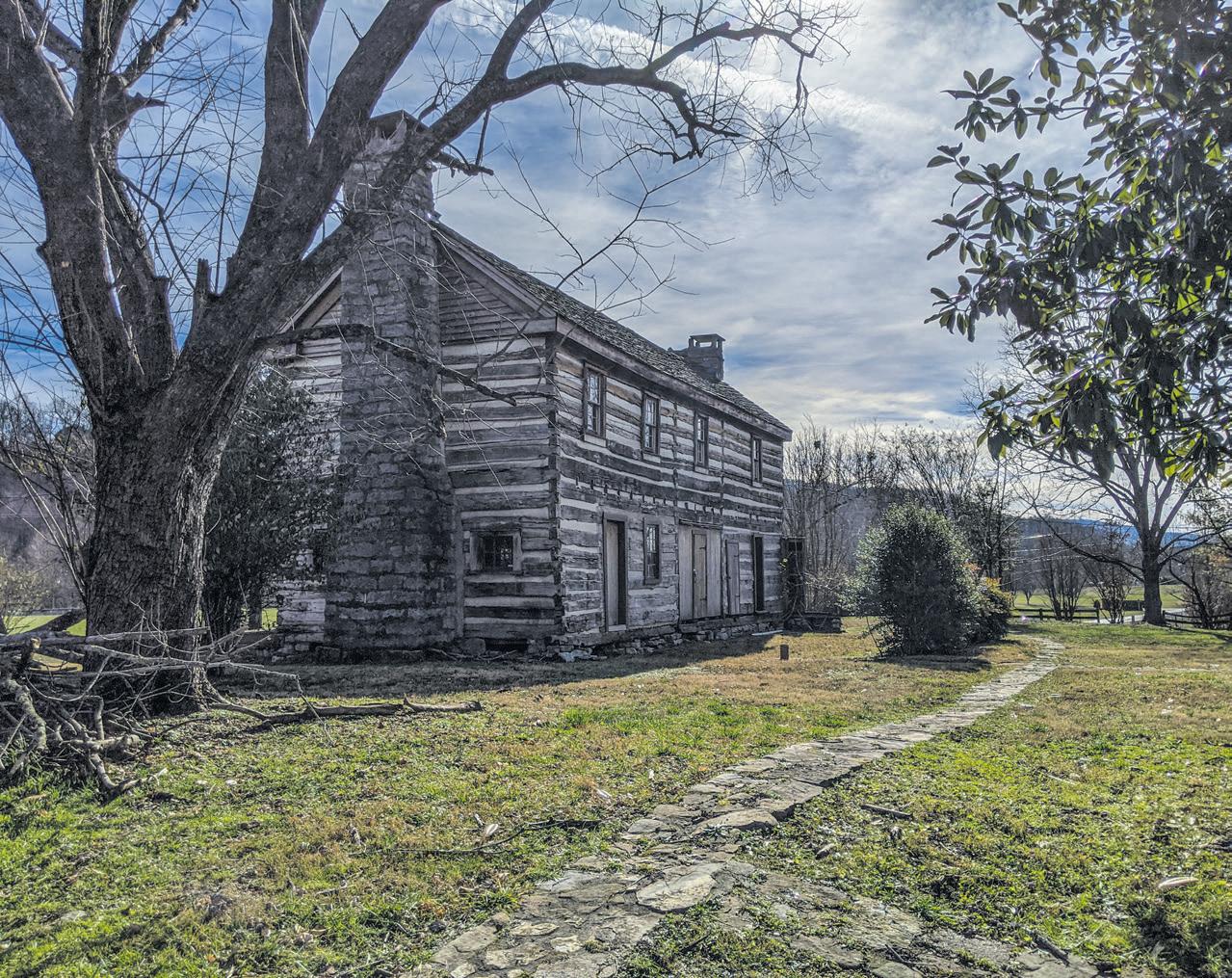
Pivotal Property at the Heart of Franklin Battlefield Preserved
Key to park connectivity, public access, and Civil War education, a two-acre tract of land near downtown Franklin, Tenn. was acquired by the Friends of Franklin Parks and Battle of Franklin Trust, with financial assistance provided by the American Battlefield Trust.
“This partnership is a win-win, not only for the organizations involved, but for the entire community,” said Torrey Barnhill, executive director of Friends of Franklin Parks. “Our Riverwalk and Trails Committee is constantly looking for ways to connect the dots, and this is a key parcel for a future trail system in the City of Franklin’s Master Greenways Plan. The Battle of Franklin Trust recognized its value from a historical standpoint, and we quickly came together to partner on the acquisition.”
Being that the 2.3-acre parcel is largely located in a floodplain, it was less attractive to development—but prime for preservation. Battle of Franklin Trust CEO Eric Jacobson called it the last key undeveloped piece in the heart of Franklin available for preservation. “If we can preserve this as
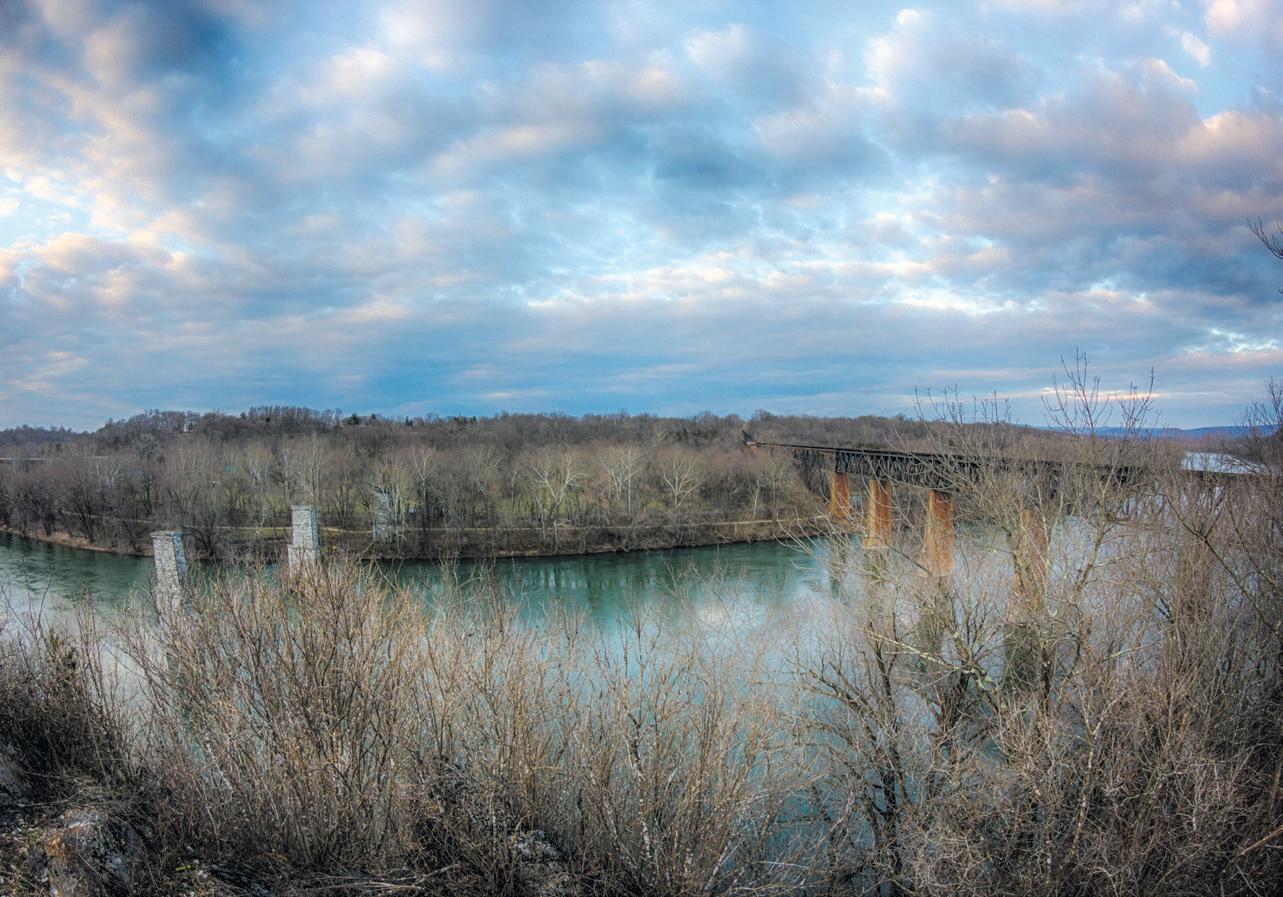
open space, interpret it for educational purposes, and connect to a trail system that facilitates more people having access to it, then it couldn’t be a more perfect opportunity,” said Jacobson, who brought the American Battlefield Trust to the table. Trust President James Lighthizer noted “With every acquisition, this battlefield becomes more whole, more well-interpreted, and more of a draw for those who want to learn about America’s past by visiting the places where those profound events occurred.”
Trust Pursues 49 Crucial Acres at Gettysburg
The Battle of Gettysburg has been studied time and time again, but each new preservation victory adds context to that process. And, if a new fundraising campaign is successful, 49 additional acres across three properties currently being pursued by the Trust, will soon add new layers.
The first tract: Partially situated on the south slope of Big Round Top and along the banks of Plum Run, this property is bordered by preserved land on two sides— anyone standing here during the three days of battle in July 1863, would’ve been encircled by the whirling chaos of warfare.
The second tract: A small but crucial parcel on lower Cemetery Hill, in the shadow of Culp’s Hill, this tract includes a historic home owned by James McKnight. He purchased it in 1860, not knowing that the largest battle ever fought in North America would sweep over the property just three years later. Tens of thousands of Union troops marched through the farmland as they fell back to the fortified Cemetery Hill, with some even buried on the property during the first two days of battle.
The final parcel: Immediately south of the McKnight House, this tract witnessed many of the same events.
With federal matching grants, a landowner donation, and some large gifts already in place, the Trust is seeking $276,700 in private contributions to fund the acquisition—a $5.38-to-$1 match on donations!
The American Battlefield Trust is dedicated to preserving America’s hallowed battlegrounds and educating the public about what happened there and why it matters today.

The nonprofit, nonpartisan organization has protected more than 53,000 acres associated with the Revolutionary War, War of 1812, and Civil War. Learn more at www.battlefields.org.

35 November 2020 Civil War News
Shepherdstown overlooking the Potomac River. Noel Benadom/ American Battlefield Trust.
Brown’s Tavern, dating to 1803, has connections to the Cherokee removal known as the Trail of Tears and to the 1863 Battle of Brown’s Ferry.
Fort McHenry
The Graphic War highlights prints and printmakers from the Civil War discussing their meaning and the print maker or artist’s goals.
One of the more interesting, unplumbed areas of Civil War historical research is the participation of many members of companies, battalions, regiments, and brigades in producing artistic renderings in real time. In other words, it appears anecdotally anyway, that tucked into many units was at least one artist willing to spend time at his craft to record his experience and surroundings. We have, in this column over the past few years, highlighted several who have taken stylus in hand and produced a souvenir of his service for his comrades. This
month we feature Corporal E. S. Lloyd of the 3rd Battalion of Rifles, Massachusetts Volunteer Militia. Little is known of Lloyd. According to available records, we know he was a resident of Boston when he enlisted as a Corporal in Company D, 3rd Massachusetts Rifles. He served only from May until August, 1861.1
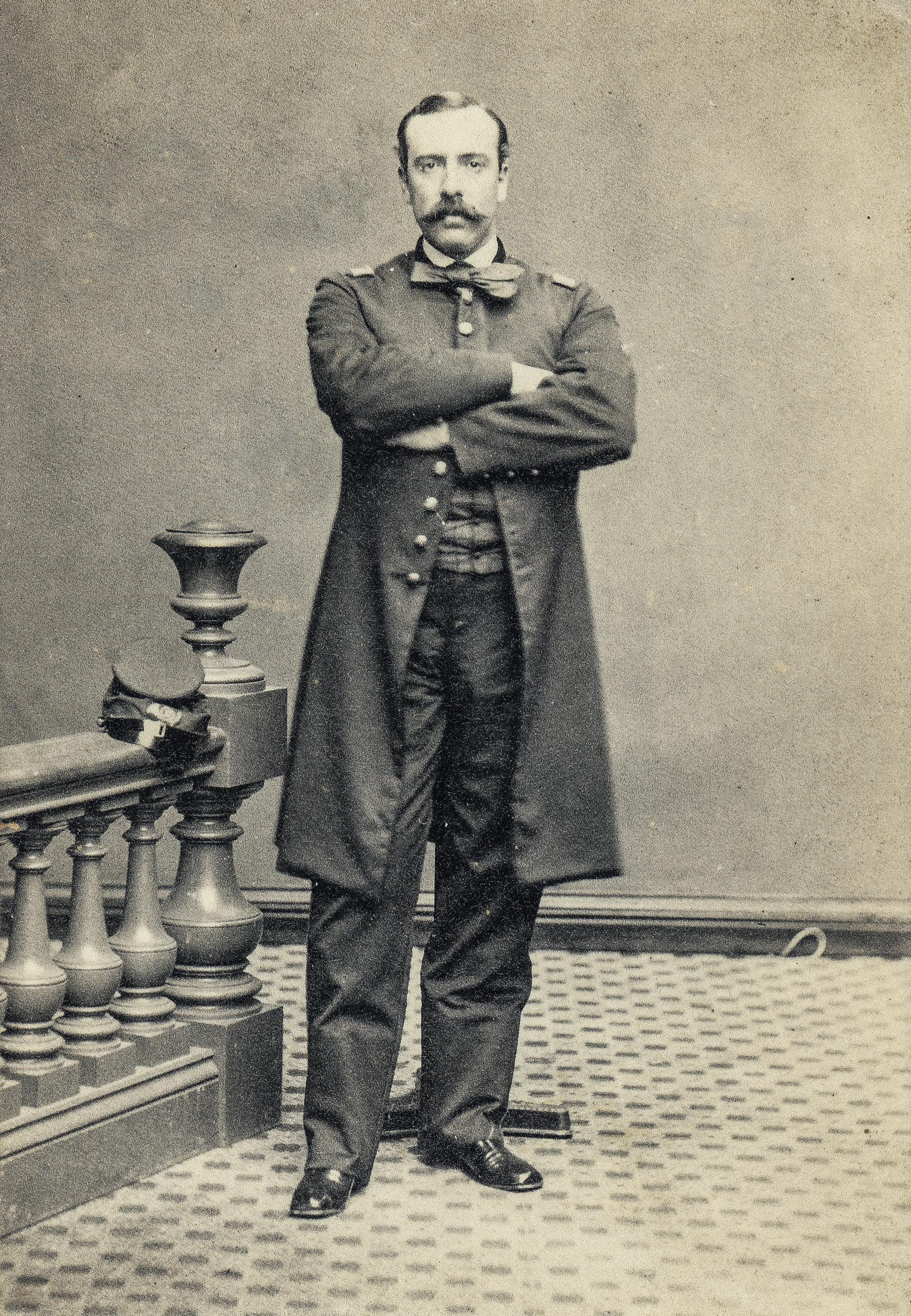
The 3rd Battalion of Rifles, Massachusetts Volunteer Militia, consisted of three companies commanded by Major Charles Devens. They were recruited from central Massachusetts, principally around Worcester. The battalion was ordered to Washington April 20, 1861, and when it reached Annapolis, orders were changed to report to Fort McHenry, Baltimore.
“Meanwhile another company, which had been recently raised in Boston, under the command of Captain Albert Dodd, was … sent to Fort McHenry to join the battalion, arriving at its destination May 15.” The “entire battalion was mustered into the United States service; Captain Dodd’s command became Company ‘D’.”2 It was known also as “Dodd’s Rifles” and, mysteriously, “Dodd’s Carvers.”
Because the battalion served only a three-month enlistment, it spent the entire time at Fort McHenry where company D had very little to do with its moniker “Rifles.” It was principally involved with guard and garrison duty and trained on the heavy artillery guns guarding the fort. “The term ‘rifles’ was
a designation frequently given to antebellum militia companies trained in the use of rifled muskets, a relatively new innovation at the time, as opposed to
smoothbores.

Only minor differences in training and tactics differentiated such units from a typical infantry company of the time. During the 1840s, rifle companies were often expected to train and serve as skirmishers in open order, however by the Civil War, United States Army tactical manuals made no distinction between a company of ‘rifles’ and a typical infantry company.”3 In taking occasional patrols down the Chesapeake Bay, the raw recruits “suffered from overwork.” While they never saw combat, the battalion could not escape the number one cause of casualties during the war, disease.
When its enlistments ended at 90 days, the battalion was asked to remain an additional two weeks until it could be properly replaced. It was finally mustered out on July 30, 1861. Our artist, Corporal Lloyd had very little time to record the battalion’s time of service. We know he produced at least two views of Fort McHenry while he was stationed there. A third view, executed by Baltimore lithographer, Edward Sachse shows a perspective nearly identical to one of Lloyd’s. The print illustrated here by Lloyd is described by one print expert:
“In this early 1861 view there is little to suggest that the war was more than a martial spectacle in
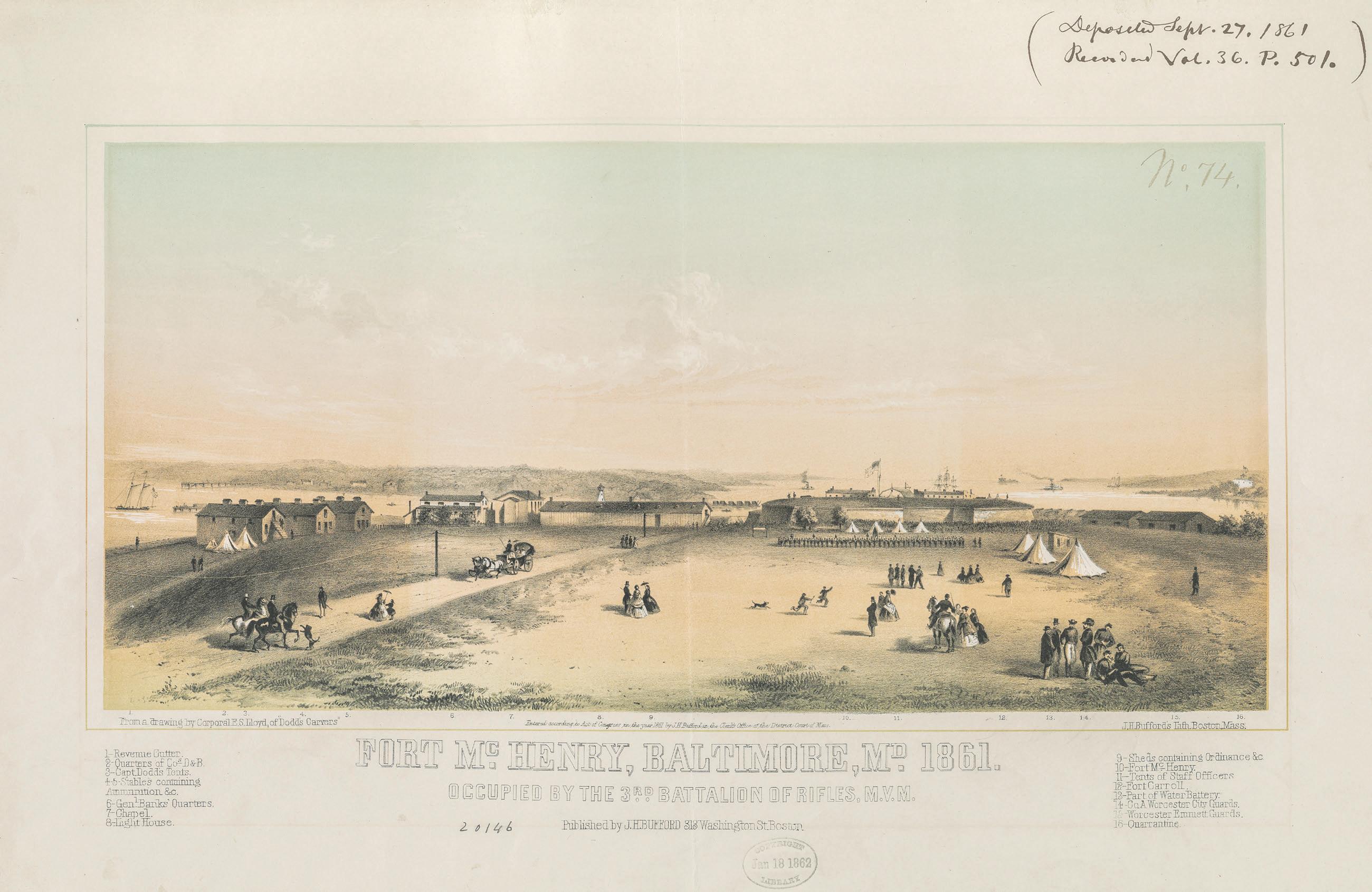
36 Civil War News November 2020
Fort McHenry, Baltimore, Md., 1861, occupied by the 3rd Battalion of Rifles, M.V.M. / from a drawing by Corporal E.S. Lloyd, of Dodd’s Carvers. Bufford’s Lithography. Library of Congress.
Carte de Visite of Captain Albert Dodd, 17th Maine Infantry, also 3rd Massachusetts Infantry; Maine State Archives. From the McDonald Collection.
Fort McHenry in 2016.
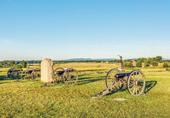
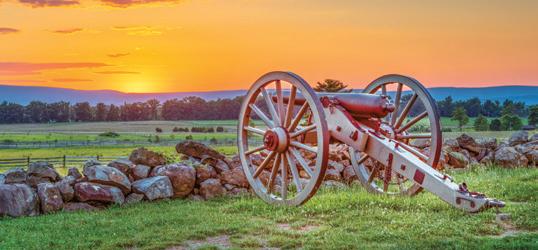


picturesque surroundings as civilian visitors mingle with the troops.”4 The fort was also used to hold Confederate sympathizers and prisoners. This view was published by Boston printer, John Bufford. Lloyd’s other view was printed and published by A. Hoen, Baltimore.
The only mystery surrounding this battalion’s short life is the origin of the term “Dodd’s Carvers,” which appears in the title margin of both of his works. Possibly a faithful reader can enlighten us about artist Lloyd and while they are at it, explain what the “carvers” were.
Endnotes:

1. Massachusetts Soldiers, Sailors, And Marines In The Civil War. Compiled And Published By The AdjutantGeneral In Accordance With Chapter 475, Acts Of 1899 And Chapter 64, Resolves Of 1930. 8 Volumes, V, 303-315. Lloyd is listed Vol. 5, page 313.
2. Ibid., 303.
3. 3rd battalion Massachusetts Rifles. https://military.wikia. org/wiki/3rd_Battalion_ Massachusetts_Rifles






4. Lois B. McCauley, Maryland Historical Prints, 1752 to 1889, Baltimore, Maryland Historical Society, 1975, E60 and E61, 189.
After 43 years in the museum field, Salvatore Cilella devotes his time collecting American prints and maps and writing. His last professional position was President and

CEO of the Atlanta History Center. His most recent books are Upton’s Regulars: A History of the 121st New York Volunteers in the Civil War (U. Press Kansas, 2009). His two-volume Correspondence of Major General Emory Upton, (U. of Tennessee Press, 2017), received the 2017–2018 American Civil War Museum’s Founders Award for outstanding editing of primary source materials. His latest book “Till Death Do Us Part,” an edit of Upton’s letters to his wife 1868–70, was published in May by the Oklahoma University Press.
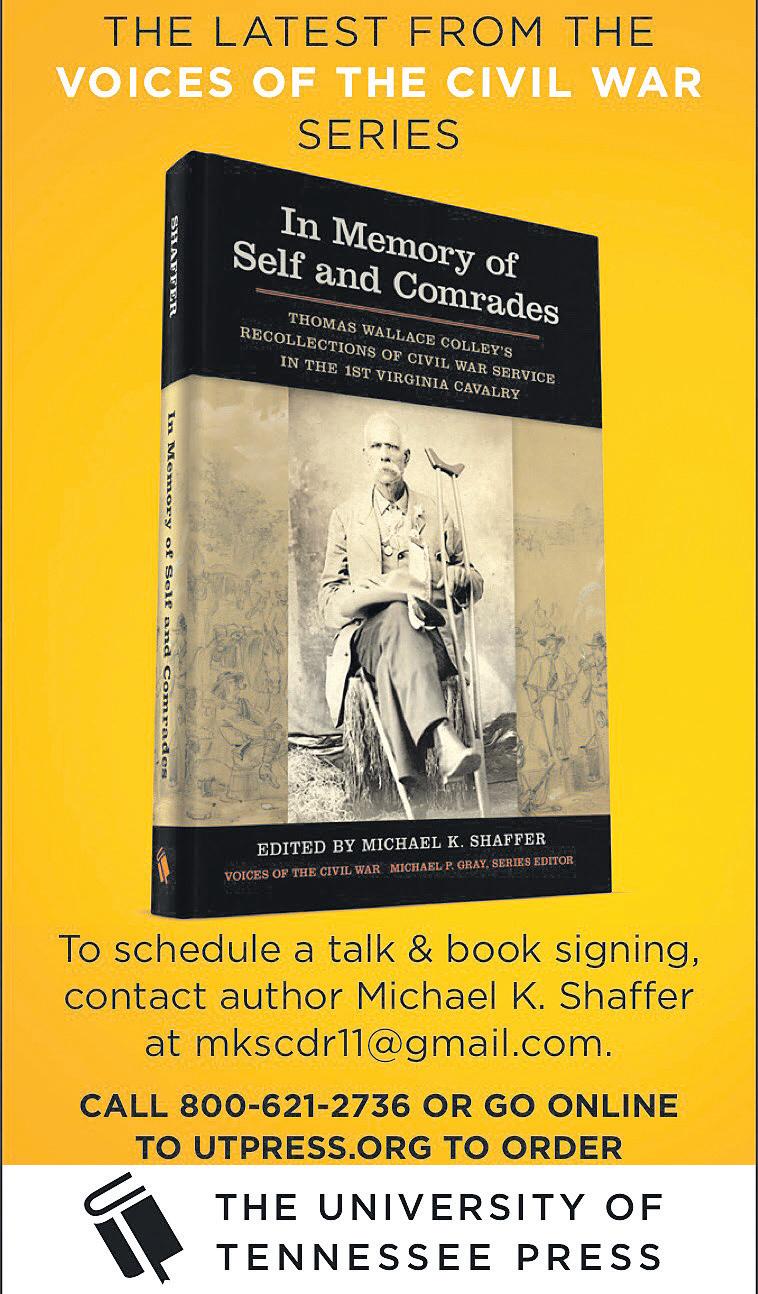

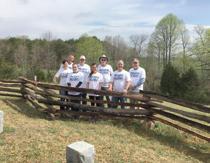

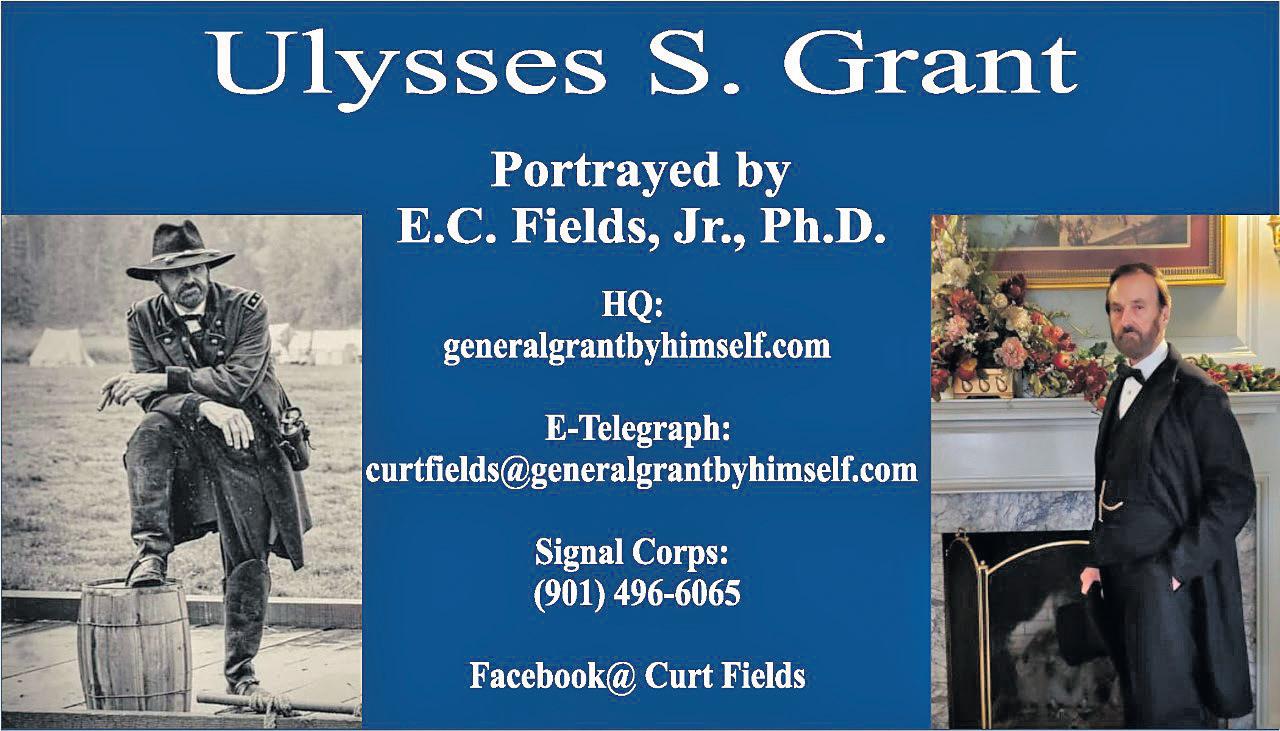
37 November 2020 Civil War News
Historical Publications, LLC Civil War News • 800-777-1862 520 Folly Road, Suite 25 PMB 379 Charleston, SC 29412 www.CIVILWARNEWS.com UP-TO-DATE COVERAGE • PRESERVATION NEWS • BOOK REVIEWS SHOWS, LIVING HISTORY AND REENACTMENTS • HISTORICAL ARTICLES MONTHLY COLUMNS • CALENDAR OF EVENTS STAY INFORMED! Only $38.50/One Year • $66.00/ Two Years THE MONTHLY CURRENT EVENTS NEWSPAPER -FORCIVIL WAR ENTHUSIASTS SINCE 1974 12 ISSUES PER YEAR PRINT & DIGITAL EDITIONS AVAILABLE CALL OR SUBSCRIBE ONLINE TODAY! 2018 CW N 44, $3.50 America’s Monthly Newspaper For War Enthusiasts our have acres states! County, Friends Mountain Civil War Trust’s Path to Preservation CW N 44, No. Pages, Civil War News America’s Newspaper War Enthusiasts Holzer Dancing Inside this Smoke people visit and town industrypeople spirits. mightthen departedplace eating 1863. 1797, McClellan’s ghosts nursed woundedballroom. GettysburgRemembrancePenn., Mo., beenRemembrance the featuresmeant slight meantime, please ball. Dancing the Night Away at the Gettysburg Hotel Poretsky he Lincoln Scholar Harold Holzer’s Oration at the 154th Anniversary of the Gettysburg Address Gettysburg spot—in Abraham one;one clutchingliftingAmerican becauseDouglass history,” hadduring men read great today, been politically some, kneeling believeDespiteroiling country.remember Gettysburg mightgallery,values, elevated let’s secessionconsideredequal—remained reckoning have Today,speech own, other statues Ball held INSIDE EVERY ISSUE
Ballard’s Civil War Military Carbines
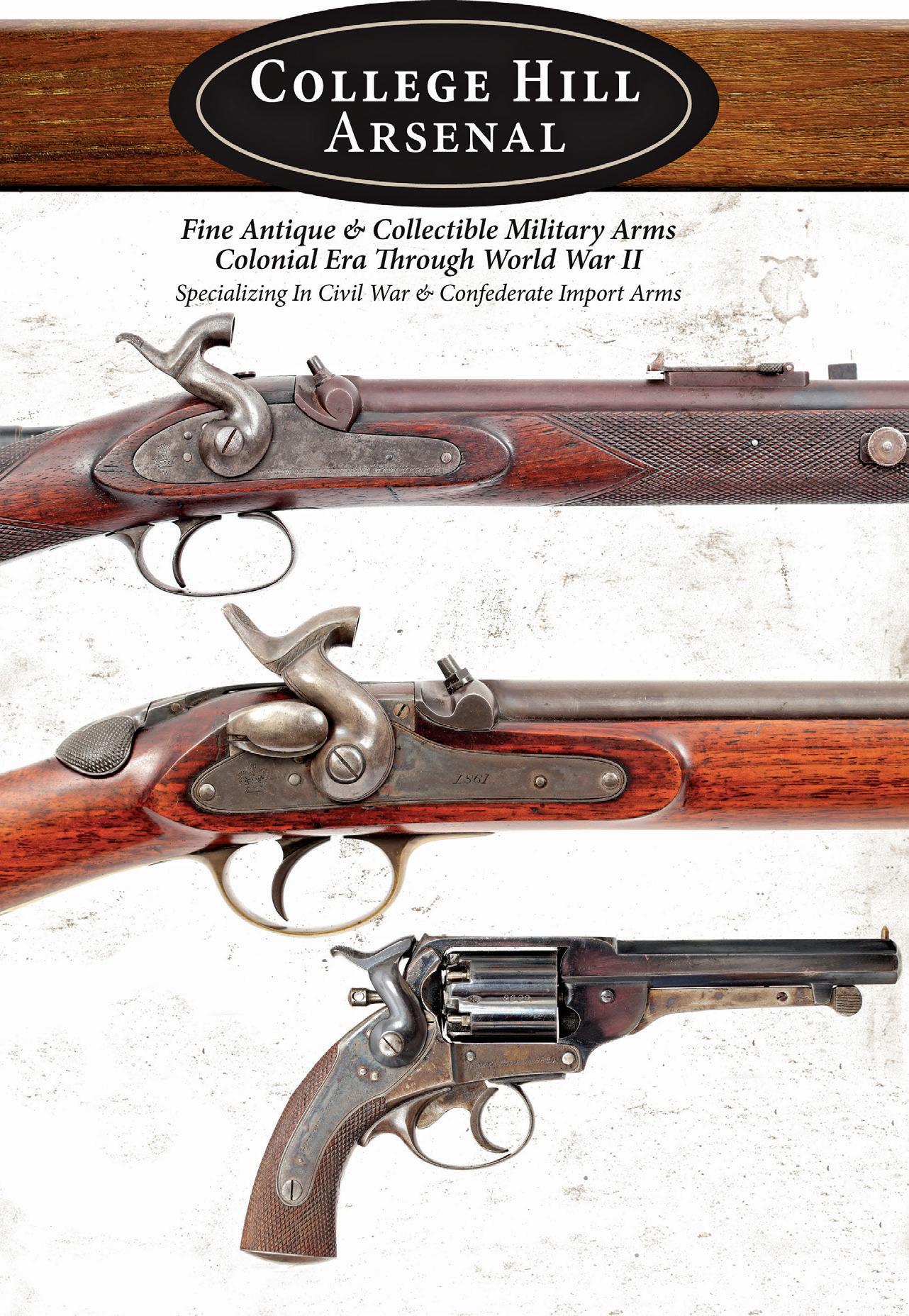
The Ballard Carbine was a breechloading, single shot metallic cartridge firearm invented by Charles H. Ballard of Worcester, Mass. His invention was issued U.S. Patent #33631 in November 1861. Like many budding firearms developers of the day, Ballard was an inventor, not a manufacturer. As a result, he sought a way to market and sell his invention with an eye towards collecting patent royalties, instead of investing in a manufacturing facility to produce his guns. This led to a partnership with the New York sales agents Merwin & Bray, who represented Ballard’s invention, received contracts for his guns, and then subcontracted the gun’s production to other established arms makers.
Joseph Merwin, the principle in

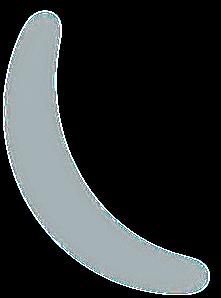


the company, would go on to be principle in the post-war firms of Merwin, Hulbert & Company and the Evans Rifle Company. During the Civil War period he was a major firearms distributor for firms like Colt and Smith & Wesson, and held the exclusive distribution rights to some innovative designs like Plant revolvers and the Ballard carbine.
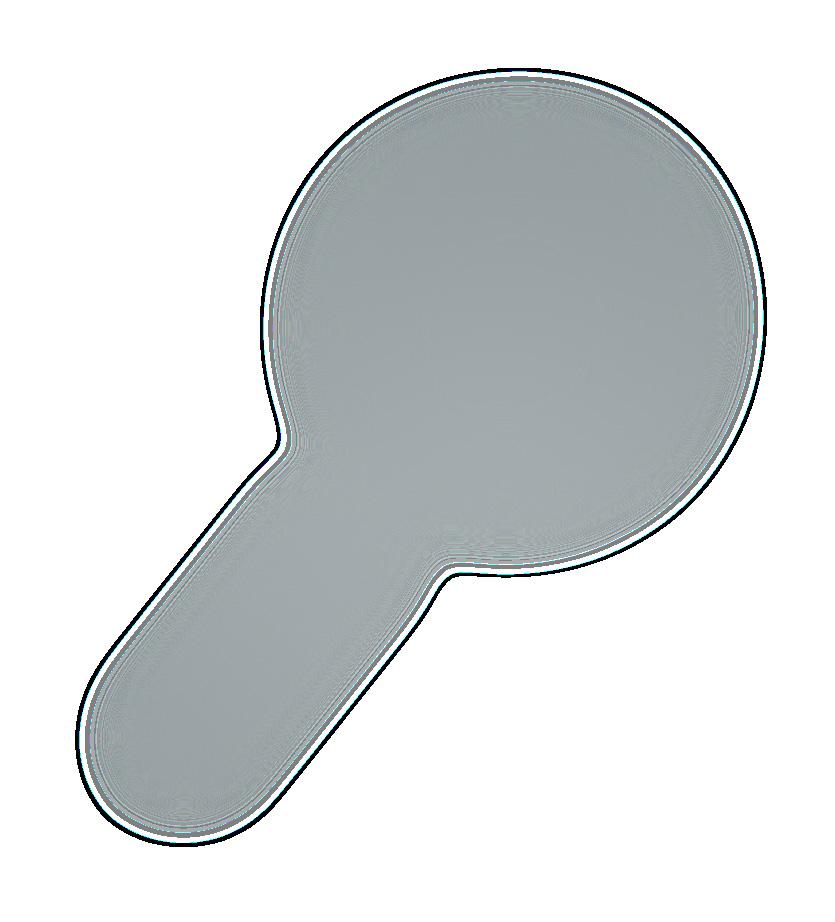


With the Civil War well under way in the winter of 1861–1862, Merwin & Bray found a ready market for the well designed, single shot rim fire carbines and rifles covered under Ballard’s patent. They then negotiated the manufacturing contracts with Ball & Williams of Worcester, Mass., and Dwight, Chapin & Co. of Bridgeport, Conn. After the conclusion of the Civil War,

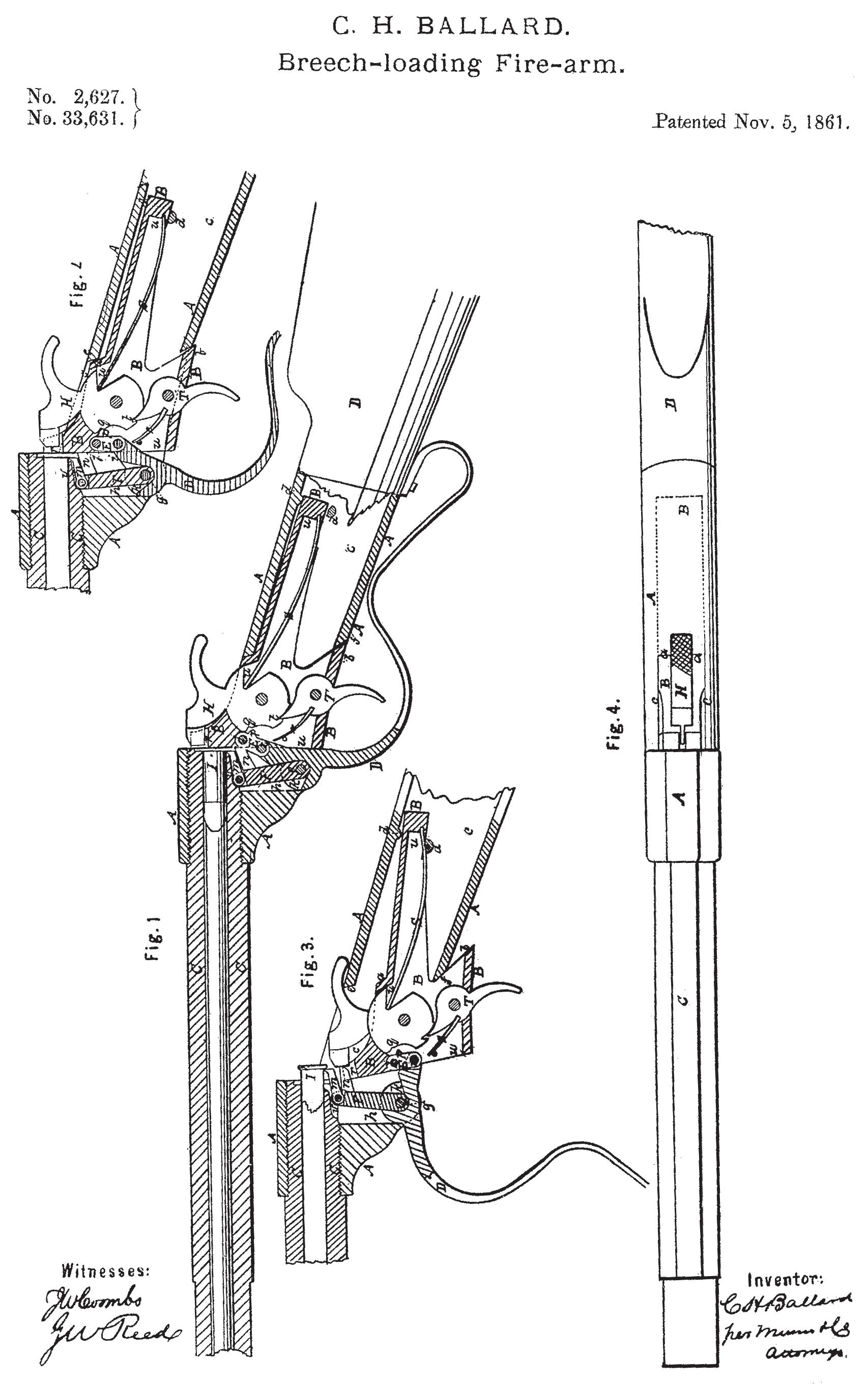
38 Civil War News November 2020 www.CollegeHillArsenal.com Tim Prince College Hill Arsenal PO Box 178204 Nashville, TN 37217 615-972-2418
Charles H. Ballard’s U.S. Patent No. 33,631 for his breech-loading fire-arm.
James Mills’ cartouche in a secondary location on the carbine, on top of the stock comb, forward of the buttplate tang.
three other makers manufactured arms under Ballard’s patents as well, but they are not relevant to this discussion. Between 1862 and 1865, Ball & Williams produced some fifteen thousand six hundred “small bore” carbines and rifles under Ballard’s patent. Of this production about five thousand were sporting rifles in a variety of calibers, about four thousand were military rifles in both .44 and .46 rimfire, and the remaining sixty-six hundred guns were military style carbines in .44 rimfire. The majority of the sixty-six hundred carbines were eventually delivered to the State of Kentucky for use by their cavalry. The U.S. Ordnance Department contracted for five thousand carbines in January 1864, but only one thousand five hundred and nine of the guns were delivered, accepted, and marked with Ordnance Department acceptance marks. The Ordnance Department rejected six hundred additional carbines delivered for inspection, and Ball & Williams forfeited the balance of their U.S. government contract to deliver the rest of the guns to the Kentucky, where they were able to sell them at a higher price than the U.S. government offered. Nearly all the remaining carbines produced were sold to Kentucky. Ballard military carbines were issued to, and saw service with, the 3rd, 6th, 8th, 11th, 12th & 13th Kentucky Cavalry (US), as well as the 4th Kentucky Mounted Infantry. The carbines also saw some service with the 2nd Iowa Cavalry and 7th Ohio Cavalry.
An additional five hundred were sold to New York. The majority of the fifteen hundred and nine Ballard carbines accepted by the U.S., roughly twelve hundred of them, were sent to arm the Vermont State Militia following the October 19, 1864, Confederate
Ballard carbines by September 1863, and the company subsequently failed. At this time, Ball & Williams bought both the finished and unfinished guns and parts at auction then proceeded to try and complete the contract. Most sources note that they managed to assemble an additional one thousand carbines and six hundred and thirty five rifles in
56-56 Ballard; most sources note that all but thirty-five rifles ended up being sold to the Kentucky.
The guns finished by Ball & Williams are marked only with the Merwin & Bray and Ballard patent marks, and do not bear any Ball & Williams markings. Additionally, the guns and receivers that originally did have Dwight, Chapin & Co. markings
had those markings removed prior to their sale by Ball & Williams. It appears, however, that at least a few of the carbines finished by Ball & Williams were delivered to the U.S. military, as the example pictured here bears U.S. military inspector cartouches, but is serial numbered 607, well past the one hundred and fifteen carbine deliveries that are noted in

raid on St. Albans, Vt.
A much rarer martial variant of the Ballard carbine exists. The firm of Dwight, Chapin & Company of Bridgeport, Conn., produced these very scarce guns. In the fall of 1862, Merwin & Bray received a contact from the U.S. Government for one thousand Ballard patent rifles and one thousand Ballard patent carbines. Unlike the arms being produced by Ball & Williams, these guns were manufactured in a larger caliber, 56-56 Ballard. This was the same cartridge, with a different name, as the currently issued 56-56 Spencer cartridge (sometimes called 56-52). Ball & Williams were overloaded with their contracts for .44 and .46 Ballards and could not take on any more orders. As a result, Merwin & Bray contracted with Dwight, Chapin & Company to produce the guns. According to most sources, Dwight, Chapin & Company delivered only one




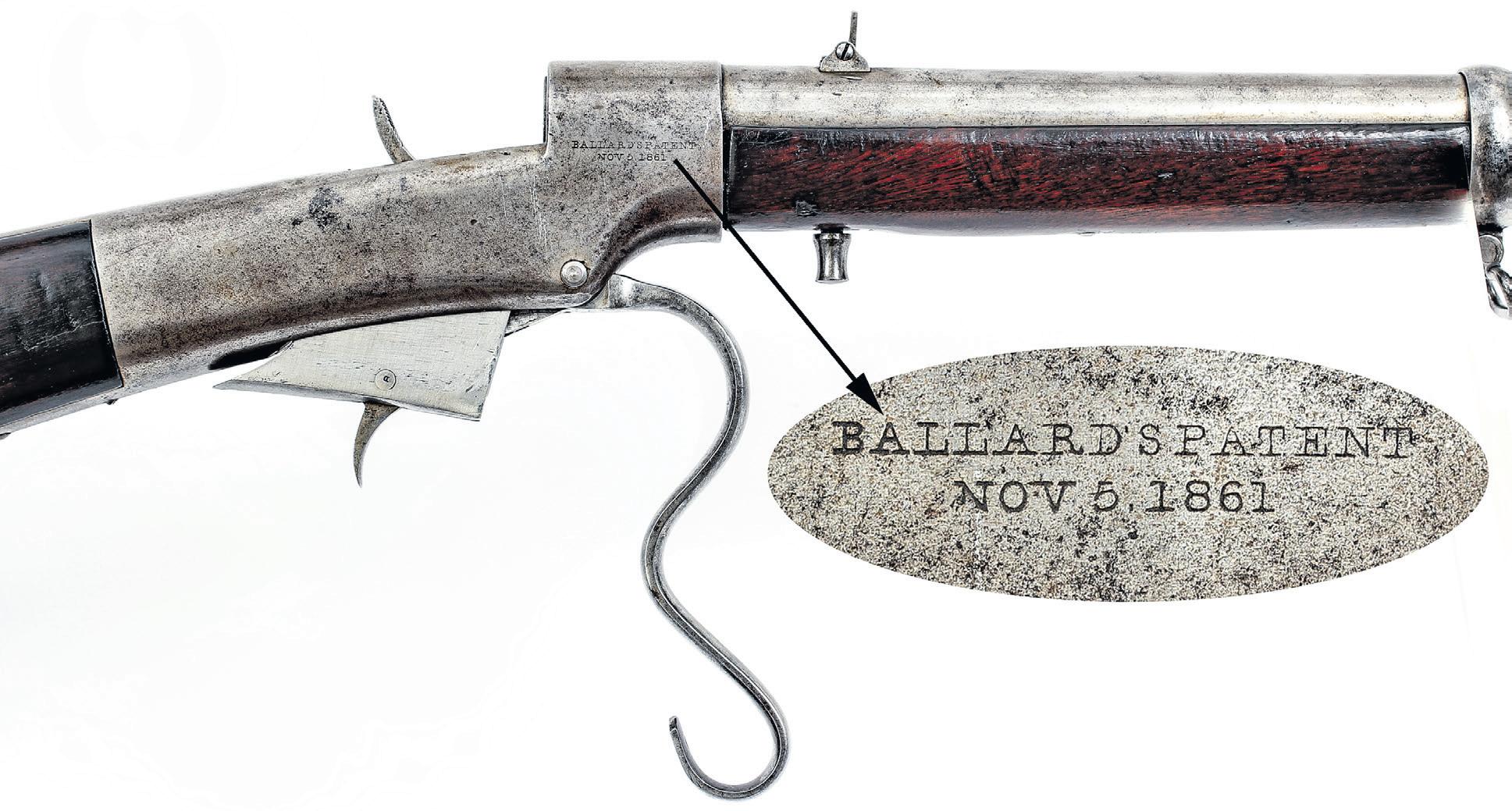
39 November 2020 Civil War News
Obverse receiver view of the carbine showing the action open with the lever lowered. Inset shows patent marking detail on the receiver.
Reverse receiver of Ballard #607 showing marking details and the script JM cartouche of arsenal sub-inspector James Mills who also inspected Smith and 2nd Model Maynard carbines.
Obverse overall view of a .44 caliber Ball & Williams produced Ballard carbine. Note the octagon to round barrel and the longer rear sight leaf to allow more graduations out to longer distances. All photos by Tim Prince.
Obverse overall view of .56 caliber Dwight, Chapman & Company produced U.S. military inspected Ballard Carbine #607.
Reverse overall view Ballard carbine #607. Note the 3rd sling swivel in the reverse butt.
Kentucky state ownership marking on the barrel of a Ball & Williams manufactured Ballard rifle, with detail showing patent markings and Merwin & Bray’s agent mark.
most references. This suggests that completion, deliveries, or at least the acceptance, of the guns, was not necessarily in numerical order.

The Ballard carbine, in its primary Civil War configuration (aka Model 1864), was a single shot, breech loading, .44 rimfire (.44-33-250) carbine with a 22inch octagon to round barrel. The Dwight, Chapin & Co produced examples were chambered in 5656 and had a 20-inch fully round barrel and some references refer

to these as “Old Model” Ballards. The military rifle version of the guns usually had a 30-inch barrel, either half-round half-octagon or fully round, and with either a carbine style forend with a single barrel band or a full-length musket type forend with three barrel bands.
All variants used a simple dropping block action actuated by a lever that doubled as a triggerguard. While most cavalry carbines of the era were usually produced with a sling bar and ring,

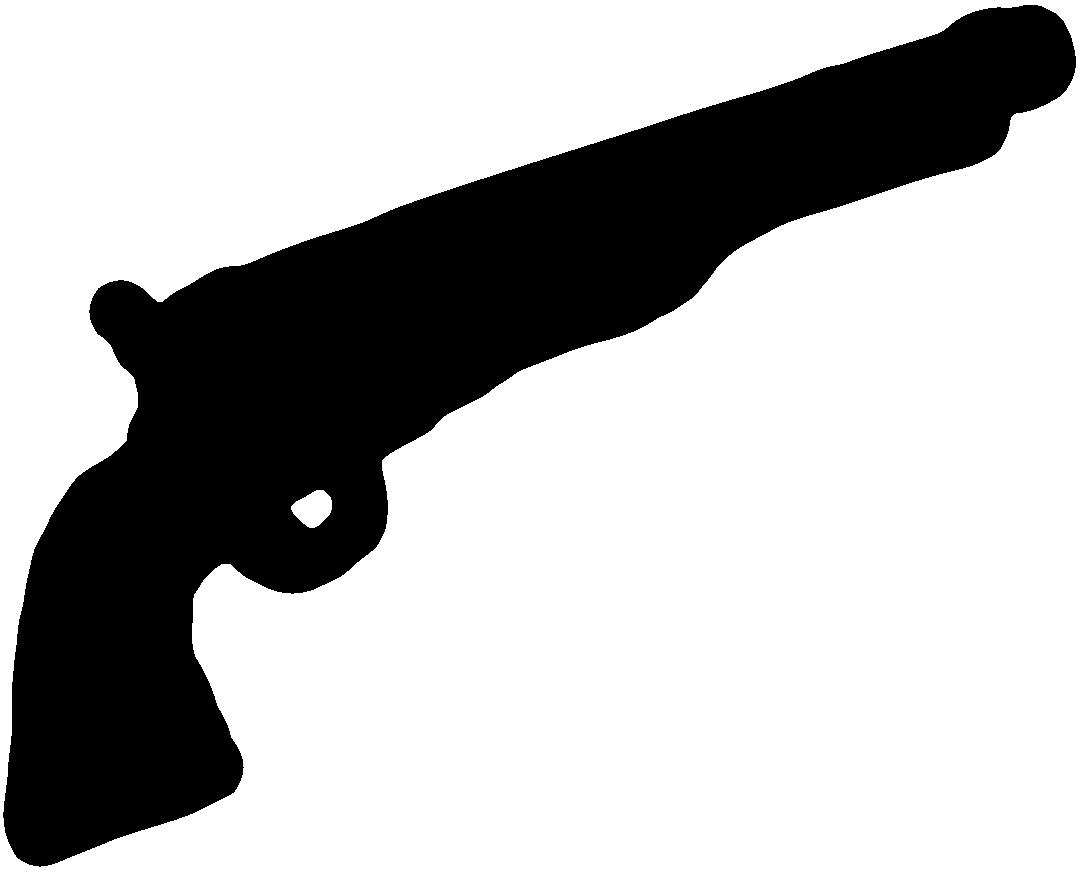

most Ballards were manufactured with a pair of sling swivels, one on the single barrel band and one in the toe of the buttstock. Some carbines had a third swivel on the reverse of the buttstock as well.

The guns had a simple manual extractor system to remove the spent cases. Pulling a small, spring-loaded lever located under the gun to the rear, actuated the extractor. The guns were finished with blued barrels, frames, and furniture, with hammers and breech blocks color
casehardened. Bores were rifled with five grooves. Two versions of rear sights are noted; both are L-shaped leaf sights with the .56 caliber version graduated to 100 and 200 yards. Another L-shaped rear sight that had a pierced aperture in the long leaf for the intermediate distance was included on the .44 and .46 caliber Ballard carbines and rifles. For carbines the graduations were 100, 200, and 300 yards and for the rifles 100, 300, and a very optimistic 500 yards.
lThe U.S. Ordnance Department started to sell off obsolete carbines within months of the end of the Civil War. The first federally purchased Ballard carbines offered for sale were sixty-seven guns in the Allegheny Arsenal inventory. The guns were offered at public auction on January 18, 1866, with a reserve price of $3 each and did not sell. However, more than four hundred Ballards were sold for between .75¢ and $3 each from the St. Louis Arsenal in April 1869. In October 1871, Kentucky sent seventeen hundred and forty-one of their state owned Ballard carbines to the New York Agency, where they were categorized as “100 – New, 996 - Cleaned & Repaired and 645Unserviceable.” In October 1882, the firm of Schuyler, Hartley & Graham purchased over sixteen
hundred surplus Ballard carbines from the U.S. Government at prices ranging from $1.50 to $4 each. In 1901, there were still some four hundred and ninety-five Ballard .44 carbines in inventory at the New York Agency; in June of that year they were sold to Marcus Hartley & Co. for .86¢ each. Interestingly, Hartley owned a large chain of sporting goods stores and had purchased the Remington Arms Company in 1886. I am indebted to the research of John D. McAulay as it was instrumental in untangling the Ballard story.
Tim Prince is a full-time dealer in fine & collectible military arms from the Colonial Period through WWII. He operates College Hill Arsenal, a web-based antique arms retail site. A long time collector & researcher, Tim has been a contributing author to two major book projects about Civil War era arms including The English Connection and a new book on southern retailer marked and Confederate used shotguns. Tim is also a featured Arms & Militaria appraiser on the PBS Series Antiques Roadshow.
ESTATE SALE CIVIL WAR ITEMS
40 Civil War News November 2020 Subscribe at CivilWarNews.com
Cliff Sophia | Proprietor CSArms.com 9150 John S. Mosby Hwy. (Rt. 50) Upperville, Va 20185 for US Mail: PO BOX 602 (540) 592-7273 • SophiaCSArms@aol.com Collector’s Arms 1700-1945 Militaria Specializing in Civil War-World War II Promoters of Quality Shows for Shooters, Collectors, Civil War and Militaria Enthusiasts Military Collectible & Gun & Knife Shows Mike Kent and Associates, LLC • PO Box 685 • Monroe, GA 30655 (770) 630-7296 • Mike@MKShows.com • www.MKShows.com January 30 & 31, 2021 Chickamauga (Dalton) Civil War Show November 14 & 15, 2020 Capital of the Confederacy Civil War Show (Richmond, Va.) December 5 & 6, 2020 Middle TN (Franklin) Civil War Show
Please visit www.MKShows.com for updates and current schedules. Cancelled Cancelled
l
Questions contact: keenerkk@gmail.com or call 937-371-4230 To download a PDF list of the items go to: civilwarnews.com/images/other/estatesale.pdf
– MAKER –LEATHER WORKS (845) 339-4916 or email sales@dellsleatherworks.com WWW. DELLSLEATHERWORKS.COM
My Most Favorite Book Read in 2020
The Enduring Civil War: Reflections on the Great American Crisis, by Gary W. Gallagher. Louisiana State University Press, (2020). 277 pages; illustrated. $34.95.
Renowned Civil War historian, author, and lecturer, Gallagher is an emeritus professor with the University of Virginia. This collection of essays for Civil War Times Illustrated over the last decade covers a wide variety of CW issues and speaks to all enthusiasts. Seriously, it should be read by every buff! Readers will find the essays intellectually challenging as they examine areas of interpretation and memory. They introduce competing versions of history that will stimulate readers. As well, Gallagher re-introduces us to past CW historians who may now be overlooked but remain profoundly relevant to modern readers.
If you are interested in a 1-1/2 hour on-line Sept. 10th, 2020, interview Abraham Lincoln Book Shop conducted with Gary over Zoom on our The House Divided broadcast: https://www.facebook. com/AbrahamLincolnBookShop/ videos/2666742703588795/
Daniel Weinberg
Sons of Tom Cobb, by William Smedlund, Marble, N.C., 2019. This book humanizes the war beautifully. It’s coverage of the major battles highlights one unit, where they were on the field, how they affected the outcome, or were affected by it. My own ancestor served in this unit along with cousins and a brother in law. Being able to follow a specific unit brings home the fact that battles were about individuals and groups of individuals reacting to something beyond their control. That’s not often accomplished.
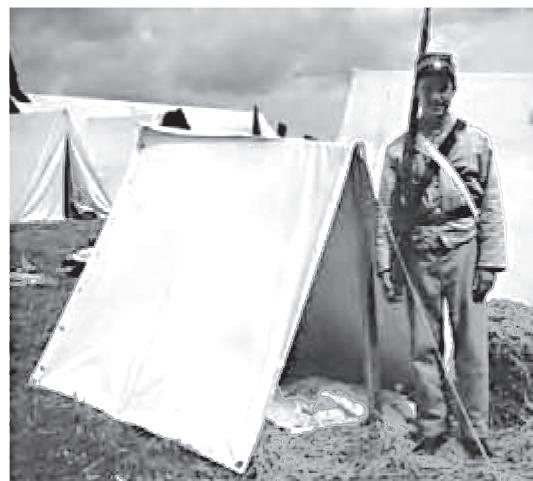 John Thomas
John Thomas
How the South Won the Civil War: Oligarchs, Democracy and the Continuing Fight for the Soul of America, by Heather Cox Richardson, published by Oxford University Press, 2020.
A great book, that really opened my eyes about today’s politics.
David Goetz
Too Useful To Sacrifice, by Steven R. Stotelmyer, Savas Beatie, 2019, $32.95.
This book wonderfully apprised the generalship of George B. McClellan from South Mountain to Antietam and debunks the myths that McClellan had a case of the slows. He responded vigorously to intelligence at hand, moved promptly
on obtaining lost orders, and led from the front. The book is well researched, full of original source material and detailed as to movements, troop positions, and internal rivalries. A great read and well needed to reappraise McClellan’s actions.
Wayne Wolf
Armies of Deliverance: A New History of the Civil War, by Elizabeth R. Varon (Oxford, 2019).
It is a rare accomplishment to produce an entirely new, and entirely convincing, re- interpretation of the Civil War. That is precisely what Elizabeth Varon did in recasting the conflict as a “holy war” for the “political salvation” of victims of a depraved social order, whites as well as blacks. She sees in the Union cause a faith-based nationalism aimed not only at saving the Union, but making it more perfect. This is a well-researched, well-argued, and visionary work. I particularly admired Varon’s acknowledgment that Lincoln’s “malice toward none” policy distinguished between “the rebel chieftains and the duped masters.”
Harold Holzer.
The Real Horse Soldiers: Benjamin Grierson’s Epic 1863 Civil War Raid Through Mississippi, by Timothy B. Smith. Table of contents, maps, illustrations, preface, prologue, bibliography, index, hardcover, 345 pp., 2018, Savas Beatie, savasbeatie.com, $32.95.
Notwithstanding John Ford’s colorful 1959 film based on this episode, The Real Horse Soldiers is an informative, well written account of the successful Union cavalry raid that retains the reader’s attention and interest. It is also a credible, well-researched endeavor, solidly based on archival and other primary sources. The author demonstrates that Grierson’s daring foray deep into rebel territory served as an effective strategic diversion before local Confederate forces realized and thus attempted to counter Grant’s descent on Vicksburg. Excellent maps and photographs complement this must-read contribution to the vast literature of the Civil War that tells the real story.
C. Lee Noyes
The Worst Passions of Human Nature, Paul D. Escott, University of Virginia Press, 2020.
While a number of superb volumes appeared in 2020, Escott’s volume is by far my favorite
published this year because it serves as a useful reminder that history is multi-layered and complex. Central to this study is the notion that, while a growing number of individuals in the North understood the inextricable connections between slavery and the Civil War and also comprehended emancipation’s benefits to the Union war effort, it did not necessarily mean that white northerners supported racial equality. Escott’s intense analysis of an array of primary materials reveals deep divisions on the question of equality and how racism in the North was “far more indestructible than the institution of slavery.”
Jonathan A. Noyalas Director, Shenandoah University’s McCormick Civil War Institute
The Fight for the Old North State: The Civil War in North Carolina, January-May 1864, by Hampton Newsome. 2019. University Press of Kansas, www.kansaspress.ku.edu.
The various chapters contained in six sections take us on a detailed, fact-filled journey through the time period in North Carolina.
The three-time history book author Newsome covers the Union expeditions and plans to retain an advantage, joint land and water offensive operations of the Confederacy, as well as the strategies and movements of the commanders in his literary effort to illuminate the “struggle for North Carolina” during the early part of 1864. His thorough research and many interspersed observations and pronouncements of civilians, the press, and the military leaders including Butler, Lee, and their subordinates plus the ongoing distrust between the political leaders of North Carolina and Virginia, expertly relays to the reader the strategic, social, and political grounding of the War’s last year.
Joan
Wenner, J.D.
Armies of Deliverance: A New History of the Civil War, by Elizabeth R. Varon. UNC Press, 2019.
This tome is not a traditional story of North versus South but rather a new interpretation about why the Civil War happened, why the Union was victorious, and the Confederacy defeated. This work covers people’s voices that permit readers to gain a sense of what happened throughout the conflict, the tangible experience of the fighting, as well as what went on in the U.S. House of
Representatives and the Senate. Elizabeth Varon allows students to peek into the tactics and strategies during the War’s campaigns, as well as the aftermath, including the failures of Reconstruction.
David Marshall
Hymns of the Republic: The Story of the Final Year of the American Civil War, S.C. Gwynne, Scribner, 2019
Gwynne is well known to Civil War readers for Rebel Yell, his excellent 2014 biography of Stonewall Jackson. His new book is sharply written and reminds us how politically vulnerable President Lincoln was to both renomination and reelection in the summer of 1864. Gwynne begins his account with Grant’s unpretentious arrival in Washington to take command of all Union armies. After the disaster at the Wilderness and the bungling of political generals, it is a firm Grant, in August 1864, who wrestles control of military operations from the War Department and carefully coordinates a decisive victory across a tragic Southern landscape.
W. Clifford Roberts, co-author of Atlanta’s Fighting 42nd.
Texas Brigadier to the Fall of Atlanta: John Bell Hood, by Stephen Davis. Mercer University Press, 2019.
Well written, thoroughly researched, and ably footnoted, this first volume of Steve Davis’s planned two-volume biography of Hood is the best Civil War book I’ve read this year.
As the first full-length biography of this controversial Confederate general in nearly 40 years, Davis’s study benefits from the recent publication of a
cache of the general’s previously unknown private papers.
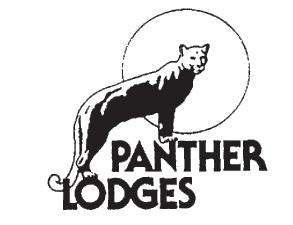
The strength of this book is Davis’s generally favorable account of Hood’s service with the Army of Tennessee. Davis faults Hood for intriguing to replace Joe Johnston as commander, but he attributes Hood’s failure to hold Atlanta to Sherman’s superior numbers.
 C. Michael Harrington
C. Michael Harrington
Three Years with the 92d Illinois The Civil War Diary of John M. King. Edited by Claire E. Swedberg. Stackpole Books, Mechanicsburg, PA, 1999.
Yes, I know it was not published in 2020, but I reread it this year for insights into Civil War soldiery and their material culture. The 92nd was a regiment in Wilder’s “Lighting” Brigade. It is loaded with small details such as the “assembly line” reshoing of horses and mules, the Spencer rifle being issued and used, camp life, and cowardice. The index contains a wealth of material culture and intimate details of camp life, marches, and fighting not usually present. Ideal for generating first person interpretive impressions.
Larry Babits Civil War News Editor
41 November 2020 Civil War News Deadlines for Advertising or Editorial Submissions is the 20th of each month. Email to ads@civilwarnews.com
REINFORCEMENTS MAKE ALL THE DIFFERENCE!!! Nobody even comes close to building a Civil War tent with as much attention to reinforcing the stress areas as Panther. Our extra heavy duty reinforcing is just one of the added features that makes Panther tentage the best you can buy! PANTHER Catalog - $2 Web: www.pantherprimitives.com 160 pages of the best selection of historical reenactment items from Medieval era to Civil War era. Includes over 60 pages on our famous tents and a 4-color section. Your $2 cost is refundable with your first order. SEND for copy TODAY The Best Tents in History P.O. Box 32N Normantown WV 25267 (304) 462-7718
Between the Lines
Of all the many cruelties of war, one scene that evokes the most pity is, perhaps, the image of wounded men trapped between the lines, suffering for hours that stretch into days, left behind after their charge was repulsed, within earshot of both their friends who withdrew and their enemies who shot them, men in dreadful pain, maddened by thirst, crying out for aid that never comes, unable to move and, for a time that seems an eternity of torment, unable even to die.
In movies a punch in the jaw renders a man unconscious for as much time as the plot requires. A gunshot in the belly drops a man and sends him into eternity faster than he falls to earth. It is not so off the screen where warriors live and die for real, where for good or bad the human body is far, far tougher, where even the most horrific wounds take their time. Several instances of trapped wounded men are well known to students of the Civil War. Two of the most notorious occurred after Grant’s assaults at Vicksburg, on May 19 and 22, 1863, and at Cold Harbor on June 3 the following year. Shelby Foote wrote a moving account of the former. “For three days – six in the case of those who had fallen in the first
assault – Grant’s dead and injured lay in the fields and ditches at the base of the Confederate ridge, exposed to the fierce heat of the early Mississippi summer. The stench of the dead, whose bodies were swollen grotesquely, and the cries of the wounded, who suffered the added torment of thirst, were intolerable to the men who had shot them down; yet Grant would not ask for a truce for burial or treatment of these unfortunates, evidently thinking such a request would be an admission of weakness.”

Perhaps because of the intolerable stench, perhaps moved by compassion, the Confederate commander at Vicksburg, Gen. John Pemberton, departed from military convention and took the initiative. He sent a message to Grant suggesting a truce. “At 6:00 p.m.,” wrote Foote, “all firing was suspended while the Federals came forward to bury the dead…and bring comfort to such few men as had survived the three-day torture.” That is, of course, three days for the men shot down on the May 22; others had been between the lines since the initial, smaller attack three days earlier. How many men survived the ordeal is unknown.
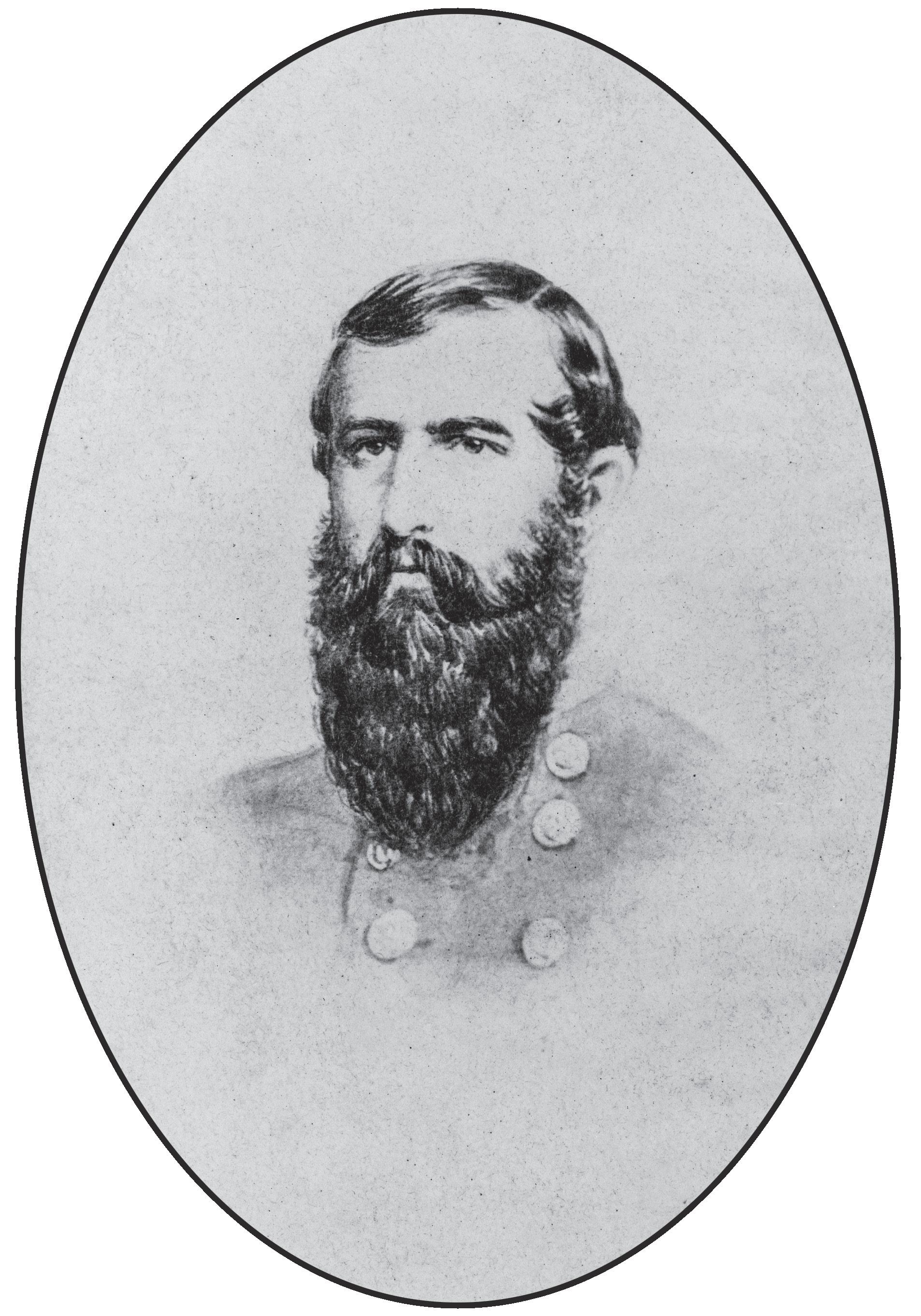
The following year Grant
GEORGIA’S CONFEDERATE MONUMENTS
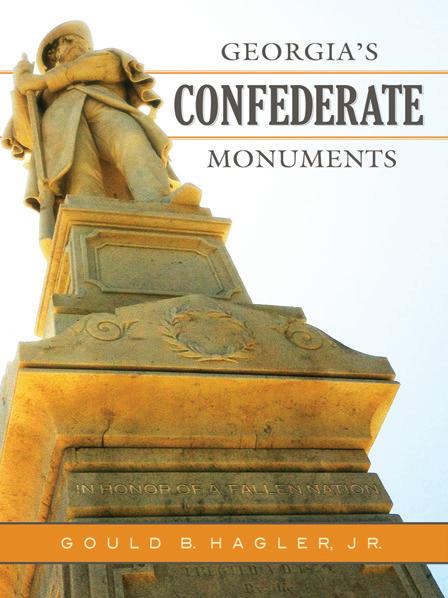
In Honor of a Fallen Nation
Gould B. Hagler, Jr.

This unique work contains a complete photographic record of Georgia’s memorials to the Confederacy, a full transcription of the words engraved upon them, and carefully-researched information about the monuments and the organizations which built them. These works of art and their eloquent inscriptions express a nation’s profound grief, praise the soldiers’ bravery and patriotism, and pay homage to the cause for which they fought.

www.mupress.org
866-895-1472 toll-free
commanded another army with another adversary. After slugfests at the Wilderness and Spotsylvania and Grant’s subsequent maneuver around the Confederate right flank, two corps of the Army of the Potomac and one corps of the Army of the James charged the works hastily built by Lee’s men at Cold Harbor. Hundreds upon hundreds were shot down, and for hour after hour, day after day, the wounded lay where they fell. The order suspending the attacks came at 1:30 p.m. on Friday, June 3. The wounded lay between the lines the rest of that
42 Civil War News November 2020
June 2nd Position near Cold Harbor—rifle pits in the front. Library of Congress.
Vicksburg National Cemetery, 17,000
Union soldiers are buried here, Vicksburg, Miss. Jack Melton.
Lieutenant General John C. Pemberton. Library of Congress.
day and night; all day Saturday and Saturday night; Sunday and Sunday night; Monday and Monday night; through the heat of the day on Tuesday. Finally, at 6:00 p.m. the truce began. “Very few wounded were collected,” wrote Union Maj. Gen. Andrew A. Humphreys. “The dead were buried where they lay.”
In his personal memoir, Fighting for the Confederacy, Brig. Gen. E. Porter Alexander provided an account of a similar aftermath following a failed assault at Spotsylvania, three weeks before Cold Harbor. Alexander at that time commanded the artillery in the Army of Northern Virginia’s 1st Corps. His account focused largely on a single Federal soldier, observed for days by him and his second-in-command, Col. Frank Haskell.
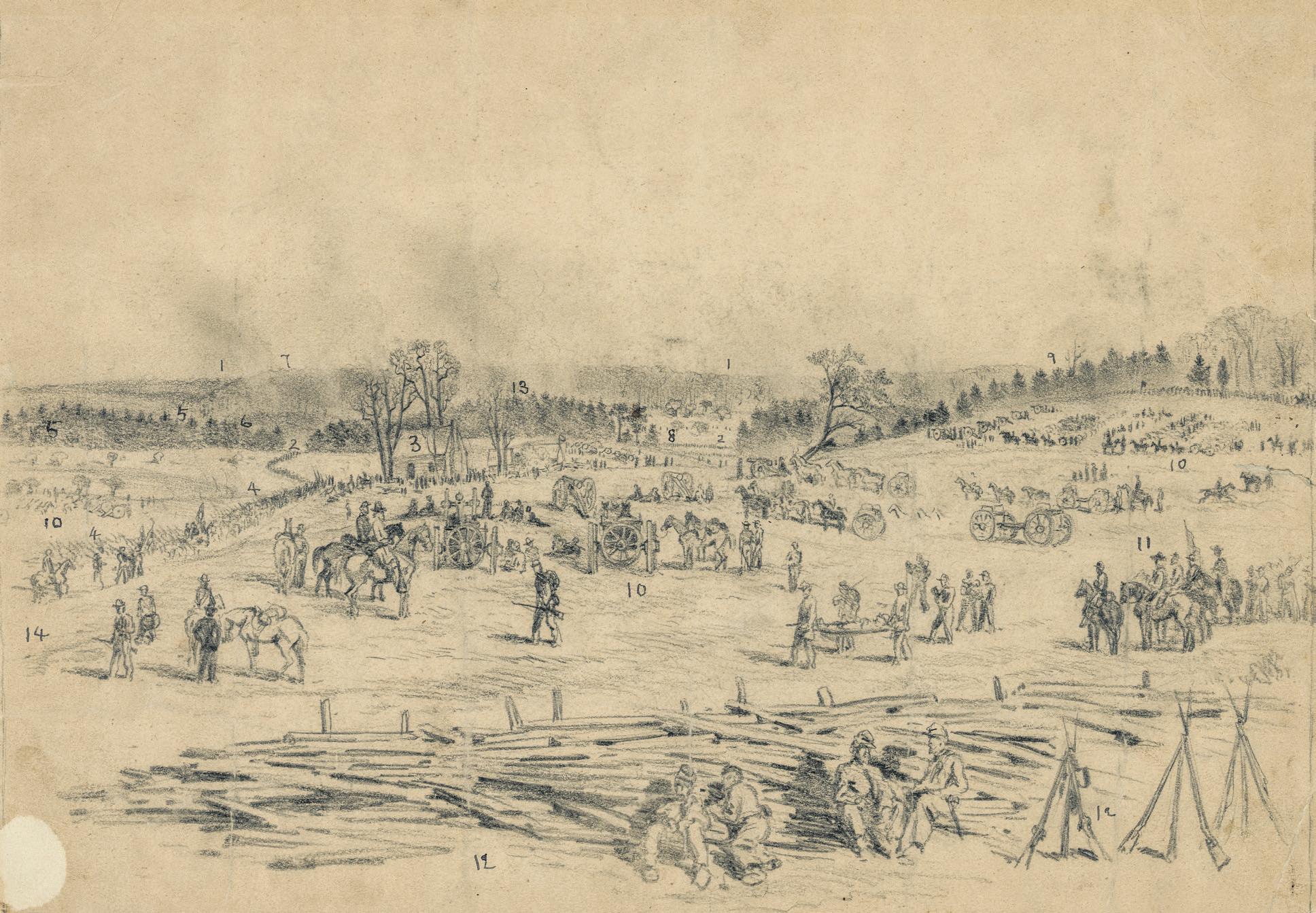
No battle in the Civil War matched the ferocity of Spotsylvania, where the armies were locked in close combat for several days. On May 8 Brig. Gen. Horatio Wright’s V Corps attacked a position on the left of the Confederate line manned by Lee’s 1st Corps. The assault was repulsed. Wright fell back and entrenched. While this assault was less prolonged and less sanguinary than the famous attack at the Mule Shoe on May 12, it did result in numerous casualties, with dead and wounded Federals lying between the lines.
May 9, Alexander wrote, was a “comparatively quiet day,” but there was skirmishing, sharpshooting, and, of course, artillery.
In one instance a Federal solid shot “actually went down the bore of one of [our] howitzers,” Alexander wrote, “after knocking its mouth some what askew.

All Hands on Deck!
[Col.] Frank Huger loaded the ball into [another gun] & fired it back, as, he said, it seemed to know the road.”
After sending this ball on its return trip, Huger pointed to the men lying in the dirt beneath the sky crisscrossed by Union and Confederate iron. “Huger… called my attention to the number of Federal wounded still alive, lying out between our lines, among those shot down in yesterday’s assault. They could be heard to call out for water, & seen to move & to throw up their hands, & one in particular would sometimes sit up.”
Alexander explained that Grant had not asked for a truce, believing that the general was loathe to admit his men had been repulsed. He also pointed out the danger of allowing Federals to get close enough “to spy into our lines.”
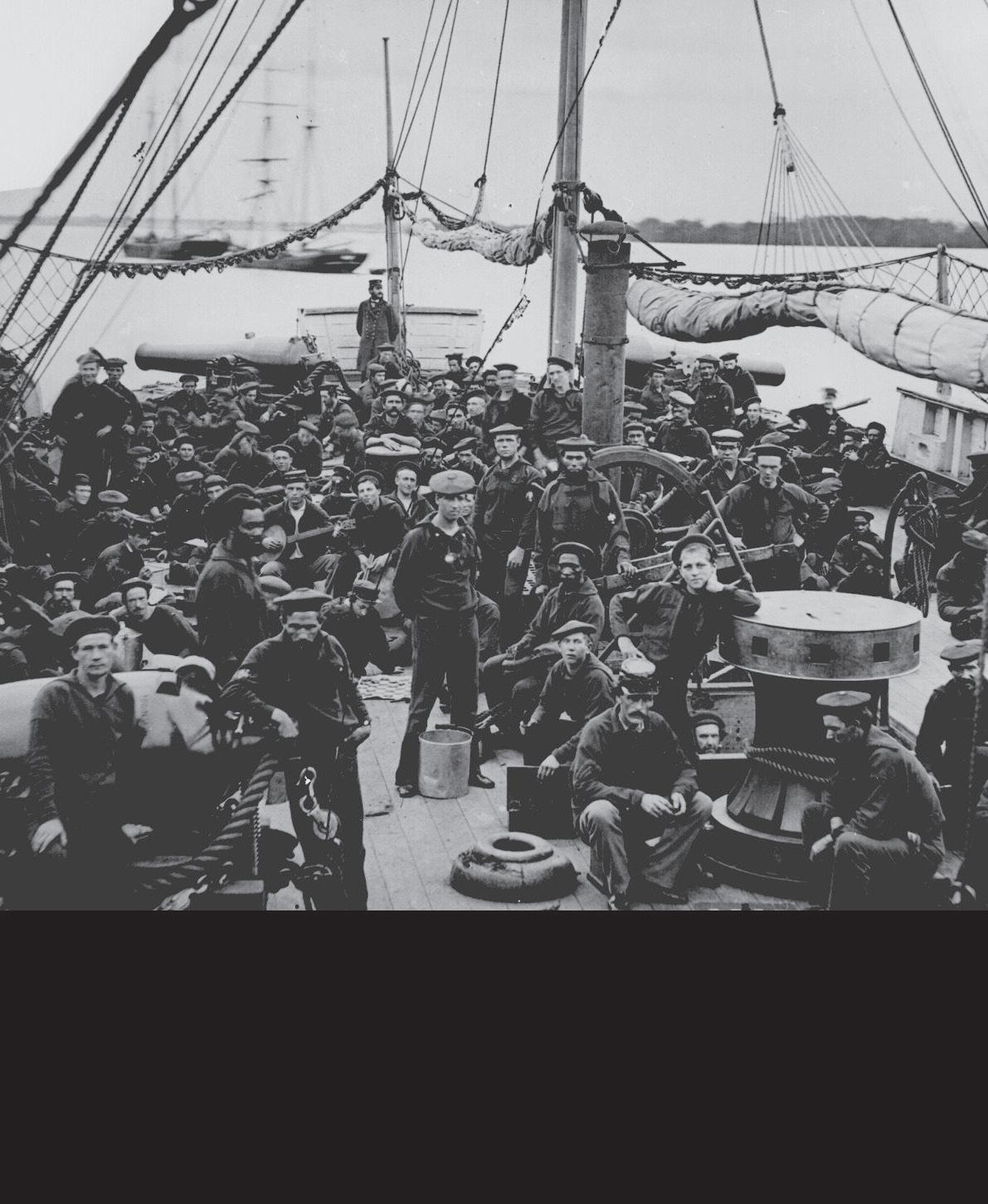
“So there was nothing left for those men but to die there.” At night some sympathetic Southerners did venture out to give water to some of the nearer suffering men, but “it was very dangerous to do this even at night, and in daylight it would have been fatal. And it is even a question whether it was a charity to give them water, when it probably prolonged their sufferings.”
The reader should keep in mind that these unfortunate creatures had fallen on May 8. On May 11, Alexander wrote, Huger “again showed me a few wounded men, yet alive out between the lines. The fellow who could sit up still did so occasionally. The others only showed life by sometimes moving their arms, as if trying to keep flies from their wounds. It was a sight to move one’s heart, but it was beyond our power to
remedy.”
On Friday, May 13, after the horrific contest at the Mule Shoe, the pathetic scene to the left, where Alexander was, continued. “Huger had gotten much interested in the particular wounded man who sometimes sat up, out between the two lines of battle. Today he had seen him trying to knock himself in the head with the butt of a musket – raising it up & letting it fall on him. It hardly seemed possible that a man could really give himself a fatal blow in this way, but through the glass he now seemed to be dead.”
On the morning of May 14 the sharpshooting waned, then ceased. The Federals vacated the lines in front of Alexander’s position and the Confederates at long last were free to leave the trenches. “Frank Huger and I rode out to see his wounded man,” Alexander wrote, but they were not the first to reach him. “The poor fellow had already been stripped by someone who wanted his clothes & his body was notable for beautiful tattooing all over arms & chest, principally in patriotic patterns of eagles, flags, &c.”
This patriotic soldier’s suffering was over. Perhaps one’s thoughts now shift to the desperate Confederate soldier now wearing the dead man’s bloody shirt and trousers. What would be his fate as Lee’s army moved from Spotsylvania to North Anna, Cold Harbor, Richmond, Petersburg, and Appomattox?
Gould Hagler is a retired lobbyist living in Dunwoody, Ga. He is a past president of the Atlanta Civil War Round Table and the author of Georgia’s Confederate Monuments: In Honor of a
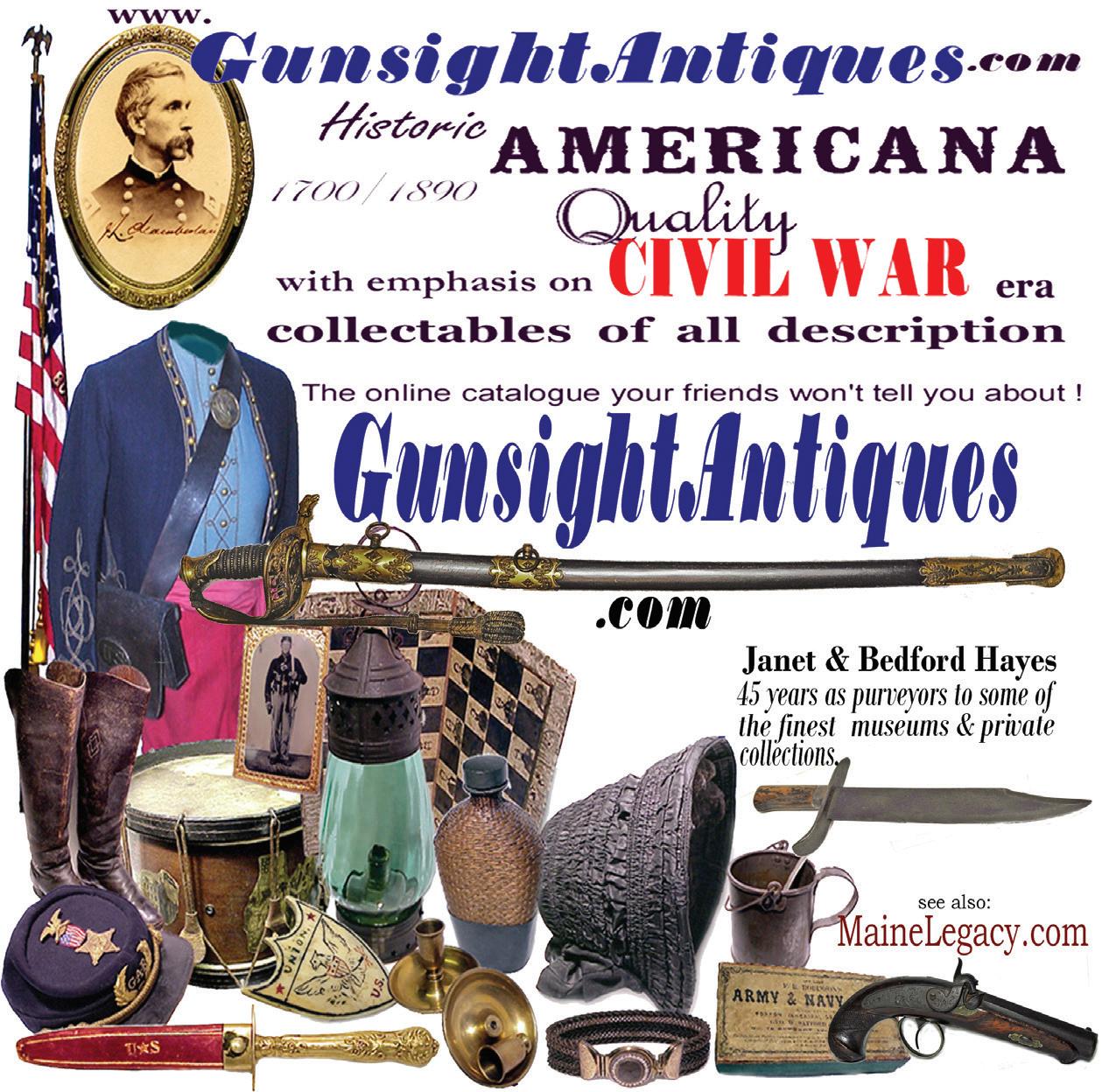
43 November 2020 Civil War News
The battle of Spottsylvania [sic]—View of the field from the center of the position. Library of Congress.
Fallen Nation, published by Mercer University Press in 2014. Hagler speaks frequently on this topic and others related to different
Support Our Mission to Bring You the Naval History “This is the magazine for all things Civil War Navy. From ‘Uncle Sam’s web-feet’ to the ‘grey jacket navy’ raised by Jeff Davis! It is all here thoroughly researched and illustrated by beautiful contemporary navy images.” Ron Field, military historian and author of over 45 books, including Bluejackets: Uniforms of the United States Navy in the Civil War Period, 1852-1865. 1 Year—4 Issues: $37.95 Subscribe Now at civilwarnavy.com Or send a check to: CSA Media, 808 Drayton St., Savannah, GA 31401 International subscriptions subject to postage surcharge. Sailors and Marines on the deck of the U.S. gunboat Mendota, 1864. National Archives (Identifier 524548). Fort Fisher Contact Mike at: 910-617-0333 • mike@admci.com
Wanted! Provenance a Must
of the Civil War and has been a regular contributor to CWN since 2016. He can be reached at gould.hagler@gmail.com.
Items
aspects
Chris Mackowski

From the Editor
On June 16, 1858, Republicans meeting in Springfield, Ill., nominated Abraham Lincoln as their candidate for the U.S. Senate. Slavery overshadowed all other political issues, so much so that Lincoln saw it as an existential crisis. “A house divided against itself cannot stand,” he warned.
The agitation slavery caused, moral and political, “will not cease, until a crisis shall have been reached, and passed,” Lincoln predicted, although he did not expect the Union to dissolve. “I do not expect the house to fall,” he explained, “but I do expect it will cease to be divided. It will become all one thing, or all the other.”
Today’s political tumult makes America seem no less divided, and I often consider Lincoln’s admonition: “A house divided against itself cannot stand.”
What is our responsibility in today’s times, as students of history and as people passionate about America? Earlier
in September, I mulled over that question in a blog post, “A Useable History: Partisanship, Citizenship, and the Presidential Election” (https://emergingcivilwar.com/2020/09/03/194191/).
I’m now mulling over the question in the context of Lincoln’s speech.
Often overlooked in the speech is Lincoln’s hope for common ground with his political opponents, specifically Sen. Stephen Douglas, “whenever, if ever, he and we can come together on principle.” Lincoln seemed pessimistic, though, and instead believed, “Our cause . . . must be intrusted to, and conducted by its own undoubted friends—those whose hands are free, whose hearts are in the work—who do care for the result.”
No sooner had he sounded that pessimistic note, though, than Lincoln admitted that differing political factions could, in fact, come together in common cause, as the recently created Republican Party demonstrated. “Of strange, discordant, and even hostile elements, we gathered from the four winds,” he pointed out, “and formed and fought the battle through, under the constant hot fire of a disciplined, proud, and pampered enemy.”
Regardless of political affiliation, a lot of people feel like they’re fighting the good fight, that they “do care for the result,” and that their opponents are proud and pampered enemies. If you feel that way, and consider yourself a person of honest motivation and good intent, perhaps a place to start is by considering that many people on the other side of the political spectrum also hold honest motivations and good intentions just like you. That offers a common platform for discussion.
So I urge all of us to consider the optimism in Lincoln’s tale, not his pessimism, and remember that “discordant, and even hostile elements” can come together for the common good.
 — Chris Mackowski, Ph.D. Editor-in-Chief, Emerging Civil War
— Chris Mackowski, Ph.D. Editor-in-Chief, Emerging Civil War
“Fallen Leaders” at the 2021 ECW Symposium
Early bird tickets are on sale for the 2021 Emerging Civil War Symposium at Stevenson Ridge,

August 6-8. Our theme, “Fallen Leaders,” will feature keynote speaker Gordon Rhea on the loss of Jeb Stuart and a battlefield tour of James Longstreet’s wounding by Greg Mertz. Plus, we’ll have eight other speakers on the docket.
For details, or to buy tickets (only $155 each at the early bird price), visit https://emergingcivilwar.com/2021-symposium/.
10 Questions . . . with Cecily Zander Nelson
Cecily Nelson Zander serves on Emerging Civil War’s editorial board for the “Engaging the Civil War” Series with Southern Illinois University Press. A historian who specializes in the Civil War era and the American West, Cecily is finishing her dissertation at Penn State. You can read her full bio here: https://emergingcivilwar.com/author-biographies/ authors/cecily-n-zander/.
About five years later my parents took our family on a trip to the Washington, D.C., area where we visited Manassas and Gettysburg and, like so many people, I was taken in by the battlefields and my interest in the Civil War was really solidified.
You’re finishing up your dissertation. What have you been writing about?
My dissertation combines the Civil War and all the Western history that I absorbed as a kid; I am writing about the United States Army (the Regulars) between 1835 and 1885. I’m making an argument about how politicians used the army to achieve various expansionist goals. I’m really looking at the regulars as an institution that had great political value and then explaining how politicians’ negotiated over military resources and how they intended to use the army to achieve their goals. I’ve found a few interesting things, most notably that the antebellum regulars were robustly supported by pro-slavery political interests who used the force to conquer the Southwest and lay the groundwork for a southern trans-continental railroad. I contrast their political investment with postbellum Republicans, who turned away from the army in favor of reformers and then explain how men like Sherman and Sheridan had to make a case for the value of the regulars to the post-Civil War United States and struggled to do so.
After that, you’ll have to hit the job market. What have you seen as you’ve been looking?
entirely hopeless.
One thing my parents always told me was that the best trait to have is to be coachable, which means taking advice and improving at every opportunity. What fuels my work is the guidance I get from my mentors and dissertation committee members who have given countless hours to reading, critiquing, and editing my work. I’ve been very lucky for the attention they’ve paid to my work. While I don’t always love to receive harsh comments, they are always constructive, and I think the least I can do is put as much effort as I can muster into my work in return. Seeing improvement and getting results gives me a lot of satisfaction.
What’s your next project?
What’s your Civil War “origin story”? How’d you get interested in the CW?
I don’t ever remember not being thrilled by history, which is likely a product of where and how I grew up, in Colorado and with vacations every summer driving across the country and visiting countless historic sites. I have early memories of visiting the Custer House at Fort Abraham Lincoln in Mandan, N.D., and being fascinated by Custer (hard not to be), as well as the Little Bighorn, Fort Laramie, and many Laura Ingalls Wilder “Little Houses” and so on.
When I was about 11, I saw Glory for the first time (fueled by a childhood crush on Matthew Broderick), and instead of just walking away from the movie, I searched the local library for more info about the characters and checked out Robert Gould Shaw’s letters (Blue Eyed Child of Fortune, University of Georgia Press, 1992) and enjoyed them immensely, so I read some other Civil War letters and diaries that were at the library.
This year things have not looked great in terms of academic jobs, to be brutally honest. I’m hopeful for a bit of a bounce-back next year, but am looking anywhere and everywhere for opportunities to put my research and teaching skills (such as they are) to use. I’m hoping I can at least put some teaching opportunities together to stay in the game next year. But if anyone has any leads, I’ll be glad for advice!
Gary Gallagher told me you’re a woman who doesn’t know how to stay un-busy. He really commended your work ethic. Tell us a little about that.
It’s very nice of Dr. Gallagher to say that. His courses at UVA required a fair amount of work, so it might actually be his fault that I work as much as I do. I’m not entirely sure it is the healthiest approach to always be thinking about working, but I enjoy so much of the research and writing process that it often doesn’t feel like work. I take time out to watch sports and classic films, and almost every day an episode or two of Frasier, so I’m not
I’m interested in doing something with George Custer, in part fueled by an archival collection I got to explore during my dissertation research, and will soon feature in a post I’m working on for ECW. I really enjoyed looking at historian Robert M. Utley’s papers while at the University of Oklahoma’s Western History Collection; reading about his work on Custer has me thinking about a project that would essentially investigate the history of the history of Custer. I’m a bit of a nerd for historiography, so what I would hope to do is write a book in two halves, the first would look at Custer and how he was viewed by his contemporaries with particular attention to how his own actions changed public opinion about him. The second half would look at his wife, Elizabeth Bacon Custer, and how she transformed public opinion about her husband after his death, and then try to unravel which version of George Custer historians have really written about and how memory has affected the accuracy of historical depictions of the Civil War’s “Boy General.”
In the shorter term, I’m working on smaller essays about Braxton Bragg and John Pope because I can’t help myself when it comes to much-maligned Civil War generals.
Lightning Round (short answers with a one-sentence explanation)
Favorite primary source?
I love Kate Stone’s diary, Brokenburn, from the Confederate perspective and I’ll give the edge to Sherman’s memoirs for the Union side.
Favorite Civil War-related monument?
I always jokingly tell people it’s the Arkansas monument at Gettysburg, which is a big monument for a single regiment, but it’s really a tie between Grant’s tomb and the Grant memorial in

44 Civil War News November 2020 www.emergingcivilwar.com
A clean-shaven Lincoln as he appeared at the time of his “House Divided” speech—one of many statues in the former president’s tomb in Springfield, Illinois.
Cecily Nelson Zander on a visit to Vicksburg.
Washington, D.C.
Favorite unsung hero of the Civil War era?
My less-serious side would tell you it’s William McKinley for serving all that hot coffee at Antietam, without orders, or so his monument says, but I’m really on board with the recent appreciation for Montgomery Meigs, who handled his job with aplomb and made a big difference to the Union war effort.
What’s a bucket-list Civil War site you’ve not yet visited?
I’ve been lucky to visit most of the big battlefields, often with my dad who is an untiringly good sport about it all, but I’ve yet to see Bennett Place in Durham and Fort Sumter in Charleston.
Favorite ECWS book?
I’ve always been a huge admirer of David A. Powell’s command of the Chickamauga and Chattanooga campaigns, so I’ll go with The Battle Above the Clouds: Lifting the Siege of Chattanooga and the Battle of Lookout Mountain.
ECW News and Notes
Edward Alexander has been revisiting some old battlefield stomping grounds from a different perspective, on bike, for the first time. “We’ve done Petersburg’s Eastern Front, Fort Harrison, and Fredericksburg’s Lee Drive this month and are planning to do High Bridge soon,” he says.
On August 9, Paige Gibbons Backus participated in an ERW “Rev War Revelry” focused on Colonial Medicine. “I am currently working on a series of articles for the American Battlefield Trust to help bolster their online articles,” she adds. “These are mostly going to be focused on Women during the Civil War and the medical field.”
On Sept 23, Doug Crenshaw spoke about the battle of Glendale to the James City Cavalry S.C.V. camp in Williamsburg, Va. On Sept. 26, he co-hosted a Facebook Live from Fort Harrison for Richmond National Battlefield.
ECW was pleased to welcome historian David Dixon to the fold last month. David’s current book, published by the University of Tennessee Press, is titled Radical Warrior: August Willich’s Journey from German Revolutionary to Union General. You can follow his blob, “B-List History,” at davidtdixon.com.
Because of the wildfires in California, Meg Groeling has been breathing bad air for days now, but she is still enjoying Harold Holzer’s The Presidents vs. The Press, which is a very timely read. “Remember ‘book reports’ in school?’ the Megster
asks. “Who knew I’d write so many as an adult!”
Robert Lee Hodge wrote a piece for the October 2020 issue of Civil War Times: “Lee is Marching to Our Flank.” “May 2, 1863, at Chancellorsville was one terrible day for Union Captain Frederick Otto Von Fritsch,” the article says.
Dwight Hughes gave a Zoom presentation on September 10 for the Wilmington, N.C., Cape Fear Civil War Round Table on “Rebel Odyssey: The Cruise of the CSS Shenandoah.”
Brian Matthew Jordan reviewed Arguing Until Doomsday: Stephen Douglas, Jefferson Davis, and the Struggle for American Democracy by Michael Woods for the October issue of Civil War News
Chris Mackowski participated in a panel discussion for Grant Cottage at the end of August titled “Memoirs and Memory: U.S. Grant’s Literary Legacy.” Joining Chris was Andre Fleche, associate professor at Castleton College, and Ben Kemp, operations manager at Grant Cottage.
The program is available on YouTube: https://www.youtube.com/watch?time_continue=5&v=T6uWZdOe9XM&feature=emb_logo.
Chris also spoke in September to the Franklin Civil War Roundtable, presenting “The Last Days of Stonewall Jackson.”
The program is available on the roundtable’s Facebook page: https://www.facebook.com/ franklincivilwarroundtable/videos/3074168112694714. While he was there, Chris and roundtable founder Greg Wade shot a series of videos that will appear on the ECW YouTube page in November. Chris wrapped up the trip with some time at Stones River National Battlefield, where he took photos for an upcoming ECW book by Bert Dunkerly and Caroline Davis.
Derek Maxfield celebrated a book (re)launch event for Hellmira: The Union’s Most Infamous Civil War Prison Camp at Roman’s restaurant in Batavia, N.Y., on 9/12 and had a great turnout. As it happened, later that day Derek’s book talk for the
ECW virtual symposium aired on C-Span 3 that evening. Derek’s theatre group, Rudely Stamp’d, debuted their new historic play “Grant on the Eve of Victory” at the West Sparta, N.Y., Town Hall on Sept. 26. Written, directed, and performed by Derek Maxfield, who portrays Gen. Ulysses S. Grant, the play also features Jess Scheuerman as war correspondent George Alfred Townsend. This one-act play is available for any interested audience. Folks interested in hosting a performance should contact Derek at ddmaxfield@genesee.edu or by calling 585-478-3753.
Kevin Pawlak took part in a morning program at the Cornfield with the Antietam Battlefield Guides on September 17 and was also featured as a guest for the America Battlefield Trust’s Antietam 158 coverage.
Kevin, Rob Orrison, and Dan Welch, plus members of the Mahoning Valley CWRT, went on a tour of the South Mountain and Antietam battlefields September 19. They specifically focused on the actions of the Ninth Corps’ Kanawha Division at both battles.

Kristen Pawlak did a talk on Wilson’s Creek for the Bull Run Civil War Round Table on Sept 10. The program is available on the roundtable’s Facebook page (at about 40 minutes in): https:// www.facebook.com/bullruncwrt/ videos/372896887064790.
Terry Rensel spent a day doing research at the Erie Public Library’s Heritage Room and the Erie Cemetery for future projects. On Sept. 16, he also finally visited Antietam for the first time. You can see his video with ersatz tour guide Chris Mackowski on the ECW YouTube page: https:// youtu.be/HInVf4SMgMQ). In October, Terry will address the Mahoning Valley Civil War Roundtable to talk about the Central Virginia Battlefield Trust and battlefield preservation. He wrote an article, “How Far? A New Perspective on the Battle of Spotsylvania,” for the October issue of Civil War News
Terry is also awaiting delivery of Ohio microbrews from Dan Welch (via Rob Orrison) for losing multiple bets on the Cleveland
Browns last football season.
ECW Bookshelf
Congratulations to ECW contributor David Dixon on his latest publication. Radical Warrior: August Willich’s Journey from German Revolutionary to Union General (University of Tennessee Press 2020) is the biography of a Prussian army officer who renounced his nobility and joined in the failed European revolutions of 1848. He emigrated to America, edited a daily labor newspaper in Cincinnati, and became one of the most accomplished generals in the Union Army. This story sheds new light on the contributions of more than 200,000 GermanAmericans who fought for the Union in the Civil War.
In an age of global social, economic, and political upheaval, transatlantic radicals helped affect America’s second great revolution. For many recent immigrants, the nature and implications of that revolution turned not on Lincoln’s conservative goal of maintaining the national Union, but on issues of social justice, including slavery, free labor, and popular self-government.
The Civil War was not simply a war to end sectional divides, but to restore the soul of the nation, revive the hopes of democrats worldwide, and defend human rights.
ECW MultiMedia
Have you been following the ECW YouTube page? You can check it out here: https://tinyurl. com/yxhp4zfp.
Or, go to YouTube and search “Emerging Civil War.”
This past month, we had an exclusive interview with Gary Gallagher:
https://youtu.be/huIczDMrl_A
We introduced the incoming president of the American Battlefield Trust, David Duncan: https://youtu.be/ aCRNkyG1QRA.
We spoke with Harold Holzer about his new book The Presidents Vs. The Press:
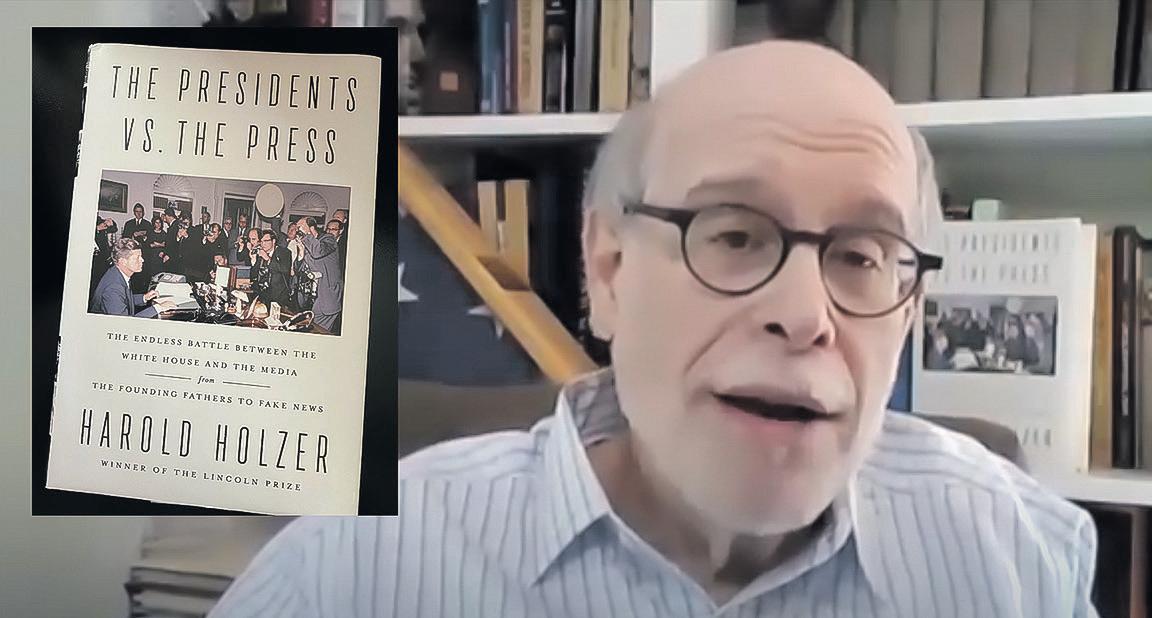
https://youtu.be/ yraPsKNYd_Q.
We’ve posted the talks from our 2020 Virtual Symposium (which have also started airing on C-SPAN 3’s “American History TV”) and more. Be sure to subscribe to the Emerging Civil War YouTube channel for the latest.
We also make a number of our interviews available as free podcasts on our Patreon page: https://www.patreon.com/ emergingcivilwar.
On Sept. 11, 1777, along the banks of Brandywine Creek in southeastern Pennsylvania, the largest battle of the Revolution, in terms of combined strength of armies, was fought: British and German forces under General William Howe versus Continentals and militia under General George Washington. On Sunday, Sept. 13, Michael Harris, historian and author of the preeminent battle study on Brandywine, joined ERW on our “Rev War Revelry” Sunday night Facebook Live to discuss the engagement and campaign. Click over on our Facebook page to watch the video.
In reference to the “Rev War Revelry,” remember to keep Sundays at 7 p.m. ET clear as we roll into October, with discussions on Charles Lee, Germantown, the Liberty Trail/Camden, and South Carolina Rev War leadership. We round out September with an author interview of a recently released study and roundtable discussion about Daniel Morgan.
Then in November, the annual Emerging Revolutionary War historian road-trip¬, scaled down this year because of the pandemic, will visit a few sites in Virginia related to the American Revolution. Stay tuned for onsite lives and a special “Rev War Revelry” from a unique location.
To stay current, follow us on Facebook and the blog; www. emergingrevolutionarywar.org.

45 November 2020 Civil
News
War
Kevin Pawlak offers a socially distanced tour at Antietam for the Mahoning Valley Civil War Roundtable of Ohio.
Harold Holzer is just one of the many guests featured recently on ECW’s YouTube page.
CIVIL WAR BOOK,___ B mv 11:
Civil War News book reviews provide our readers with timely analysis of the latest and most significant Civil War research and scholarship. Contact email: BookReviews@CivilWarNews.com.

“Much Ado...About Little”
Abraham Among the Yankees: Lincoln’s 1848 Visit to Massachusetts By William F. Hanna. Illustrated, Notes, Bibliography, Index, 2020, Southern Illinois University Press, www.siupress.com, $14.50 softcover.

Reviewed by Joseph Truglio
How Republican Junior Officers Won the Army of the Potomac’s Internal Political War
A Republic in the Ranks: Loyalty and Dissent in the Army of the Potomac. By Zachary A. Frey. Photographs, maps, notes, index, 336 pp., The University of North Carolina Press, www.uncpress.org, $45.00.
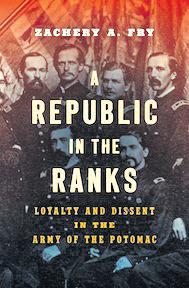
Reviewed by Paul Taylor
many loyal Democrats railed that Lincoln had all but shredded the Constitution, Frey writes that “Republicans and even some War Democrats viewed strict conservative constitutionalism as little better than a mask for Confederate sympathies.”
By the war’s midpoint, and despite repeated military defeats, these junior officers’ steady drumbeat for Lincoln’s policies and against Copperhead defeatism provided the AOPs demoralized rank-and-file with a previously missing sense of purpose.
into the national political scene.
Lincoln is a novice at “stump speaking.” Little survives about his talks other than comments on his look and style. What we do learn is that he was extremely partisan to the party line. He does not favor Taylor in his talks but rather denigrates Taylor’s opponents. He fosters the opinion that Taylor is the better choice between Martin Van Buren and Lewis Cass. In the end, Taylor wins but we are left with doubts as to Lincoln’s value in the election.
Frey argues that the evidence shows how these Republican junior officers “decisively” won the struggle for the privates’ political allegiance. All of which culminated in Lincoln’s 1864 presidential election victory which included overwhelming support among the AOPs rank and file.
and valuable appendices that include a remarkable bibliography of unit (mostly company and regimental) political resolutions from spring and autumn 1863, another that analyzes the 1864 reenlistment rates for Union regiments, and a third illustrating the number of officers in each regiment who attended the officer candidate school in Philadelphia known as the Free Military School. Appendices four through six analyze unit voting returns for the 1863 elections, the 1864 Pennsylvania congressional election, and the 1864 presidential election, respectively.
In 1848 Abraham Lincoln was a little known junior congressman from Illinois. A staunch Whig, he participated in a sojourn of stump speeches in the Bay State to promote Zachary Taylor for President.
Taylor was not a popular choice among Whigs. He was a slave owner and inexperienced as a politician. Because of this, he was not a favored candidate in abolitionist Massachusetts. This was perhaps Lincoln’s first foray
This is a well written account of Lincoln’s foray onto New England political scene. It is well annotated and contains a good bibliography. Unfortunately, there is little information on the speeches. Lincoln garnered little coverage from the press. What it does contain is much insight into the political mind-set of the area and the tremendous growth of the cities. The many illustrations and photos give a strong flavor of the era.
Although short in story, it is worth the time to learn about the New England anti-bellum atmosphere and Lincoln’s beginning steps onto the national political scene.
Joseph Truglio, of Manchester, N.J., is a retired Motion Picture Technician who has a lifelong interest in the Civil War. He is currently President of the Phil Kearny CWRT in Hasbrouck Heights, N.J.
The high command of the Union’s Army of the Potomac (AOP) has long been studied by historians. From William Swinton’s 1866 Campaigns of the Army of the Potomac to Bruce Catton’s majestic 1950s Army of the Potomac trilogy, these scholars utilized a top-down approach that focused on the army’s senior leadership and its various trials and travails. The results revealed a cauldron of political intrigue and its attendant military machinations highlighted by a Democratic cabal led by Major Gen. George McClellan battling against Republican President Abraham Lincoln and his administration.
Author Zachery Frey, an assistant professor of military history at the U.S. Army Command and General Staff College, takes us down a previously underexplored path in his fresh new study of that army. For this journey, Frey utilizes a bottom-up approach that argues how the AOP’s pro-administration junior officers, its captains, majors, and colonels, led a successful campaign of influence amongst the rank and file that centered on educating their men on the war’s political dynamics. The author’s focus is to analyze those Democratic and Republican ideologues in shoulder straps who sought to “persuade and educate” the Army’s enlisted men as to means and ends. Loyalty to the Republican message was based on the nature of the rebellion, wartime exigencies, and rallying behind a wartime president. While
The author emphasizes that this is not a book that puts forth a narrative history of the AOPs military exploits in the Eastern Theater. Nor is it another study of the Army’s high command. That ground has been heavily trod elsewhere. Rather, Frey argues that to understand the emergence of a distinct political culture in the army requires a serious study of its junior officer level.
This work is divided into six chapters built primarily around the summer of 1862 to late 1864 timeframe. Each chapter examines a different “political crisis point” for the Army, such as those that followed the July 1862 Seven Days and December 1862 Fredericksburg defeats, and the 1864 reenlistment controversies. These significant “down times” typically lasted several weeks between active campaigning.
Frey has also added six detailed

Zachery Frey is to be commended for this thoughtful and deeply-researched work. He illustrates that, despite the wellknown and oft-examined high level discord between Lincoln and his Democratic generals, it was the Republican junior officers toiling in the field who were the crucial lynchpin in delivering the 1864 soldier vote to Lincoln. As Frey explains, their wartime political education made post-war loyalty the “touchstone of manhood;” an unconditional loyalty to a republic free and everlasting in Abraham Lincoln’s image.
Paul Taylor is an award-winning author of seven books pertaining to the Civil War era. His upcoming book is titled “My Dear Nelly”: The Selected Civil War Letters of General Orlando M. Poe to His Wife Eleanor, and will be published by Kent State University Press in fall 2020.
100 Significant Civil War Photographs: Atlanta Campaign collection of George Barnard’s camera work. Most of the photographs are from Barnard’s time in Atlanta, mid-September to mid-November 1864, during the Federal occupation of the city. With this volume, Stephen Davis advances the scholarly literature of Barnardiana.
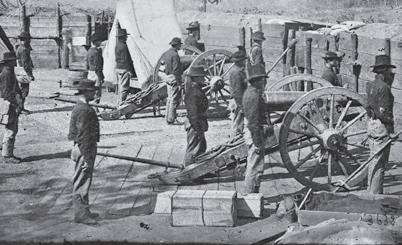
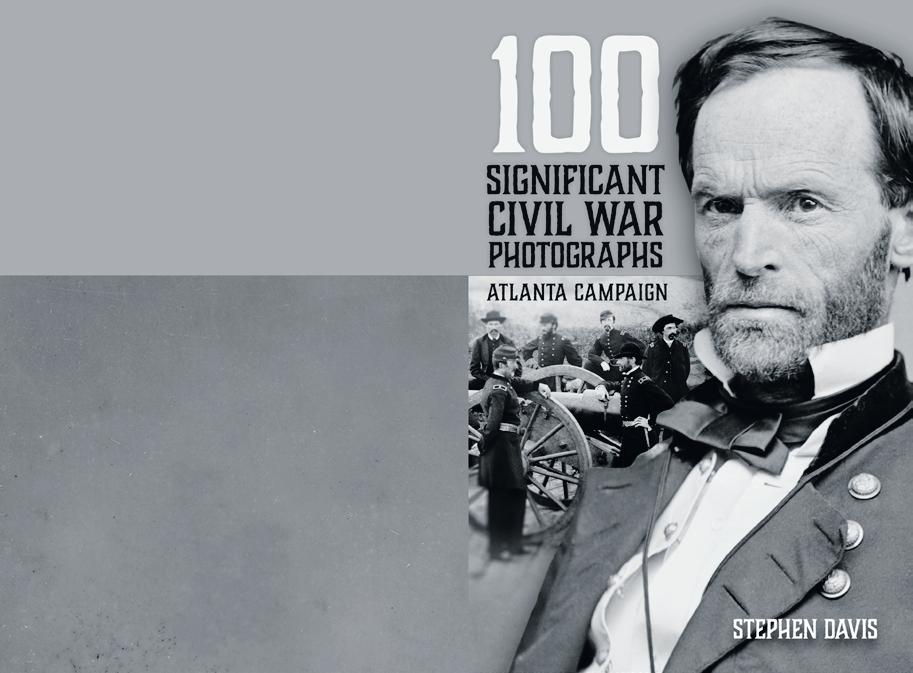
46 Civil War News November 2020
The American Civil War was the first war in which both sides widely used entrenchments, repeating rifles, ironclad warships, and telegraphed communications. It was also the first American War to be extensively photographed. Mathew Brady, Alexander Gardner and Timothy O’Sullivan are famous for having made iconic photographs in the Civil War’s eastern theater. George N. Barnard deserves to be ranked in this top tier for his photographic A civilian photographer hired by Gen. William T. Sherman’s chief engineer to take pictures of fortifications around Atlanta, Barnard took several hundred of them in and around the city in the fall of 1864. His most famous is the site of Union Maj. Gen. James B. McPherson’s death in the battle of Atlanta, July 22, Thus far, no comprehensive, definitive listing has been made of the photographer’s work. The Library of Congress has 130 images; the U. S. Military Academy at West Point, New York, has at least 98 photographs, donated by Captain Poe’s widow. Other repositories, such as the Gilder Lehrman Institute of American History in New York City, have smaller collections. For this book we have chosen hundred images we deem “significant,” though other students may wonder at some of our selections. We hope that this work will stimulate further interest in Barnardiana, and that other scholarly volumes are yet to come. The Atlanta Campaign STEPHEN DAVIS 100 SIGNIFICANT CIVIL WAR PHOTOGRAPHS ATLANTA CAMPAIGN $19.95 + $3.50 shipping 128 pages, photographs, maps, bibliography. $19.95 + $3.50 shipping. Softbound. ISBN: 978-1-61850-151-6. www.HistoricalPubs.com. Order online at www.HistoricalPubs.com or call 800-777-1862 Subscribe at CivilWarNews.com
Publishers/Authors Send your book(s) for review to: Civil War News 520 Folly Road, Suite 25 PMB 379 Charleston, SC 29412 bookreviews@civilwarnews.com
The Civil War—A Massive Stir of the Biotic Soup
An Environmental History of the Civil War.
 By Judkin Browning and Timothy Silver. Illustrated, Notes, Bibliography Index, The University of North Carolina Press, 2020, 261 pp., hardcover. $30.00.
Reviewed by Wayne L. Wolf
By Judkin Browning and Timothy Silver. Illustrated, Notes, Bibliography Index, The University of North Carolina Press, 2020, 261 pp., hardcover. $30.00.
Reviewed by Wayne L. Wolf
A Portrait of the Momentous Day of Lincoln’s Second Inaugural Address
of food they could gather and left behind an ecological wasteland for area residents.
For example, disease (particularly glanders) killed over 248,000 Union horses in two years. The Southern loss was even greater with 75% of all horses dying every year from disease, exhaustion, or lack of food. Additionally, horses were impressed from local farmers hindering their ability to plant and harvest crops. Hog cholera killed hundreds of thousands of pigs, costing the Confederacy a major source of food. Over four million trees were felled in support of fortifications, housing, and railroad construction. Diseases like syphilis and gonorrhea accounted for 200,000 disabled soldiers and even caused the death of onethird of soldiers in post war retirement homes.
Every Drop of Blood: The Momentous Second
Inauguration of Abraham Lincoln. By Edward Achorn. Appendix, Notes, Bibliography, and Index, 414 pp., 2020. Atlantic Monthly Press, groveatlantic. com. Cloth. $28.00.
Reviewed by David Marshall
Tennessee’s military governor and new Vice President, Andrew Johnson, Nurses such as Clara Barton, newspaper person-poet Walt Whitman, former enslaved person and Civil Rights activist, Frederick Douglass, family members such as Mary Lincoln, Lincoln, assassin John Wilkes Booth, and many other politicians and ordinary citizens. Edward Achorn examines Washington, D.C.’s important individuals who played a key role in ending the Civil War, and influenced the direction of the U.S. following the great conflict.
Every Drop of Blood’s epilogue; The Stuff to Carry Them
today can be found on two separate walls on the Lincoln Memorial that generations of people can read and allow these words to resonate. Achorn provides the historical context and importance of Lincoln’s final sentence in his 2nd Inaugural speech, with malice toward none; with charity for all… in 1865 as well as since and today.
This book’s clarity of organization and accuracy of description, coupled with interpretive insights, enable the reader to grasp both details and the larger picture of The momentous Second Inauguration of Abraham Lincoln.

The Civil War not only changed the political and military makeup of America, it also altered the landscape, agriculture, social practices, and even how Americans took care of natural resources after the war. The war was not just a series of military actions but a biotic or biological event, one that had lasting consequences for the environment, both North and South, as well as the people of both regions. This book is a refreshing look at the war through the eyes of a military historian and an environmental scientist. Together they have produced a valuable examination of the effects of crowded camp conditions, the lack of experience with cleanliness and food preparation, the role water played in military strategy, and how commanders were forced to make decisions in the ever-changing fusion of human and non-human actors and activities.
Two-thirds of the over 750,000 Civil War soldier deaths were caused by disease. Many of these deaths were caused by the lack of knowledge regarding disease causation, the Northern blockade which kept medicine and supplies out of the South, and the spread of microbes in camps devoid of proper sanitary controls. Added to these were the triple threats of bad weather, lost slave labor in the South and skilled farm hands in the North, and diminishing productive agricultural land due to battle devastation and enemy conquest. Troops ate every scrap
These examples clearly illustrate how, while command decisions mattered, the physical changes in the environment dictated both strategy, the place chosen to fight, and even the pace of fighting, many times at odds with sound military judgment. For instance, would the Battle of the Wilderness have turned out differently if visibility had been clearer? Would Gettysburg not have occurred if the South was not in desperate need of shoes and food? Would Shiloh have turned in to a Confederate victory if rains did not delay the attack on the second day allowing Union Gen. Buell to arrive? These examples could go on and on to illustrate how it is impossible to divorce military acts from the natural environment in which they occurred.
This book is highly recommended as a treatment of how geography, nature, disease, topography, and the environment affected Civil War military maneuvering. It is thoroughly researched, meticulously documented, and eminently readable. Every Civil War historian would benefit by adding it to their bookshelves.
Wayne L. Wolf is Professor Emeritus at South Suburban College and Past President of the Lincoln-Davis Civil War Roundtable. He is the author of numerous books and articles on the Civil War including Soldiers, Sailors and Scoundrels of the Civil War and The Last Confederate Scout.
Subscribe online at CivilWarNews.com
By March 4, 1865, the four years of conflict was coming to an end with the result leaving over seven hundred thousand American soldiers dead, the Union preserved and the United States changed forever with an end of slavery. Tens of thousands packed Washington, DC’s, Capitol grounds to witness Abraham Lincoln take the oath of office for his second term as President. Edward Achorn tells a moving story about Washington’s divided groups of power, the intrigue during the short time after the second inaugural address and the difficulties Abraham Lincoln had in ending the war and healing the country.
There have many books written on the life of Abraham Lincoln, his presidency and involvement in the Civil War but few have provided so much detail and new information concerning his Second Inaugural speech. This outstanding narrative reads like a fastpaced novel but provides such vivid descriptions of what went on before this important moment in United States history on March 4,1865, events surrounding the day of, the time after and the effects of his message, and assassination had on the country and many groups of people. This story is told from the perspective of not only Abraham Lincoln but many soldiers such as Union General’s Ulysses S. Grant, and William Sherman, statesman and Supreme Court Justice Salmon Chase, politicians such former
Through, provides an excellent understanding of what happened following the second inauguration. Many radical Republicans such as Ohio senator Benjamin Wade and Michigan senator Zachary Chandler were very hostile toward Lincoln’s plan of mollification and it many ways the author shows how several were not unhappy with his assassination. One of the arguments Edward Achorn makes is that the Sixteenth Presidents righteousness toward the defeated South did not necessarily protect former slaves from Southern discrimination nor the domination of reconstruction by Radical Republicans. Edward Achorn also provides an important comparison of two contrasting men, Frederick Douglass and John Wilkes Booth that offers important analysis of their actions, thoughts, and meaning to what transpired on March 4th and on April 14th. Douglass stated to Lincoln on March 4th at the White House that he liked his speech. On the other hand, Booth who had contemplated kidnapping the President, was preparing to kill him. In his mind he was a hero, who “struck boldly and the country was not what it was.”
This excellent historian shows that many people regard Booth as a coward and that his actions did a terrible disservice to the reconciliation of the U.S. and civil rights for African Americans.
While the words and message of President Abraham Lincoln’s Second Inaugural speech offering reconciliation with the South was not initially admired or supported by all Democrats, Republicans, Northerners, and Southerners. In time it would be viewed as one of the most important speeches in American History and critical to the country moving forward as one nation. This speech and Lincoln’s Gettysburg Address
Achorn makes a substantial contribution to scholars and students on writing this important monograph on the last important words and life of our 16th President by providing fresh insight that helps readers understand the motivation, strategies, tensions, controversies, and triumphs that have characterized the life of Lincoln and people involved in the work.
Atlantic Press has provided enthusiasts with 41 helpful images as well as an extensive bibliography with a deeply researched bibliography of various sources, notes and index. Achorn has delivered a readable study that breaks new ground, is lively, contains interesting engaging prose, ably illuminates the topic, and makes the subject accessible to anyone who seeks to understand.
This reviewer highly recommends this new study.
David Marshall is a high school American history teacher in the Miami-Dade School district for the past thirty-three years. A lifelong Civil War enthusiast, David is president of the Miami Civil War Round Table Book Club. In addition to numerous reviews in Civil War News and other publications, he has given presentations to Civil War Round Tables on Joshua Chamberlain, Ulysses S. Grant, Abraham Lincoln, the Battle of Gettysburg, and the Common Soldier.
47 November 2020 Civil War News
Want to Advertise in Civil War News? Email us at ads@civilwarnews.com Or Call 800-777-1862
Wartime Adventures in Missouri and on the Great Plains
the war ended, when Hart and his regiment were sent west where he took part battling the Plains Indians. The book’s remaining war-related focus includes the Battle of Platte Bridge on July 26, 1865, and the Hayfield Fight near Fort C.F. Smith in the Montana Territory on August 1, 1867.
A City Can Be a Victim of War
Rebel Richmond: Life and Death in the Confederate Capital. By Stephen V. Ash. University of North Carolina Press, uncpress.org. 296 pp. Hardcover, $35.
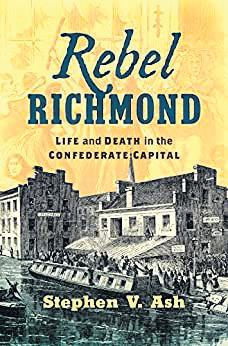
Reviewed by Meg Groeling
Reviewed by Paul Taylor
With down-home folksiness, much of which the editor verified from other sources, Hart relays his time spent on the Plains working as a “bullwhacker,” aka an ox wrangler. He also recounts his time carrying mail between forts on the Wyoming/Montana Bozeman Trail, the only known account of its kind.
How Hart’s 1864–1868 memoir came into being is a story in itself. Fifty years later, in 1918, Hart was repeatedly urged by his son Harry to recount his youthful reminiscences. Harry was an aspiring writer who quickly began dutifully recording his father’s words in what became several manuscripts totaling over 100,000 words.
those who brought meat and produce to market, began to look skeletal. After a year or so of deprivation, so did the people. Newcomers were stuffed into boarding houses and piled into hotels. At first, soldiers were everywhere, but at least they were healthy. Then came measles, typhoid, battles, and soon the houses of elite southern citizens became impromptu hospitals. Food was scarce, workers were limited, and money became worthless. White women were forced into employment to help their families meet basic needs. This situation was a considerable disruption to the southern lifestyle, which proclaimed that women, at least proper ones, did not work outside the home.
forerunners of Reconstruction’s Black Laws, put upon them to prevent black people from asserting any social equality with whites. Unknown to most white citizens, black people resisted in strong but subtle ways.
John Benton Hart was twentyyears-old when he enlisted in the Eleventh Kansas Infantry during the fall of 1862. Only a few months later, the reality of war struck Hart hard when he was “wounded at the Dec. 7 Battle of Prairie Grove, Ark. During his convalescence, Hart’s regiment was reorganized as cavalry. When Confederate General Sterling Price invaded Missouri in September 1864, Hart was back in the saddle with the Eleventh Kansas Cavalry, part of the Union forces opposing Price. Hart and his troopers saw action at the Oct. 23 Battle of Westport as well as other smaller engagements during Price’s 1864 Missouri Expedition.
Hart was apparently quite the raconteur and it is his rollicking and extensive recollection of this campaign that forms the first of three distinct reminiscences in this memoir. It is also the only one pertaining to the Civil War. His memoir picks up just after
Hart’s manuscripts remained undisturbed for close to a century until historian John Hart, John Benton Hart’s great-grandson, edited and annotated his ancestor’s manuscript into this cohesive, engaging, and exceptional tale from the “wild west.” The book represents approximately one-third of Hart’s total manuscript. Chapter Two’s account of the battle of Platte Bridge is the only one reproduced in full while the 1864 Missouri campaign memoir utilizes approximately one-half of Hart’s corresponding Civil War manuscript.
While there are timeline errors within Hart’s recollections, not uncommon for memoirs written a half century after the fact, its value lies in the author’s spot-on accounts of the day to day life of an ordinary soldier toiling on the Great Plains.
Editor Hart contributes an excellent introduction along with extensive biographical, historical, and explanatory notes that link the narrative’s three sections into a seamless whole. Thirty-two illustrations and six maps supplement an excellent work that will surely appeal to students of the post-Civil War American west.
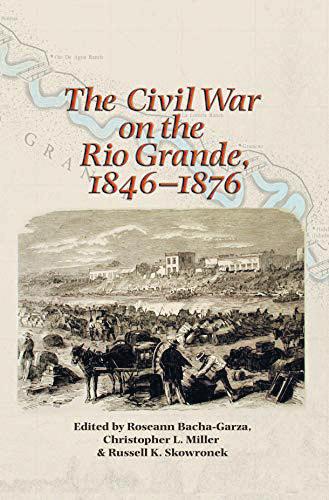
Paul Taylor is an award-winning author of seven books pertaining to the Civil War era. His next book is “My Dear Nelly”: The Selected Civil War Letters of General Orlando M. Poe to Eleanor Brent Poe, and will be published by Kent State University Press.
A famous April 1865 photograph of Richmond shows the city as a skeletal ruin. As unique as the image is, it could be mistaken for New York City, London, Dresden, Hiroshima, Sarajevo, or any other city that has had the misfortune to find itself a center of destruction in violent times. Rebel Richmond: Life and Death in the Confederate Capital by Stephen Ash traces the history of Richmond, Virginia, during the time it was the capital of the Confederacy, a time when it was also a center of destruction. Megan Kate Nelson’s Ruin Nation outlines how war destroys a city. She refers to them as “architectural ruins.” Ash, in his nicely nuanced Rebel Richmond, takes the art of destruction several steps further. His definition of a city includes the citizens as well as the buildings. Ash examines the change in the citizenry first. With a population of nearly 38,000, Richmond was only of moderate size in 1860. With the coming of the war, Richmond’s population boomed to as many as 150,000 by 1865. Ash uses newspaper accounts, letters, anecdotal evidence, and memoirs to create a book in which the reader feels the strain of this influx. One easily imagines the formerly pretty houses and streets becoming dingy, rutted, and unclean. The city gasworks, which failed due to equipment shortages, was unable to keep the streets lighted at night. The citizens of Richmond failed as well; as the war continued; fashionable clothing became patched, mended, and turned inside out. Animals, especially
Author Ash has an entire chapter on just that situation; how women dealt with breaking of one of the promises around which their lives rotated. For a southern woman to give up her right to property, education, movement, legal acts, etc. she expected a return, lifelong protection and care. Even poor women felt they were entitled to care in exchange for their labors and sacrifice. The Civil War turned this entire concept on its head. The men were gone, the money was no good, and, after 1865, there were no enslaved workers to do the marketing or fix the broken gate. Relatives from outside the city arrived, hoping to be able to live with other family members. Strangers descended on the city, especially women, hoping the Confederate government would feed them. Women had given up all, even their men, and there must be recompense! Except there was none, and despair set in citywide. The Richmond Bread Riot was not a singular event. In meat stalls, empty vegetable markets, and small stores all over Richmond, women protested their situation with anger and violence. Promises were, indeed, broken. Government employees, convalescent soldiers, young boys, and older fellows identified the large population of Africans as a comfortable place to put the blame. Free or formerly enslaved, black Richmond felt the blame for anything of which white Richmond wanted to accuse them. The black population endured legal restraints, the
Rebel Richmond’s last chapter deals with death. From First Bull Run to Appomattox, Richmond was a geographic destination for the wounded, the ill, and those who died. Chimborazo, the South’s most successful pavilion hospital, was just outside the city limits. Existing cemeteries like Hollywood and Oakwood were quickly overwhelmed. As mass graves sufficed for the thousands of unknown soldiers, the Lost Cause was born from all the death and suffering. One of the final scenes in the book is the burning of Richmond at the hands of the Confederate government. Author Ash uses the diary of War Department clerk John Jones to paint the picture. He saw:
a dark volume of smoke ris[ing] from the southeastern section of the city, and spread[ing] like a pall over the zenith. It proceeds from the tobacco warehouse, ignited [by retreating troops], I suppose, hours ago, and now just bursting forth. (226)
Rebel Richmond helps readers understand that the capital city of the Confederacy met the same fate that other cities caught in war’s inexorable path have met. Stephen Ash has expanded the definition of “city” to include its people, its infrastructure, and its cemeteries. He has written an excellent, poignant book within the topic of urban studies, one that demands further investigation.
Meg Groeling received her Master’s Degree in Military History, with a Civil War emphasis, in 2016, from American Public University. Savas Beatie published her first book, The Aftermath of Battle: The Burial of the Civil War Dead, in the fall of 2015. Her biography, First Fallen: The Life of Colonel Elmer Ellsworth, the North’s First Civil War Hero. It will be published by Savas Beatie in 2020. She is a book reviewer for LSU, Civil War News, and a regular contributor to the blog Emerging Civil War. She lives in Hollister, California, in a 1928 bungalow with her husband, her cats, and a lot of books and roses.
48 Civil War News November 2020 Deadlines for Advertising or Editorial Submissions is the 20th of each month. Email to ads@civilwarnews.com Digital Issues of CWN are available by subscription alone or with print plus CWN archives at CivilWarNews.com
Bluecoat and Pioneer: The Recollections of John Benton Hart, 1864–1868. By John Benton Hart, Edited by John Hart. Photographs, maps, notes, index, 240 pp., The University of Oklahoma Press, www.oupress. com, $32.95.
An Admirable Job in Sticking to the Subject
Politician in Uniform: General Lew Wallace and the Civil War. By Christopher R. Mortenson. Photos, notes, index, bibliography, 283 pp., 2019. Norman, The University of Oklahoma Press. $34.95.
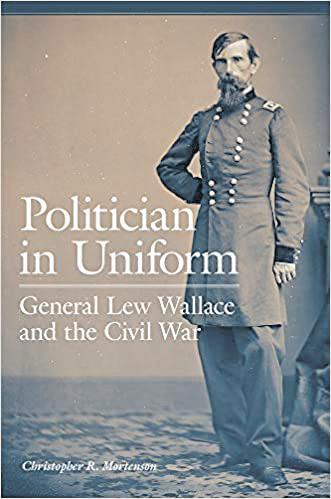
Reviewed by Salvatore Cilella
regret and much later, that was no different than mocking the man.
“…and that is just what I did,” he later wrote (page 73).
He not only disparaged Halleck, but practically everyone up and down the command chain, Grant, Sherman, Brigadier General Charles F. Smith, Don Carlos Buell, Secretary of War Stanton, and Indiana governor Oliver P. Morton. He aimed most of his vitriol at West Pointers.
the contrarian, took the Shunpike, farther west and by the time he reached the lines, he found himself on the union far right almost behind the Confederate left. Therein lay the problem that vexed our hero the rest of his life. Did he misread Grant’s orders or did he willfully disregard them?
What Makes an Angel a “Better Angel”?
The Better Angels Five Women Who Changed Civil War America. By
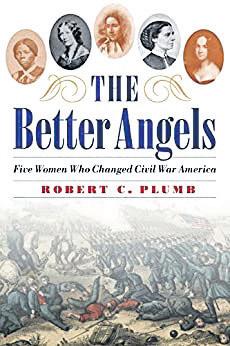 Robert C. Plumb, illustrations, index, endnotes and bibliography. 251 pp., 2020. Potomac Books, an Imprint
Robert C. Plumb, illustrations, index, endnotes and bibliography. 251 pp., 2020. Potomac Books, an Imprint
distinct social classes and race relations as probable criteria used for selecting these women.
Henry David Thoreau wrote:
“The mass of men lead lives of quiet desperation,” but not Lew Wallace. Reading Christopher Mortenson’s excellent treatise on Wallace’s army career during the Civil War, brought to mind a cliché. That is not to say that Mortenson’s narrative is cliché ridden. On the contrary, it is a fine example of taut, economical clarity of language. No, the worn out thought in reading Wallace’s “arc of history” brings to mind the obvious: “he was his own worst enemy.” The author employ this phrase only once in the conclusion (page 191). The most glaring, and in some respects, comical example was immediately after Shiloh, with his division still on the field in late April. He was visited by “three well-dressed officers” who he didn’t know (his first mistake). He offered them his hospitality of “biscuits, whiskey and cigars.” During the conversation, he managed to disparage Henry Halleck and then discovered as the officers left to return to their command, that they were members of Halleck’s staff. Wallace had ridiculed Halleck’s “plans of operations” and he realized much to his
When he testified before the congressional Joint Committee on the Conduct of the War, he criticized both Grant and Halleck for lack of energy and inept communications in the western theater (page 80). Although he was indeed a Politician in Uniform, his utterances were impolitic. Still, Mortenson more than adequately reveals Wallace’s innermost political skills and attributes that served him well in his multidimensional life time, and particularly during his army career. He performed admirably as commander of the Middle Department (Maryland primarily); played a role in the battles of Forts Henry and Donelson; saved Washington in 1864 by delaying Jubal Early’s troops at the battle of Monocacy; sat on the court which tried the Lincoln assassination conspirators; headed the court that tried and executed Andersonville’s Henry Wirz, attempted to influence the Mexican/French entanglement, dealt with Billy the Kid after the war in the Arizona territory, and then authored Ben Hur.
As tempting as it is to wander, Mortenson sticks to Wallace’s career during the war. Of course the centerpiece is Shiloh. Grant, according to some accounts, had been surprised by Albert Sidney Johnston’s and P. G. T. Beauregard’s attack on the morning of April 6, 1862. Grant had ordered Wallace to bring his division down to Pittsburg Landing from Crump’s Landing. Grant wanted him to take the River Road, closest to the Mississippi and land in the middle of the Union line so that his troops could be deployed left or right or stay put in the center. Wallace, always
At every opportunity, Wallace persisted in explaining, describing, interpreting, depicting, and otherwise portraying his actions at Shiloh. That is the beginning of the Wallace story and the central thesis of Mortenson’s argument, namely Wallace’s search for manly, military glory; a goal that eluded him during his Civil War career. When he was sent back to Indiana after Shiloh, the governor ordered, by asking him nicely, to travel the state recruiting, which he reluctantly did. He was sent to Cincinnati when Morgan’s raiders threatened the city and nothing happened, and then there was his tour of duty with the Middle Department in Baltimore. He craved action on the field and wanted command. Instead his political skills landed him desk jobs. Even his attempt to claim some notoriety in the Mexican affair and his hope to broker a deal to end the war in the West fell through. His delaying action in the loss at Monocacy brought him nothing but grief until it didn’t. Belatedly, Grant, Stanton, and Lincoln realized that Early was really a threat to the capital and that Wallace’s fight at Monocacy allowed Grant time to move VI Corps from the siege lines at Petersburg to reinforce the home guard at Washington. Mortenson has done an admirable job in sticking to the subject. This is not a biography, it is exactly what the title indicates; a politician in uniform, Lew Wallace in the Civil War. Writers would do well to emulate Mortenson’s focus, exposition, clarity, and understanding of this complicated man. The chapters are few, ten; only 198 pages of text including his conclusion, brings it all together nicely. This slim volume is a welcome addition to the volunteer/politician/soldier literature of the Civil War.
Salvatore Cilella is retired after 43 years in the museum field. He is the author of Upton’s Regulars, University of Kansas Press, 2009, and editor of The Selected Correspondence of General Emory Upton, 2017, (2 vols). University of Tennessee Press and Till Death Do Us Part: the Letters of Emory and Emily Upton, 1868–1870 University of Oklahoma Press, 2020.
of the University of Nebraska Press,
$32.95 Hardbound.
Reviewed by Richard J. Blumberg
The specific goal of this work, telling these ladies’ stories to adults rather than featuring them as mythical figures in children’s books, is not clearly disclosed until the last third of the book. Plumb’s work relies heavily on secondary sources. Many sources are twenty or more years old. The age of these sources demonstrates a lack of substantial new data for analysis. This is validated by the fact that a plethora of information is available online for each of these women.
While none of these observations are showstoppers, the reader is left with two questions: 1) what made the contributions of these women more significant than other men and women of the same time period; and 2) why women only.
Robert C. Plumb was a marketing executive for two Fortune 500 companies. He frequently writes for the Washington Post and Washington Post Magazine. Plumb’s latest work focuses on the noteworthy contributions of Julia Ward Howe, Harriet Tubman, Clara Barton, Sarah Josepha Hale, and Harriet Beecher Stowe.
The catchy title references a portion of President Lincoln’s first Inaugural Address. This speech, directed primarily to Southern citizens, was an appeal to Southerners to maintain national unity in a time of great fear. Lincoln made no specific mention that the “Better Angels” were all women. Plumb does not explain why he limited his work to women only. Nor does he provide specific reasons why the women selected were better than other women who also made significant contributions to the nation during this time. He does mention these women were among his favorites. Also, the inside dust cover relates facts regarding
Plumb’s writing style is easy to follow. His storytelling is unique. He provides chapters that give biographies of each of these women and additional chapters with overlapping coverage by specific topics for all five. This approach allows the reader to see how contributions made by one woman had a ripple effect impact. This perspective is important, because it is something some historians still often neglect to consider or include in their work. The information provided on each of these women is concise and well organized. The illustrations of each woman at various stages of life provide the reader a touch of realism. Readers with a specific interest in these five women will find Plumb’s work rewarding and informative.
Richard J. Blumberg has reviewed books for Civil War News for over eighteen years. Currently, He is awaiting the publication of an article on the influence of music in the Civil War. He has also begun a series of articles emphasizing the contributions made during the Civil War to modern logistical operations.
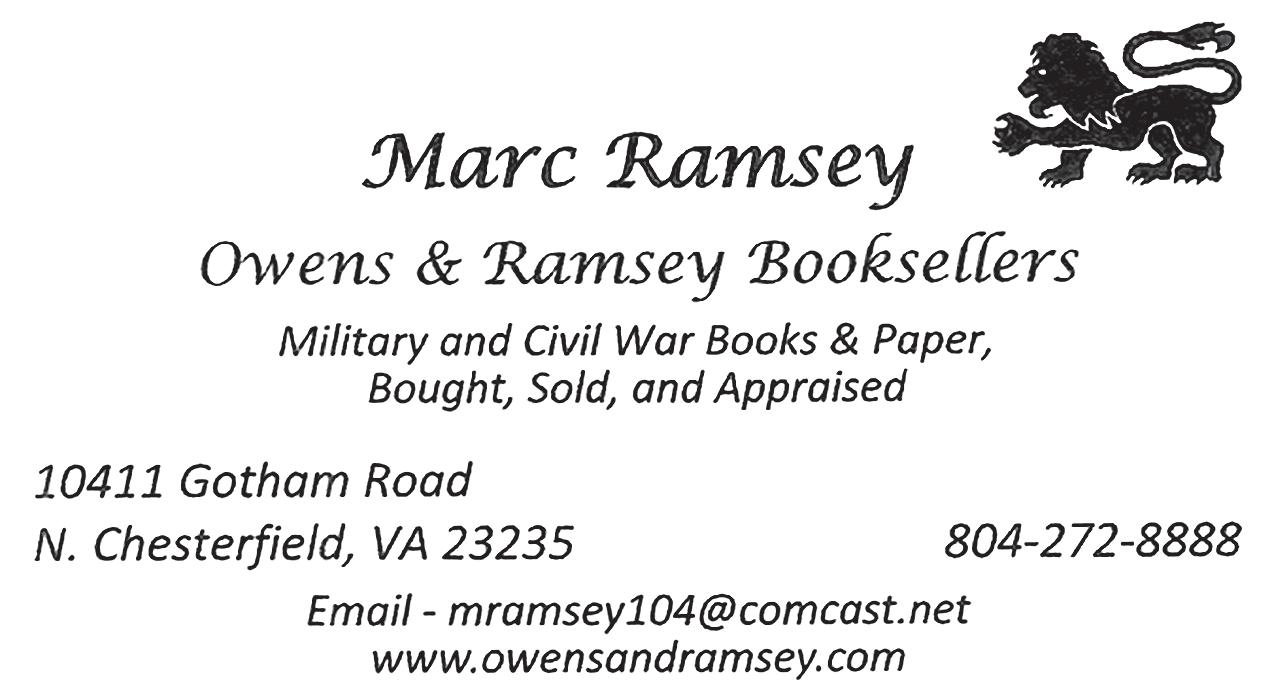
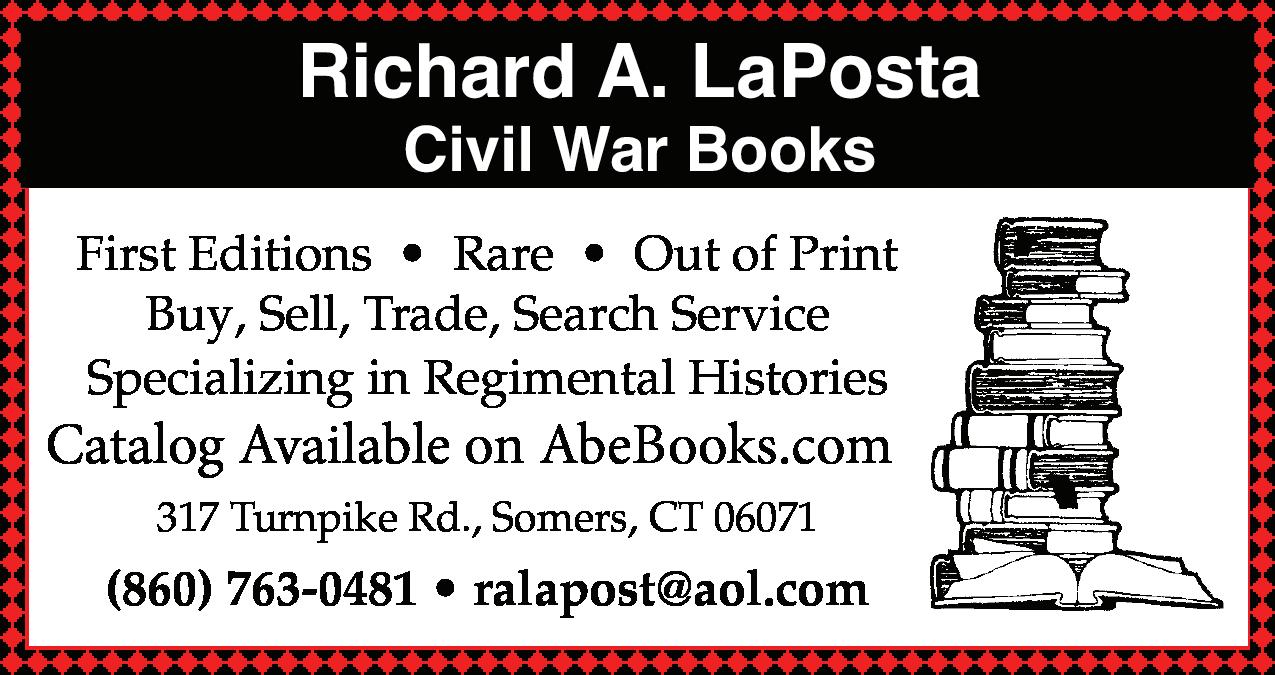
49 November 2020 Civil War News
by Carl L. Sell, Jr.
Nineteen-year-old George Humerick stood on the northeast corner of the Emmitsburg, Md., town square for three hours on June 30, 1863, and watched Union soldiers march toward Gettysburg, Penn. Seventy-five years later, he stood at the same spot as reenactors marched past toward the battle site. Both the I and XI Corps of the Army of the Potomac passed through Emmitsburg on their way to Gettysburg. The First, led by Major General John Reynolds, camped just north of town. The Eleventh, led by Major General Oliver Howard, camped just south of town with Howard establishing his headquarters in the priest’s quarters at Mount Saint Mary’s College. Early on July 1, the I Corps moved west of Gettysburg to intercept the Confederate Army advancing on the Chambersburg Road.
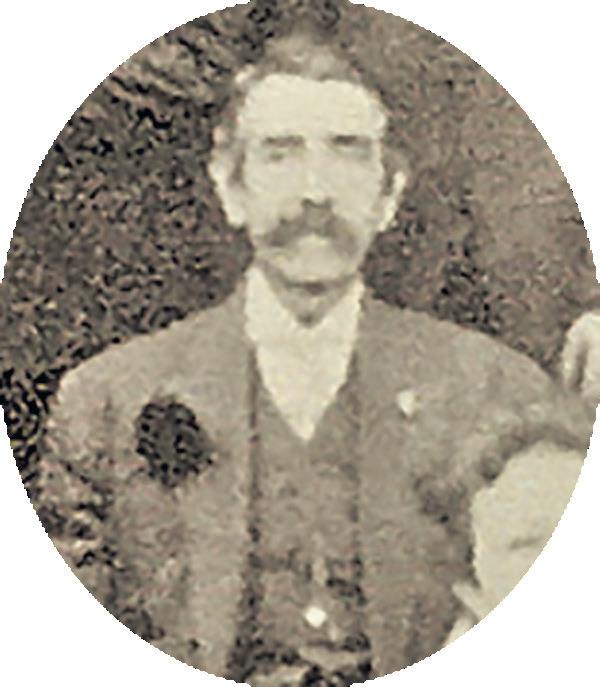
Watching Gettysburg
The XI moved into position on Cemetery Hill, barely within the town. Reynolds was shot dead as he urged his men forward to meet the Confederate attack. By dark on July 1, the Confederates occupied the town, and the entire Union line had been forced back on Cemetery Hill and Cemetery Ridge. That same morning, Humerick noticed flagging activity at the Union signal station on the mountain overlooking Mount St. Mary’s College. He went up the mountain to Indian Lookout. He learned that the station was in communication via flagging with the cupola at the Lutheran Seminary, overlooking the battlefield twelve miles north of Emmitsburg, and the news wasn’t good. General Reynolds had been killed and the Confederates were pushing the Union soldiers back toward the town. Shortly after that, the Confederates occupied the Seminary, and used it
for their observation post. Over the next two days, many people, including staff at Mount Saint Mary’s, witnessed the battle with the use of telescopes, field glasses, and opera glasses. At any one time, almost sixty people would be at the Indian Lookout watching the battle. The view was so clear that those watching could see individual soldiers, officers riding along their lines, cannon, and infantry charges, according to an account signed by “A.J.B.” (apparently A.J. Brown, a student at the college), written shortly after the battle and much later published in the March 25, 1976, Emmitsburg Chronicle. Captain Lemuel B. Norton, Chief Signal Officer, reported that because of the smokiness of the atmosphere on the signal line between
Emmitsburg, Round Top, and general headquarters, the desired result was not obtained until 11 p.m. when the first message was received. He added that those stations were kept open until July 6 and were “eminently useful.”
Communication with Gettysburg was accomplished through flagging stations that relayed information to General Meade’s headquarters, keeping in touch with Washington through wire transmission. The army also had a series of wagon trains that included battery operated low voltage telegraph lines connected to steam-powered systems along the railroads. General Meade kept up a constant communications through wire transmission with Washington beginning on July 4, 1863. Meade’s aide, Major
General Daniel Butterfield, complained, however, that the operator possessing the cipher left, and General Meade could not send or receive coded messages. During the battle, flagging connected Gettysburg to Washington via stations at South Mountain and
INDIAN LOOKOUT TRAIL
About The Trail
The trail begins off the paved road at the very top of the cemetery.
From this point, the trail is marked with blue blazes on trees. The trail leads uphill through the woods to a rocky overlook with views of Gettysburg to the north.
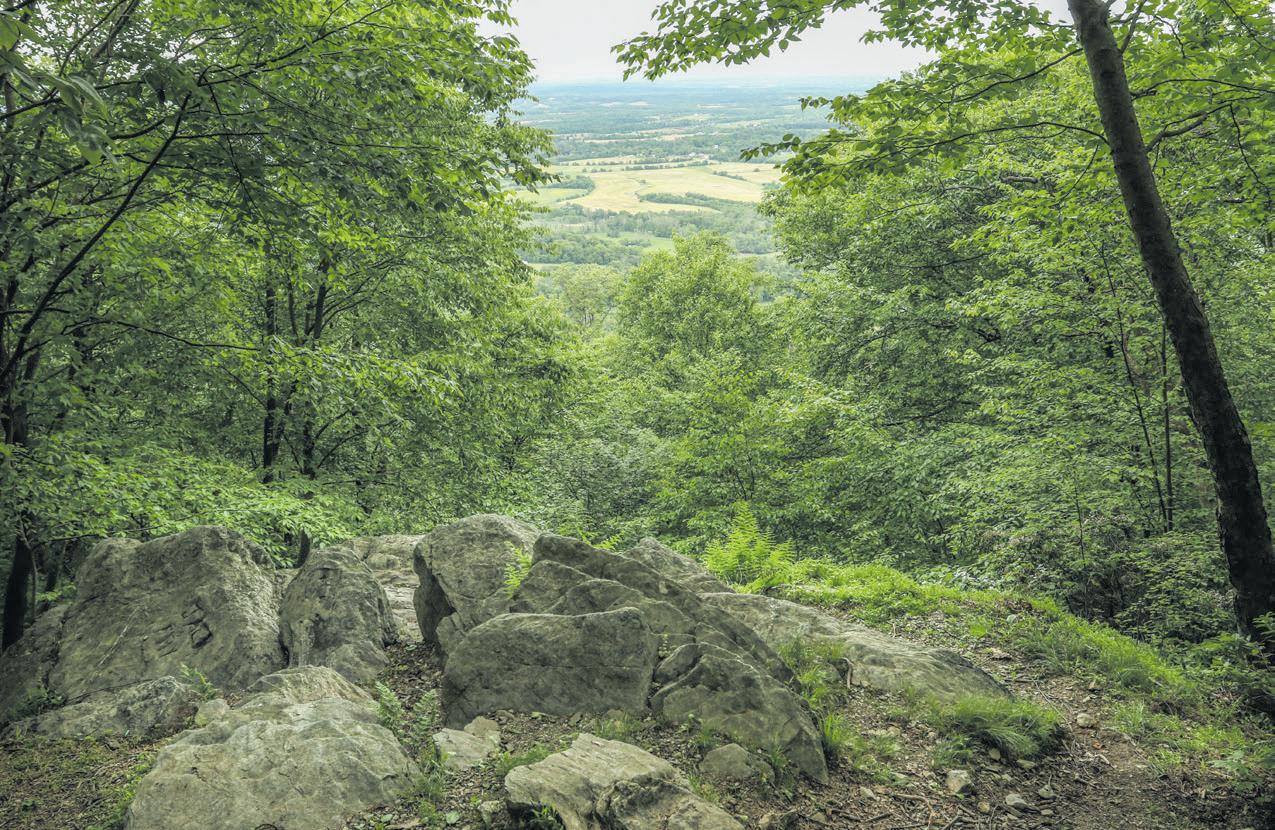
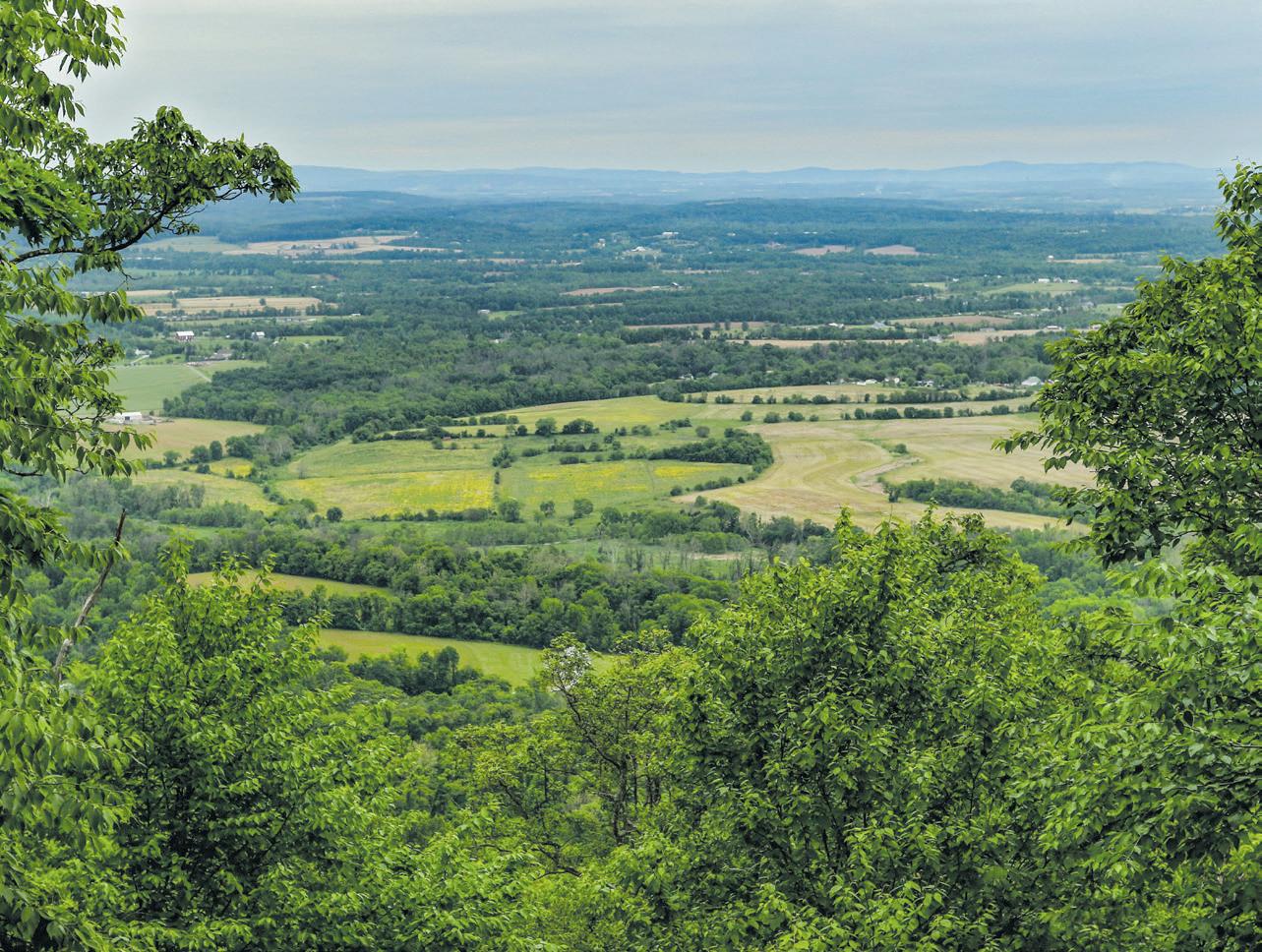
How To Get There
From main campus, follow the walkway between the I.C. Chapel and the Terrace and climb the stairs to the Grotto. From the circle at the base of the Blessed Mother Mary statue, walk on the road through the cemetery to its highest point. You will see the path on the uphill side of the road.
PLAN YOUR HIKE
Two current views toward Gettysburg from Indian Overlook above Mount St. Mary’s University. The 1863 battlefield is more than 10 miles away. The climb to the spot in Emmitsburg, Md., is a rough one through woods and over rocks following a trail marked on the trees. It takes more than an hour and a half or more for inexperienced climbers. At age 83, the author had little trouble going up, but won’t talk about the trip back! Fortunately, he was accompanied by younger Civil War enthusiasts Bill Kamenjar and Ben Trittipoe. This is a spot that every Civil War and Gettysburg scholar should visit if they can. Don’t try it alone. Photos by Bill Kamenjar.
Make sure you check in with campus security before you attempt this climb. Take water, you will need it. Allow plenty of time so your car won’t get locked in the parking lot after closing. University officials are very helpful so make sure you communicate with them before you start the climb.
50 Civil War News November 2020 1200 1400 800 600 1000 Mount St. Mary’s University National Shrine Grotto of Our Lady of Lourdes Cemetery CatoctinMountainHighway SaintAnthony Road Grotto Road University Way Anna n d a l e Road TRAILHEAD View CAMPUS TRAILHEAD
Trailhead Parking Seasonal Stream Elevation Trail Two-lane Road KEY For your safety and the preservation of our mountain: Tell someone when you head out for a hike » Stay on trail Do not disturb wildlife or other visitors No campfires » Do not leave trash of any kind, including food or pet waste
Round-trip hike time, trailhead to summit: 1–2 hrs Round-trip mileage, trailhead to summit: 2.0 miles Elevation gain, trailhead to summit: 700 ft
George Humerick
The First Attempt
The Lincoln Conspiracy: The Secret Plot to Kill America’s 16th President and Why It Failed. By Brad Meltzer and Josh Mensch. Illustrations, notes bibliography, index, 434 pp., 2020, Flatiron Books, www.flatironbooks.com, softcover. $14.99.
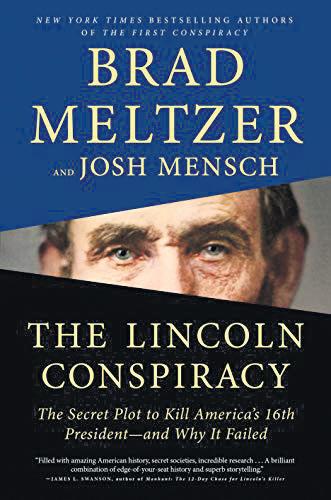
Reviewed by Joseph Truglio
This view was taken from Indian Overlook, just above Mount St. Mary’s University in Emmitsburg, Md., almost 10 miles from the Gettysburg battlefield. The first rise in the topography is Cemetery Ridge with the Peace Light Memorial at the left and the Pennsylvania Memorial farther to the right. The Round Tops cannot be seen because of the foliage. Staff members from the college climbed up the mountain on July 1, 1863, to view the battle with telescopes and opera glasses. A Union flag station brought news from the cupola at the Lutheran Seminary, which pokes through the trees to the right of the Peace Light. Among those who climbed up the mountain that day was young George Humerick, who had cheered the Union troops two days earlier as they passed through Emmitsburg. Humerick lived to be 97 years old and was there for the 75th Anniversary of the three-day battle in 1938. Photo by Bill Kamenjar.

Sugarloaf Mountain in Maryland.
The Confederates also had an active signal system at Gettysburg, using the cupola at the Lutheran Seminary after displacing Union signalmen on the first day. Afterward, the Union operated mostly from Round Top. Both sides changed ciphers several times during the war to keep their messages “secret” as they usually were in full view of the enemy.
A late-night fire destroyed almost a quarter of Emmitsburg on June 15. A bucket brigade started by townspeople and then continued with college students’ help bring the blaze under control the next morning. Union troops saw the ruins as they approached the town, and thought Confederates had started the fire, much like in Chambersburg during Major General Jeb Stuart’s raid the previous October when government supplies were sacked and warehouses set on fire. They were told the Emmitsburg fire started in one of the town’s stables and had nothing to do with the war. Thousands of troops bivouacked in the fields surrounding the town overnight. According to A.J.B., areas around Emmitsburg sustained little or no damage unless they were reported as belonging to southern sympathizers. On
July 7, 1863, General Meade arrived in Emmitsburg; George Humerick was there to greet him, and shook hands with the victorious general. Meade and the Army of the Potomac moved on toward Frederick on the Old Post Road, crossing the covered bridge at Loy’s Station just two days after Stuart had taken the same route.
Many Union prisoners captured by the Confederates around Gettysburg were paroled before the retreat across the Potomac; however, more than 3,000 inexplicably chose captivity and were marched to Staunton, Va., where they boarded trains for Richmond. On July 4, Major General Meade informed Washington that a proposition made by General Lee, under flag of truce, to exchange prisoners had been declined. Union forces buried their dead, and residents of Gettysburg were employed to bury the Confederate dead.
Humerick visited the battlefield about ten days later and walked out Confederate Avenue “for hundreds of feet over the bodies of dead horses side by side.” He also said that in the Devil’s Den section, he came upon “the bodies of (a) hundred or more men.”
Humerick said people were picking the teeth from the skulls for
Civil War Artillery Book
392 page, full-color book, Civil War Artillery Projectiles – The Half Shell Book.
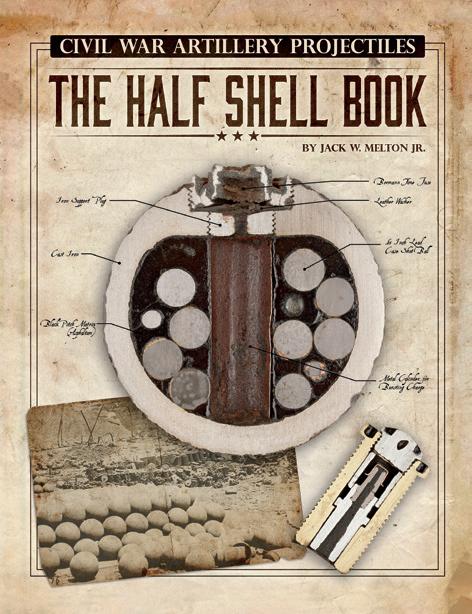
For more information and how to order visit the website www. ArtillerymanMagazine.com or call 800-777-1862.
$89.95 + $8 media mail for the standard edition.
souvenirs or because they may have been made of gold, he didn’t know which. In any event, he said he picked up a canteen and a cartridge box that he hung over a musket he found, and walked back home to Emmitsburg.
Humerick married Anna Jackson on Oct. 27, 1867. They produced 11 children, one of whom, Jackson, had a daughter, Dorothy, the mother of Thomas Seiss of Graceham. Seiss and his wife, Darlene, live in the house where young Belva Anne Elizabeth Cramer pumped water for the horses ridden by Stuart’s cavalrymen on July 5, 1863, (February 2020 Civil War News). George Humerick died Sept. 27, 1940, from complications of a fall that resulted in several broken ribs at age 97. Just two years earlier, he watched Union reenactors march toward Gettysburg for the battle’s seventy-fifth anniversary. His wife, Anna, died in 1927.
Thanks to Tom Seiss for providing the information about his great grandfather on his mother’s side. Tom lives in Graceham, Maryland, just outside Thurmont, in an area rich in Civil War history.
Carl Sell has written two books about his ancestors who fought for the south at Gettysburg, along with another book about Major General James Ewell Brown Stuart, whose troopers passed Tom Seiss’ now front door on at least two occasions. Sell also has written about a distant Union cousin who was killed by Mosby’s guerillas. In addition, he has written numerous articles for Civil War News. Contact him at sellcarl@ aol.com or 703-971-4716.
Do you think an accomplished thriller novelist can write an historical rendering of a little studied event in Civil War history? Well, the answer is a resounding YES! History has downplayed the “Baltimore Plot” to some degree because there is not a lot of information available on the perpetrators, planning, details, etc., etc. In fact, some scholars still believe it never happened. Mr. Meltzer may not be one of the skeptics. He presents what is known, who participated, and gives the conclusions he reached. Virtually all is presented without opinion, ‘just the facts.’
This is a relatively long book at 434 pages. The story is told in four parts, with part 1 giving a short bio of Lincoln in the years before his election. Part 2
contains the election and an introduction to all the numerous participants. Part 3 delves into the actual plot, its preparation, participants, and counter measures to insure its failure. It is here we meet the principal characters such as Cipriano Fernandini, Otis K. Hilliard, Alan Pinkerton, Ward Lamon, Kate Warner, and a host of others. We are also introduced to various secret organizations such as the National Guards, the Knights of the Golden Circle, and the Treason Committee, among others. Part 4 concludes the story with an Aftermath that presents us with the fate of each participant.
The story is told in chronological order moving from the various locations as events unfold. The information is basically straight forward. Since much is still unknown, a lot of dialogue is speculation. This does not interfere with the historical aspect of the event. Along the way, the authors dispel many myths concerning this event. One, in particular, is Lincoln’s wearing of women’s clothing.
There is a strong bibliography and numerous footnotes for the reader to seek further information. I found the Aftermath a most interesting addition to the story.
This is a well written account, full of information, and highly entertaining. It is a valuable addition to your library. My suggestion is that you get a copy and enjoy a fascinating account of this little discussed topic. I highly recommend it and you will not be disappointed.
Joseph Truglio, of Manchester, N.J., is a retired Motion Picture Technician who has a lifelong interest in the Civil War. He is currently President of the Phil Kearny CWRT in Hasbrouck Heights, N.J.
9. Publisher: Jack W. Melton Jr. 520 Folly Road, Suite 25 PMB 379, Charleston, SC 29412, Editor: Dr. Lawrence E. Babits, 313 Crestline Blvd, Greenville, NC 27834
10. Historical Publications,
51 November 2020 Civil War News
Statement of Ownership, Management and Circulation (PS Form 3526) 1. Civil War News 2. 1053-1181 3. 09/30/2020 4. Monthly 5. 12 6. $38.50 7. 520 Folly Road,
25 PMB 379, Charleston,
800-777-1862
Suite
SC 29412. Jack W. Melton Jr.
8. 520 Folly Road, Suite 25 PMB 379, Charleston, SC 29412. Jack W. Melton Jr. 800-777-1862
LLC. Jack W. Melton Jr. and Margaret Ellen Melton. 520 Folly Road, Suite 25 PMB 379, Charleston, SC 29412 11. None 12. Has not changed during preceding 12 months 13. Civil War News 14. Oct. 2020 15. A. 2,450 2,250 B1. 2,213 2,063 B2. 3 2 B3. 51 51 B4. 0 0 C. 2,267 2,116 D1. 0 0 D2. 0 0 D3. 0 0 D4. 0 0 E. 0 0 F. 2,267 2,116 G. 183 134 H. 2,450 2,250 I. 100% 100% 16.A. 894 1,013 B. 3,161 3,129 C. 3,161 3,129 D. 100% 100%
certify that 50% of all my distributed copies (electronic and print) are paid above a nominal price. 17. November 2020
President, 9/30/2020
I
18. Jack W. Melton Jr.,
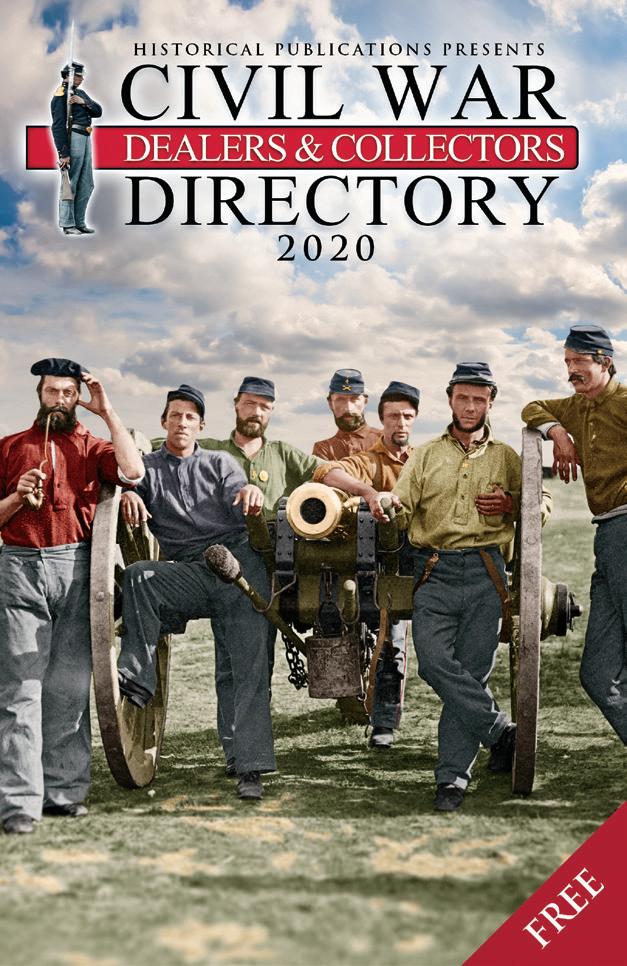




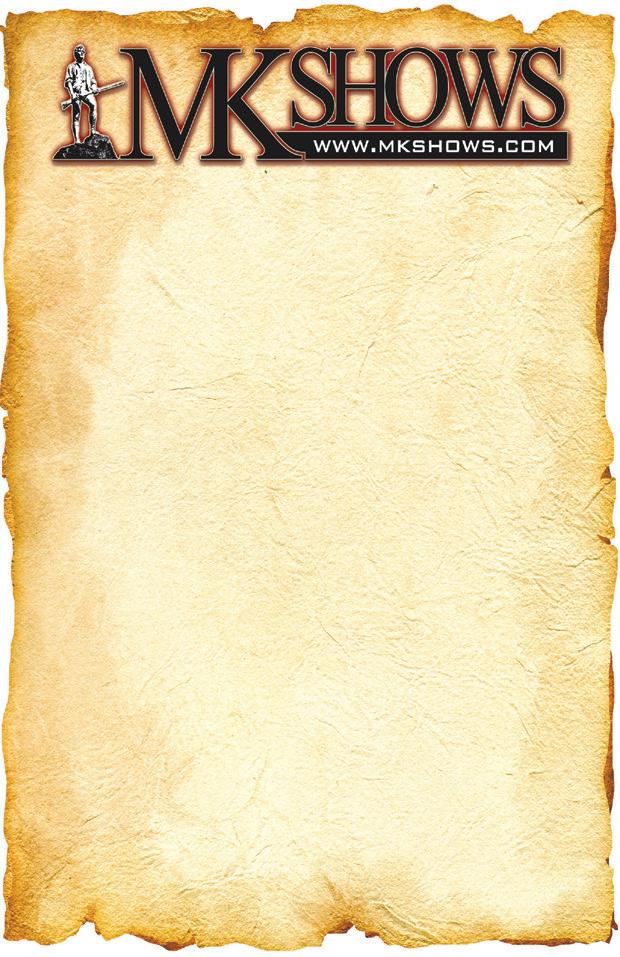


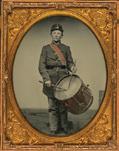
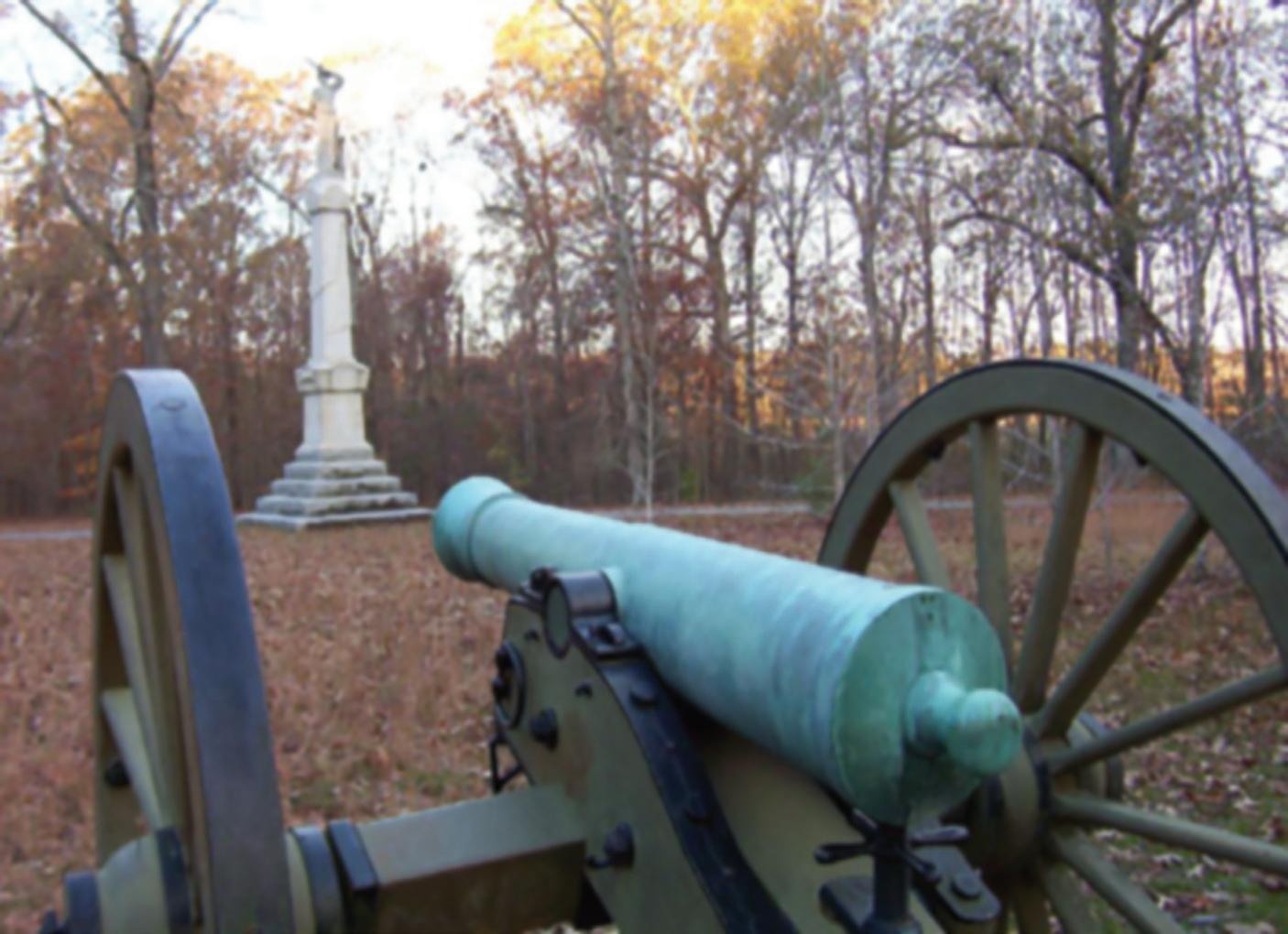






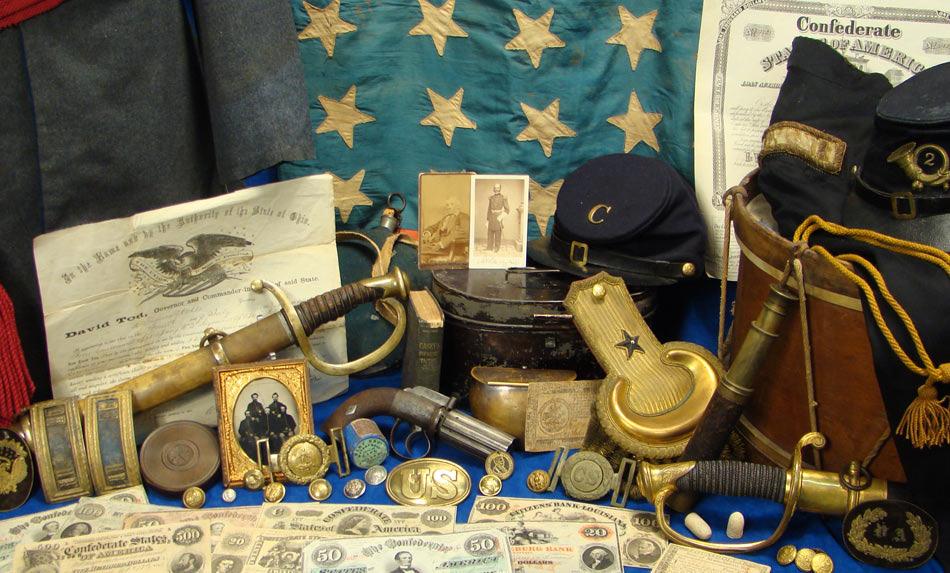
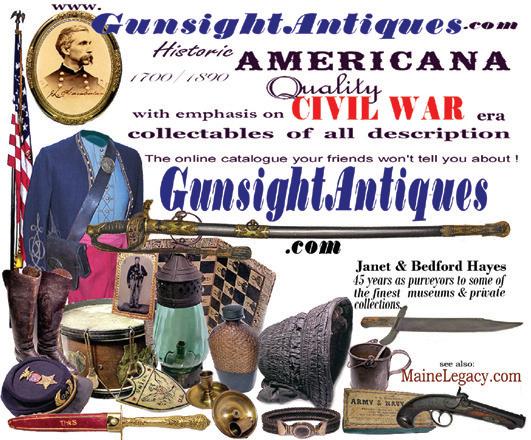


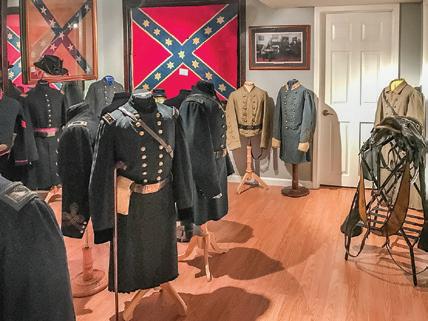

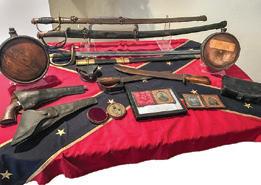
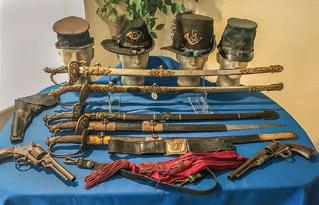







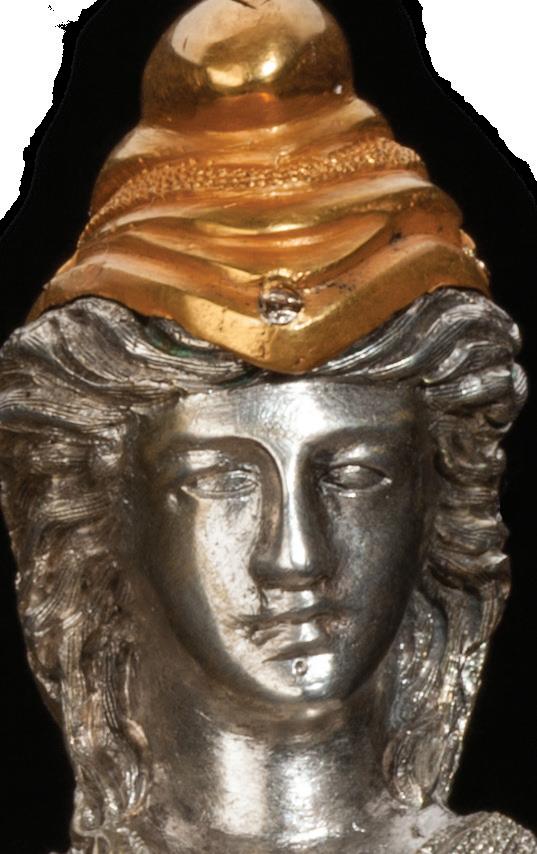

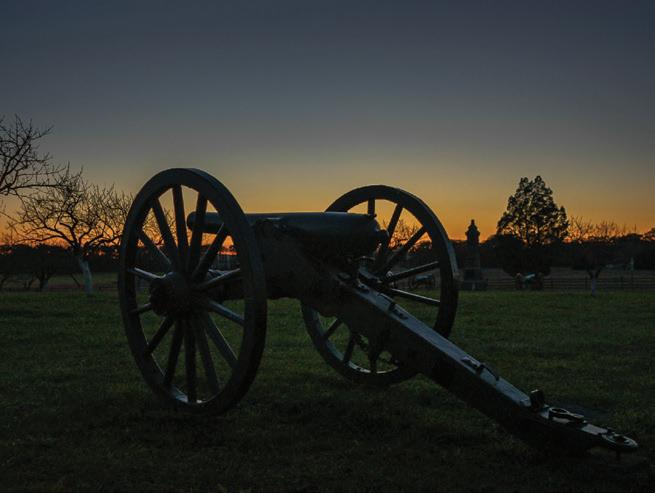












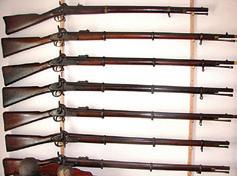
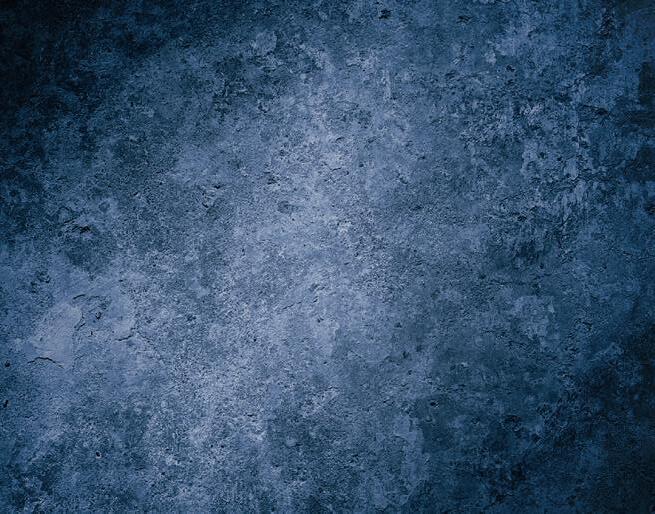
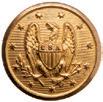







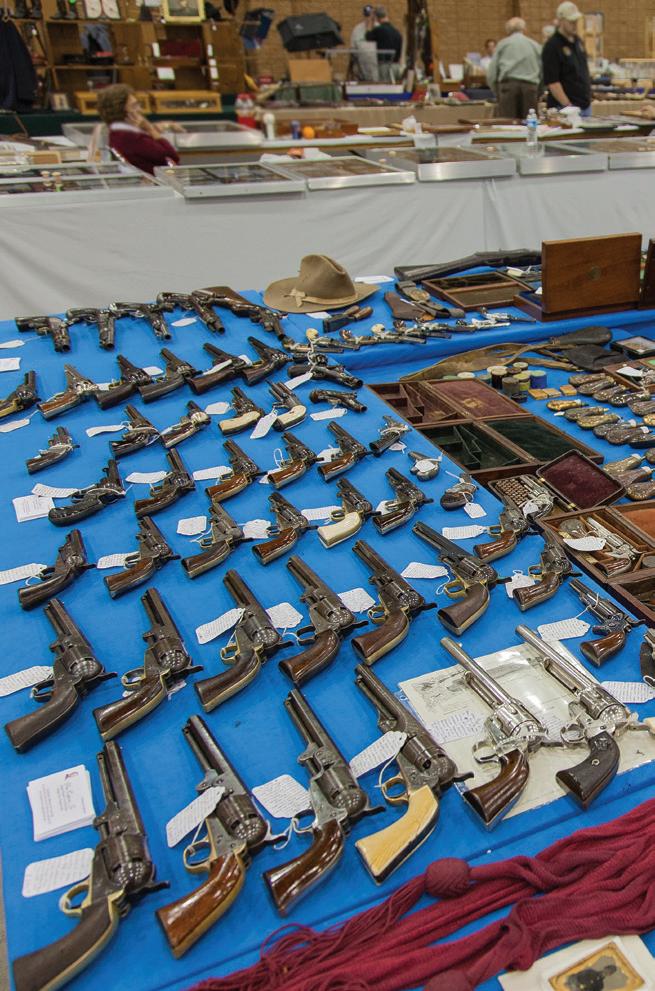
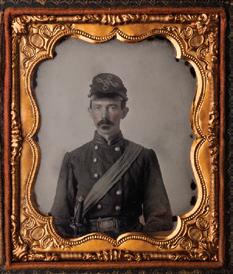
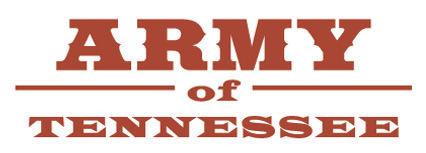




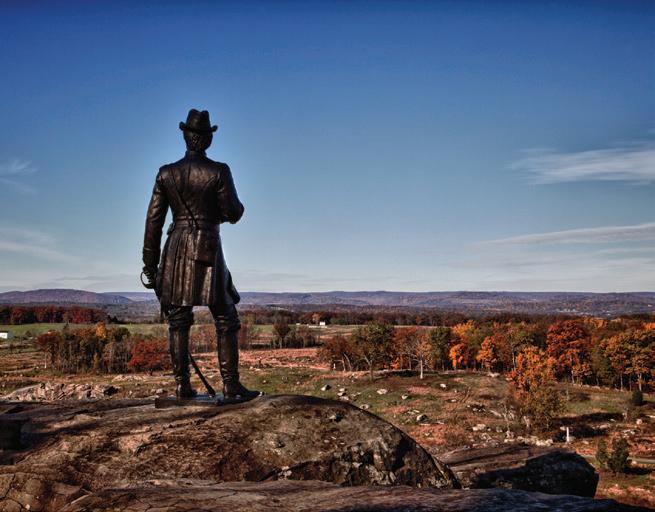

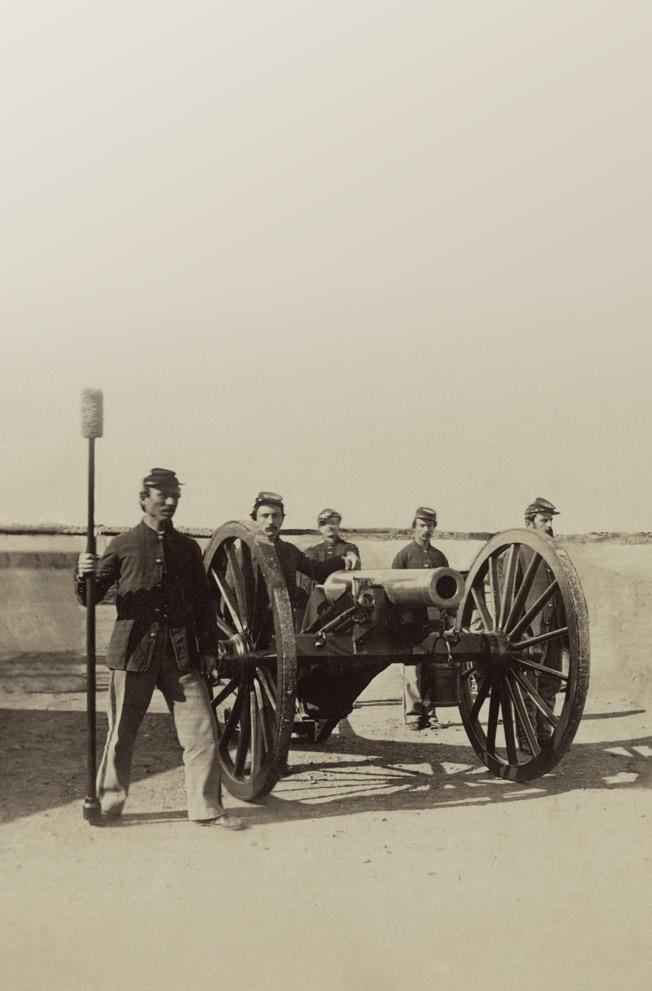



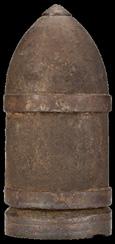
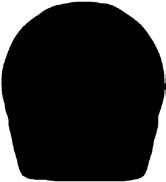



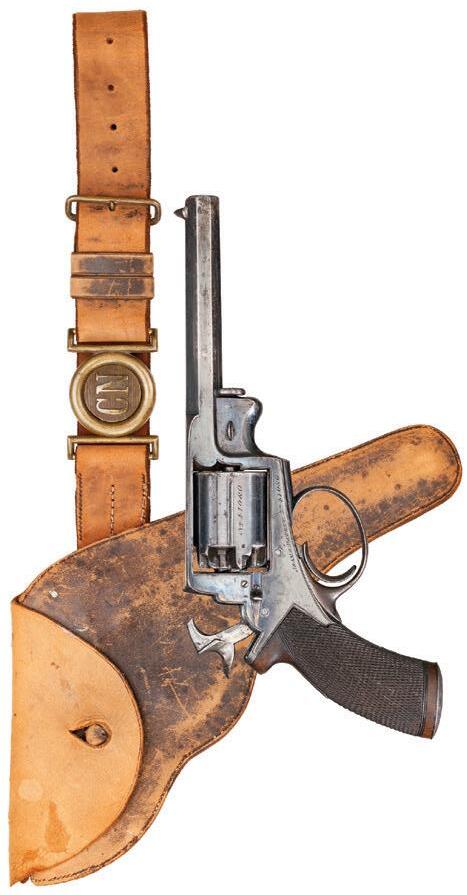

CivilWarShop.com Offering the Finest Investment Grade Military Memorabilia since 1981 Buy – Sell – Trade Certified Appraisal Services Life Member Company of Military Historians Lynn and Will Gorges, Proprietors 3910 US Hwy. 70 East New Bern, NC 28560 (252) 636-3039 • civilwarshop@gmail.com www.CivilWarShop.com Long Bay Salvage LLC specializes in the recovery and restoration of authentic Civil War Cannon with an emphasis on 10-Inch Columbiads, offering discerning collectors and museums the opportunity to own what has become a rare piece of Civil War history. Long Bay Salvage also works with historical entities (government and private) to recover and conserve large historical artifacts with a specialty in large field and naval artillery pieces. Glenn Dutton Glenn 770-351-7565 Rufus Perdue Rufus 843-315-9818 PLEASE CONTACT US FOR MORE INFORMATION www.LongBaySalvage.com Promoters of Quality Shows for Shooters, Collectors, Civil War and Militaria Enthusiasts Military Collectible & Gun & Knife Shows Presents The Finest Mike Kent and Associates, LLC • PO Box 685 • Monroe, GA 30655 (770) 630-7296 • Mike@MKShows.com • www.MKShows.com Northwest Georgia Trade Center 2211 Dug Gap Battle Road Dalton, GA 30720 February 1 & 2, 2020 Chickamauga (Dalton) Civil War Show Williamson County Ag Expo Park 4215 Long Lane Franklin, TN 37064 December 5 & 6, 2020 Middle TN (Franklin) Civil War Show l Shiloh 2405 Oak Grove Road Savannah, TN 38372 731-438-3541 ShilohRelics.com History@shilohrelics.com owner Rafael Eledge .com Dealing in the Finest Authentic Militaria Since 1995 with an Emphasis on the American Civil War Pistols, Muskets, Carbines, Rifles, Bayonets, Swords, Uniforms, Headgear, Belt Buckles, Cannon, Buttons, Bullets, Artillery Implements Etc. Mid West Civil War Relics MidWestCivilWarRelics.com Allen Wandling Phone: 618-789-5751 Email: awandling1@gmail.com Museum Quality Civil War Union & Confederate Artifacts! We handle the Best Antique Bowie Knifes, Civil War Swords, Confederate D-guards, Antique Firearms, Dug Relics, Buckles & Belts, Identified Relics, Letters, Documents, Images, Currency, Uniforms, Head Gear & Flags. 3500 Shacklett Rd • Murfreesboro, TN 37129 tom@stonesrivertrading.com • (615) 336-2188 StonesRiverTrading.com Tom Hays Proprietor We carry all types of relics, dug & non-dug, Confederate & Federal. 100% Guaranteed. A strong emphasis on dug relics, but also a full line of non-dug relics of all types. Over 30 years experience with a full time, online store since 1997. We also have a shop located five miles from Stones River National Battlefield that is open by appointment. Mid West Civil War Relics MidWestCivilWarRelics.com Allen Wandling Phone: 618-789-5751 Email: awandling1@gmail.com Museum Quality Civil War Union & Confederate Artifacts! We handle the Best Antique Bowie Knifes, Civil War Swords, Confederate D-guards, Antique Firearms, Dug Relics, Buckles & Belts, Identified Relics, Letters, Documents, Images, Currency, Uniforms, Head Gear & Flags. www.CollegeHillArsenal.com Tim Prince College Hill Arsenal PO Box 178204 Nashville, TN 37217 615-972-2418 Preston Bain Nashville, TN (615) 397-5186 www.NashvilleRelics.com Nashville Civil War Relics “Old times there are not forgotten” Buying The 11311 George Carolina Antique Arms Civil War Period Arms & Equipment Michael Dyches www.CarolinaAntiqueArms.com Phone: 864-871-5325 Email: mdyches.ogma@gmail.com Buying and Selling The Finest in Americana 11311 S. Indian River Dr. • Fort Pierce, Florida 34982 770-329-4985 • gwjuno@aol.com George Weller Juno P.O. Box 342 Thompsons Station, TN 37179 615-585-0115 Email: brubon2@bellsouth.net Franklin Relics P.O. Box 342 Thompsons Station, TN 37179 615-585-0115 Email: brubon2@bellsouth.net Franklin Relics Specializing in Accoutrements, Edged Weapons, Firearms and Uniforms FranklinRelics.com Bruce Hohler Proprietor Specializing in Buttons, Buckles, Currency, Hat Devices and other Military Artifacts. www.AmericanRelics.net Allen Phillips 1014 Reservoir St., Suite B Harrisonburg, VA 22801 American Relics Phone: 540-476-1969 Email: americanrelicsnet@gmail.com www.CivilWarBadges.com Everitt Bowles, Owner • 770.926.1132 1036 Washington Avenue Woodstock, Georgia 30188 The Largest Selection of GAR & UCV Hundreds of Memorabilia Items from Rev War through Vietnam Secure & Easy Guaranteed Authenticity of Every Item Vin Caponi Historic Antiques Vin Caponi, Jr. 18 Broadway Malverne, NY 11565 Store: 516-593-3516 Cell: 516-353-3250 rampantcolt@aol.com http://www.vincaponi.com We carry a very large inventory of Colt and Civil War firearms including muskets, carbines, rifles and accoutrements. Our inventory of historic antiques and firearms begin at the early collectors level and range all the way up to the advanced collector and investors level. 8895 Town and Country Circle • Knoxville, TN 37923 Phone: 865-693-3007 info@armyoftennesseerelics.com Civil War Artifacts Nick Periut Proprietor ArmyofTennesseeRelics.com Buying and Selling High Quality Images, Belt Buckles and Plates, Artillery Shells, rare Bullets and Buttons! Richard Gersten (708) 786-8630 PO BOX 31113, CHICAGO, ILLINOIS 60631 www.YankeeCollector.com Specializing in Early Americana, Civil War American Indian, Old West, WW I & II Guns, Swords & Memorabilia www.uniondb.com 34 York St • Gettysburg, PA 17325 Phone: 717-334-2350 • Email: bsynnamon@gmail.com Specializing in Authentic Civil War Artifacts The Union DrUmmer Boy Courtesy Library of Congress A Museum Where You Can Shop! Contact Glenn Dutton at: glennjdutton@aol.com or 770-351-7565 BUYING & SELLING Field & Heavy Artillery Cannon, Shells, Fuses & Etc. Highly Embellished Rarities Michael Simens HistoricalArms.com Tel: 440-744-9088 • mail@HistoricalArms.net Beauregard’s Gold Inlaid Manhattan Revolver Rare Accoutrements Michael Simens HistoricalArms.com Tel: 440-744-9088 mail@HistoricalArms.net The Only Complete Beaumont-Adams CS Naval Rig Michael Simens HistoricalArms.com Tel: 440-744-9088 • mail@HistoricalArms.net Unusal Firearms Treeby Chain Gun, One Of Only Five Produced The 2020 Civil War Dealers Directory is available to view or download a free copy visit: www. civilwardealers.com/dealers.htm. Here are the current advertisers in this years directory.

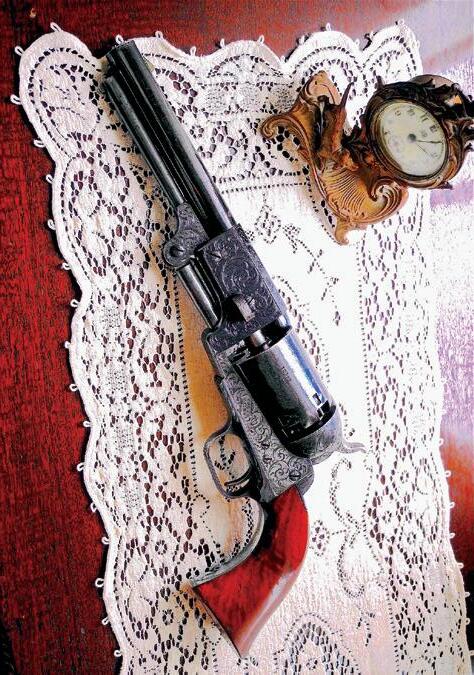


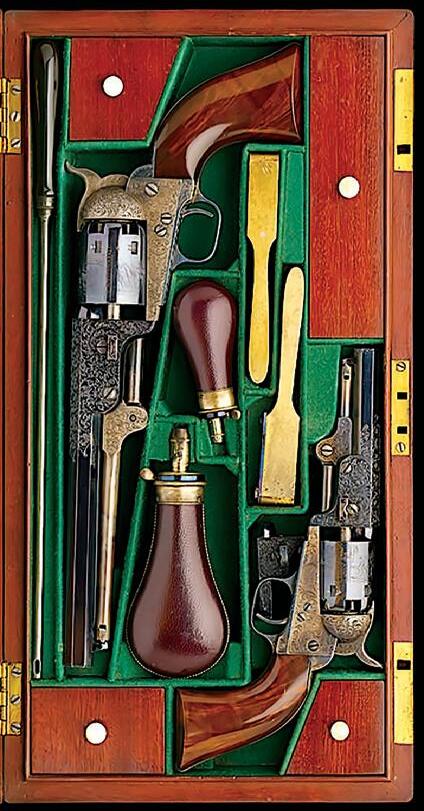




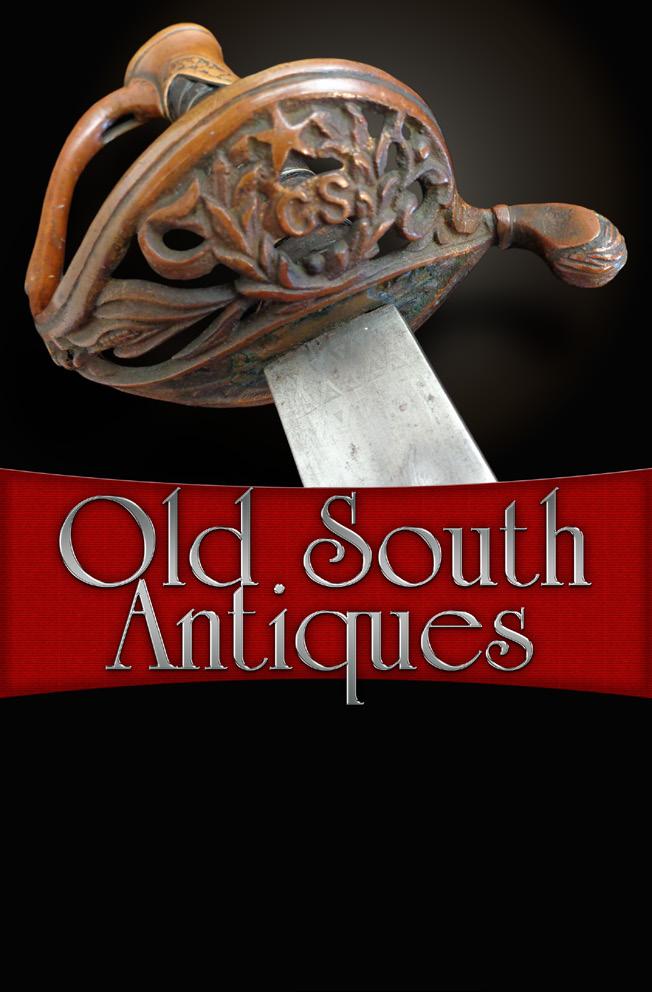





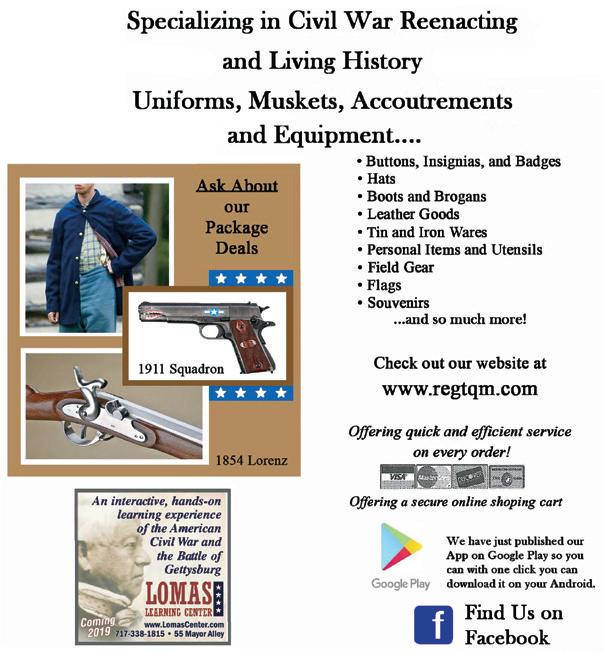


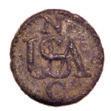

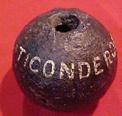
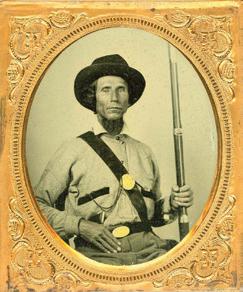

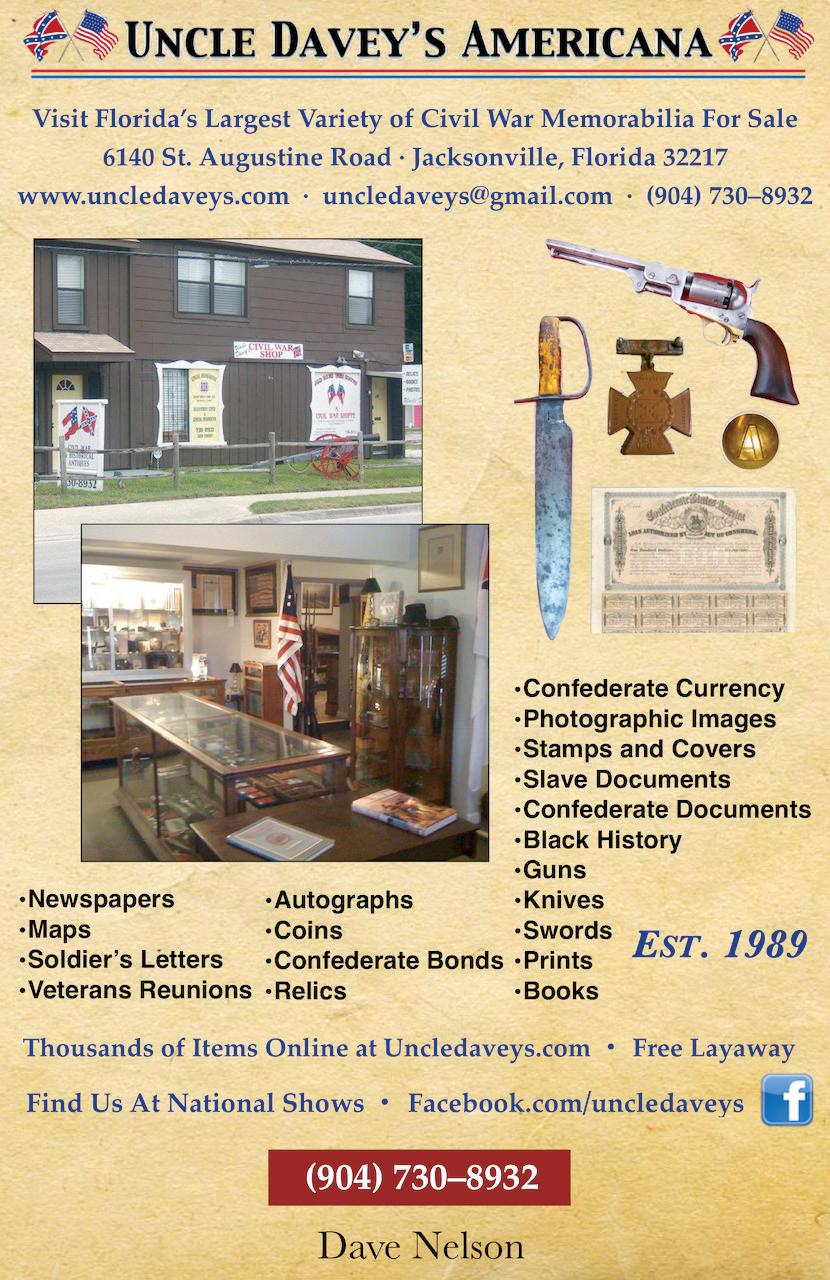
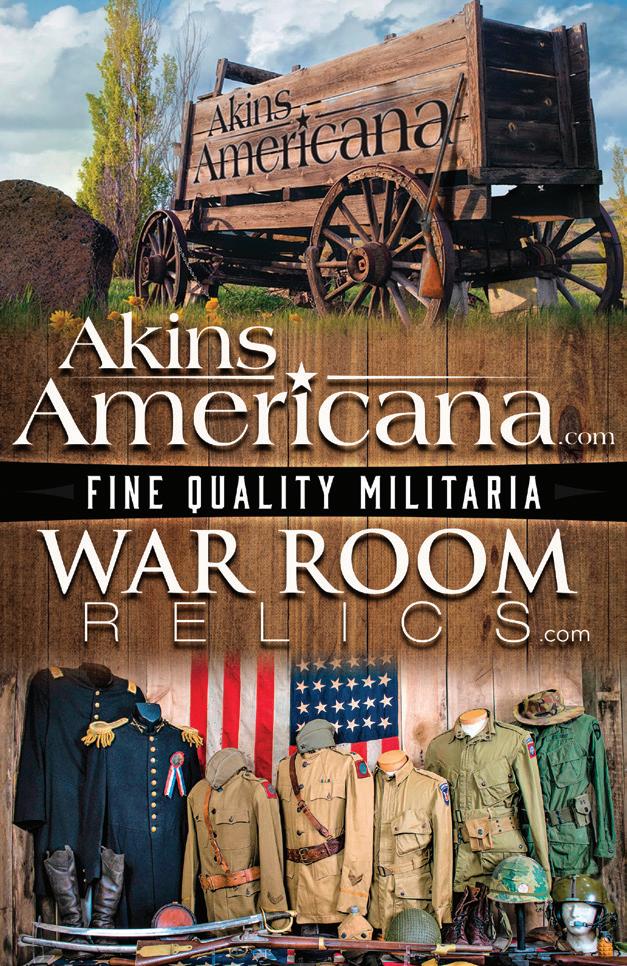






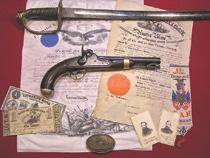





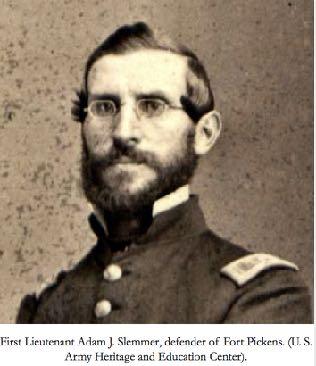

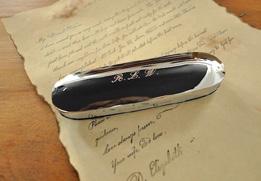

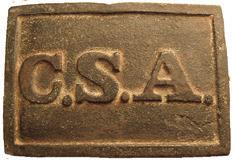
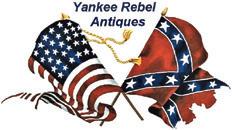





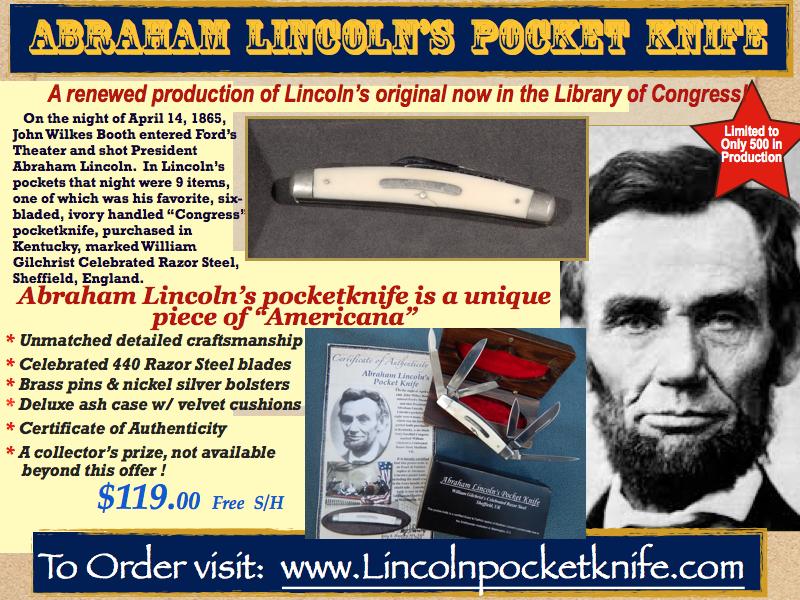
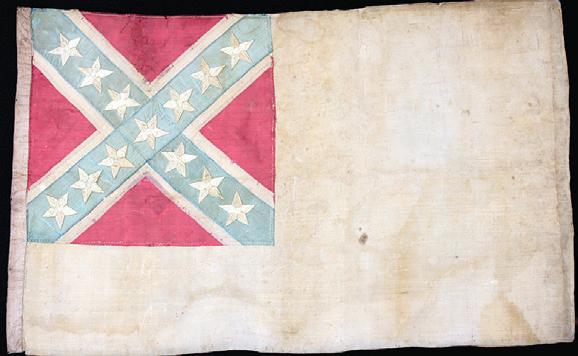


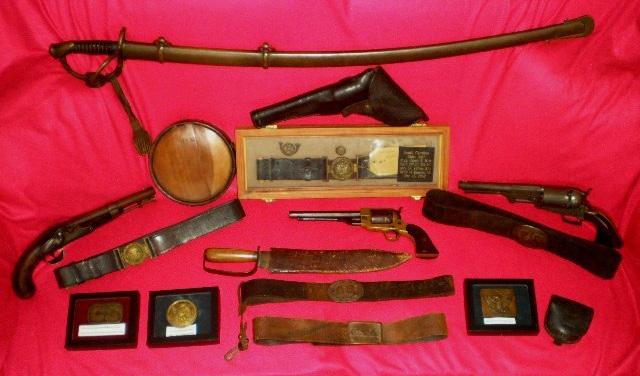






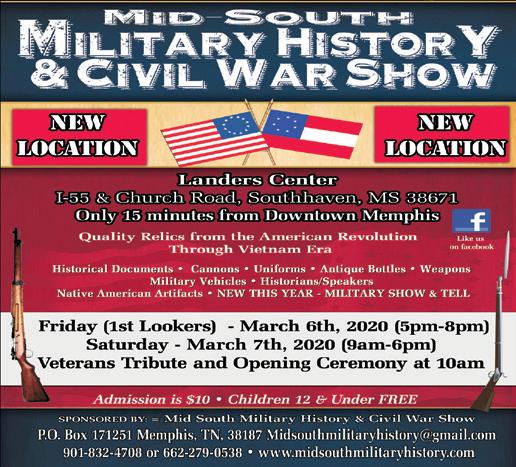


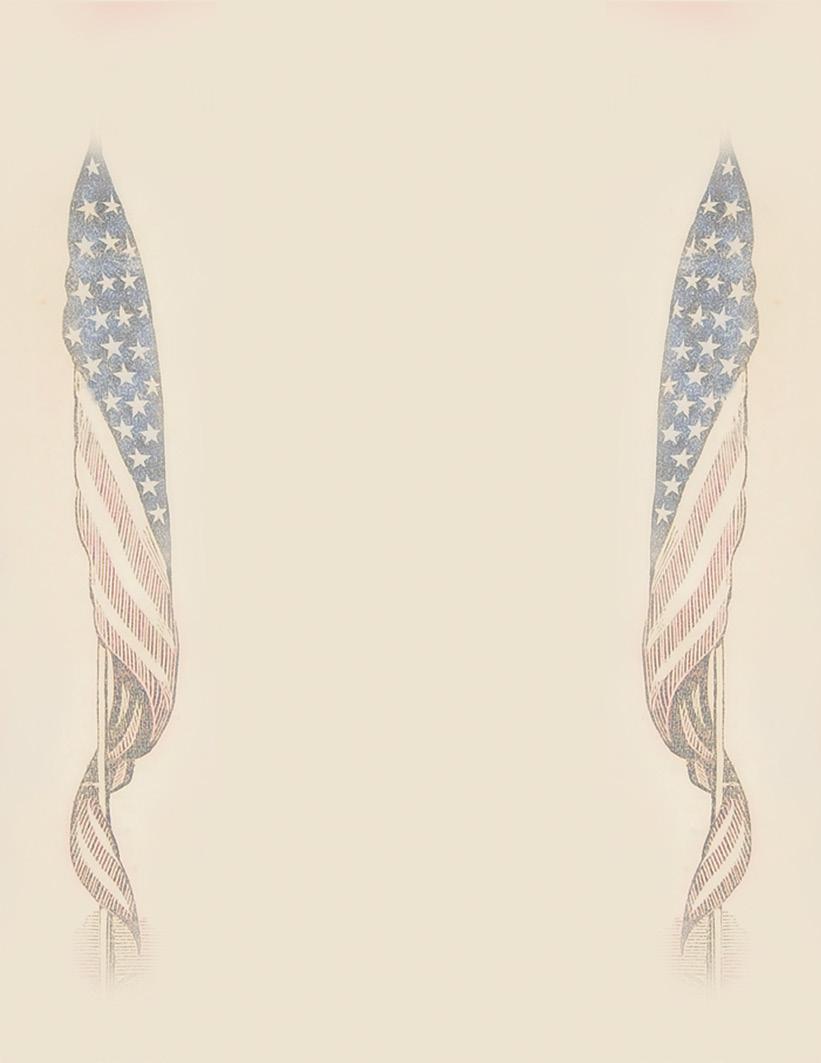
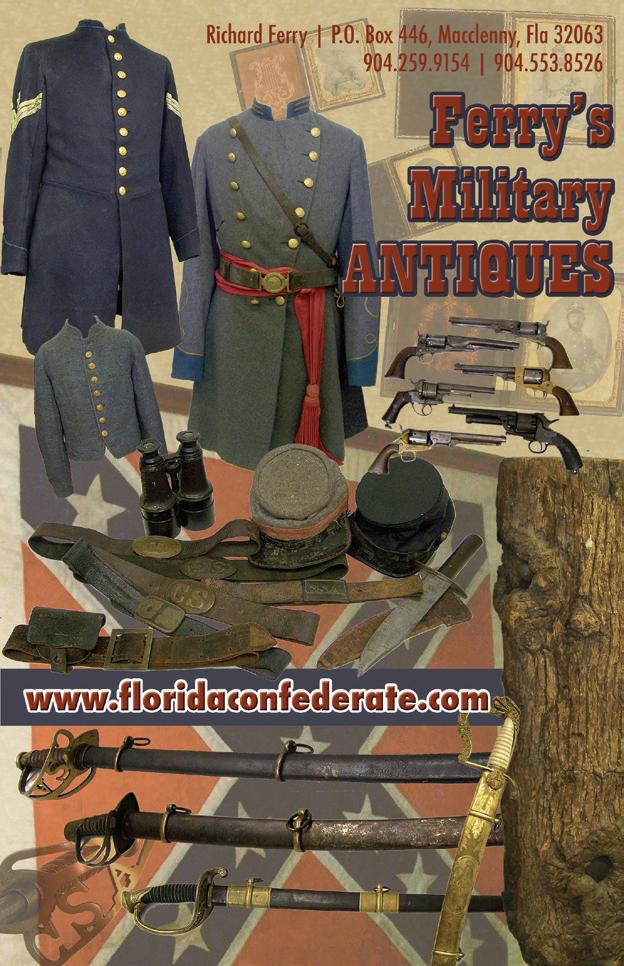



Michael Simens HistoricalArms.com Tel: 440-744-9088 • mail@HistoricalArms.net Beautiful Winchesters A Conrad Ulrich Masterpiece Remarkable Presentations A Gift To Eli Whitney, Jr. Michael Simens HistoricalArms.com Tel: 440-744-9088 • mail@HistoricalArms.net Spectacular Groupings Inscribed And/Or Notarized Provenances Michael Simens HistoricalArms.com Tel: 440-744-9088 • mail@HistoricalArms.net Michael Simens HistoricalArms.com Tel: 440-744-9088 • mail@HistoricalArms.net Magnificent Swords Georgia Presentation To William J. Hardee. Later Confederate Lieut. General. We Buy, Sell, Authentic And Appraise World-Class Historical Artifacts Valuable Colts Michael Simens • HistoricalArms.com Tel: 440-744-9088 • mail@HistoricalArms.net Attributed To Rembrandt Peale Fine Antiques & Militaria Military Items 1650-1945 Armor Swords Firearms Bayonets Equipment Accoutrements www.csarms.com PO Box 602 9150 John S. Mosby Hwy. Upperville, Virginia 20185 Shop Phone: 540-592-7273 Email: sophiacsarms@aol.com C.S. Arms, Inc. Specialize in U.S. & British Militaria Old South Antiques, LLC Hickory Hill Mansion, 9222 Wickham Manor Way, Ashland, VA 23005 CARSON SQUEEGIE JENKINS 321.505.7524 WWW.SQUEEGIE.NET DESIGN SERVICES PRINT MEDIA ILLUSTRATIONS WEB ADVERTISING ANIMATIONS PACKAGE DESIGN CORPORATE BRANDING PRINT & MAGAZINE ADS LOGO DESIGN TEXTILE/ T-SHIRTS WEBSITES DESIGN MENU DESIGNS BROCHURES EVENT POSTERS BUSINESS CARDS 3D RENDERINGS MARKETING NEW BUSINESS START-UP PACKAGES AVAILABLE The Historical Shop Margaret & Cary Delery Box 73244 Metairie, LA 70033 Phone: 504-467-2532 c.j.delery@att.net www.historicalshop.com Since 1978 selling rare Americana Historical Shop The e Early American items through the Civil War artifacts, autographs, photography, currency, bonds, historical displays, military items, and more…… P.O. Box 160 • Kingston, TN 37763 Phone: 803-431-1798 • Email: vann@veteransattic.com www.VeteransAttic.com Vann Martin United Confederate Veterans, Grand Army of the Republic, Civil War Photographs and other Civil War items. Civil War Military Longarms a Specialty ConfederateArmsCompany.com 1209 Victor II Blvd., Morgan City, La. 70380 Cell: 985-518-1802 • Email: leegray@LHprinting.com Lee Gray Confederate Arms Company PO Box 129 Dover, TN 37058 Buying & Selling: Images Artillery Firearms Dug Relics Edged Weapons Non-dug Artifacts John & Nikki Walsh Fort Donelson Relics FortDonelsonRelics.com Full Line Civil War Artifact Dealer Email: john@fortdonelsonrelics.com P.O. Box 160 • Kingston, TN 37763 Phone: 803-431-1798 • Email: vann@veteransattic.com www.VeteransAttic.com Vann Martin United Confederate Veterans, Grand Army of the Republic, Civil War Photographs and other Civil War items. David K. Parks Military Antiques PO Box 180674 Utica, MI 48318-0674 Phone: 586-871-6462 Email: dkpma@comcast.net Offering a large selection of Civil War and Historical Memorabilia ranging from the Revolutionary War to World War I (emphasis on the American Civil War). On line catalog regularly offers over 700 items from nearly every category of collecting. www.RelicsOfHistory.com “Reproduction Antique Spectacles to suit all sights” Authentic reproduction Civil War era eyeglasses to fit your lifestyle. Historically accurate, ophthalmic quality eyeglass frames suitable for reading, distance, bifocals, progressive lenses, sunglasses & nonprescription tinted lenses. Made for full time wear. “Spectacles are most overlooked, most obvious way to spoil an otherwise fine impression.” Thomas Valenza, Optician When you are ready to complete your impression, visit us online for detailed information about our spectacles: www.HistoricEyeWearCompany.com Prices start at $139.95 862.812.4737 Left: Unidentified Union soldier wearing oblong spectacles (Library of Congress) Above Right: First Lieutenant Adam J. Slemmer, defender of Fort Pickens (U.S. Army Heritage & Education Center) The Best Civil War Era Spectacles Buying and Selling original Civil War Confederate & Union Buttons, Belt Buckles, and Accoutrements. NCCivilWarRelics.com PO Box 2122 • Morehead City, NC 28557 • Phone: 252-671-7770 Email: sales@nccivilwarrelics.com or AGaskins1@ec.rr.com Allen Gaskins North Carolina Civil War Relics Robert Jones • 119 Frances Ave. • Stanhope, NJ 07874 Phone: 973-810-2976 • Email: Bob33rd@optonline.net We sell original Civil War artifacts, both excavated and non-excavated. There is also a selection of mid-19th century antiques. Yankee Rebel Antiques www.YankeeRebelAntiques.com Proprietor, Robert Jones, is the author of seven books on Civil War subjects: The Civil War Canteen Civil War Artillery – A Pictorial Introduction Children at the Battle of Gettysburg –Their Unforgettable Summer The Civil War Canteen Second Edition, Battle of Gettysburg –The Relics, Artifacts & Souvenirs, The Civil War Soldier – His Personal Items, and The Civil War Canteen – Third Edition He has also written articles for North/South Trader Civil War magazine. Order his books online at http://www.lulu.com/spotlight/civilwarbooks Promoters of Quality Shows for Shooters, Collectors, Civil War and Militaria Enthusiasts Military Collectible & Gun & Knife Shows Mike Kent and Associates, LLC • PO Box 685 • Monroe, GA 30655 (770) 630-7296 • Mike@MKShows.com • www.MKShows.com February 1 & 2, 2020 Chickamauga (Dalton) Civil War Show November 14 & 15, 2020 Capital of the Confederacy Civil War Show December 5 & 6, 2020 Middle TN (Franklin) Civil War Show l l Antique Flag Conservation Services Save your family heirlooms and valuable textiles Specialist in Civil War flag Restoration and Conservation Custom affordable rates free estimates/fully insured email heritageconservationva@gmail.com Or call Josh Phillips at 540-320-6588 Heritage Conservation, LLC SELLING CIVIL WAR MILITARIA Journey’s End Antiques Antiques • Collectibles Paper Money • US Coins Furniture • Glassware Old Toys, Dolls & Trains Paul Brill apbrill@earthlink.net Home: 910.725.0466 | Cell: 910.638.4542 Southern Pines, NC 28387 journeysendantiques.com Firearms & Militaria Auctioneers or Better! On Expensive Items and Valuable Collections %0 Seller’s Commission The Tradition Continues - New Facility, Same Family and Great Location We are pleased to announce the purchase of the former Auction Facility of World-Renowned Hall-of-Fame Auctioneer James Julia. This acquisition will give us one of the largest firearms auction compounds in the industry with nearly 50,000 square feet of climate controlled and secured space dedicated to the promotion, presentation and handling of fine firearms collections. Our Fall 2019 Firearm Auction generated nearly $5.5 Million in sales for our consignors - Our largest to date! Call our offices to be part of our next Premier Firearms Auction Consignments Now Being Accepted 199 Skowhegan Rd | Fairfield, ME 04937 207-453-2114 civilwar@poulinauctions.com Website: poulinauctions.com Stephen Poulin, ME Lic # 1115 Presentation Sword of Gettysburg Hero General Alpheus Williams (est. $20,000 30,000) Sold $41,125 Sold $41,125 Rigdon & Ansley Confederate Revolver Carried By Captain Luther M. Clements, Co. F, 41st Alabama (Est. $25,000-35,000) Unique 1864 War 6 Tube Cartridge Box 5,000) Sold $7,635 Sold $41,710 Hand Sewn Civil War Era 13 Star Flag (Est. $3,000-5,000) Sold $38,185 Sold $36,425 Confederate Bilharz Muzzleloading Carbine (Est. $15,000-20,000) Loading Percussion Carbine (Est. $20,000-30,000) Loading Carbine (Est. $15,000-20,000) Sold $23,500 Sold $23,500 Fine Cook & Brother Athens Georgia Confederate Percussion Carbine (Est. $20,000-25,000)
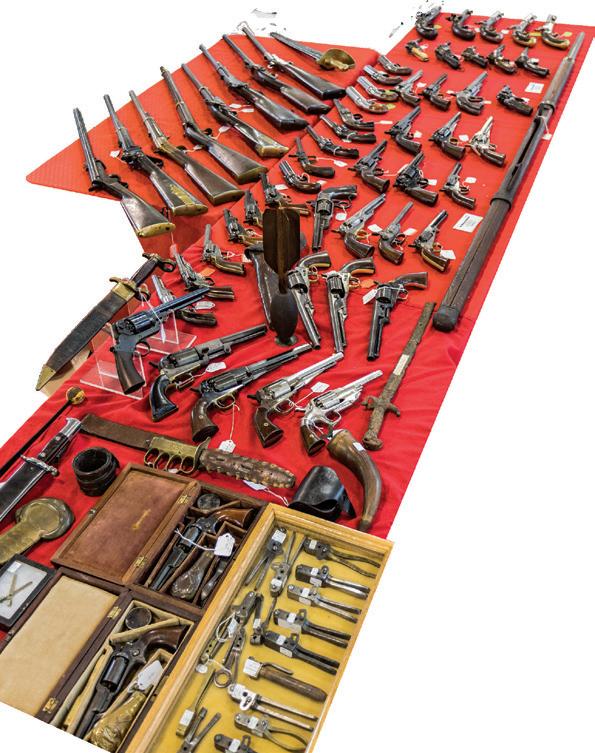
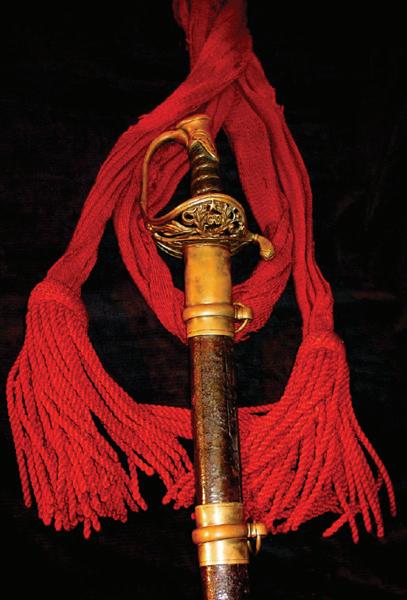






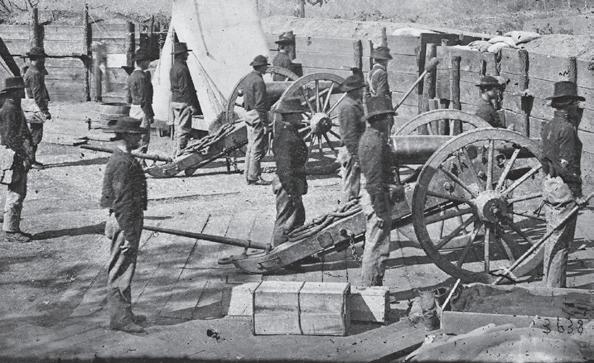

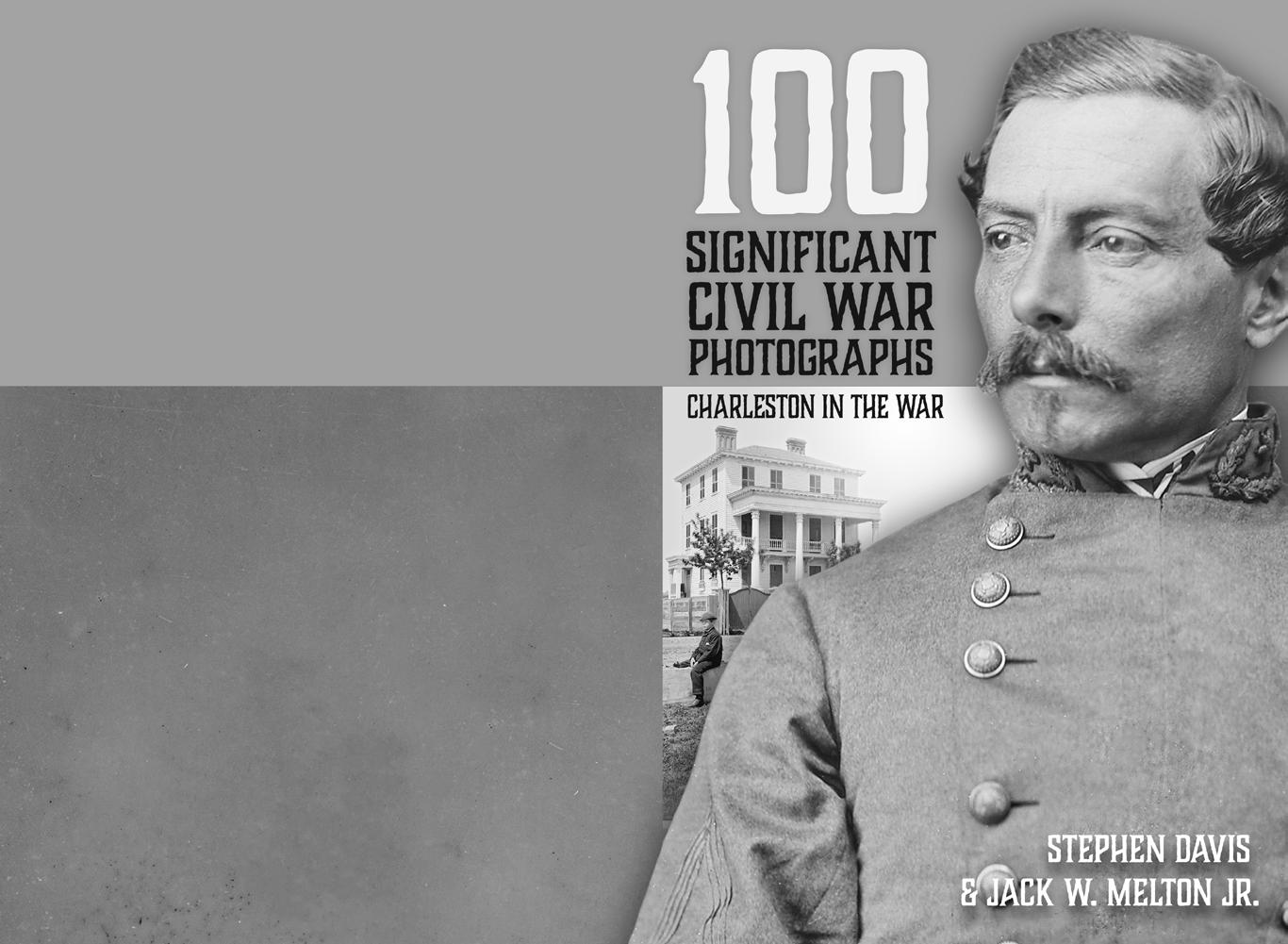

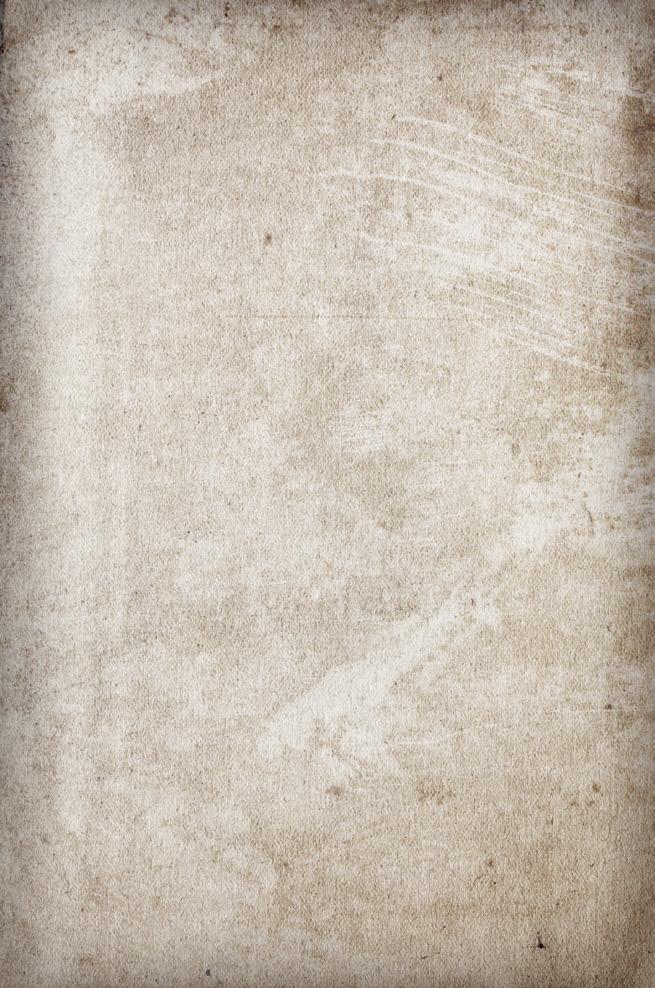


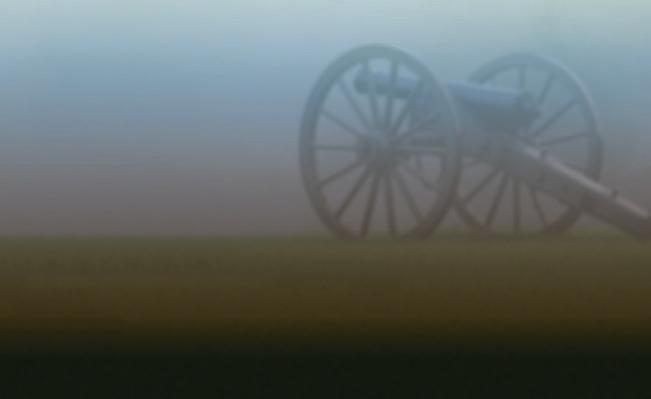




















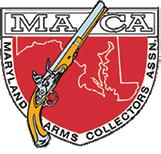

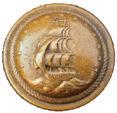

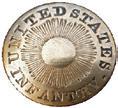
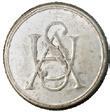




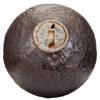

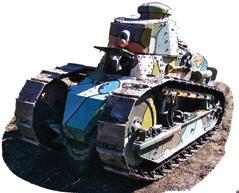

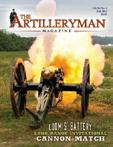

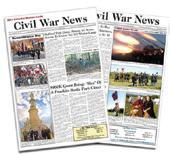
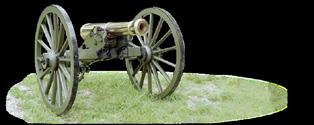


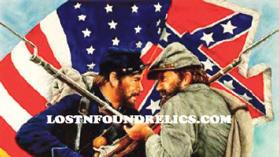




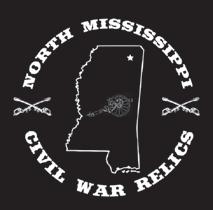















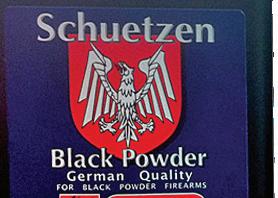


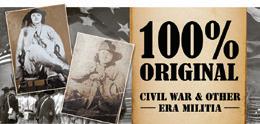

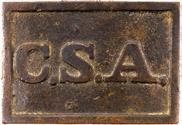

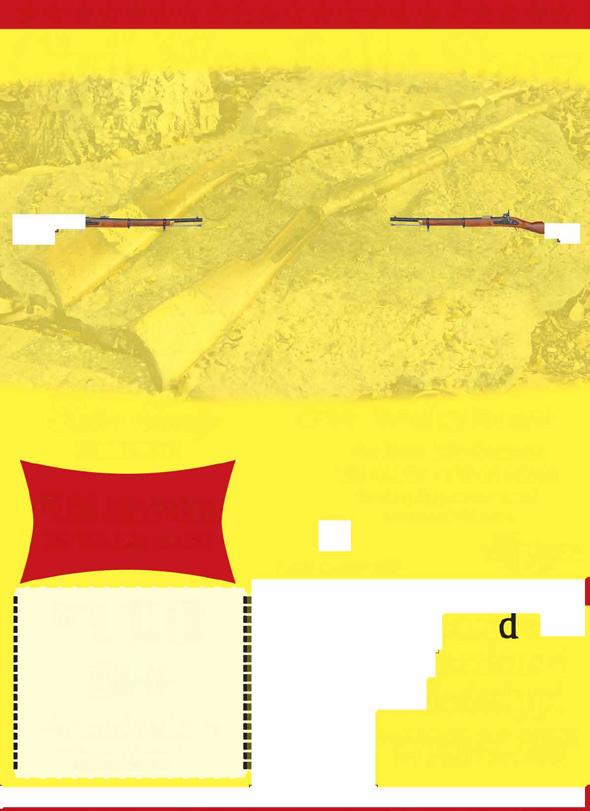
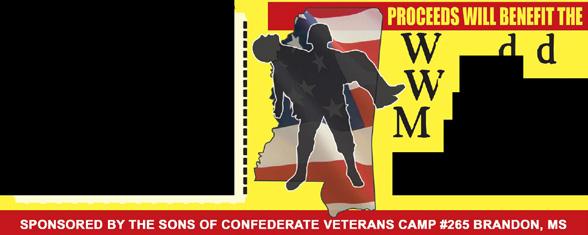








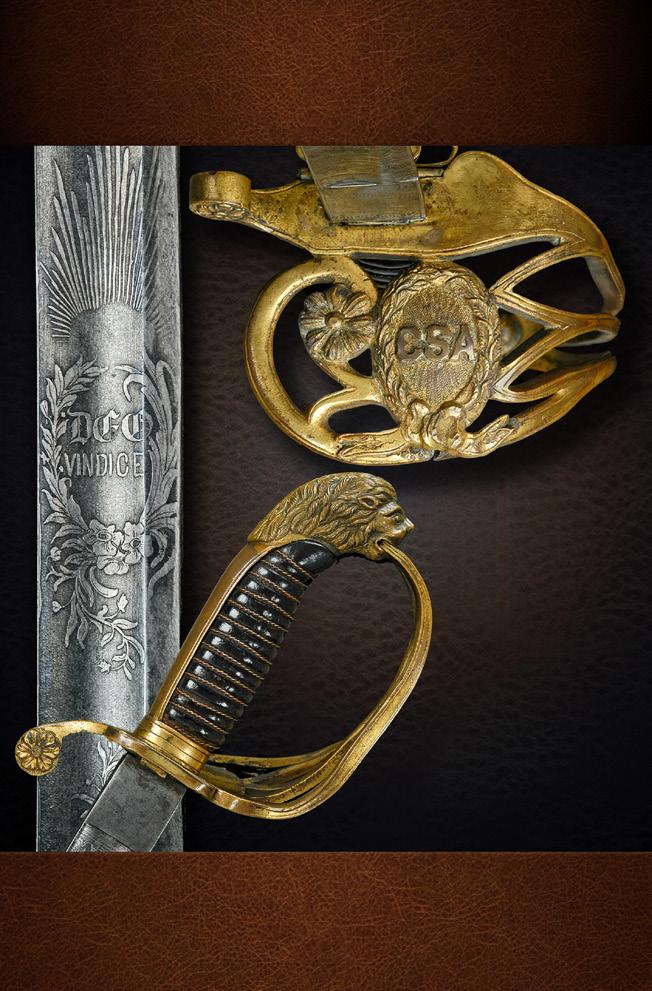






54 Civil War News November 2020 JJ Military Antiques Buying and Selling Original Rev War – WWII Guns, Swords, Bayonets, Molds, Flasks, Tools and Accoutrements. Specializing in all Civil War Union & Confederate Artifacts. www.jjmilitaryantiques.com PO Box 18 • Mt. Bethel, PA 18343 • Phone: 610-599-0766 Email: jjmilitaryantiques@gmail.com THE FINEST HISTORICAL ANTIQUE MILITARIA Wallace Markert info@csacquisitions.com 16905 Nash Road • Dewitt, Virginia 23840 804-536-6413 • 804-469-7362 www.csacquisitions.com JJ Military Antiques Buying and Selling Original Rev War – WWII Guns, Swords, Bayonets, Molds, Flasks, Tools and Accoutrements. Specializing in all Civil War Union & Confederate Artifacts. www.jjmilitaryantiques.com PO Box 18 • Mt. Bethel, PA 18343 • Phone: 610-599-0766 Email: jjmilitaryantiques@gmail.com e American Civil War was the rst war in which both sides widely used entrenchments, repeating ri es, ironclad warships, and telegraphed communications. It was also the rst American War to be extensively photographed. Mathew Brady, Alexander Gardner and Timothy O’Sullivan are famous for having made iconic photographs in the Civil War’s eastern theater. George N. Barnard deserves to be ranked in this top tier for his photographic work in the war’s western theater. A civilian photographer hired by Gen. William T. Sherman’s chief engineer to take pictures of forti cations around Atlanta, Barnard took several hundred of them in and around the city in the fall of 1864. His most famous is the site of Union Maj. Gen. James B. McPherson’s death in the battle of Atlanta, July 22, 1864. us far, no comprehensive, de nitive listing has been made of the photographer’s work. e Library of Congress has 130 images; the U. S. Military Academy at West Point, New York, has at least 98 photographs, donated by Captain Poe’s widow. Other repositories, such as the Gilder Lehrman Institute of American History in New York City, have smaller collections. For this book we have chosen a hundred images we deem “signi cant,” though other students may wonder at some of our selections. We hope that this work will stimulate further interest in Barnardiana, and that other scholarly volumes are yet to come. The Atlanta
100 Signi cant Civil War Photographs: Charleston in the War features newly restored images of scenes in the famed city, taken 1860–1865. e cameramen include the better-known, such as George N. Barnard and George S. Cook, as well as some lesser-known ones: Samuel Cooley, Charles Quinby, the partners Haas & Peale, Osborn & Durbec. Text by Stephen Davis and Jack Melton accompanies each featured photograph, describing the pictured scenes and the history surrounding them. e selected images depict a variety of settings: that portion of Charleston known as e Battery, the “Burnt District” (the area of the city destroyed by the Great Fire of December 1861), the Charleston Arsenal, and the many churches that allow Charlestonians to call theirs “the Holy City.” Special sections of this book are devoted to the huge Blakely guns imported from England by the Confederates and close-ups of Barnard’s views. e history of Civil War Charleston goes back to e Defense of Charleston Harbor (1890) by John Johnson, Confederate major of engineers, and to Reminiscences of Forts Sumter and Moultrie in 1860-’61 (1876) by Capt. Abner Doubleday, Federal second-in-command. Since then Charlestonians have contributed to the history of their city, notably Robert N. Rosen and Richard W. Hatcher III. e historical text surrounding 100 Signi cant Photographs draws on these and other works. A unique feature is its reliance upon the writings of actual participants, such as Augustine T. Smythe (1842–1914) and Emma Edwards Holmes (1838–1910). As a contribution to this literature, 100 Signi cant Civil War Photographs: Charleston in the War o ers rewards for all readers, from the casual novice to the serious student. CHARLESTON IN THE WAR DAVIS & MELTON 100 SIGNIFICANT CIVIL WAR PHOTOGRAPHS CHARLESTON IN THE WAR Stephen Davis & JACK W. Melton JR. ORDER ONLINE AT www.historicalpubs.com GET The STORIES BEHIND THE PHOTOS 100 Signi cant Civil War Photographs: Charleston in the War features newly restored images of scenes in the famed city, taken between 1860–1865. The cameramen include the better-known photographers of the era, such as George N. Barnard and George S. Cook, as well as some lesser-known ones. Detailed descriptions of each scene and the history behind them paint a vivid portrait of life for Charlestonians during the con ict. As a contribution to this literature, 100 Signi cant Civil War Photographs: Charleston in the War o ers rewards for all readers, from the casual novice to the serious student. e Artilleryman is a quarterly magazine founded in 1979 for enthusiasts who collect and shoot cannons and mortars primarily from the Revolutionary War, Civil War to World War II. Now expanded and fully illustrated in rich color throughout the entire magazine. The Artilleryman Magazine magazine SUBSCRIBE TODAY! 520 Folly Road, Suite 25 PMB 379, Charleston, SC 29412 800-777-1862 • mail@artillerymanmagazine.com www.ArtillerymanMagazine.com Civil War Show Civil War Show CARSON SQUEEGIE JENKINS 321.505.7524 WWW.SQUEEGIE.NET DESIGN SERVICES PRINT MEDIA ILLUSTRATIONS WEB ADVERTISING ANIMATIONS PACKAGE DESIGN CORPORATE BRANDING PRINT & MAGAZINE ADS LOGO DESIGN TEXTILE/ T-SHIRTS WEBSITES DESIGN MENU DESIGNS BROCHURES EVENT POSTERS BUSINESS CARDS 3D RENDERINGS MARKETING NEW BUSINESS START-UP PACKAGES AVAILABLE • WEBCAT WEBSITE SYSTEM GrayCat Systems is proud to announce Version 10 of our popular Webcat CMS (Content Management System.) This Internet catalog system easy for the web novice to use yet powerful enough to please an advanced user. To see Web-Cat in action visit www.GrayCatSystems.com backbone connections that delivers optimal performance with absolute scalability. Our experienced and courteous technical sta is led by senior systems architect with over 35 years specializing in information systems designs. All web hosting and software packages are supported 24 hours a day, days a week by our technical team. GrayCat Systems is your answer for professional user-friendly programs and great service. • HOSTING & SOFTWARE DESIGN “GrayCat Systems and Carson Jenkins have helped turn my internet business into one of the web's premiere Civil War artifact sites. wouldn't use any other provider.” Rafael Eledge www.ShilohRelics.com “Expertise, innovation, and dedication to service are hallmarks of GrayCat Systems.” Jack Melton, Jr. Artilleryman Magazine "I can't say enough about the excellence of GrayCat Systems' software and the exceptional quality of their service!" Steve Sylvia North South Trader's Civil War Magazine www.NSTCivilwar.com • BUT DON'T TAKE OUR WORD FOR IT... for more information, visit www.graycatsystems.com 43rd Annual Ohio Civil War Show Including WWI & II 28th Annual Artillery Show Military Material From 1775 Through 1945 Saturday May 2nd – Sunday May 3rd 2020 Sat. 9:00 – 5:00 | Sun. 9:00 – 3:00 Richland County Fairgrounds, Mansfield, Ohio Location: US-30 and Trimble Road 800 Tables of Military Items, Books, Prints and More For Buy, Sell, Trade & Display SPECIAL FEATURES Artillery Demonstrations & Cannon Firing Demonstrations Civil War & WWII Encampments Sutler’s Row Field Hospital Scenario • Period Church Service Camp Chase Fife & Drum & 73 OVI Regimental Band Gettysburg Address Presented by President Lincoln Marlboro Volunteers Traveling Museum & Military Vehicles $7 Admission (includes parking) – Under 12 FREE Handicap Facilities, Food and Door Prizes www.ohiocivilwarshow.com For Information Call: 419-884-2194 Facebook: Ohio Civil War Show Ohio Civil War Show, LLC The Maryland Arms Collectors Assoc., Inc. presents The “Original Baltimore” Antique Arms Show Since 1955 Maryland State Fairgrounds Timonium, MD North of Baltimore, York Road, MD. - Rt. 45 1,000 8-Foot Tables March 21-22, 2020 Public Hours: Sat. 9 to 5, Sun. 9 to 3. Admission: $10.00 – Modern Handguns are Prohibited –Complete information on web site: www.baltimoreshow.com Or Call 443-497-9253 Known as the “CROWN JEWEL” of Collector’s Shows! 1,000’s of Civil War Treasures! Plus! Revolutionary War • Spanish-American War Indian Wars Mountain Men • Bowie Knife Antique Arms • Fur Traders World Wars & II April 25 Sept. 26 2020 • CHICAGOLAND’S NATIONAL 11 Civil War Buttons William Leigh PO Box 145 Hamilton, VA 20159 Phone: 703-777-8549 Email: wmleigh@msn.com Website: http://www.civilwarbuttons.com Collector & Purveyor of American Military Buttons. Our business is founded on the fundamental principle that our customers are our most important resource. Buy with confidence and be assured that the items you order are authentic & accurately represented. Also, interested in purchasing all types of buttons, uniforms, other historical & military items that you may have to offer. Dixie Relics Steve & Melody Strickland PO Box 17 Cumming, GA 30028 Phone: 770-633-5034 Email: 66thgeorgia@bellsouth.net Website: http://www.dixierelicsonline.com eBay ID: Dixierelics Civil War Firearms, Edged Weapons including excavated and non-excavated relics. Our specialty is American Civil War but we do deal in World War and World War II militaria. Hayes Otoupalik Militaria PO Box 8423 Missoula, MT 59808 Phone: 406-549-4817 Email: hayesotoupalik@aol.com Website: http://www.hayesotoupalik.com We have been collecting and dealing in American Militaria from 1830 to 1960 for over 45 years. We Buy, Sell, Trade, Appraise. Your satisfaction is always assured. See our website for over 5,000 assorted items for sale. American Militaria 12 J h J H y ANT QUE AND COLLECTOR WEAPONS G t y b g PA j h y h 717 337- 3013 Historical Publications LLC Jack & Peggy Melton 520 Folly Road Suite 25 PMB 379 Charleston, SC 29412 Phone: 800-777-1862 Email: mail@civilwarnews.com Email: mail@artillerymanmagazine.com Website: http://www.CivilWarNews.com Website: http://www.ArtillerymanMagazine.com Owner and publishers of Civil War News and publisher of The Artilleryman Magazine. Historical Ordnance Works Thomas J. Bailey PO Box 2236 Woodstock, GA 30188 Phone: 770-928-2298 Email: TBa6518757@aol.com Website: http://www.historicalordnanceworks.com Museum Quality Reproduction & Restoration of Civil War Era Ordnance, Tools and Implements. Cannon carriages built and repaired. GET SERIOUS ABOUT COLLECTING! “LET’S CHARGE TO VICTORY!” in JOSHUA’S ATTIC website. Specializing in Photos, Insignia, Weapons, Shells, Plates, Accoutrements and Anything Cool. Visit: www.JoshuasAttic.com 13 LostNFoundRelics Robert & Honey Bushnell 1011 Madison Street Shelbyville, TN 37160 Phone: 931-580-0778, 931-492-4777 Email: quality1@cafes.net Email: lostnfoundrelics@gmail.com Website: http://www.lostnfoundrelics.com We sell artifacts from Medieval, Viking, Civil War, WWII and all ERAS in between. All items are guaranteed authentic. MidTenRelics/YesterYear Larry Hicklen 3511 Old Nashville Hwy. Murfreesboro, TN 37129 Phone: 615-893-3470 Email: larryhicklen@comcast.net Website: http://www.midtenrelics.com Since 1977! Our specialty is museum quality Civil War artifacts for sale, both Union and Confederate items including artillery, swords, rifles, muskets, belt buckles, buttons, currency, images, and documents. Visit us online, at shows and by appointment only. North MS Civil War Relics Tony & Lydia Moore 357 Hwy. 72 E, PO Box 83 Burnsville, MS 38833 Phone: 662-802-0041, 662-665-2290 Email: Tony@nmsrelics.com Website: http://www.nmsrelics.com We offer a wide range of Civil War relics – always having plenty of excavated items. We are always looking to purchase “New” items. Come by our shop or call/email us and be sure to look for us at most major shows. 14 Rick Burton’s Civil War Antiques 931-B S. Main St. #110 Kernersville , NC 27284 Phone: 336-830-1203 Email: ccrelics@ccrelics.com Website: http://www.ccrelics.com Authentic Civil War Military Items with emphasis on Confederate. Revolvers, muskets, carbines, swords, knives, pistols, buttons, bullets, belt plates, cannon and artillery projectiles. We sell both non-dug and dug relics, Union and Confederate. We also offer military objects from the American Revolution, War of 1812, Mexican War, Indian War, World War I and World War II. Regimental Headquarters Karen Eubanks PO Box 5257 Falmouth, VA 22403 Phone: 540-455-7691 Email: regimentalhq@cox.net Website: http://www.regimentalheadquarters.com Ebay User Id: Regimentalheadquarters Authentic American Civil War Artifacts. Dug & non-dug. Specializing in Buttons and ID tags. I setup at many shows and also sell on eBay. Over 30+ years experience. Contact me if there is something you are looking for. RegimentalHeadquarters.com Pecard Leather Care Co. Phil Wadzinski Reanna Rosloniec 1836 Industrial Dr. Green Bay, WI 54302 Phone: 920-468-5056 Email: info@pecard.com, reanna@pecard.com Website: http://pecard.com Handcrafted conditioners for every type of leather in today’s marketplace. Small, family owned and made in the USA since 1902. Pecard Leather Care Dressing, lotions and oils will preserve, protect and prolong the life of leather. Perry Adams Civil War Relics Ben Greenbaum & Bill Irvin Petersburg, VA Ben’s Phone: 804-310-6098 Bill’s Phone: 804-943-3475 Email: ben@perryadamsantiques.com, bill@perryadamsantiques.com Website: http://perryadamscivilwarrelics.com Appraisers, brokers, and consultants for historically significant Confederate and Union artifacts, together with American Revolutionary War and War of 1812. Buying and selling militaria for over 40 years. Both Ben and Bill are credentialed appraisers with the International Society of Appraisers (ISA). National reputation. Will travel for appraisals, consultations, and purchases of collections. All items are guaranteed authentic. 6 ACE Pyro & Fire Art – Black Powder ACE Pyro Saline, MI 48176 Phone: 877-223-3552 Website: http://www.acepyro.com Fire Art Clearfield, PA 16830 Phone: 814-765-5918 Website: http://www.fireartcorp.com Master Distributors of Schuetzen/Wano Black Powder 1FA, 2FA, 3FA, 4FA and Meal-D. Brian & Maria Green, Inc. Brian & Maria Green PO Box 1816 Kernersville, NC 27285 Phone: 336-993-5100 Email: bmgcivilwar@triad.rr.com Website: http://shop.bmgcivilwar.net Confederate & Union autographs, letters, documents, diaries, Confederate currency, Confederate postal history, UCV & GAR encampment & first day covers. Our long time experience as dealers and collectors of Civil War material assures you a service second to none. Bowling Green Drummer Herman Kinder 14 Clayridge Court Bowling Green, KY 42103 Phone: 270-842-8058 or 270-779-3104 Email: cwbgdlr@twc.com Website: http://www.bowlinggreendrummer.com Bowling Green Drummer buys, sells & trades on quality, original Civil War, Indian Wars, Old West, WWI & WWII artifacts & militaria. This site has quality Civil War & other era militaria including WWI & WWII items. Regular high quality Union & Confederate artifacts are listed as well as items that are not normally seen on most Civil War websites. Burnt Hickory Relics David Baity & Jeff Cash Dallas, GA (Atlanta area) David’s Phone: 770-871-8753 Email: csa1864dab@comcast.net Jeff’s Phone: 678-471-4014 Email: RelicDealer67@gmail.com Looking to buy one piece or entire Civil War collections. Buy, sell and trade. Specializing in quality dug relics such as artillery, bullets, cartridges, Confederate and Union belt buckles, plates and buttons. Will travel to buy collections. www.NGRHA.com 42nd Annual Southeastern Civil War Antique Gun Show and Cobb County Civic Center 548 S. Marietta Parkway, S.E., Marietta, Georgia 30060 Free Parking $6 for Adults Veterans and Children under 10 Free August 8 & 9, 2020 Saturday 9–5 Sunday 9–3 Over 230 8 Foot Tables of: Dug Relics Guns and Swords Books • Frameable Prints • Metal Detectors • Artillery Items • Currency Inquires: NGRHA Attn.: Show Chairman P.O. Box 503 Marietta, GA 30061 terryraymac@hotmail.com Historical Publications, LLC Civil War News • 800-777-1862 520 Folly Road, Suite 25 PMB 379 Charleston, SC 29412 www.CIVILWARNEWS.com UP-TO-DATE COVERAGE • PRESERVATION NEWS • BOOK REVIEWS SHOWS, LIVING HISTORY AND REENACTMENTS • HISTORICAL ARTICLES MONTHLY COLUMNS • CALENDAR OF EVENTS STAY INFORMED! Only $38.50/One Year • $66.00/ Two Years THE MONTHLY CURRENT EVENTS NEWSPAPER -FORCIVIL WAR ENTHUSIASTS SINCE 1974 12 ISSUES PER YEAR PRINT & DIGITAL EDITIONS AVAILABLE CALL OR SUBSCRIBE ONLINE TODAY! CWN Civil War Trust’s Path to Preservation CW N----Dancing Away Gettysburg Hotel Scholar Harold Holzer’s Anniversary the Gettysburg------INSIDE EVERY ISSUE AUTHENTICATION SERVICES International Society Appraisers Appraisers Association of America John Sexton ISA-CAPP 770-329-4984 • CivilWarAppraiser@gmail.com FOR VALUABLE AMERICAN HISTORIC ITEMS OF ANY GENRE collectors and museums. attend most major trade shows and auctions nationwide. Con dential appraisals and consultations Consultations as to best monetize valuable objects or collections in current markets. Over 40 years experience The 2020 Civil War Dealers Directory is available to view or download a free copy visit: www.civilwardealers.com/ dealers.htm. Currently taking reservations for the 2021 Civil War Dealers Directory. Contact Jack Melton at info@historicalpubs.com or call 800-777-1862. Deadline for reservations is Nov. 15 and material deadline is Nov. 29, 2020.
Campaign
Terms and Conditions
The following terms and conditions shall be incorporated by reference into all placement and order for placement of any advertisements in Civil War News by Advertiser and any Agency acting on Advertiser’s behalf. By submitting an order for placement of an advertisement and/or by placing an advertisement, Advertiser and Agency, and each of them, agree to be bound by all of the following terms and conditions:
1. All advertisements are subject to acceptance by Publisher who has the right to refuse any ad submitted for any reason.
2. The advertiser and/or their agency warrant that they have permission and rights to anything contained within the advertisement as to copyrights, trademarks or registrations. Any infringement will be the responsibility of the advertiser or their agency and the advertiser will hold harmless the Publisher for any claims or damages from publishing their advertisement. This includes all attorney fees and judgments.
3. The Publisher will not be held responsible for incorrect placement of the advertisement and will not be responsible for any loss of income or potential profit lost.
4. All orders to place advertisements in the publication are subject to the rate card charges, space units and specifications then in effect, all of which are subject to change and shall be made a part of these terms and conditions.
5. Photographs or images sent for publication must be high resolution, unedited and full size. Phone photographs are discouraged.
6. At the discretion of Civil War News any and all articles will be edited for accuracy, clarity, grammar and punctuation per our style guide.
7. Articles can be emailed as a Word Doc attachment or emailed in the body of the message. Microsoft Word format is preferred. Email articles and photographs: mail@civilwarnews.com
55 November 2020 Civil War News Publishers: Please send your book(s) for review to: Civil War News 520 Folly Road, Suite 25 PMB 379, Charleston, SC 29412 Advertisers In This Issue: 100 Significant Civil War Photographs: Atlanta 21 100 Significant Civil War Photographs: Charleston 21, 5 American Battlefield Trust 11 Ace Pyro LLC 37 Artilleryman Magazine 20 Brian & Maria Green 2 Casteel Sculptures 18 Civil War Guru – Steve Munson 26 C.S. Acquisitions – Wallace Markert 22 CS Arms – Cliff Sophia 40 Civil War Artillery – The Half Shell Book 51 CWMedals.com, Civil War Recreations 32 Civil War Navy Magazine 43 Civil War News 37 Civil War Shop – Will Gorges 16 College Hill Arsenal – Tim Prince 38 Dell’s Leather Works 40 Dixie Gun Works Inc. 8 Estate Sale – Civil War Items 40 Georgia’s Confederate Monuments – Book 42 Gettysburg Foundation 19 Greg Ton Currency 10 Gunsight Antiques 43 Harpers Ferry Civil War Guns 41 The Horse Soldier 13 James Country Mercantile 24 Jeweler’s Daughter 23 Le Juneau Gallery 5 Mike Bracken 6 Mike McCauley – Wanted Fort Fisher Artifacts 43 Military Images Magazine 14 National Museum of Civil War Medicine 12 Owens and Ramsey Booksellers 26 Panther Lodges 41 The Regimental Quartermaster 25 Richard LaPosta Civil War Books 49 Suppliers to the Confederacy – Book, Craig Barry 7 Ulysses S. Grant impersonator – Curt Fields 37 University of Tennessee Press 37 Events: American Digger Events 15 MKShows, Mike Kent 3, 40 Morphy’s Auctions 9 Poulin Auctions 56
c c c c c c Charge my: Discover MasterCard Visa NAME ADDRESS ADDRESS CITY STATE ZIP CODE EMAIL $41 - 1 year USA Print $51 - 1 year USA Print & Digital $71 - 2 year USA Print $91 - 2 year USA Print & Digital $29.95 - 1 year Digital only Payment Enclosed Check # Card # Exp. Date Security Code Name on Card New Renewal c Make checks payable to Historical Publications LLC. c c c c Civil War News – 12 Issues Per Year Subscription/Renewal Form (required for digital subscription) USA Subscriptions Only No Canada or International Mail to: Historical Publications LLC 520 Folly Road, Suite 25 PMB 379, Charleston, SC 29412 Deadlines for Advertising or Editorial Submissions is the 20th of each month. Email to ads@civilwarnews.com Subscribe online www.CivilWarNews.com PHONE Required 800-777-1862 Trivia Answers 1. The General 2. USS Galena 3. General George Sears Greene 4. Richard Gatlin 5.
Gordon 6. General Gordon Granger 7. Gaines’ Mill 8. CSS Georgia 9. Glorieta Pass 10. Benjamin Grierson,
John B.
promoted to general for the raid

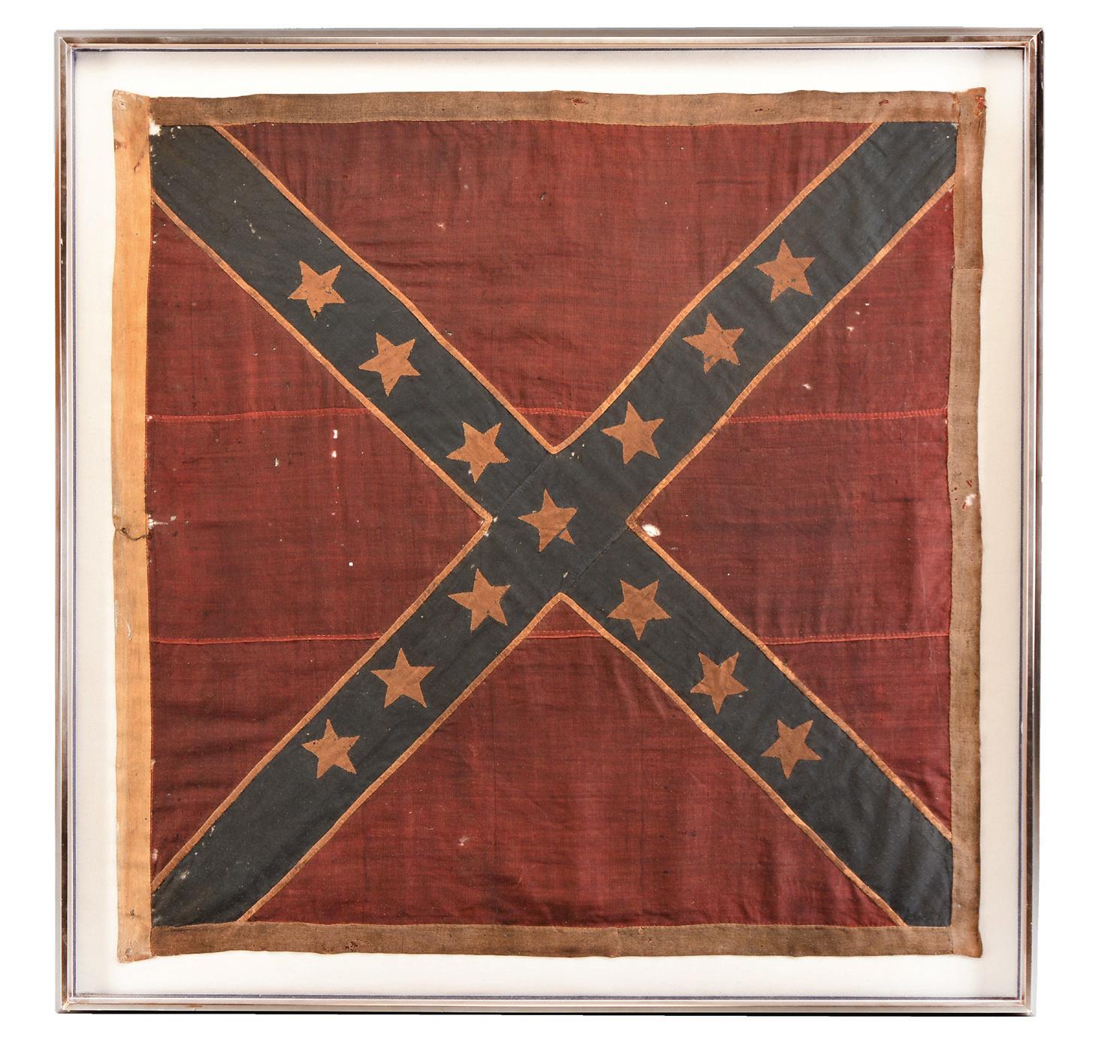



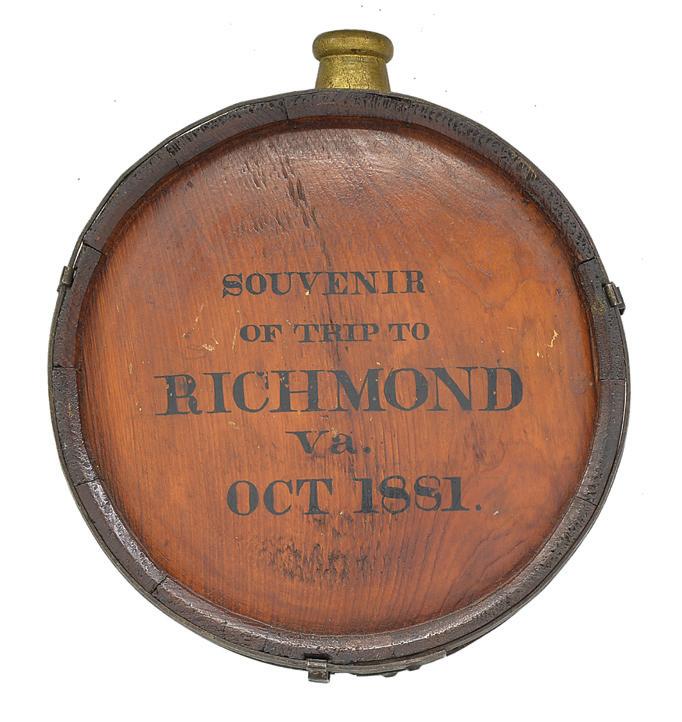
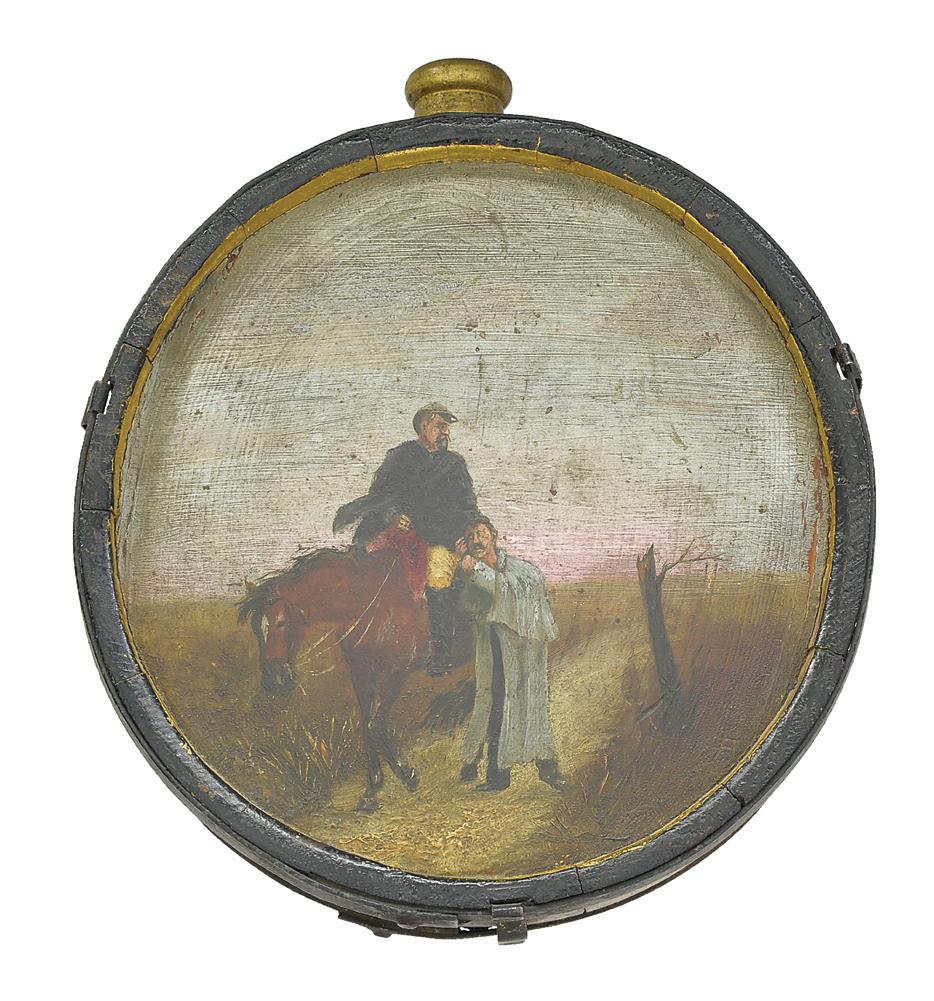

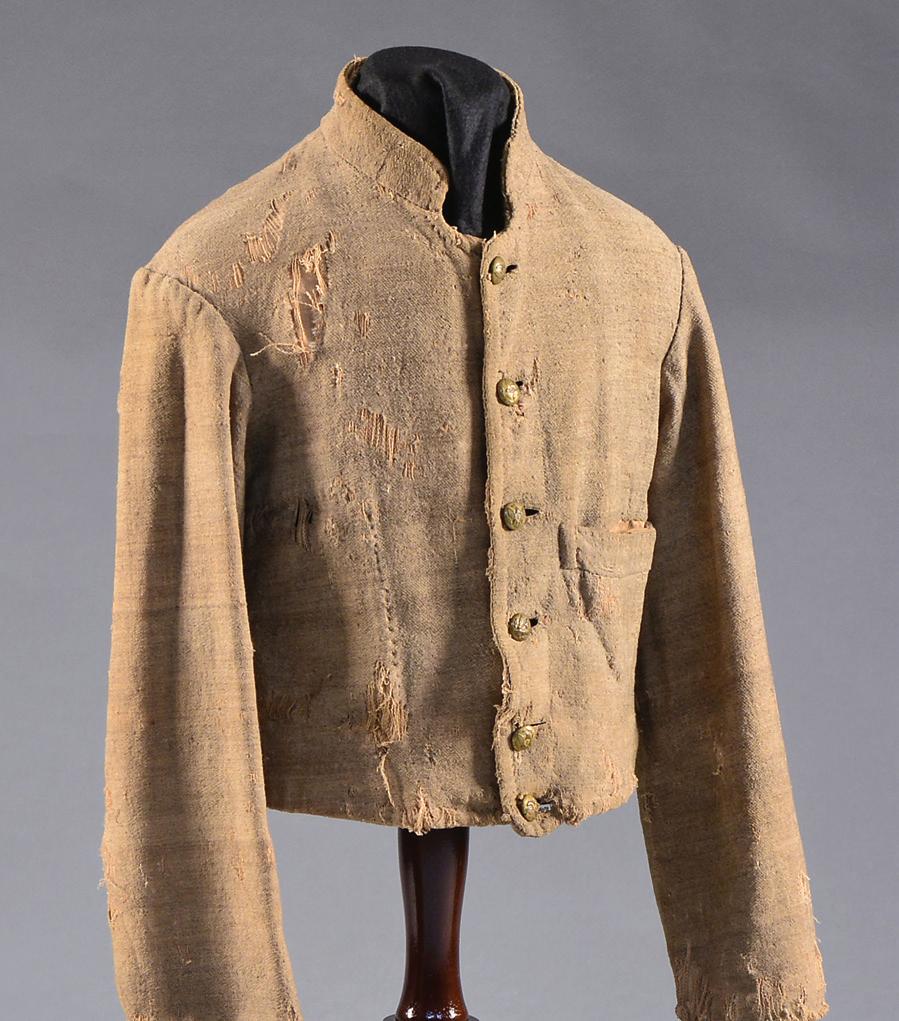
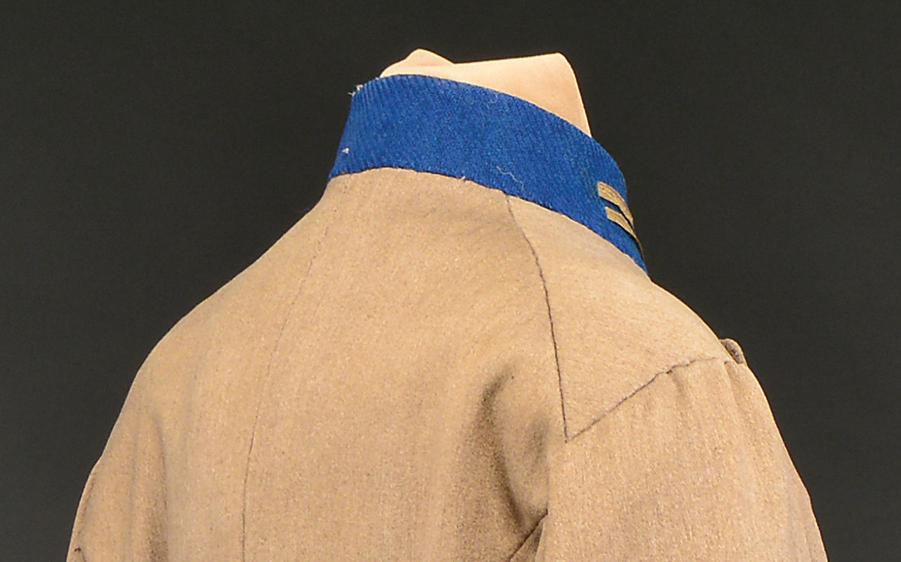

civilwar@poulinauctions.com | poulinauctions.com | 199 Skowhegan Rd, Fairfield, ME 04937 | 207-453-2114 Stephen Poulin, ME Lic # 1115 Premier Firearms Auction Regulation Confederate Infantry Officer’s Frock Coat Of Lt. Francis Moreno, Killed In Action At Shiloh. Wonderful Army Of Northern Virginia Third Pattern Battle Flag Of The 6th Georgia Cavalry Captured At Lay’s Ferry Georgia 1864. Rare Confederate Montgomery Depot Enlisted Uniform Jacket Identified To Joseph Stone Of The 32nd Alabama. Seller’s Commission or Better! On Expensive Items and Valuable Collections 0% Rare Tredegar Richmond Virginia Made 24 Pounder Flank Howitzer With Bronze Presentation Plaque. Recently Discovered Confederate Spiller & Burr Revolver Carried By John D. Grady, 5th Alabama Cavalry. Civil War Confederate Kepi Belonging To Captain Albert Rennolds Of The 55th Virginia Infantry. 19th Century Virginia Artist John Adams Elder. Extremely Rare South Carolina Surcharged Model 1763 Charleville Musket.

























































































































































































 John Thomas
John Thomas

 C. Michael Harrington
C. Michael Harrington










 — Chris Mackowski, Ph.D. Editor-in-Chief, Emerging Civil War
— Chris Mackowski, Ph.D. Editor-in-Chief, Emerging Civil War











 By Judkin Browning and Timothy Silver. Illustrated, Notes, Bibliography Index, The University of North Carolina Press, 2020, 261 pp., hardcover. $30.00.
Reviewed by Wayne L. Wolf
By Judkin Browning and Timothy Silver. Illustrated, Notes, Bibliography Index, The University of North Carolina Press, 2020, 261 pp., hardcover. $30.00.
Reviewed by Wayne L. Wolf




 Robert C. Plumb, illustrations, index, endnotes and bibliography. 251 pp., 2020. Potomac Books, an Imprint
Robert C. Plumb, illustrations, index, endnotes and bibliography. 251 pp., 2020. Potomac Books, an Imprint


















































































































































































































































